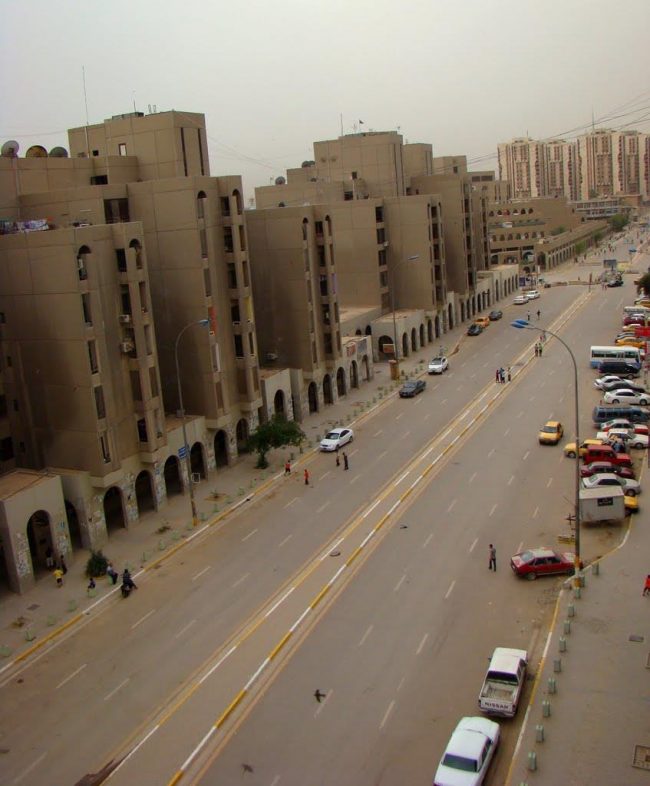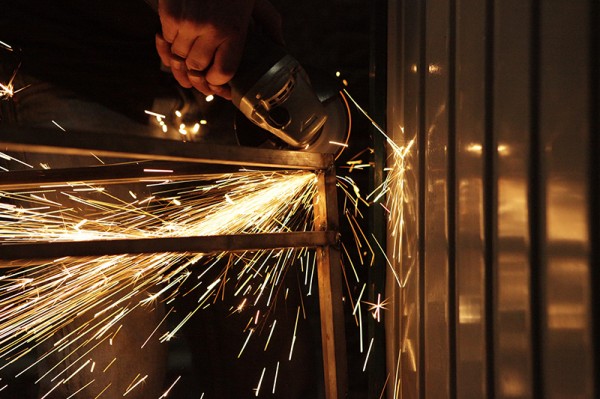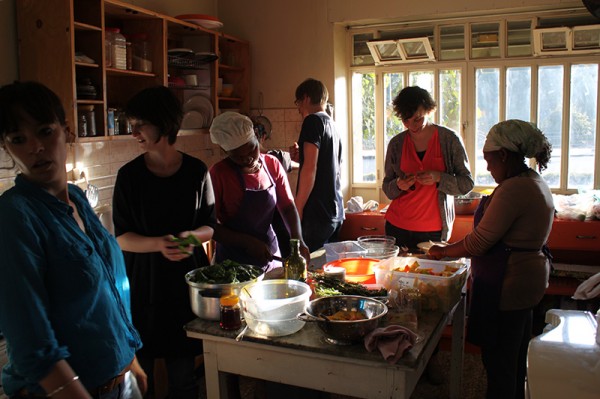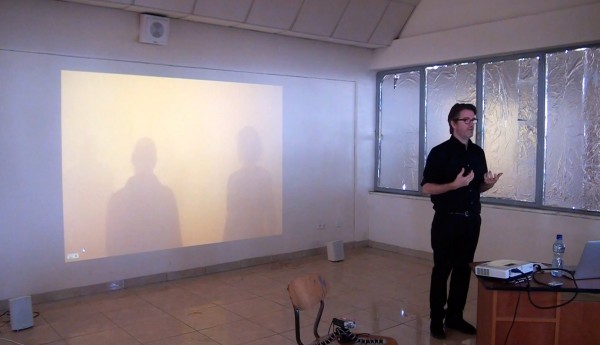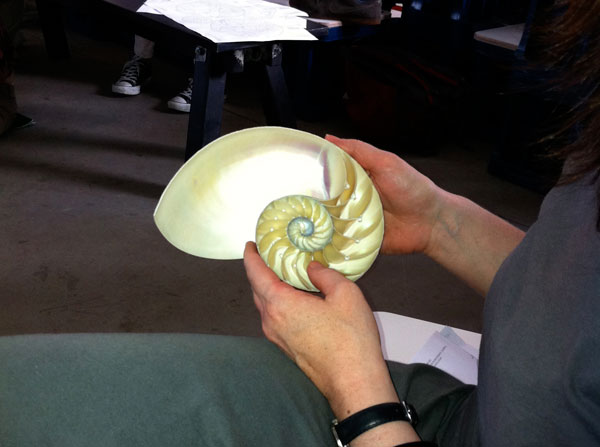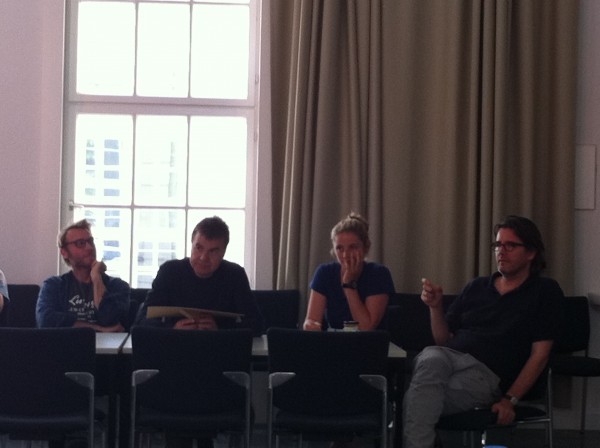27. - 28. Oktober 2023 / Kooperation, Ausstellung ⟶
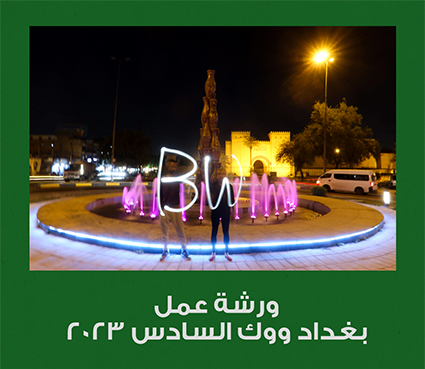
Baghdad Walk VI
Baghdad Walk IVGroup exhibition in public space
Baghdad Walk is an annual series of workshops culminating in a group exhibition presented in public spaces across the city of Baghdad. This year’s sixth edition – Baghdad Walk VI – took place over two meandering days in the vicinity of Al-Alawi and Al-Sarafiya Bridge. Fifteen Iraqi artists presented their works in a variety of artistic medias and expressive forms, addressing fundamental topics from human rights to climate change. The works speak to how these topical issues manifest in the artists’ surroundings and how the infringement of these rights effects their lives and the broader community.
The presented works demonstrate how upcoming generations are making sense of the changing social, political and environmental dynamics in Iraq. Many artists have taken the opportunity to focuses on artivism – artistic activism – in order to create public awareness around pressing societal issues like child labour, housing, water scarcity, environmental pollution, women’s roles in the public sphere, climate migration, land-use planning, injustice, politicized infrastructure, and coping strategies for collective and personal trauma.
Baghdad Walk IV features site-specific interventions and presentations by the following artists: Sally Naeem, Zahraa Soubhi, Noor Abd Ali, Razan Aldouri, Amnah Ali, Mahmoud Mohammed, Loay Al Hadhary, Muhaned Taha, Mohammed Kadhim, Atef Al Jaffal, Hassan Al Narjes, Haider Almaslmawe, Taqi Mohammed, Hussam Mohammed, Tarkib Collaboration.
Workshops and curatorial support: Susanne Bosch, Hella Mewis, Christina Werner
Please find the project’s bilingual (Englisch-Arabic) website here.
Baghdad Walk VI is conceptualized and organized by Tarkib and the Institut für Raumexperimente (Institute for Spatial Experiments), Berlin, and in collaboration with UNAMI Human Rights Office, the Embassy of the Kingdom of Netherlands to Iraq and Arab Fund for Arts and Culture (AFAC).
Photos: Hella Mewis, Zahraa Soubhi, Hassan Al Narjes, Atef Al Jaffal
Baghdad Walk IVGroup exhibition in public space
Baghdad Walk is an annual series of workshops culminating in a group exhibition presented in public spaces across the city of Baghdad. This year’s sixth edition – Baghdad Walk VI – took place over two meandering days in the vicinity of Al-Alawi and Al-Sarafiya Bridge. Fifteen Iraqi artists presented their works in a variety of artistic medias and expressive forms, addressing fundamental topics from human rights to climate change. The works speak to how these topical issues manifest in the artists’ surroundings and how the infringement of these rights effects their lives and the broader community.
The presented works demonstrate how upcoming generations are making sense of the changing social, political and environmental dynamics in Iraq. Many artists have taken the opportunity to focuses on artivism – artistic activism – in order to create public awareness around pressing societal issues like child labour, housing, water scarcity, environmental pollution, women’s roles in the public sphere, climate migration, land-use planning, injustice, politicized infrastructure, and coping strategies for collective and personal trauma.
Baghdad Walk IV features site-specific interventions and presentations by the following artists: Sally Naeem, Zahraa Soubhi, Noor Abd Ali, Razan Aldouri, Amnah Ali, Mahmoud Mohammed, Loay Al Hadhary, Muhaned Taha, Mohammed Kadhim, Atef Al Jaffal, Hassan Al Narjes, Haider Almaslmawe, Taqi Mohammed, Hussam Mohammed, Tarkib Collaboration.
Workshops and curatorial support: Susanne Bosch, Hella Mewis, Christina Werner
Please find the project’s bilingual (Englisch-Arabic) website here.
Baghdad Walk VI is conceptualized and organized by Tarkib and the Institut für Raumexperimente (Institute for Spatial Experiments), Berlin, and in collaboration with UNAMI Human Rights Office, the Embassy of the Kingdom of Netherlands to Iraq and Arab Fund for Arts and Culture (AFAC).
Photos: Hella Mewis, Zahraa Soubhi, Hassan Al Narjes, Atef Al Jaffal
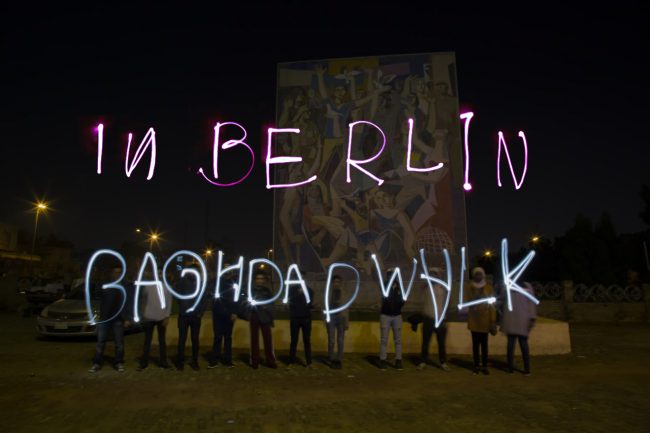
Baghdad Walk in Berlin at Salon am Moritzplatz
Salon am Moritzplatz, Oranienstraße 58, 10969 Berlin
Opening: 23 June at 6 pm
24 June — 26 June 2022. Daily from 2 pm to 8 pm
BAGHDAD WALK is an annual group exhibitions series which takes place in public spaces across the city of Baghdad, Iraq. BAGHDAD WALK IN BERLIN presents selected works by emerging Iraqi artists at Salon am Moritzplatz.
Since 2018, the independent artist group TARKIB has organised an ongoing series of art workshops and seminars in Baghdad in cooperation with the Goethe-Institut Irak and the Institut für Raumexperimente in Berlin, which culminate in the exhibition series BAGHDAD WALK. Urban realities and decisive events that have become part of Baghdad’s collective cultural memory are creatively explored and the artists’ works offer moments of reflection.
The exhibition in Berlin reveals how the participating artists develop artistic strategies and narratives in Baghdad’s public spaces. The shared experiences of the interventions on the streets of Baghdad are transferred into an exhibition format presenting photography, video, sound, painting, and documentation of performances and art interventions that collaboratively connect perspectives from Baghdad and Berlin. Works by Berlin-based artists who took part in the seminar series and previously hosted artistic projects in Baghdad are presented in dialogue with works of the participating Iraqi artists. Five of the exhibiting artists from Baghdad as well as the Berlin-based artists will be present at the opening.
–
With contributions by Tabarek Al Atrakchi @_tabiii9, Atef Al Jaffal @atef.ja, Muntadher Amel @muntadheramal, Shams Aqeel @tooshiepie, Loay Al Hadhary @artist_loay_alhadhary, Fabian Knecht @studiofabianknecht, Hella Mewis, Hussam Mohammed @husam_mohammed_a, Ameen Mokdad @ameen_mokdad, Yousr Mokdad @yousr.mokdad, Hussain Muttar @hussain_a_mutar, Fatima Dhahi, Hajer Qusay @hajer_qussay, Zaid Saad @zaid_saad_a, Muhaned Taha @mohanad_taha_k, Vlado Velkov #vladovelkov, Raul Walch @raulwalch, Basma Watheq.
Please find the project’s bilingual (Englisch-Arabic) website here.
–
Baghdad Walk is a project by the Goethe-Institut Irak, conceived and organised in collaboration with the Institut für Raumexperimente (Institute for Spatial Experiments), Berlin and hosted by TARKIB Baghdad Contemporary Arts Institute in BAIT TARKIB, choreographed by Hella Mewis and Christina Werner. It is the result of the workshop series „Arts Seminar in Baghdad“.
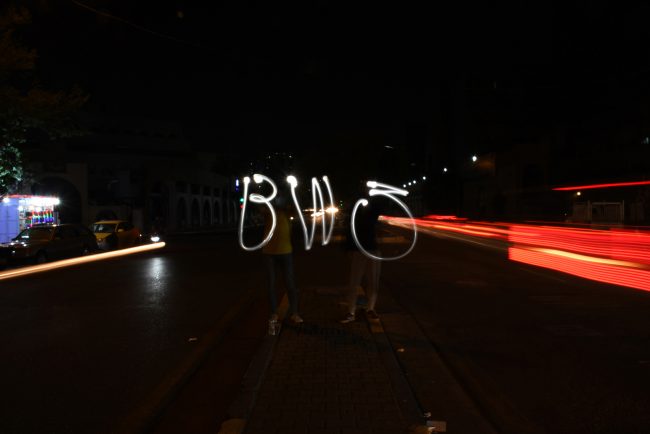
Baghdad Walk III
Baghdad Walk IIIGroup exhibition in public space
BAGHDAD WALK is a series of group exhibitions in public spaces across the city of Baghdad, Iraq. Th third edition of these art walks – Baghdad Walk III – took place along Haifa Street in November 2020, featuring site-specific interventions and presentations by the following artists:
Ali Adnan, Anees Amer, Shams Aqeel, Tabarek Al Atrakchi, Loay Al Hadhary, Hussam Mohammed, Ameen Mokdad, Hussain Muttar, Hadjer Qusay, Zaid Saad, Zain Saad, Muhaned Taha
–
Please find the project’s bilingual (Englisch-Arabic) website here.
–
Baghdad Walk is a project by the Goethe-Institut Irak, conceived and organised in collaboration with the Institut für Raumexperimente (Institute for Spatial Experiments), Berlin and hosted by TARKIB Baghdad Contemporary Arts Institute in BAIT TARKIB, choreographed by Hella Mewis and Christina Werner. It is the result of the workshop series „Arts Seminar in Baghdad“.
Photos: Ameen Mokdad, Anees Amer, Atef Al Jaffal
Baghdad Walk IIIGroup exhibition in public space
BAGHDAD WALK is a series of group exhibitions in public spaces across the city of Baghdad, Iraq. Th third edition of these art walks – Baghdad Walk III – took place along Haifa Street in November 2020, featuring site-specific interventions and presentations by the following artists:
Ali Adnan, Anees Amer, Shams Aqeel, Tabarek Al Atrakchi, Loay Al Hadhary, Hussam Mohammed, Ameen Mokdad, Hussain Muttar, Hadjer Qusay, Zaid Saad, Zain Saad, Muhaned Taha
–
Please find the project’s bilingual (Englisch-Arabic) website here.
–
Baghdad Walk is a project by the Goethe-Institut Irak, conceived and organised in collaboration with the Institut für Raumexperimente (Institute for Spatial Experiments), Berlin and hosted by TARKIB Baghdad Contemporary Arts Institute in BAIT TARKIB, choreographed by Hella Mewis and Christina Werner. It is the result of the workshop series „Arts Seminar in Baghdad“.
Photos: Ameen Mokdad, Anees Amer, Atef Al Jaffal
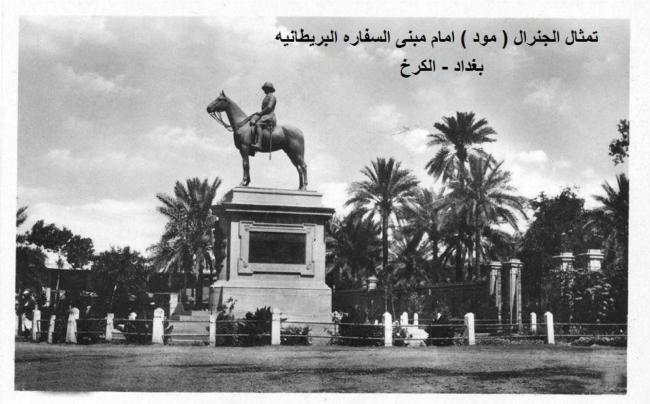
Kick-Off Workshop – Day 1
Presentations and workshops
King Faysal I by Pietro Canonica, 1933 and 2020
Haifa Street from the roof top and Haifa Street in the distance, photos by Hussain Muttar
Development plans for Haifa Street by the Municipality of Baghdad, early 80ties
Presentations and workshops
King Faysal I by Pietro Canonica, 1933 and 2020
Haifa Street from the roof top and Haifa Street in the distance, photos by Hussain Muttar
Development plans for Haifa Street by the Municipality of Baghdad, early 80ties
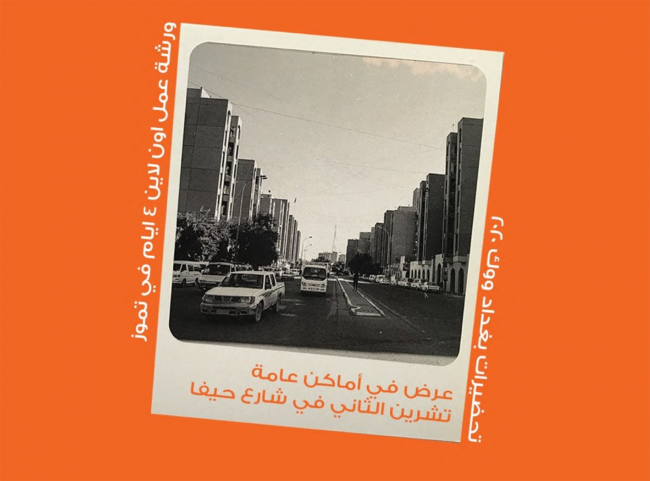
Arts Seminar in Baghdad, 2020
Arts Seminar in Baghdad – Workshop Series
Arts Seminar in Baghdad is a workshop series that prepares the participants to engage with their art works and interventions in the urban space of Baghdad. The seminar starts with a kick-off session – workshops and exercises at TARKIB Baghdad Contemporary Arts Institute and along Haifa Street –, followed by regular online sessions and results in an exhibition, that is also a guided tour of the city. The exhibition Baghdad Walk III will take place in November 2020 and presenting site-specific interventions along Haifa Street.
Baghdad Walk takes the Iraqi capital as a case study, addressing the memories embedded in the texture of urban life, from personal events and stories, to architectural heritage and public monuments, the urban web is saturated with memories to be re-visited and revealed.
Participants:
Ali Adnan, Anees Amer, Shams Aqeel, Tabarek Al Atrakchi, Loay Al Hadhary, Hussam Mohammed, Ameen Mokdad, Hussain Muttar, Hadjer Qusay, Zaid Saad, Zain Saad, Muhaned Taha
–
The workshop series Arts Seminar in Baghdad is conceived and organised by the Goethe-Institut Irak, in collaboration with the Institut für Raumexperimente (Institut for Spatial Experiments), Berlin and hosted by TARKIB Baghdad Contemporary Arts Institute in BAIT TARKIB. The series is choreographed by Christina Werner and realized with support by Hella Mewis.
Arts Seminar in Baghdad – Workshop Series
Arts Seminar in Baghdad is a workshop series that prepares the participants to engage with their art works and interventions in the urban space of Baghdad. The seminar starts with a kick-off session – workshops and exercises at TARKIB Baghdad Contemporary Arts Institute and along Haifa Street –, followed by regular online sessions and results in an exhibition, that is also a guided tour of the city. The exhibition Baghdad Walk III will take place in November 2020 and presenting site-specific interventions along Haifa Street.
Baghdad Walk takes the Iraqi capital as a case study, addressing the memories embedded in the texture of urban life, from personal events and stories, to architectural heritage and public monuments, the urban web is saturated with memories to be re-visited and revealed.
Participants:
Ali Adnan, Anees Amer, Shams Aqeel, Tabarek Al Atrakchi, Loay Al Hadhary, Hussam Mohammed, Ameen Mokdad, Hussain Muttar, Hadjer Qusay, Zaid Saad, Zain Saad, Muhaned Taha
–
The workshop series Arts Seminar in Baghdad is conceived and organised by the Goethe-Institut Irak, in collaboration with the Institut für Raumexperimente (Institut for Spatial Experiments), Berlin and hosted by TARKIB Baghdad Contemporary Arts Institute in BAIT TARKIB. The series is choreographed by Christina Werner and realized with support by Hella Mewis.
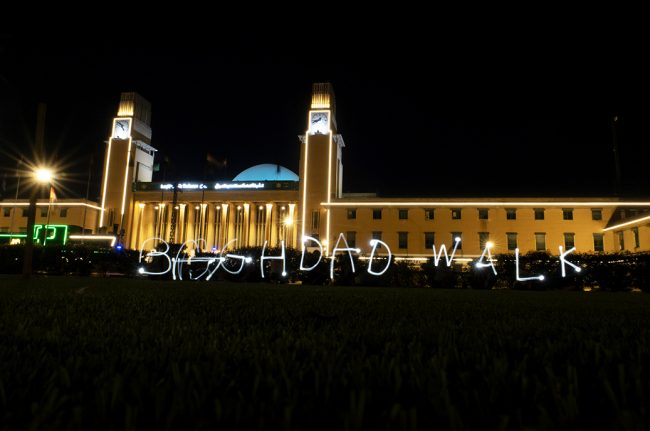
Baghdad Walk IV
Baghdad Walk IVGroup exhibition in public space
BAGHDAD WALK is a series of group exhibitions in public spaces across the city of Baghdad, Iraq. The latest edition of these art walks – Baghdad Walk IV – took place at Baghdad Central Station.
Baghdad Walk IV features site-specific interventions and presentations by the following artists:
Mayar Abdulkareem, Atef Al Jaffal, Zahraa Al Obaidi, Muntadher Amel, Anees Amer, Shams Aqeel, Tabarek Al Atrakchi, Fatima Dhahir, Loay Al Hadhary, Maryam Hazim, Zahraa Hassan, Nada Hussain, Hella Mewis, Hussam Mohammed, Ameen Mokdad, Yousr Mokdad, Hussain Muttar, Mohammed Nameer, Karrar Saad, Zaid Saad, Muhaned Taha, Basma Watheq, Mohanad Yakoob, Rose Yousif
Please find the project’s bilingual (Englisch-Arabic) website here.
–
Baghdad Walk is a project by the Goethe-Institut Irak, conceived and organised in collaboration with the Institut für Raumexperimente (Institute for Spatial Experiments), Berlin and hosted by TARKIB Baghdad Contemporary Arts Institute in BAIT TARKIB, choreographed by Hella Mewis and Christina Werner. It is the result of the workshop series „Arts Seminar in Baghdad“.
Photos: Hella Mewis, Anees Amer, Muntadher Amel
Baghdad Walk IVGroup exhibition in public space
BAGHDAD WALK is a series of group exhibitions in public spaces across the city of Baghdad, Iraq. The latest edition of these art walks – Baghdad Walk IV – took place at Baghdad Central Station.
Baghdad Walk IV features site-specific interventions and presentations by the following artists:
Mayar Abdulkareem, Atef Al Jaffal, Zahraa Al Obaidi, Muntadher Amel, Anees Amer, Shams Aqeel, Tabarek Al Atrakchi, Fatima Dhahir, Loay Al Hadhary, Maryam Hazim, Zahraa Hassan, Nada Hussain, Hella Mewis, Hussam Mohammed, Ameen Mokdad, Yousr Mokdad, Hussain Muttar, Mohammed Nameer, Karrar Saad, Zaid Saad, Muhaned Taha, Basma Watheq, Mohanad Yakoob, Rose Yousif
Please find the project’s bilingual (Englisch-Arabic) website here.
–
Baghdad Walk is a project by the Goethe-Institut Irak, conceived and organised in collaboration with the Institut für Raumexperimente (Institute for Spatial Experiments), Berlin and hosted by TARKIB Baghdad Contemporary Arts Institute in BAIT TARKIB, choreographed by Hella Mewis and Christina Werner. It is the result of the workshop series „Arts Seminar in Baghdad“.
Photos: Hella Mewis, Anees Amer, Muntadher Amel
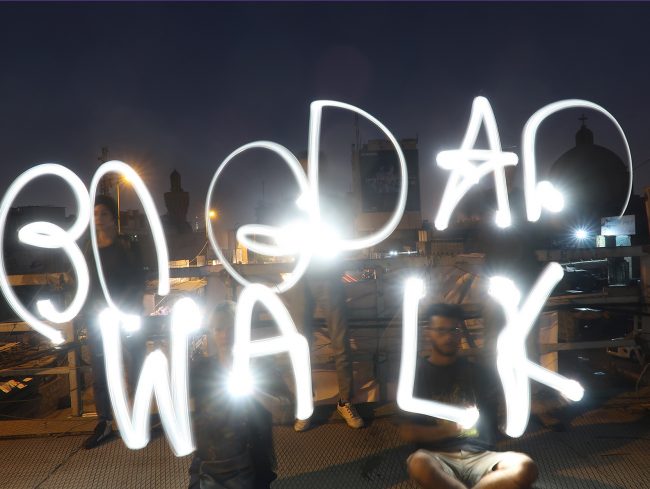
Baghdad Walk II
BAGHDAD WALK IIGroup exhibition in public space
BAGHDAD WALK is a series of group exhibitions with artworks by emerging Iraqi artists presented in public space and in different locations in Baghdad. Baghdad Walk is an exhibition and a narrative tour of the city. The participating artists connect their works with the specific locations, introducing background information on site. Manifold stories about the city of Baghdad are told and retold anew through the artists’ perspectives and the encounters they create.
Baghdad Walk II was originally planned for November 2019. Due to the ongoing protests in Iraq, the sit-in at Baghdad’s Al Tahrir Square and the adjacent neighbourhoods, and the strike of Iraqi educational and cultural organisations and institutions, Baghdad Walk II was postponed. The format had to be slightly adjusted and took place in March 2020.
Twelve artists presented their perspectives on memory culture in the neighbourhood around Mutanabbi Street and the Shorja Bazaar, interpreting events and local circumstances that have become part of the collective cultural memory as well as its various forms in the contemporary urban reality. The potential of visual culture to create moments of reflection in contemporary society is activated by the diverse artistic interventions.
The art walk started at the ruins of the former court building Al Mutasarefiya and the Al Mutanabbi Statue on Mutanabbi Street, then proceeded to Al Rasheed Street, meandered through the Shorja Bazaar, circled back to Al Rusafi Square, and ended at Al Mutasarefiya.
Please find the project’s bilingual (Englisch-Arabic) website here.
Participating artists: Tabarek Al Atrakchi, Atef Al Jaffal, Loay Al Hadhary, Ahmed Majid, Hella Mewis, Muhaned Mohammed, Hussam Mohammed, Ameen Mokdad, Hussain Muttar, Zaid Saad, Muhaned Taha.
–
Baghdad Walk is a project by the Goethe-Institut Irak, conceived and organised in collaboration with the Institut für Raumexperimente (Institute for Spatial Experiments), Berlin and hosted by TARKIB Baghdad Contemporary Arts Institute in BAIT TARKIB, choreographed by Hella Mewis and Christina Werner. It is the result of the workshop series „Arts Seminar in Baghdad“ led by Christina Werner.
Photos: Muntadher Amel, Hella Mewis, Christina Werner
BAGHDAD WALK IIGroup exhibition in public space
BAGHDAD WALK is a series of group exhibitions with artworks by emerging Iraqi artists presented in public space and in different locations in Baghdad. Baghdad Walk is an exhibition and a narrative tour of the city. The participating artists connect their works with the specific locations, introducing background information on site. Manifold stories about the city of Baghdad are told and retold anew through the artists’ perspectives and the encounters they create.
Baghdad Walk II was originally planned for November 2019. Due to the ongoing protests in Iraq, the sit-in at Baghdad’s Al Tahrir Square and the adjacent neighbourhoods, and the strike of Iraqi educational and cultural organisations and institutions, Baghdad Walk II was postponed. The format had to be slightly adjusted and took place in March 2020.
Twelve artists presented their perspectives on memory culture in the neighbourhood around Mutanabbi Street and the Shorja Bazaar, interpreting events and local circumstances that have become part of the collective cultural memory as well as its various forms in the contemporary urban reality. The potential of visual culture to create moments of reflection in contemporary society is activated by the diverse artistic interventions.
The art walk started at the ruins of the former court building Al Mutasarefiya and the Al Mutanabbi Statue on Mutanabbi Street, then proceeded to Al Rasheed Street, meandered through the Shorja Bazaar, circled back to Al Rusafi Square, and ended at Al Mutasarefiya.
Please find the project’s bilingual (Englisch-Arabic) website here.
Participating artists: Tabarek Al Atrakchi, Atef Al Jaffal, Loay Al Hadhary, Ahmed Majid, Hella Mewis, Muhaned Mohammed, Hussam Mohammed, Ameen Mokdad, Hussain Muttar, Zaid Saad, Muhaned Taha.
–
Baghdad Walk is a project by the Goethe-Institut Irak, conceived and organised in collaboration with the Institut für Raumexperimente (Institute for Spatial Experiments), Berlin and hosted by TARKIB Baghdad Contemporary Arts Institute in BAIT TARKIB, choreographed by Hella Mewis and Christina Werner. It is the result of the workshop series „Arts Seminar in Baghdad“ led by Christina Werner.
Photos: Muntadher Amel, Hella Mewis, Christina Werner
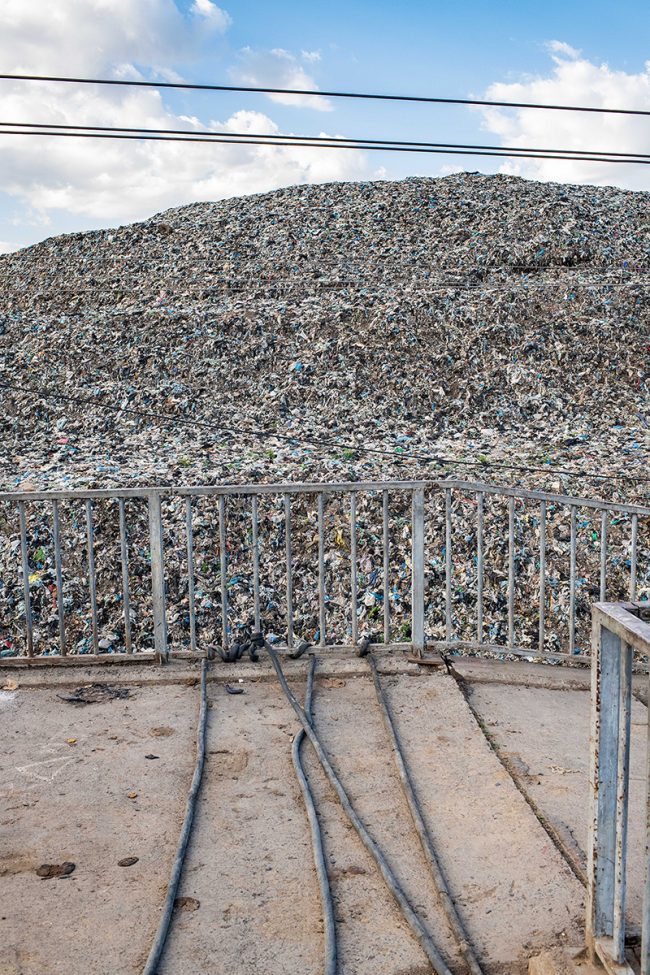
Workshop for „Atmospheres in the Urban Anthropocene – International and Cross-disciplinary Research Network“
Photo: Yero Adugna Eticha
Workshop in Addis Ababa, Ethiopia
The research project Atmospheres in the Urban Anthropocene – International and Cross-disciplinary Research Network was initiated and conceived by the Aarhus School of Architecture, established with the aim of developing an affective-sensory approach to the urban Anthropocene by bridging two strands of research which are hitherto unrelated: 1) research that has investigated the urban and the Anthropocene without much attention to affective and sensory issues, and 2) recent urban and architectural research into atmosphere that has investigated the sensory affective but most often fails to address the Anthropocene.
The network arranges three workshops in distinct climatic and sensory-affective atmospheres. The first one took place in Aarhus, Denmark, 2018; the second in Addis Ababa, Ethiopia, 2019 and the third will be take place in Tromsø, Norway, 2020.
The focus of the workshop in Addis Ababa was approaches to mapping and registering of atmospheres in the urban Anthropocene. The thematic sub-focus was on „Subnatures and Biodiversity“. The
workshop was centred around mapping-artworks produced in the week preceding the workshop by artists, Yero Adugna Eticha and Leikun Nahusenay, in collaboration with architects, Rasmus Hjortshøj and Asbjørn Jessen, as well as by Muluadam Adane, Michael Hailu, Gashahun Kassahun, Tewodros Kifle, Temesgen Mastewal, and Solomon Shifraw Abebe – students from the Alle School of Fine Arts that participated in the workshop Mapping the Invisible City led by Makeda Begashaw, Polina Chebotareva and Christina Werner. The mapping-artworks were exhibited at Guramayne Art Center for the duration of the workshop and incorporated in the workshop lectures and discussions.
–
Organisation: Polina Chebotareva (Aarhus School of Architecture) and Christina Werner (Institut für Raumexperimente / Studio Olafur Eliasson in Berlin)
Network partners: Suzel Balez (École nationale supérieure d’architecture de Grenoble), Peder Klith Bøcher (Aarhus University / Center for Biodiversity Dynamics in a Changing World (BIOCHANGE)), Thomas Juel Clemmensen (The Arctic University of Norway), Rasmus Hjortshøj (Aarhus School of Architecture), Asbjørn Jessen (University of Copenhagen, Section Landscape Architecture and Planning), Tom Nielsen (Aarhus School of Architecture), Martin Prominski (Leibniz University Hannover), Jean-Paul Thibaud (École nationale supérieure d’architecture de Grenoble)
Collaborators Addis Ababa: Yero Adugna Eticha (photographer), Makeda Begashaw (Alle School of Fine Arts and Design, Addis Ababa University), Leikun Nahusenay (artist), Robel Temesgen (Alle School of Fine Arts and Design, Addis Ababa University), Brook Teklehaimanot (Addis Ababa University, EiABC protoLAB), Mifta Zekele (Guramayne Art Center)
–
Thanks to the Alle School of Fine Arts and Design, Addis Ababa University and Guramayne Art Center.
–
Photo: Yero Adugna Eticha
Photo: Rasmus Hjortshøj
Photo: Yero Adugna Eticha
Workshop in Addis Ababa, Ethiopia
The research project Atmospheres in the Urban Anthropocene – International and Cross-disciplinary Research Network was initiated and conceived by the Aarhus School of Architecture, established with the aim of developing an affective-sensory approach to the urban Anthropocene by bridging two strands of research which are hitherto unrelated: 1) research that has investigated the urban and the Anthropocene without much attention to affective and sensory issues, and 2) recent urban and architectural research into atmosphere that has investigated the sensory affective but most often fails to address the Anthropocene.
The network arranges three workshops in distinct climatic and sensory-affective atmospheres. The first one took place in Aarhus, Denmark, 2018; the second in Addis Ababa, Ethiopia, 2019 and the third will be take place in Tromsø, Norway, 2020.
The focus of the workshop in Addis Ababa was approaches to mapping and registering of atmospheres in the urban Anthropocene. The thematic sub-focus was on „Subnatures and Biodiversity“. The
workshop was centred around mapping-artworks produced in the week preceding the workshop by artists, Yero Adugna Eticha and Leikun Nahusenay, in collaboration with architects, Rasmus Hjortshøj and Asbjørn Jessen, as well as by Muluadam Adane, Michael Hailu, Gashahun Kassahun, Tewodros Kifle, Temesgen Mastewal, and Solomon Shifraw Abebe – students from the Alle School of Fine Arts that participated in the workshop Mapping the Invisible City led by Makeda Begashaw, Polina Chebotareva and Christina Werner. The mapping-artworks were exhibited at Guramayne Art Center for the duration of the workshop and incorporated in the workshop lectures and discussions.
–
Organisation: Polina Chebotareva (Aarhus School of Architecture) and Christina Werner (Institut für Raumexperimente / Studio Olafur Eliasson in Berlin)
Network partners: Suzel Balez (École nationale supérieure d’architecture de Grenoble), Peder Klith Bøcher (Aarhus University / Center for Biodiversity Dynamics in a Changing World (BIOCHANGE)), Thomas Juel Clemmensen (The Arctic University of Norway), Rasmus Hjortshøj (Aarhus School of Architecture), Asbjørn Jessen (University of Copenhagen, Section Landscape Architecture and Planning), Tom Nielsen (Aarhus School of Architecture), Martin Prominski (Leibniz University Hannover), Jean-Paul Thibaud (École nationale supérieure d’architecture de Grenoble)
Collaborators Addis Ababa: Yero Adugna Eticha (photographer), Makeda Begashaw (Alle School of Fine Arts and Design, Addis Ababa University), Leikun Nahusenay (artist), Robel Temesgen (Alle School of Fine Arts and Design, Addis Ababa University), Brook Teklehaimanot (Addis Ababa University, EiABC protoLAB), Mifta Zekele (Guramayne Art Center)
–
Thanks to the Alle School of Fine Arts and Design, Addis Ababa University and Guramayne Art Center.
–
Photo: Yero Adugna Eticha
Photo: Rasmus Hjortshøj
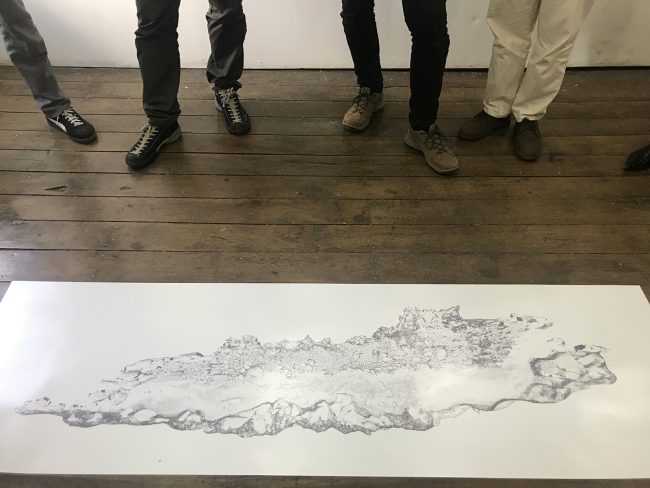
Mapping the Invisible City
Atmospheres and Subnatures at Arat Kilo
Workshop by Makeda Begashaw (Addis Ababa), Polina Chebotareva (Copenhagen) and Christina Werner (Berlin) at the Alle School of Fine Arts, Addis Ababa, November 5th – 8th, 2019
Presentations on November 11th, 2019 in the context of a workshop by the research network Atmospheres in the Urban Anthropocene – International and Cross-disciplinary Research Network held at Guramayne Art Center, Addis Ababa
The course introduces the participants to the terms ‘Atmosphere’ and ‘Subnature’ that allow to critically reflect upon the invisible things that make up a city. It introduces a method for documenting the atmosphere by registering the sensory and affective perception, the commented city walks, as well as a variety of artistic methods of mapping of atmospheres in specific urban contexts. Participants are encouraged to collect data on atmosphere and subnatures, mapping the Arat Kilo area and to rethink the scientific method of mapping atmospheres in their own artistic interpretation. The produced maps of the atmospheres and subnatures at Arat Kilo were presented at Guramayne Art Center as part of an international research workshop.
Participants: Muluadam Adane / Michael Hailu / Gashahun Kassahun / Tewodros Kifle / Temesgen Mastewal / Solomon Shifraw Abebe
photos: Polina Chebotareva, Christina Werner
Atmospheres and Subnatures at Arat Kilo
Workshop by Makeda Begashaw (Addis Ababa), Polina Chebotareva (Copenhagen) and Christina Werner (Berlin) at the Alle School of Fine Arts, Addis Ababa, November 5th – 8th, 2019
Presentations on November 11th, 2019 in the context of a workshop by the research network Atmospheres in the Urban Anthropocene – International and Cross-disciplinary Research Network held at Guramayne Art Center, Addis Ababa
The course introduces the participants to the terms ‘Atmosphere’ and ‘Subnature’ that allow to critically reflect upon the invisible things that make up a city. It introduces a method for documenting the atmosphere by registering the sensory and affective perception, the commented city walks, as well as a variety of artistic methods of mapping of atmospheres in specific urban contexts. Participants are encouraged to collect data on atmosphere and subnatures, mapping the Arat Kilo area and to rethink the scientific method of mapping atmospheres in their own artistic interpretation. The produced maps of the atmospheres and subnatures at Arat Kilo were presented at Guramayne Art Center as part of an international research workshop.
Participants: Muluadam Adane / Michael Hailu / Gashahun Kassahun / Tewodros Kifle / Temesgen Mastewal / Solomon Shifraw Abebe
photos: Polina Chebotareva, Christina Werner
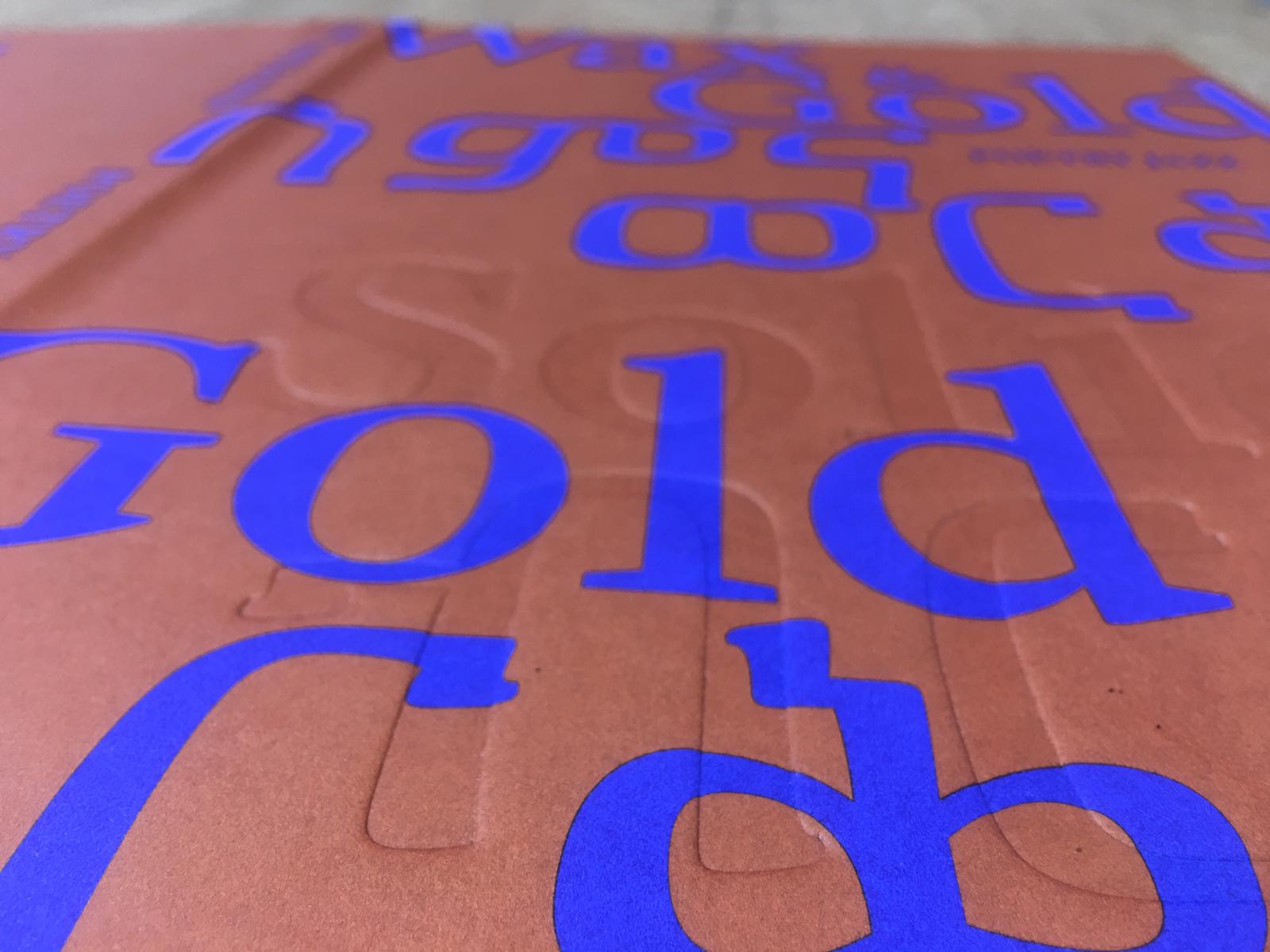
Poetry Jazz: Wax and Gold. Publication Preview
Poetry Jazz: Wax and GoldPoetry Publication in Amharic, English and German
With contributions by Frezer Admasu Molaligne, Olafur Eliasson, Eric Ellingsen, Clara Jo, Mihret Kebede Alwabie, Erica Licht, Robert Lippok, Bekele Mekonnen, Nebiy Mekonnen, Abebaw Melaku, Jorga Mesfin, Ari Benjamin Meyers, Neo Muyanga, Nolly Nesbit, Cia Rinne, Solomon Sahle Tizazu, Rike Scheffler, Robel Temesgen, Misrak Terefe Ergetu, Rediet Terefe Wegayehu, Christina Werner, Uljana Wolf, and Meheret Zelleke.
–
Poetry Jazz: Wax and Gold, Berlin, 2019
Edited by Institut für Raumexperimente e.V., Berlin;
in collaboration with Tobiya Poetic Jazz, Addis Ababa
Published by Koenig Books, London
Hardback; 256 pages; 22.0 cm x 33.0 cm
Amharic, English, and German
Graphic Design: BASICS09
ISBN: 978-3-86335-713-9
Price 29.80 euros
Available at Buchhandlung Walther König
–
This publication is part of the poetry series Poetry Jazz: Wax and Honey, I’m Home, initiated by the Institut für Raumexperimente, Berlin, in dialogue with Tobiya Poetic Jazz, Addis Ababa; in cooperation with the Akademie der Künste, Berlin; with support from Studio Olafur Eliasson, Berlin, the Graham Foundation for Advanced Studies in the Fine Arts, Chicago, and the Co-financing Fund of the Senate Department for Culture and Europe, Berlin.
It is funded by TURN Fund of the German Federal Cultural Foundation.
Poetry Jazz: Wax and GoldPoesie-Publikation, erschienen auf Amharisch, Englisch und Deutsch
Mit Beiträgen von Frezer Admasu Molaligne, Olafur Eliasson, Eric Ellingsen, Clara Jo, Mihret Kebede Alwabie, Erica Licht, Robert Lippok, Bekele Mekonnen, Nebiy Mekonnen, Abebaw Melaku, Jorga Mesfin, Ari Benjamin Meyers, Neo Muyanga, Nolly Nesbit, Cia Rinne, Solomon Sahle Tizazu, Rike Scheffler, Robel Temesgen, Misrak Terefe Ergetu, Rediet Terefe Wegayehu, Christina Werner, Uljana Wolf und Meheret Zelleke.
–
Poetry Jazz: Wax and Gold, Berlin, 2019
Institut für Raumexperimente e.V., Berlin;
in Zusammenarbeit mit Tobiya Poetic Jazz, Addis Ababa
Erschienen bei Koenig Books, London
Hardcover; 256 Seiten; 22,0 cm x 33,0 cm
Amharisch, Englisch und Deutsch
Grafikdesign: BASICS09
ISBN: 978-3-86335-713-9
29,80 Euro
Erhältlich bei Buchhandlung Walther König
–
Die Publikation ist Teil der Veranstaltungsreihe Poetry Jazz: Wax and Honey, I’m home des Institut für Raumexperimente in Berlin entstanden im Dialog mit Tobiya Poetic Jazz aus Addis Abeba und realisiert in Zusammenarbeit mit der Akademie der Künste in Berlin. Das Projekt wurde durch Studio Olafur Eliasson, Berlin, durch den Kofinanzierungsfonds der Senatsverwaltung für Kultur und Europa in Berlin und die Graham Foundation for Advanced Studies in the Fine Arts in Chicago unterstützt.
Es wurde finanziert durch den Fonds TURN der Kulturstiftung des Bundes.

Poetry Jazz: Wax and Gold. Live Recordings
Hear Choir. Chorus I. Performed by Eric Ellingsen, Mihret Kebede Alwabie, Abebaw Melaku, and Misrak Terefe Ergetu
ፊደል / Alphabet. Performed by Mihret Kebede Alwabie, Abebaw Melaku, Jorga Mesfin (piano), and Misrak Terefe Ergetu
False Friends. Poem by Uljana Wolf. Performed by Uljana Wolf, Mihret Kebede Alwabie, Abebaw Melaku, Jorga Mesfin (piano), and Misrak Terefe Ergetu
እኔ ነኝ / It s me. Poem written and performed by Abebaw Melaku, accompanied by Mihret Kebede Alwabie, Robert Lippok (live electronics), Jorga Mesfin (piano), and Misrak Terefe Ergetu
Ambassel. Saxofon Solo by Jorga Mesfin
Instrumental. Performed by Jorga Mesfin (piano), Tasew Wendem Mose (flute), Robert Lippok (live electronics)
እኔነት by Frezer Admasu Molaligne. Translation by Rike Scheffler. Performed by Frezer Admasu Molaligne, Rike Scheffler
እኔነት by Frezer Admasu Molaligne. Translation by Eric Ellingsen. Performed by Frezer Admasu Molaligne, Eric Ellingsen, Rike Scheffler
Intermezzo. Performed by Jorga Mesfin (piano), Tasew Wendem Mose (flute and vocal), Robert Lippok (live electronics)
የሀገሬ ባሎች / Husbands of My Dear Country. Poem by Mihret Kebede Alwabie, translated by Eric Ellingsen, Jorga Mesfin and Uljana Wolf; performed by Mihret Kebede Alwabie und Uljana Wolf, with Jorga Mesfin (piano)
friends and enemies by Cia Rinne. Ethiopian version of Cia Rinne’s friends and enemies by Nebiy Mekonnen. Performed by Cia Rinne
Flags. Performed by Nebiy Mekonnen, Rike Scheffler, Misrak Terefe Ergetu, Frezer Admasu Molaligne
Flags
Flags
Instrumental. Performed by Jorga Mesfin (saxophone), Robert Lippok (live electronics)
A Sound Flag. United States of America by Eric Ellingsen and A Sound Flag. Ethiopia by Mihret Kebede Alwabie
If you see something say something by Eric Ellingsen. Performed by Eric Ellingsen with Mihret Kebede Alwabie, Rike Scheffler, Misrak Terefe Ergetu
የጸጥታ ወግ / Tales of Silence by Mihret Kebede Alwabie, translated and performed by Eric Ellingsen and Mihret Kebede Alwabie
የጸጥታ ወግ / Sagen, über die Stille by Mihret Kebede Alwabie, translated and performed by Rike Scheffler and Mihret Kebede Alwabie. Preface to Nebiy Mekonnen’s The Letter of the Water by Eric Ellingsen. የውሀው ደብዳቤ by Nebiy Mekonnen
የነፋስ ደብዳቤ by Misrak Terefe Ergetu
The Thinking Reed by Rike Scheffler
Instrumental by Jorga Mesfin (piano), Robert Lippok (live electronics)
የሰው ሀገር ሰው ነኝ by Solomon Sahle Tizazu
poem by Mihret Kebede Alwabie, (Oh center city) translated and performed by Eric Ellingsen and Mihret Kebede Alwabie. Mabayeke. Mabayeke (Thina Sizwe) conducted by Neo Muyanga
It’s not Saying What It Says It Says and That Too by Eric Ellingsen
Love Triangle by Nebiy Mekonnen, Misrak Terefe Ergetu, Rediet Terefe Wegayehu
Moving In by Rike Scheffler
ትዝታ እና ተስፋ by Frezer Admasu Molaligne
ነገን ኮረጅ በቃ / Plagiarize the future by Nebiy Mekonnen, translation by Eric Ellingsen and Meheret Zelleke
–
These live recordings are part of the poetry series Poetry Jazz: Wax and Honey, I’m Home, initiated by the Institut für Raumexperimente, Berlin; in dialogue with Tobiya Poetic Jazz, Addis Ababa; in cooperation with the Akademie der Künste, Berlin; with support from Studio Olafur Eliasson, Berlin, the Graham Foundation for Advanced Studies in the Fine Arts, Chicago, and the Co-financing Fund of the Senate Department for Culture and Europe, Berlin.
It is funded by TURN Fund of the German Federal Cultural Foundation.
Hear Choir. Chorus I. Ausgeführt von Eric Ellingsen, Mihret Kebede Alwabie, Abebaw Melaku und Misrak Terefe Ergetu
ፊደል / Alphabet. Ausgeführt von Mihret Kebede Alwabie, Abebaw Melaku, Jorga Mesfin (Klavier) und Misrak Terefe Ergetu
False Friends. Gedicht von Uljana Wolf. Ausgeführt von Uljana Wolf, Mihret Kebede Alwabie, Abebaw Melaku, Jorga Mesfin (Klavier) und Misrak Terefe Ergetu
እኔ ነኝ / It s me. Gedicht von Abebaw Melaku, ausgeführt von Abebaw Melaku, mit Mihret Kebede Alwabie, Robert Lippok (Live Electronics), Jorga Mesfin (Klavier) und Misrak Terefe Ergetu
Ambassel. Saxophon-Solo von Jorga Mesfin
Instrumental. Aufgeführt von Jorga Mesfin (Klavier), Tasew Wendem Mose (Flöte), Robert Lippok (Live Electronics)
እኔነት von Frezer Admasu Molaligne. Übersetzt von Rike Scheffler. Aufgeführt von Frezer Admasu Molaligne, Rike Scheffler
እኔነት von Frezer Admasu Molaligne. Übersetzt von Eric Ellingsen. Aufgeführt von Frezer Admasu Molaligne, Eric Ellingsen, Rike Scheffler
Intermezzo. Aufgeführt von Jorga Mesfin (Klavier), Tasew Wendem Mose (Flöte und Gesang), Robert Lippok (Live Electronics)
የሀገሬ ባሎች / Husbands of My Dear Country. Gedicht von Mihret Kebede Alwabie, übersetzt von Eric Ellingsen, Jorga Mesfin und Uljana Wolf; aufgeführt von Mihret Kebede Alwabie und Uljana Wolf, mit Jorga Mesfin (Klavier)
friends and enemies von Cia Rinne. Äthiopische Version von Cia Rinnes friends and enemies von Nebiy Mekonnen. Aufgeführt von Cia Rinne
Flags. Aufgeführt von Nebiy Mekonnen, Rike Scheffler, Misrak Terefe Ergetu, Frezer Admasu Molaligne
Flags
Flags
Instrumental. Aufgeführt von Jorga Mesfin (Saxofon), Robert Lippok (Electronics)
A Sound Flag. United States of America von Eric Ellingsen und A Sound Flag. Ethiopia von Mihret Kebede Alwabie
If you see something say something von Eric Ellingsen. Aufgeführt von Eric Ellingsen mit Mihret Kebede Alwabie, Rike Scheffler, Misrak Terefe Ergetu
የጸጥታ ወግ / Tales of Silence. Gedicht von Mihret Kebede Alwabie. Übersetzt und aufgeführt von Mihret Kebede Alwabie und Eric Ellingsen
የጸጥታ ወግ / Sagen, über die Stille von Mihret Kebede Alwabie, übersetzt und aufgeführt von Rike Scheffler. Einführung zu Nebiy Mekonnens The Letter of the Water von Eric Ellingsen. የውሀው ደብዳቤ von Nebiy Mekonnen
የነፋስ ደብዳቤ von Misrak Terefe Ergetu
The Thinking Reed von Rike Scheffler
Instrumental von Jorga Mesfin (Klavier), Robert Lippok (Live Electronics)
የሰው ሀገር ሰው ነኝ von Solomon Sahle Tizazu
Gedicht von Mihret Kebede Alwabie, (Oh center city) übersetzt und aufgeführt von Eric Ellingsen und Mihret Kebede Alwabie. Mabayeke (Thina Sizwe) dirigiert von Neo Muyanga
It’s not Saying What It Says It Says and That Too von Eric Ellingsen
Love Triangle von Nebiy Mekonnen, Misrak Terefe Ergetu, Rediet Terefe Wegayehu
Moving In von Rike Scheffler
ትዝታ እና ተስፋ von Frezer Admasu Molaligne
ነገን ኮረጅ በቃ / Plagiarize the future von Nebiy Mekonnen, übersetzt von Eric Ellingsen und Meheret Zelleke
–
Die Hörbeispiele sind Teil der Veranstaltungsreihe Poetry Jazz: Wax and Honey, I’m home des Institut für Raumexperimente in Berlin entstanden im Dialog mit Tobiya Poetic Jazz aus Addis Abeba und realisiert in Zusammenarbeit mit der Akademie der Künste in Berlin. Das Projekt wurde durch Studio Olafur Eliasson, Berlin, durch den Kofinanzierungsfonds der Senatsverwaltung für Kultur und Europa in Berlin und die Graham Foundation for Advanced Studies in the Fine Arts in Chicago unterstützt.
Es wurde finanziert durch den Fonds TURN der Kulturstiftung des Bundes.
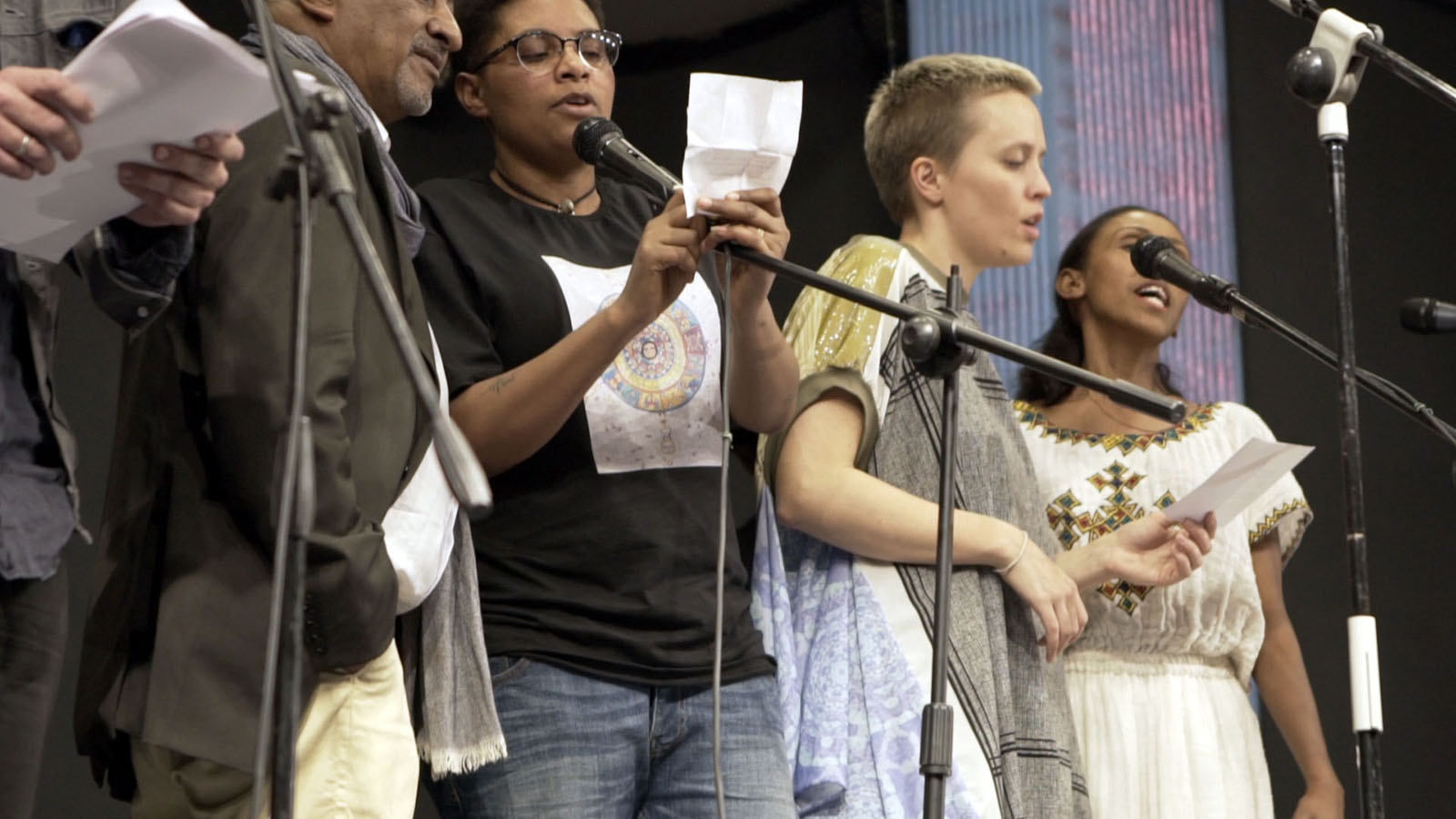
Poetry Jazz: Wax and Gold. Films
Making of Poetry Jazz: Wax and GoldFilms by Clara Jo
Clara Jo documented the workshops and concerts for the long-term Poetry collaboration between the Institut für Raumexperimente (Berlin) and Tobiya Poetic Jazz (Addis Ababa). As a filmmaker, she focused on the sensual and aural qualities in the participants‘ physical and linguistic search for common vernacular expressions, particularly lending her eyes and ears to the gaps of literal translation. In these artistic making-of films, she follows the rehearsal and production process and offers a glance behind the scenes to the dynamics between stage and audience.
–
Poetry Jazz: Solid Gold (2019)
Director: Clara Jo; Featuring: Frezer Admasu, Eric Ellingsen, Mihret Kebede, Robert Lippok, Nebiy Mekonnen, Jorga Mesfin, Neo Muyanga, Solomon Sahle Tizazu, Rike Scheffler, Misrak Terefe, Rediet Terefe Wegayehu, Tasew Wendem Mose, Christina Werner.
Poetry Jazz: Solid Gold, a film by Clara Jo
–
Poetry Jazz: The Rehearsal (2019)
Director: Clara Jo; Featuring: Frezer Admasu, Eric Ellingsen, Mihret Kebede, Robert Lippok, Nebiy Mekonnen, Jorga Mesfin, Neo Muyanga, Solomon Sahle Tizazu, Rike Scheffler, Misrak Terefe, Rediet Terefe Wegayehu, Tasew Wendem Mose, Christina Werner.
Poetry Jazz: The Rehearsal, a film by Clara Jo
–
Poetry Jazz: Wax and Gold (2018)
Director: Clara Jo; Featuring: Frezer Admasu, Eric Ellingsen, Mihret Kebede, Robert Lippok, Nebiy Mekonnen, Jorga Mesfin, Tasew Wendem Mose, Cia Rinne, Rike Scheffler, Misrak Terefe, Christina Werner.
Poetry Jazz: Wax and Gold, a film by Clara Jo
These films are part of the poetry series Poetry Jazz: Wax and Honey, I’m Home by the Institut für Raumexperimente, Berlin; in cooperation with the Akademie der Künste, Berlin; in dialogue with Tobiya Poetic Jazz, Addis Ababa; choreographed by Christina Werner; supported by the Studio Olafur Eliasson, Berlin; Graham Foundation for Advanced Studies in the Fine Arts, Chicago; Co-financing Fund of the Senate Department for Culture and Europe, Berlin. Funded by the TURN Fund of the German Federal Cultural Foundation.
–
A-B-A-B-A: from here to hear (2016)
Director: Clara Jo; Featuring: Gashahn Abateneh, Eric Ellingsen, Mihret Kebede, Erica Licht, Robert Lippok, Nebiy Mekonnen, Abebaw Melaku, Jorga Mesfin, Ari Benjamin Meyers, Bekele Mekonnen, Rike Scheffler, Misrak Terefe, Christina Werner, Uljana Wolf, The Moseb Traditional Music Band, Addis Ababa.
A-B-A-B-A: from here to hear, a film by Clara Jo
–
Roter Salon. A-B-A-B-A: from hear to here (2014)
Director: Clara Jo; Featuring: Eric Ellingsen, Mihret Kebede, Robert Lippok, Abebaw Melaku, Jorga Mesfin, Ari Benjamin Meyers, Rike Scheffler, Misrak Terefe, Christina Werner, Uljana Wolf.
Roter Salon. A-B-A-B-A: from hear to here, a film by Clara Jo
These films are part of the event series A-B-A-B-A : from hear to here as part of Acting Archives, a project initiated by Institut für Raumexperimente, Berlin University of the Arts together with the Alle School of Fine Arts and Design, Addis Ababa University. The project is choreographed by Christina Werner and Eric Ellingsen; realized together with Palais Wittgenstein at Roter Salon at Volksbühne Berlin and the Alliance Ethio-Française d’Addis-Abeba. It is supported by Studio Olafur Eliasson and funded by the TURN Fund of the German Federal Cultural Foundation.
Making of Poetry Jazz: Wax and GoldFilme von Clara Jo
Clara Jo hielt die Workshops und Konzerte der langfristig angelegten Poetry Jazz Kooperation zwischen dem Institut für Raumexperimente, Berlin und Tobiya Poetic Jazz, Addis Abeba mit der Kamera fest. Als Filmemacherin stellte sie dabei das Sinnliche und Aurale in der körperlichen wie sprachlichen Suche der Teilnehmer:innen nach gemeinsamen und doch eigenen Ausdrucksformen in den Fokus, insbesondere schenkte sie dabei den beim Übersetzen entstehenden Sollbruchstellen ihre Aufmerksamkeit. In ihre künstlerischen Making-ofs begleitet sie die Proben- und Produktionsprozesse und ermöglicht einen Blick hinter die Kulissen und folgt den Dynamiken, die den Resonanzraum zwischen Bühne und Publikum in Schwingung versetzten.
–
Poetry Jazz: Solid Gold (2019)
Regie: Clara Jo; mit Frezer Admasu, Eric Ellingsen, Mihret Kebede, Robert Lippok, Nebiy Mekonnen, Jorga Mesfin, Neo Muyanga, Solomon Sahle Tizazu, Rike Scheffler, Misrak Terefe, Rediet Terefe Wegayehu, Tasew Wendem Mose, Christina Werner.
Poetry Jazz: Solid Gold, a film by Clara Jo
–
Poetry Jazz: The Rehearsal (2019)
Regie: Clara Jo; mit Frezer Admasu, Eric Ellingsen, Mihret Kebede, Robert Lippok, Nebiy Mekonnen, Jorga Mesfin, Neo Muyanga, Solomon Sahle Tizazu, Rike Scheffler, Misrak Terefe, Rediet Terefe Wegayehu, Tasew Wendem Mose, Christina Werner.
Poetry Jazz: The Rehearsal, a film by Clara Jo
–
Poetry Jazz: Wax and Gold (2018)
Regie: Clara Jo; mit Frezer Admasu, Eric Ellingsen, Mihret Kebede, Robert Lippok, Nebiy Mekonnen, Jorga Mesfin, Tasew Wendem Mose, Cia Rinne, Rike Scheffler, Misrak Terefe, Christina Werner.
Poetry Jazz: Wax and Gold, a film by Clara Jo
Die Filme sind im Rahmen der Veranstaltungsreihe Poetry Jazz: Wax and Honey, I’m Home des Instituts für Raumexperimente in Berlin entstanden, im Dialog mit Tobiya Poetic Jazz aus Addis Abeba und realisiert in Zusammenarbeit mit der Akademie der Künste in Berlin. Das Projekt wurde durch den Kofinanzierungsfonds der Senatsverwaltung für Kultur und Europa in Berlin und die Graham Foundation for Advanced Studies in the Fine Arts in Chicago unterstützt. Es wurde finanziert durch den Fonds TURN der Kulturstiftung des Bundes.
–
A-B-A-B-A: from here to hear (2016)
Regie: Clara Jo; mit Gashahn Abateneh, Eric Ellingsen, Mihret Kebede, Erica Licht, Robert Lippok, Nebiy Mekonnen, Abebaw Melaku, Jorga Mesfin, Ari Benjamin Meyers, Bekele Mekonnen, Rike Scheffler, Misrak Terefe, Christina Werner, Uljana Wolf, The Moseb Traditional Music Band, Addis Ababa.
A-B-A-B-A: from here to hear, a film by Clara Jo
–
Roter Salon. A-B-A-B-A: from hear to here (2014)
Regie: Clara Jo; mit Eric Ellingsen, Mihret Kebede, Robert Lippok, Abebaw Melaku, Jorga Mesfin, Ari Benjamin Meyers, Rike Scheffler, Misrak Terefe, Christina Werner, Uljana Wolf.
Roter Salon. A-B-A-B-A: from hear to here, a film by Clara Jo
Die Filme sind im Rahmen der Veranstaltungsreihe A-B-A-B-A : from hear to here entstanden als Teil des Projekts Acting Archives, initiiert durch das Institut für Raumexperimente, Universität der Künste Berlin in Zusammenarbeit mit der Alle School of Fine Arts and Design, Addis Ababa University. Das Projekt ist von Christina Werner and Eric Ellingsen choreographiert, realisiert mit der Unterstützung der Alle School of Fine Arts and Design der Universität Addis Abeba, der Alliance Ethio-Française d’Addis Abeba, dem Palais Wittgenstein im Roten Salon der Volksbühne Berlin und dem Studio Olafur Eliasson in Berlin. Es wurde finanziert durch den Fonds TURN der Kulturstiftung des Bundes.

Baghdad Walk I
Group exhibition in public space
Baghdad Walk is a group exhibition by emerging Iraqi artists presented in the public space and in different locations in Karada, Baghdad. The walk starts at Iraqi Independent Film Centre, leads along Al Rasheed Street to Midan Square, connects Tayeran Square, Tahrir Square and Kahramana Square, spreads along the Abu Nawas riverside and meanders through Karada neighborhood, featuring time-based works and interventions. It is an exhibition and a narrative tour of the city. The participating artists connect their works with the specific locations, introducing background information on site. Manifold stories about the city of Baghdad are told and retold anew through the artists’ perspectives and the encounters they create.
Please find further information here and find the project’s bilingual (English-Arabic) website here.
—
Baghdad Walk is the result of a workshop series Arts Seminar in Baghdad, conceived and organised by the Goethe-Institut Irak, in collaboration with the Institut für Raumexperimente (Institut for Spatial Experiments), Berlin and hosted by TARKIB Baghdad Contemporary Arts Institute in BAIT TARKIB. Hosted by TARKIB Baghdad Contemporary Arts Institute. Choreographed by Hella Mewis and Christina Werner.
Group exhibition in public space
Baghdad Walk is a group exhibition by emerging Iraqi artists presented in the public space and in different locations in Karada, Baghdad. The walk starts at Iraqi Independent Film Centre, leads along Al Rasheed Street to Midan Square, connects Tayeran Square, Tahrir Square and Kahramana Square, spreads along the Abu Nawas riverside and meanders through Karada neighborhood, featuring time-based works and interventions. It is an exhibition and a narrative tour of the city. The participating artists connect their works with the specific locations, introducing background information on site. Manifold stories about the city of Baghdad are told and retold anew through the artists’ perspectives and the encounters they create.
Please find further information here and find the project’s bilingual (English-Arabic) website here.
—
Baghdad Walk is the result of a workshop series Arts Seminar in Baghdad, conceived and organised by the Goethe-Institut Irak, in collaboration with the Institut für Raumexperimente (Institut for Spatial Experiments), Berlin and hosted by TARKIB Baghdad Contemporary Arts Institute in BAIT TARKIB. Hosted by TARKIB Baghdad Contemporary Arts Institute. Choreographed by Hella Mewis and Christina Werner.

Kick-Off Workshop – Day 3
Kick-Off Workshop in Baghdad with Christina Werner
Sound mapping exercises around the Freedom Monument at Tahrir Square
Sound mapping exercises
Sound mapping exercises
Sound mapping exercises
Sound map
Sound map
Sound experiments at Tahrir Square park
Sound experiments and discussion
–
This event is part of a workshop series Arts Seminar in Baghdad, conceived and organised by the Goethe-Institut Irak, in collaboration with the Institut für Raumexperimente (Institut for Spatial Experiments), Berlin and hosted by TARKIB Baghdad Contemporary Arts Institute in BAIT TARKIB.
Kick-Off Workshop in Baghdad with Christina Werner
Sound mapping exercises around the Freedom Monument at Tahrir Square
Sound mapping exercises
Sound mapping exercises
Sound mapping exercises
Sound map
Sound map
Sound experiments at Tahrir Square park
Sound experiments and discussion
–
This event is part of a workshop series Arts Seminar in Baghdad, conceived and organised by the Goethe-Institut Irak, in collaboration with the Institut für Raumexperimente (Institut for Spatial Experiments), Berlin and hosted by TARKIB Baghdad Contemporary Arts Institute in BAIT TARKIB.
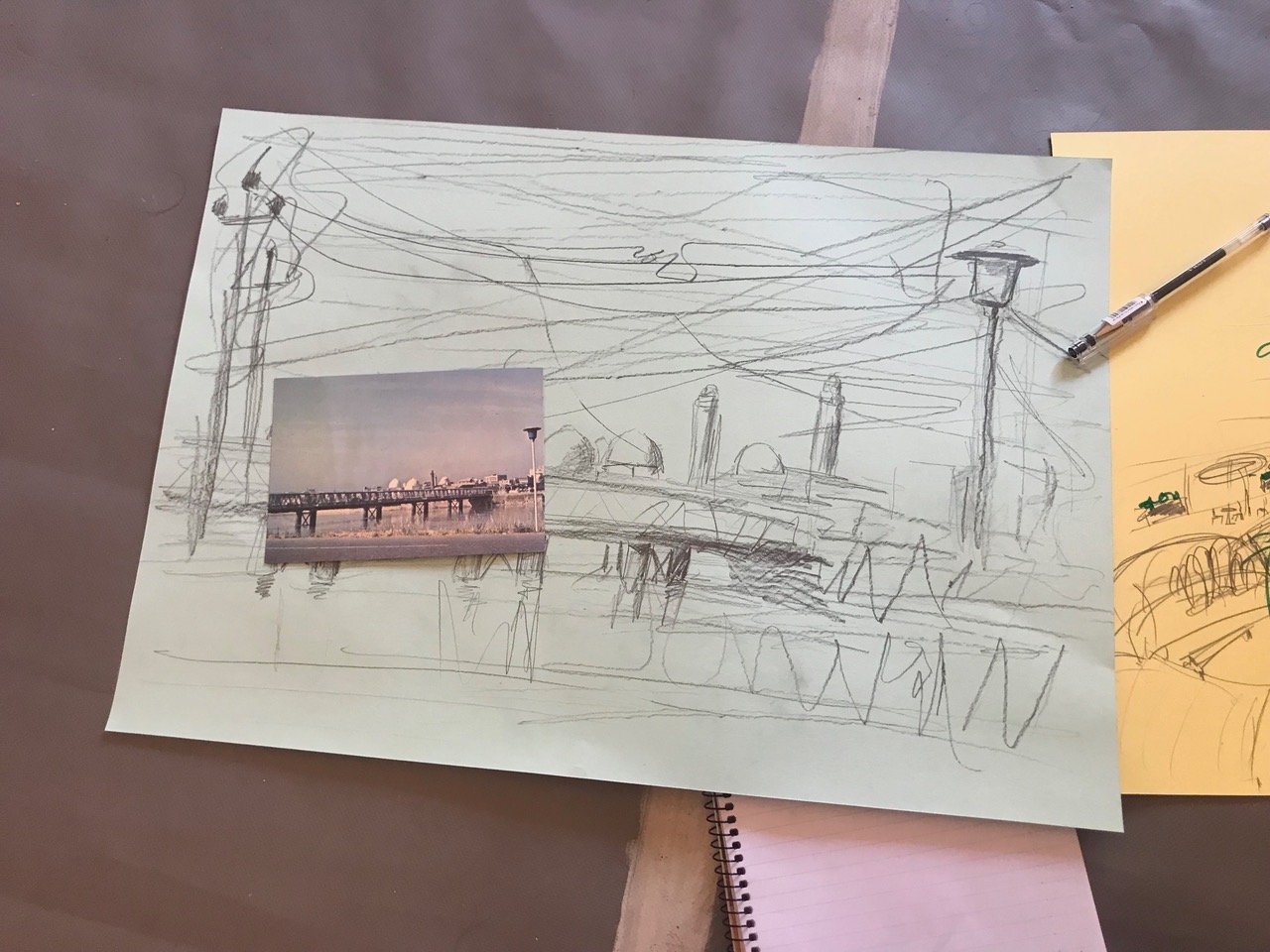
Kick-Off Workshop – Day 2
Kick-Off Workshop in Baghdad with Christina Werner
Workshop excerises with Christina Werner
Urban memories and future visions of Baghdad
Presentation of first ideas for Baghdad Walk
–
This event is part of a workshop series Arts Seminar in Baghdad, conceived and organised by the Goethe-Institut Irak, in collaboration with the Institut für Raumexperimente (Institut for Spatial Experiments), Berlin and hosted by TARKIB Baghdad Contemporary Arts Institute in BAIT TARKIB.
Kick-Off Workshop in Baghdad with Christina Werner
Workshop excerises with Christina Werner
Urban memories and future visions of Baghdad
Presentation of first ideas for Baghdad Walk
–
This event is part of a workshop series Arts Seminar in Baghdad, conceived and organised by the Goethe-Institut Irak, in collaboration with the Institut für Raumexperimente (Institut for Spatial Experiments), Berlin and hosted by TARKIB Baghdad Contemporary Arts Institute in BAIT TARKIB.
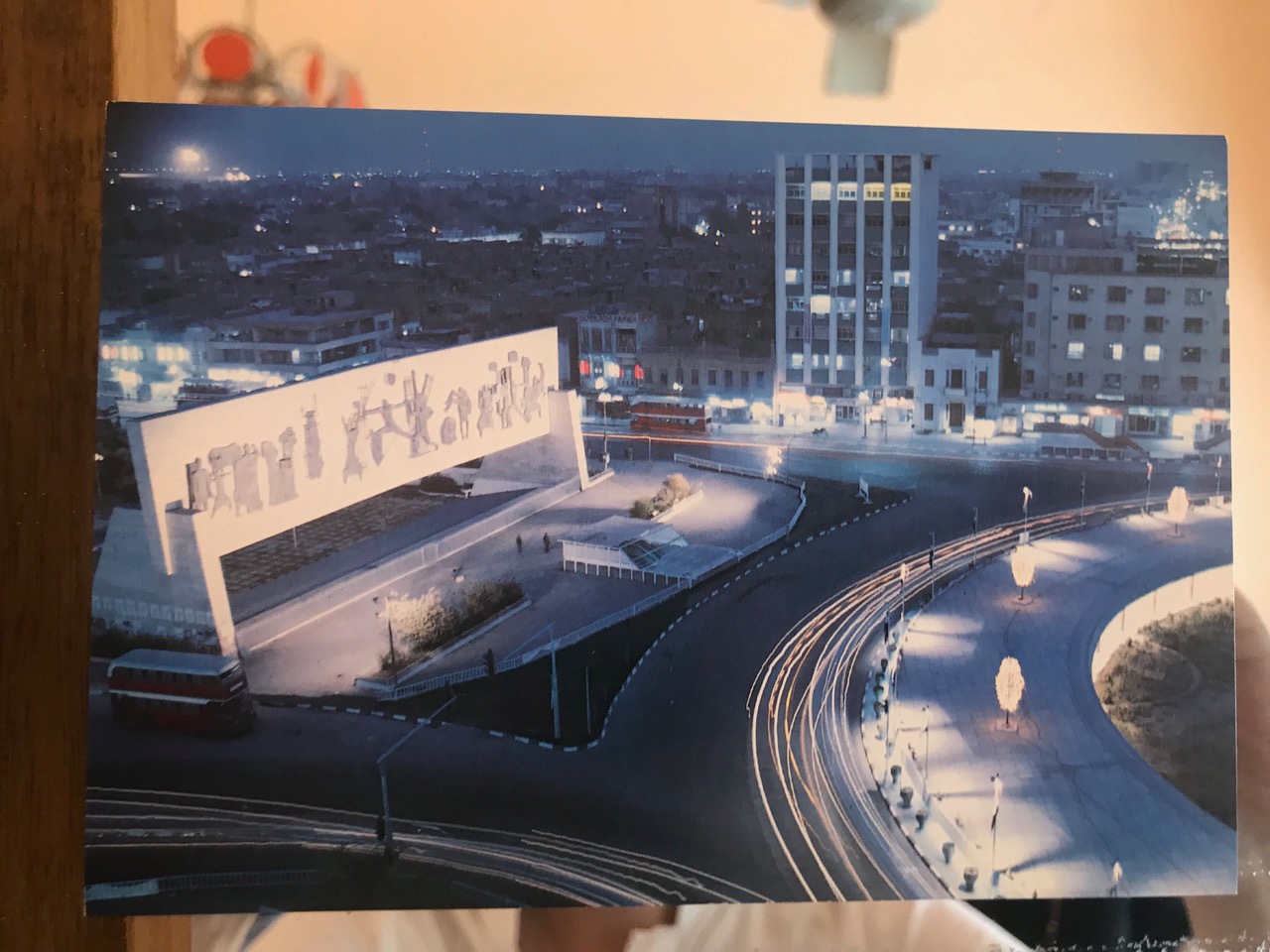
Arts Seminar in Baghdad, 2019
Memories revisited; postcard from Baghdad
Arts Seminar in Baghdad - Workshop SeriesCultures of Memory
Arts Seminar in Baghdad is a workshop series that prepares the participants to engage with their art works and interventions in the urban space of Baghdad. The seminar starts with a kick-off session – an intense 3-day workshop at TARKIB Baghdad Contemporary Arts Institute –, followed by regular skype sessions and will result in an exhibition, that is also a guided tour of the city, titled Baghdad Walk.
The seminar examines questions on memory cultures. It explores how memory understood as both a psychological and a social–cultural process can find its forms in the immaterial and material realm. Memory is deeply entwined with social relationships, with stories orally transmitted, as well as passed on in film, social media or literature, it leaves traces in form of buildings and monuments, ritual practices or commemorations, material artifacts or other cultural devices.
The exhibition Baghdad Walk will present site-specific interventions that address the paradigmatic shifts that the city of Baghdad has witnessed; historical, ideological, sociopolitical, and symbolic turns of events seen through the lense of the personal. The artists zoom in and out, finding microscopic details or distant perspectives, always looking for locations that are part of the collective memory or part of a personal trajectory within the larger frame of society’s past. The question is not whether to be part of the city’s history but how and on what terms. And what should change and what shouldn’t?
Baghdad Walk takes the Iraqi capital as a case study, addressing the memories embedded in the texture of urban life, from personal events and stories, to architectural heritage and public monuments, the urban web is saturated with memories to be re-visited and revealed.
Participants: Zainab Abbas | Ban Ahmed | Tabark Al Atrakchi | Hiba A. AL Azzawi | Maryam Mary | Aisha Saad | Amna Rafaa | Raneen Sami | Loay Al Hadhary | Nawful Hussein | Atef Al Jaffal | Faruq Al Jamal | Ahmed Al Majid | Husam Mohammed | Muhaned Mohammed | Sajjad Mohammed | Ameen Mokdad | Hussain Muttar | Mohammed Ridha | Zaid Saad | Muhaned Taha | Hadjer Qussay | Fatima Raad
—
This event is part of a workshop series Arts Seminar in Baghdad, conceived and organised by the Goethe-Institut Irak, in collaboration with the Institut für Raumexperimente (Institut for Spatial Experiments), Berlin and hosted by TARKIB Baghdad Contemporary Arts Institute in BAIT TARKIB. The series is choreographed by Christina Werner and realized with support by Hella Mewis.
Memories revisited; postcard from Baghdad
Arts Seminar in Baghdad - Workshop SeriesCultures of Memory
Arts Seminar in Baghdad is a workshop series that prepares the participants to engage with their art works and interventions in the urban space of Baghdad. The seminar starts with a kick-off session – an intense 3-day workshop at TARKIB Baghdad Contemporary Arts Institute –, followed by regular skype sessions and will result in an exhibition, that is also a guided tour of the city, titled Baghdad Walk.
The seminar examines questions on memory cultures. It explores how memory understood as both a psychological and a social–cultural process can find its forms in the immaterial and material realm. Memory is deeply entwined with social relationships, with stories orally transmitted, as well as passed on in film, social media or literature, it leaves traces in form of buildings and monuments, ritual practices or commemorations, material artifacts or other cultural devices.
The exhibition Baghdad Walk will present site-specific interventions that address the paradigmatic shifts that the city of Baghdad has witnessed; historical, ideological, sociopolitical, and symbolic turns of events seen through the lense of the personal. The artists zoom in and out, finding microscopic details or distant perspectives, always looking for locations that are part of the collective memory or part of a personal trajectory within the larger frame of society’s past. The question is not whether to be part of the city’s history but how and on what terms. And what should change and what shouldn’t?
Baghdad Walk takes the Iraqi capital as a case study, addressing the memories embedded in the texture of urban life, from personal events and stories, to architectural heritage and public monuments, the urban web is saturated with memories to be re-visited and revealed.
Participants: Zainab Abbas | Ban Ahmed | Tabark Al Atrakchi | Hiba A. AL Azzawi | Maryam Mary | Aisha Saad | Amna Rafaa | Raneen Sami | Loay Al Hadhary | Nawful Hussein | Atef Al Jaffal | Faruq Al Jamal | Ahmed Al Majid | Husam Mohammed | Muhaned Mohammed | Sajjad Mohammed | Ameen Mokdad | Hussain Muttar | Mohammed Ridha | Zaid Saad | Muhaned Taha | Hadjer Qussay | Fatima Raad
—
This event is part of a workshop series Arts Seminar in Baghdad, conceived and organised by the Goethe-Institut Irak, in collaboration with the Institut für Raumexperimente (Institut for Spatial Experiments), Berlin and hosted by TARKIB Baghdad Contemporary Arts Institute in BAIT TARKIB. The series is choreographed by Christina Werner and realized with support by Hella Mewis.
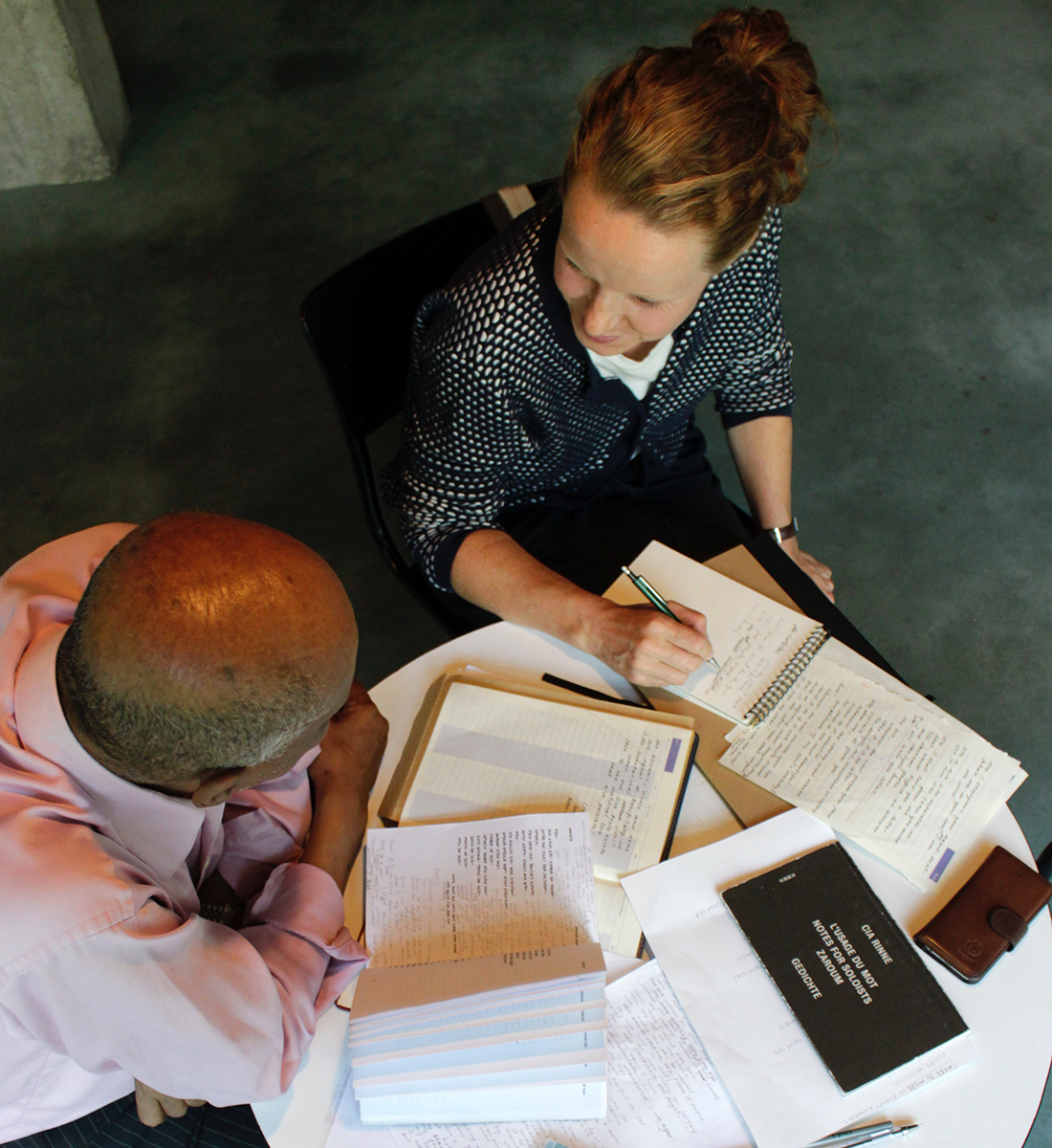
Poetry Jazz: Wax and Gold Workshop, Berlin
Poetry Jazz: Wax and Gold. Workshop
Akademie der Künste
Hanseatenweg 10, Berlin
Participating artists: Frezer Admasu, Eric Ellingsen, Mihret Kebede, Robert Lippok, Nebiy Mekonnen, Jorga Mesfin, Tasew Wendem Mose, Cia Rinne, Rike Scheffler, Misrak Terefe
Workshop and rehearsal at Akademie der Künste, Berlin
This project series by the Institut für Raumexperimente (Institute for Spatial Experiments) and Tobiya Poetic Jazz fuses contemporary expressive poetry styles in Amharic, German and English, and combines them with traditional Ethiopian music, jazz influences and electronic music. Continual shifts in languages, metres and rhythms create awareness of the subtle divergences of meaning that can be attributed to social and cultural influences. It is an experimental get-together of poets, musicians and translators, joining in an exercise of styles.
–
The workshop is part of the poetry series “Poetry Jazz: Wax and Honey, I’m Home” by the Institut für Raumexperimente, Berlin; in cooperation with the Akademie der Künste, Berlin; in dialogue with Tobiya Poetic Jazz, Addis Ababa; choreographed by Christina Werner; supported by the Studio Olafur Eliasson, Berlin; Graham Foundation for Advanced Studies in the Fine Arts, Chicago; Co-financing Fund of the Senate Department for Culture and Europe, Berlin
Funded by the TURN Fund of the German Federal Cultural Foundation.
Rehearsal at Akademie der Künste, Berlin
Poetry Jazz: Wax and Gold. Workshop
Akademie der Künste
Hanseatenweg 10, Berlin
Participating artists: Frezer Admasu, Eric Ellingsen, Mihret Kebede, Robert Lippok, Nebiy Mekonnen, Jorga Mesfin, Tasew Wendem Mose, Cia Rinne, Rike Scheffler, Misrak Terefe
Workshop and rehearsal at Akademie der Künste, Berlin
This project series by the Institut für Raumexperimente (Institute for Spatial Experiments) and Tobiya Poetic Jazz fuses contemporary expressive poetry styles in Amharic, German and English, and combines them with traditional Ethiopian music, jazz influences and electronic music. Continual shifts in languages, metres and rhythms create awareness of the subtle divergences of meaning that can be attributed to social and cultural influences. It is an experimental get-together of poets, musicians and translators, joining in an exercise of styles.
–
The workshop is part of the poetry series “Poetry Jazz: Wax and Honey, I’m Home” by the Institut für Raumexperimente, Berlin; in cooperation with the Akademie der Künste, Berlin; in dialogue with Tobiya Poetic Jazz, Addis Ababa; choreographed by Christina Werner; supported by the Studio Olafur Eliasson, Berlin; Graham Foundation for Advanced Studies in the Fine Arts, Chicago; Co-financing Fund of the Senate Department for Culture and Europe, Berlin
Funded by the TURN Fund of the German Federal Cultural Foundation.
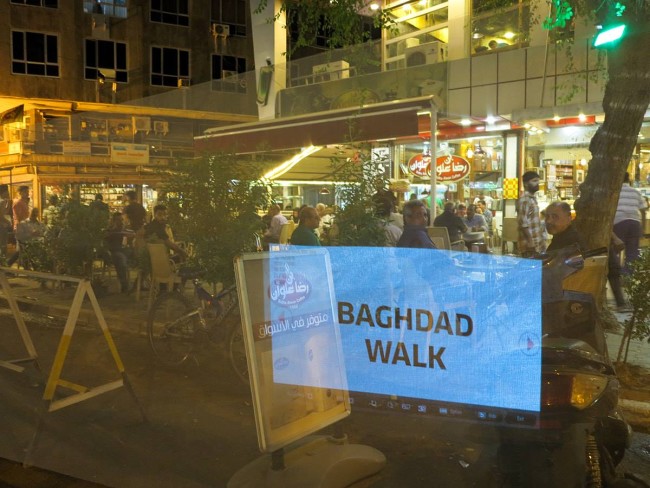
13. Ammar Hussein
Ammar Hussein: Chess (live)In front of Ridha Alwan Coffee
Photo by Christina Werner
Photo by Christina Werner
Photo by Hella Mewis
Photo by Christina Werner
Photo by Christina Werner
Ammar Hussein: Chess (live)In front of Ridha Alwan Coffee
Photo by Christina Werner
Photo by Christina Werner
Photo by Hella Mewis
Photo by Christina Werner
Photo by Christina Werner

12. Muhaned Taha
Muhaned Taha: How LongAt Kahramana Square
Photo by Yasir Razaq/Mahdi Al-Shididy
Photo by Christina Werner
Photo by Hella Mewis
Photo by Christina Werner
Photo by Christina Werner
Muhaned Taha’s installation consisted of a two-metre-high funnel filled with sand and gravel and three paintings arranged as a triangle. The paintings were crowned with the shape of a brain hovering at the rim of the funnel, tied to a bundle of white balloons. In HOW LONG, Tana talks about the connection between dream and reality. The three paintings resemble different dreams, with scenes oscillating between sweet dreams and nightmares. Taha positioned his installation to be the third object in a second, larger triangle connecting his work to two other significant objects in the nearby cityscape. The installation thereby created a dialogue with the popular Kahramana fountain by Mohammed Ghani Hikmat in Kahramana Square, which shows a figure from the story of Ali Baba and the 40 robbers, and a surveillance tower disguised as a statue shaped like a palm tree. The work created a web of associations of how society and our individual mind sets (as depicted by the literal brain) are influenced and shaped by narrations and memory, and how control evolves.
Muhaned Taha: How LongAt Kahramana Square
Photo by Yasir Razaq/Mahdi Al-Shididy
Photo by Christina Werner
Photo by Hella Mewis
Photo by Christina Werner
Photo by Christina Werner
Muhaned Taha’s installation consisted of a two-metre-high funnel filled with sand and gravel and three paintings arranged as a triangle. The paintings were crowned with the shape of a brain hovering at the rim of the funnel, tied to a bundle of white balloons. In HOW LONG, Tana talks about the connection between dream and reality. The three paintings resemble different dreams, with scenes oscillating between sweet dreams and nightmares. Taha positioned his installation to be the third object in a second, larger triangle connecting his work to two other significant objects in the nearby cityscape. The installation thereby created a dialogue with the popular Kahramana fountain by Mohammed Ghani Hikmat in Kahramana Square, which shows a figure from the story of Ali Baba and the 40 robbers, and a surveillance tower disguised as a statue shaped like a palm tree. The work created a web of associations of how society and our individual mind sets (as depicted by the literal brain) are influenced and shaped by narrations and memory, and how control evolves.
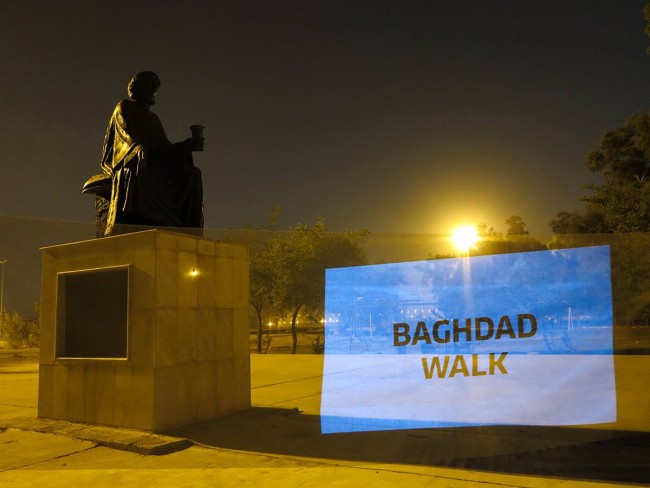
11. Husam Mohammed
Husam Mohammed: ExpressionIn front of the Abu Nawas statue
Photo by Hella Mewis
Photo by Hella Mewis
Photo by Yasir Razaq/Mahdi Al-Shididy
Photo by Hella Mewis
With his participatory work EXPRESSIONS, Husam Mohammed invited the audience to join together in a circle. He then proceeded to address each guest with a personal question, and the participants would answer each question without using words. With EXPRESSIONS, he wanted to challenge the audience and have people rely on their facial expressions, gestures, and body language as a means of communication. Mohammed is very critical of forms of expression used in social media today, such as relying on simplified icons, and he questions what the excessive use of emojis does to our everyday human interactions. The performance took place in front of the Abu Nawas statue, located in the park at the end of the boulevard Abu Nawas. The statue, designed by Ismael Fatteh and erected in 1962, honours the Iraqi poet Abu Nawas (756–814), who was a master of Arabic poetry. In poetry, the complexity and vitality of manifold ways to express human emotions stand in contrast to our reductionist forms of digital communication today. Following the performance, visitors were led back to the street; the exit was marked with a painting of faces on one side that showed lively expressions, and a sculpture resembling a judgment seat on the other side, to remind the visitors that they had the choice.
Husam Mohammed: ExpressionIn front of the Abu Nawas statue
Photo by Hella Mewis
Photo by Hella Mewis
Photo by Yasir Razaq/Mahdi Al-Shididy
Photo by Hella Mewis
With his participatory work EXPRESSIONS, Husam Mohammed invited the audience to join together in a circle. He then proceeded to address each guest with a personal question, and the participants would answer each question without using words. With EXPRESSIONS, he wanted to challenge the audience and have people rely on their facial expressions, gestures, and body language as a means of communication. Mohammed is very critical of forms of expression used in social media today, such as relying on simplified icons, and he questions what the excessive use of emojis does to our everyday human interactions. The performance took place in front of the Abu Nawas statue, located in the park at the end of the boulevard Abu Nawas. The statue, designed by Ismael Fatteh and erected in 1962, honours the Iraqi poet Abu Nawas (756–814), who was a master of Arabic poetry. In poetry, the complexity and vitality of manifold ways to express human emotions stand in contrast to our reductionist forms of digital communication today. Following the performance, visitors were led back to the street; the exit was marked with a painting of faces on one side that showed lively expressions, and a sculpture resembling a judgment seat on the other side, to remind the visitors that they had the choice.
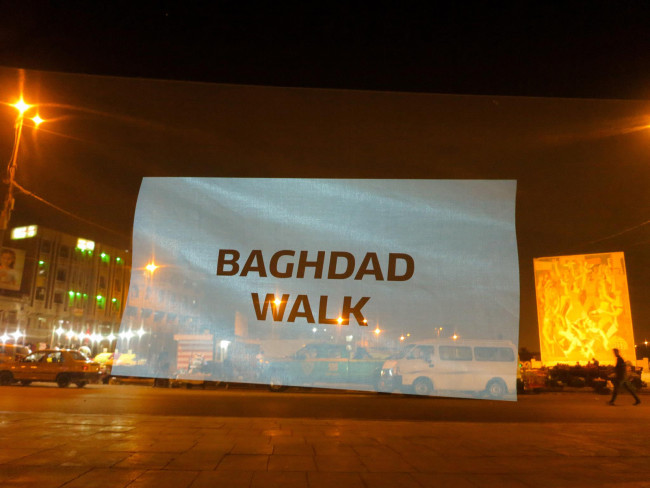
6. Ahmed Al Saad
Ahmed Al Saad: Lady Baghdad. In collaboration with Tabarek Al AtrakchiAt Tayeran Square
Photos by Christina Werner
Ahmed Al Saad: Lady Baghdad. 2018
The video installation LADY BAGHDAD used documentation of an intervention by Ahmed Al Saad in collaboration with Tabarek Al Atrackchi. The pop-art-style video shows a young woman playing the violin in front of the The Freedom Monument, a large-scale mosaic by Faek Hassan at al-Tayaran Square. A guitar player joins the violinist for a spontaneous street concert, while a female artist makes live drawings of the situation. Al Saad’s video captures both the artistic interaction and the urban surroundings and goings-on. For BAGHDAD WALK, Al Saad projected the video at night in front of the monument where the intervention had taken place. Installed on a traffic island, the video screen faced one way, while on the opposite side of the screen, Al Atrackchi installed a canvas with her drawings, capturing the moments of the intervention in another medium. With LADY BAGHDAD, Al Saad wants to encourage women be more present in public life in Baghdad and to increase their visibility in the cityscape. Al-Tayaran Square is an important public space and transportation hub in Baghdad, at the foot of Baghdad’s Alumma Park, opposite Tahrir Square. The mosaic monument Celebration of Victory, by Faek Hassan, erected in the 1960s, is widely visible and depicts a celebrating crowd with women and freed doves. It was the first mosaic in Baghdad representing the people’s desire to live together in peace and harmony. Al Saad references an artwork and a time with a potent emphasis on equality and quality of life.
Ahmed Al Saad: Lady Baghdad. In collaboration with Tabarek Al AtrakchiAt Tayeran Square
Photos by Christina Werner
Ahmed Al Saad: Lady Baghdad. 2018
The video installation LADY BAGHDAD used documentation of an intervention by Ahmed Al Saad in collaboration with Tabarek Al Atrackchi. The pop-art-style video shows a young woman playing the violin in front of the The Freedom Monument, a large-scale mosaic by Faek Hassan at al-Tayaran Square. A guitar player joins the violinist for a spontaneous street concert, while a female artist makes live drawings of the situation. Al Saad’s video captures both the artistic interaction and the urban surroundings and goings-on. For BAGHDAD WALK, Al Saad projected the video at night in front of the monument where the intervention had taken place. Installed on a traffic island, the video screen faced one way, while on the opposite side of the screen, Al Atrackchi installed a canvas with her drawings, capturing the moments of the intervention in another medium. With LADY BAGHDAD, Al Saad wants to encourage women be more present in public life in Baghdad and to increase their visibility in the cityscape. Al-Tayaran Square is an important public space and transportation hub in Baghdad, at the foot of Baghdad’s Alumma Park, opposite Tahrir Square. The mosaic monument Celebration of Victory, by Faek Hassan, erected in the 1960s, is widely visible and depicts a celebrating crowd with women and freed doves. It was the first mosaic in Baghdad representing the people’s desire to live together in peace and harmony. Al Saad references an artwork and a time with a potent emphasis on equality and quality of life.
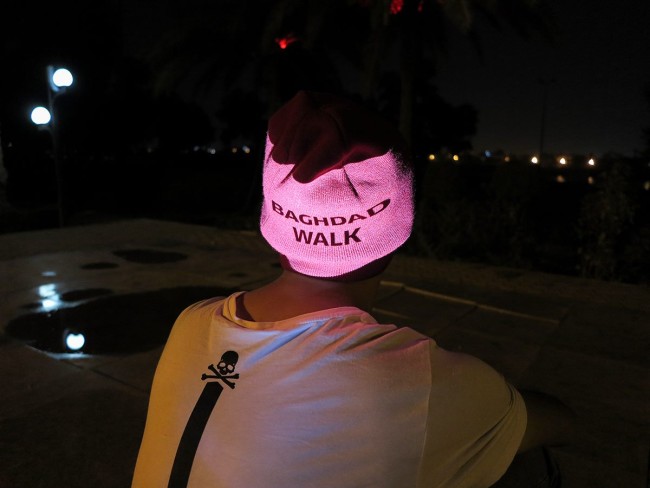
9. Zaid Saad
Zaid Saad: Sanduk (Box)On the riverbank of Tigris
Photo by Christina Werner
Photo by Christina Werner
Photo by Yasir Razaq/Mahdi Al-Shididy
Photo by Yasir Razaq/Mahdi Al-Shididy
Photo by Hella Mewis
The site-specific installation ZANDUK (the Arabic word for ‘box’) by Zaid Saad was made of eleven cardboard moving boxes. These boxes were stacked and ready to be transported to an unknown destination. They were labelled ‘From Iraq to the Sea’ and featured stencils of transportation symbols that Saad designed to signal: don’t kill them, don’t put them in jail, don’t return to sender. The installation was accompanied by a sound piece wherein the audience would listen to voices of Iraqis who shared stories about those others who had left Iraq because of the war. Saad addresses the wave of migration that has taken away many Iraqis in the last few years. Mostly the younger generations have been sent abroad, in a way similar to what governments all over the world do during wartime with national treasures and artefacts, to keep them safe outside the country. Yet people are often sent from one insecure situation to another, or even to their death. Saad lends his artistic voice to the mourning families who stay behind and lose their loved ones one way or another, ripping society off its future foundation. The installation is positioned on the riverbank of the Tigris, which leads towards the sea. In the background, on the other side of the river, the wall of the so-called International Zone, where the national decision-makers reside, is visible.
Zaid Saad: Sanduk (Box)On the riverbank of Tigris
Photo by Christina Werner
Photo by Christina Werner
Photo by Yasir Razaq/Mahdi Al-Shididy
Photo by Yasir Razaq/Mahdi Al-Shididy
Photo by Hella Mewis
The site-specific installation ZANDUK (the Arabic word for ‘box’) by Zaid Saad was made of eleven cardboard moving boxes. These boxes were stacked and ready to be transported to an unknown destination. They were labelled ‘From Iraq to the Sea’ and featured stencils of transportation symbols that Saad designed to signal: don’t kill them, don’t put them in jail, don’t return to sender. The installation was accompanied by a sound piece wherein the audience would listen to voices of Iraqis who shared stories about those others who had left Iraq because of the war. Saad addresses the wave of migration that has taken away many Iraqis in the last few years. Mostly the younger generations have been sent abroad, in a way similar to what governments all over the world do during wartime with national treasures and artefacts, to keep them safe outside the country. Yet people are often sent from one insecure situation to another, or even to their death. Saad lends his artistic voice to the mourning families who stay behind and lose their loved ones one way or another, ripping society off its future foundation. The installation is positioned on the riverbank of the Tigris, which leads towards the sea. In the background, on the other side of the river, the wall of the so-called International Zone, where the national decision-makers reside, is visible.
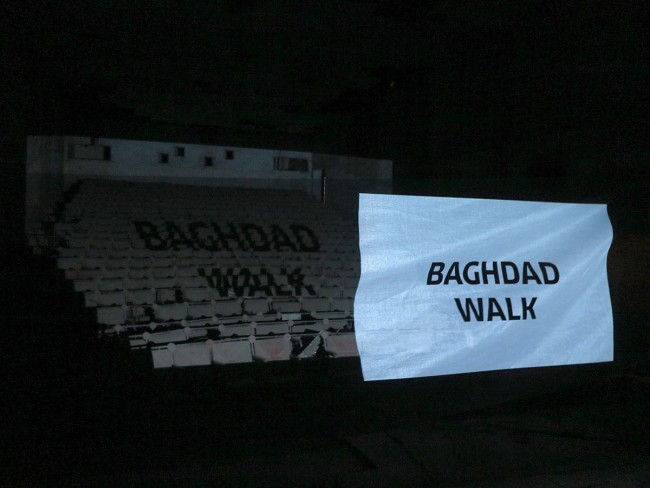
8. Ameen Mokdad
Ameen Mokdad: Sonic InterventionAt Abu Nawas Theater
Photo by Christina Werner
Photo by Hella Mewis
Photo by Yasir Razaq/Mahdi Al-Shididy
Video by Christina Werner
Composer and musician Ameen Mokdad conducted a body-percussion event, using the human body as an instrument to create sounds and vibrations. All participants in the BAGHDAD WALK were invited to join on stage and take part in the performance. The group exercise took place on the stage of the derelict, empty, and unused Abu Nawas Theatre, playing off the architectural features and astounding acoustics of the space. Mokdad is interested in activating social interaction through music; the participants were encouraged to listen to each other, letting the rhythm of their movements fall in sync, creating a small concert with nothing more than an exercise of collaboration. While everyone involved was both on stage and ‘in’ the audience at the same time, they experienced a sense of what the building once was, and what it could be used for again. The Abu Nawas Theatre was once one of the main attractions on the boulevard Abu Nawas, which follows the riverside of the Tigris and mostly used to host film screenings. Because the unresolved property situation today keeps private investors away, the theatre building is currently in the hands of the city administration and mainly used as a waste-disposal site.
Ameen Mokdad: Sonic InterventionAt Abu Nawas Theater
Photo by Christina Werner
Photo by Hella Mewis
Photo by Yasir Razaq/Mahdi Al-Shididy
Video by Christina Werner
Composer and musician Ameen Mokdad conducted a body-percussion event, using the human body as an instrument to create sounds and vibrations. All participants in the BAGHDAD WALK were invited to join on stage and take part in the performance. The group exercise took place on the stage of the derelict, empty, and unused Abu Nawas Theatre, playing off the architectural features and astounding acoustics of the space. Mokdad is interested in activating social interaction through music; the participants were encouraged to listen to each other, letting the rhythm of their movements fall in sync, creating a small concert with nothing more than an exercise of collaboration. While everyone involved was both on stage and ‘in’ the audience at the same time, they experienced a sense of what the building once was, and what it could be used for again. The Abu Nawas Theatre was once one of the main attractions on the boulevard Abu Nawas, which follows the riverside of the Tigris and mostly used to host film screenings. Because the unresolved property situation today keeps private investors away, the theatre building is currently in the hands of the city administration and mainly used as a waste-disposal site.
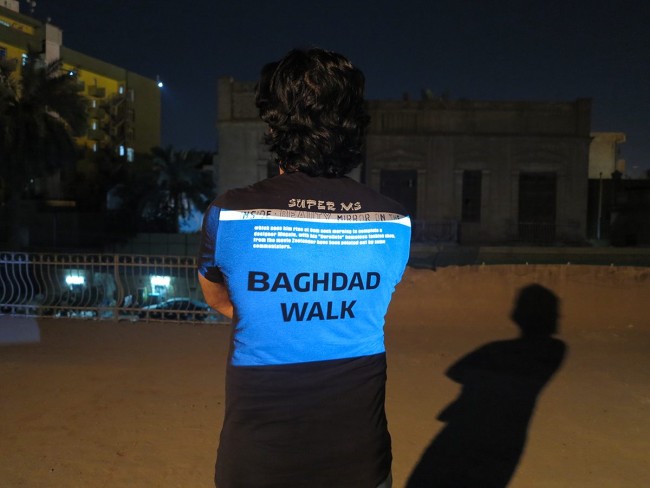
7. Akram Assam
Akram Assam: The History TreeAt Bait Tarkib
Photos by Christina Werner
Photo by Yasir Razaq/Mahdi Al-Shididy
THE HISTORY TREE by Akram Assam was an installation of a tree trunk, and the annual rings on its surface were painted in a variety of colours. Larger coloured ellipses were also drawn into the packed earth surrounding the trunk, resembling planetary orbits. Each coloured ring reflected a historical period of the Republic of Iraq, and the rings on the ground expanded beyond the lifetime of the tree. Each visitor was invited to take a notepad and write down an event that was an important marker in time for them, imagining the relation of the life span of the tree, their individual lifetime, and the historical moment. Placed on the rooftop of the creative arts centre BAIT TARKIB, the tree – when imagined in full growth – seems to blend in with the row of palm trees in the neighbouring yards. It rooted the location of BAIT TARKIB in the neighbourhood and the city’s history. BAIT TARKIB is in a typical Baghdad building, originally a family home that was built in the 1920s, when the Republic of Iraq was founded.
Akram Assam: The History TreeAt Bait Tarkib
Photos by Christina Werner
Photo by Yasir Razaq/Mahdi Al-Shididy
THE HISTORY TREE by Akram Assam was an installation of a tree trunk, and the annual rings on its surface were painted in a variety of colours. Larger coloured ellipses were also drawn into the packed earth surrounding the trunk, resembling planetary orbits. Each coloured ring reflected a historical period of the Republic of Iraq, and the rings on the ground expanded beyond the lifetime of the tree. Each visitor was invited to take a notepad and write down an event that was an important marker in time for them, imagining the relation of the life span of the tree, their individual lifetime, and the historical moment. Placed on the rooftop of the creative arts centre BAIT TARKIB, the tree – when imagined in full growth – seems to blend in with the row of palm trees in the neighbouring yards. It rooted the location of BAIT TARKIB in the neighbourhood and the city’s history. BAIT TARKIB is in a typical Baghdad building, originally a family home that was built in the 1920s, when the Republic of Iraq was founded.
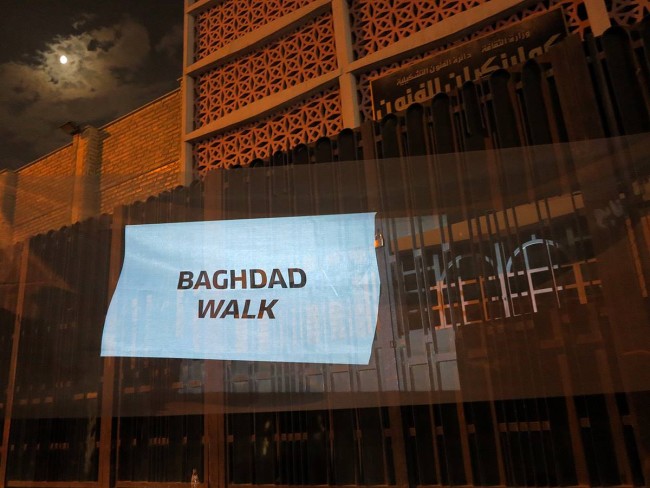
5. Tabarek Al Atrakchi
Tabarek Al Atrakchi: What Is A DreamIn front of the Calouste Gulbenkian Museum/Museum of Modern Art
Photo by Christina Werner
Photo by Anees Amer
Photo by Christina Werner
Photo by Christina Werner
The installation WHAT IS A DREAM by Tabarek Al Atrakchi showed a series of crayon drawings made by street kids, in an installation setting that included an arabana (a kind of wheelbarrow for transporting goods) loaded with water bottles, chewing gum, and cleaning materials – all items that are typically sold by children on the street. Al Atrakchi sought out the children in the city streets and asked them to draw their dreams and to tell her what those dreams were about. WHAT IS A DREAM depicts the hopes and future visions of the children. The dreams range from having a boat to work on the river and becoming a photographer or a doctor to travelling to an island in the turquoise sea. Al Atrakchi criticises child labour and the living conditions of many street kids in Iraq by looking into their wishes for a future that contrasts their everyday situation. She presented her artwork in front of the Museum of Modern Art in Baghdad, the first exhibition space for modern art in Iraq, built in 1962 and also known as ‘The Gulbenkian Hall’. The place embodies a collision of worlds that is typical for Baghdad: the governmental, state-run art museum is located in the midst of a bazaar that gathers small businesses, day labourers, and the poorest of the city, from thieves to street kids. The children’s drawings on the street stand in an imagined dialogue with the art inside the galleries, while they show how far removed one reality is from the other.
Tabarek Al Atrakchi: What Is A DreamIn front of the Calouste Gulbenkian Museum/Museum of Modern Art
Photo by Christina Werner
Photo by Anees Amer
Photo by Christina Werner
Photo by Christina Werner
The installation WHAT IS A DREAM by Tabarek Al Atrakchi showed a series of crayon drawings made by street kids, in an installation setting that included an arabana (a kind of wheelbarrow for transporting goods) loaded with water bottles, chewing gum, and cleaning materials – all items that are typically sold by children on the street. Al Atrakchi sought out the children in the city streets and asked them to draw their dreams and to tell her what those dreams were about. WHAT IS A DREAM depicts the hopes and future visions of the children. The dreams range from having a boat to work on the river and becoming a photographer or a doctor to travelling to an island in the turquoise sea. Al Atrakchi criticises child labour and the living conditions of many street kids in Iraq by looking into their wishes for a future that contrasts their everyday situation. She presented her artwork in front of the Museum of Modern Art in Baghdad, the first exhibition space for modern art in Iraq, built in 1962 and also known as ‘The Gulbenkian Hall’. The place embodies a collision of worlds that is typical for Baghdad: the governmental, state-run art museum is located in the midst of a bazaar that gathers small businesses, day labourers, and the poorest of the city, from thieves to street kids. The children’s drawings on the street stand in an imagined dialogue with the art inside the galleries, while they show how far removed one reality is from the other.
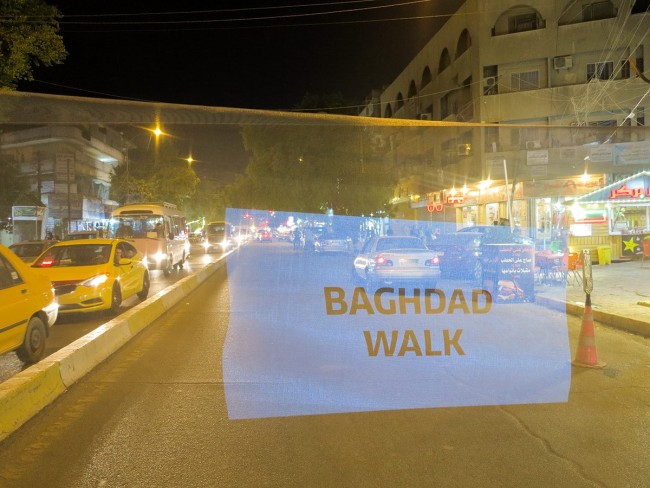
3. Ameen Mokdad
Ameen Mokdad: 1000 Iraqui Lip PrintsAt Karada Ridha Alwan
Photos by Christina Werner
Videos by Christina Werner
Ameen Mokdad collected 1000 empty water bottles that littered the streets of Baghdad with his own hands and formed a large sphere from the waste material. This huge plastic ball was returned to the street, placed in the middle of Karada Dajel in front of Ridha Alwan Café and blocking traffic. 1000 IRAQI LIP PRINTS are 1000 pieces of evidence of polluting crime happening every second in Baghdad, the lip prints tracing back to the very DNA of individual involvement. With his intervention, Mokdad wanted to create awareness of the enormous amount of waste in Baghdad’s streets and how this is influenced by our understanding of which spaces we care for and how habits and responsibility for communal spaces are intertwined. The intervention took place on Karada Dajel, a thriving shopping street at the heart of the city of Karada, in front of the art cafe Ridha Alwan, where socially diverse clientele meet under one roof. The spot seemed ideal for eliciting diverse reactions from a mixed crowd in a quite everyday situation. To Mokdad, it was important that the audience comprised inhabitants of Baghdad, who can achieve change if they want.
Ameen Mokdad: 1000 Iraqui Lip PrintsAt Karada Ridha Alwan
Photos by Christina Werner
Videos by Christina Werner
Ameen Mokdad collected 1000 empty water bottles that littered the streets of Baghdad with his own hands and formed a large sphere from the waste material. This huge plastic ball was returned to the street, placed in the middle of Karada Dajel in front of Ridha Alwan Café and blocking traffic. 1000 IRAQI LIP PRINTS are 1000 pieces of evidence of polluting crime happening every second in Baghdad, the lip prints tracing back to the very DNA of individual involvement. With his intervention, Mokdad wanted to create awareness of the enormous amount of waste in Baghdad’s streets and how this is influenced by our understanding of which spaces we care for and how habits and responsibility for communal spaces are intertwined. The intervention took place on Karada Dajel, a thriving shopping street at the heart of the city of Karada, in front of the art cafe Ridha Alwan, where socially diverse clientele meet under one roof. The spot seemed ideal for eliciting diverse reactions from a mixed crowd in a quite everyday situation. To Mokdad, it was important that the audience comprised inhabitants of Baghdad, who can achieve change if they want.
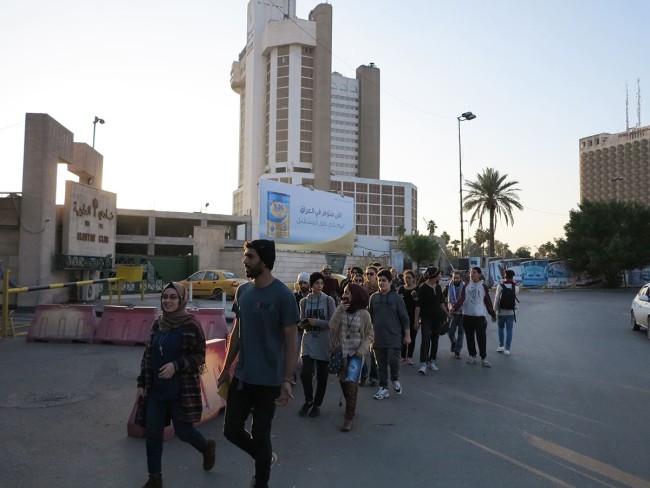
Baghdad Walk – Follow us
The two-day walk started at the Iraqi Independent Film Centre, led along Al Rasheed Street to Midan Square, connected Karada Dajel with Tayeran Square and Tahrir Square; it led from Tarkib Baghdad Contemporary Arts Institute to the Abu Nawas Theater, spread along the Abu Nawas riverside and meandered through Karada neighborhood from Kahramana Square to Ridah Alwan Coffeeshop.
Please find the documentation of each of the artist’s interventions on the following pages.
Photo by Anees Amer
Photo by Anees Amer
Photo by Christina Werner
Photo by Anees Amer
Photo by Yasir Razaq/Mahdi Al-Shididy
Photo by Anees Amer
Photo by Anees Amer
Photo by Yasir Razaq/Mahdi Al-Shididy
Photo by Anees Amer
Photo by Hella Mewis
Photo by Christina Werner
Photo by Hella Mewis
Photo by Yasir Razaq/Mahdi Al-Shididy
Photo by Christina Werner
Photo by Hella Mewis
Photo by Hella Mewis
Photo by Christina Werner
Photo by Hella Mewis
The two-day walk started at the Iraqi Independent Film Centre, led along Al Rasheed Street to Midan Square, connected Karada Dajel with Tayeran Square and Tahrir Square; it led from Tarkib Baghdad Contemporary Arts Institute to the Abu Nawas Theater, spread along the Abu Nawas riverside and meandered through Karada neighborhood from Kahramana Square to Ridah Alwan Coffeeshop.
Please find the documentation of each of the artist’s interventions on the following pages.
Photo by Anees Amer
Photo by Anees Amer
Photo by Christina Werner
Photo by Anees Amer
Photo by Yasir Razaq/Mahdi Al-Shididy
Photo by Anees Amer
Photo by Anees Amer
Photo by Yasir Razaq/Mahdi Al-Shididy
Photo by Anees Amer
Photo by Hella Mewis
Photo by Christina Werner
Photo by Hella Mewis
Photo by Yasir Razaq/Mahdi Al-Shididy
Photo by Christina Werner
Photo by Hella Mewis
Photo by Hella Mewis
Photo by Christina Werner
Photo by Hella Mewis
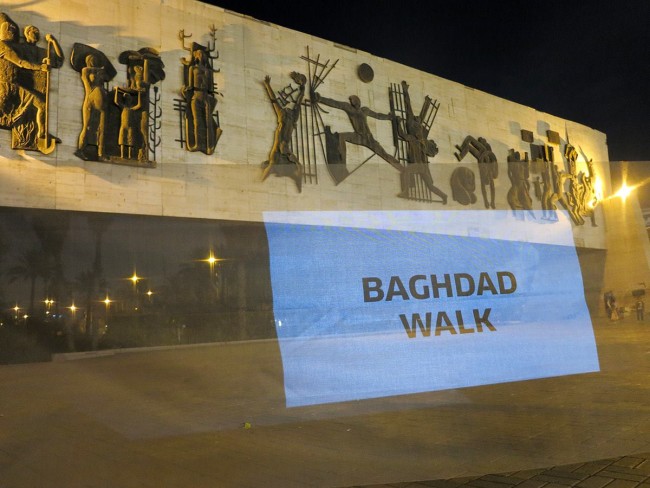
4. Loay Al Hadhary
Loay Al Hadhary: Not For SaleAt Tahrir Square
Photo by Yasir Razaq/Mahdi Al-Shididy
Photo by Yasir Razaq/Mahdi Al-Shididy
Photo by Yasir Razaq/Mahdi Al-Shididy
Photo by Anees Amer
Photo by Anees Amer
Photo by Hella Mewis
The sculpture NOT FOR SALE by Loay Al Hadhary shows a Yazidi woman wrapped in plastic foil, which represents the traditional Abaya robe. Underneath the semi-transparent veil, her naked skin is covered with marks, inscriptions of newspaper clippings and symbols that refer to slavery and misuse. Her hands are raised, tearing a chain apart. The statue stands for the fate of thousands of Yazidi women, kidnapped, enslaved, sold, and raped by members of the Islamic State (IS) during the years of genocide of the Yazidi community in Iraq. Al Hadhari positioned the sculpture underneath the Freedom Monument, known as Nasb al-Hurriyah, by sculptor Jawad Saleem and architect Rifat Chadirji, at Tahrir Square (Liberation Square), where people have historically held demonstrations. The monument was unveiled in 1961; it expresses the struggle of the Iraqi people before the 14 July Revolution in 1958 and commemorates the establishment of the Republic of Iraq. The monument symbolises the people’s strife against tyranny, a struggle that hasn’t been put to an end, fought again in the present day. IS has been pursuing a genocidal campaign against the Yazidi of Sinjar in northern Iraq, but to date, no perpetrator has been held accountable for the genocide.
Loay Al Hadhary: Not For SaleAt Tahrir Square
Photo by Yasir Razaq/Mahdi Al-Shididy
Photo by Yasir Razaq/Mahdi Al-Shididy
Photo by Yasir Razaq/Mahdi Al-Shididy
Photo by Anees Amer
Photo by Anees Amer
Photo by Hella Mewis
The sculpture NOT FOR SALE by Loay Al Hadhary shows a Yazidi woman wrapped in plastic foil, which represents the traditional Abaya robe. Underneath the semi-transparent veil, her naked skin is covered with marks, inscriptions of newspaper clippings and symbols that refer to slavery and misuse. Her hands are raised, tearing a chain apart. The statue stands for the fate of thousands of Yazidi women, kidnapped, enslaved, sold, and raped by members of the Islamic State (IS) during the years of genocide of the Yazidi community in Iraq. Al Hadhari positioned the sculpture underneath the Freedom Monument, known as Nasb al-Hurriyah, by sculptor Jawad Saleem and architect Rifat Chadirji, at Tahrir Square (Liberation Square), where people have historically held demonstrations. The monument was unveiled in 1961; it expresses the struggle of the Iraqi people before the 14 July Revolution in 1958 and commemorates the establishment of the Republic of Iraq. The monument symbolises the people’s strife against tyranny, a struggle that hasn’t been put to an end, fought again in the present day. IS has been pursuing a genocidal campaign against the Yazidi of Sinjar in northern Iraq, but to date, no perpetrator has been held accountable for the genocide.
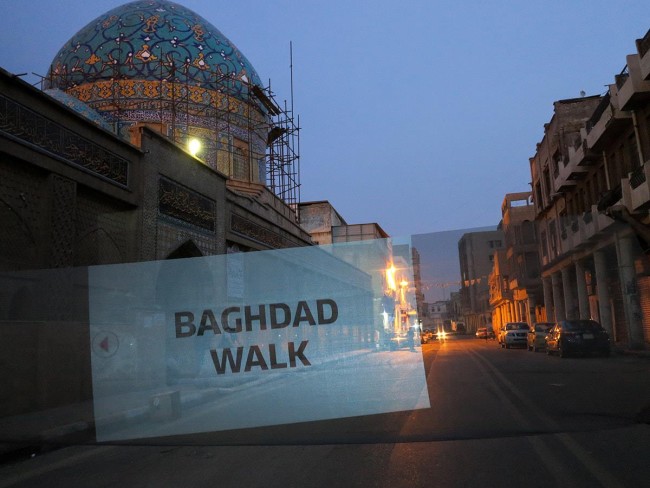
2. Hussain Muttar
Hussain Muttar: 1000 Stories & A StoryAt Al Rasheed Street
Photo by Christina Werner
Photo by Christina Werner
Photo by Yasir Razaq/Mahdi Al-Shididy
Photo by Christina Werner
Photo by Hella Mewis
Photo by Christina Werner
Photos by Christina Werner
Hussain Muttar’s 1000 STORIES AND A STORY is based on his on-going research. He collects historical photographs of Baghdad city views from archives as well as from private households and reconstructs the images in the present day, photographing the same location from the same angles and perspectives. For BAGHDAD WALK, he chose to present comparisons of architectural landscapes, landmarks, and sights in Baghdad. The work juxtaposes past and present, installing large posters of the historical and current photographs of facades and buildings of Al Rasheed Street along that very street, covering a distance of 2.7 kilometres from Zinek Bridge to Midan Square. Muttar’s ambition is to raise awareness of Baghdas architectural heritage and to encourage residents to see their neighbourhood’s rich history. He involves the local community by collecting the photos and stories about the buildings and their use and function, and he depends on the cooperation of residents to access rooftops and sites in order to reconstruct the original perspectives. For BAGHDAD WALK, Muttar chose to present ten sites on Al Rasheed Street, not just to highlight the richness of architectural tradition, but also to emphasise how architecturally and historically valuable treasures dwindle away through human misuse and neglect.
Hussain Muttar: 1000 Stories & A StoryAt Al Rasheed Street
Photo by Christina Werner
Photo by Christina Werner
Photo by Yasir Razaq/Mahdi Al-Shididy
Photo by Christina Werner
Photo by Hella Mewis
Photo by Christina Werner
Photos by Christina Werner
Hussain Muttar’s 1000 STORIES AND A STORY is based on his on-going research. He collects historical photographs of Baghdad city views from archives as well as from private households and reconstructs the images in the present day, photographing the same location from the same angles and perspectives. For BAGHDAD WALK, he chose to present comparisons of architectural landscapes, landmarks, and sights in Baghdad. The work juxtaposes past and present, installing large posters of the historical and current photographs of facades and buildings of Al Rasheed Street along that very street, covering a distance of 2.7 kilometres from Zinek Bridge to Midan Square. Muttar’s ambition is to raise awareness of Baghdas architectural heritage and to encourage residents to see their neighbourhood’s rich history. He involves the local community by collecting the photos and stories about the buildings and their use and function, and he depends on the cooperation of residents to access rooftops and sites in order to reconstruct the original perspectives. For BAGHDAD WALK, Muttar chose to present ten sites on Al Rasheed Street, not just to highlight the richness of architectural tradition, but also to emphasise how architecturally and historically valuable treasures dwindle away through human misuse and neglect.
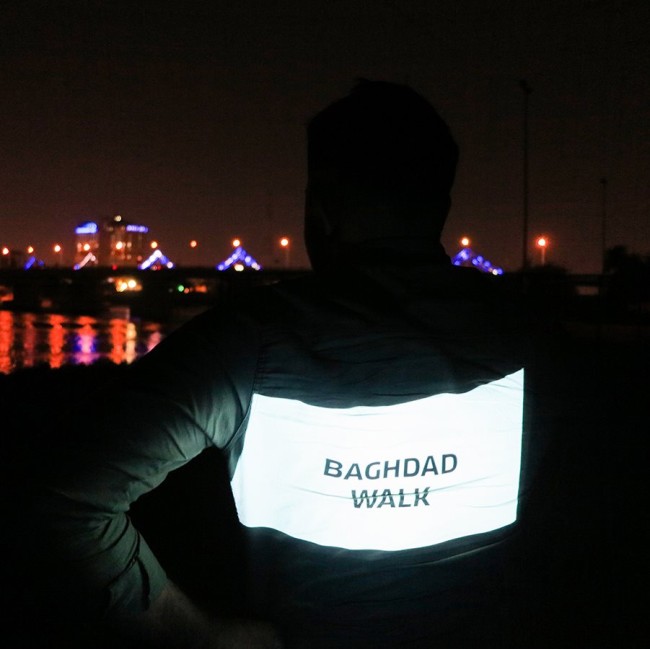
1. Ammar Hussein
Ammar Hussein: Tree of HeavenAt the Iraqi Independent Film Center (IIFC)
Photo by Yasir Razaq/Mahdi Al-Shididy
Photo by Yasir Razaq/Mahdi Al-Shididy
Photo by Yasir Razaq/Mahdi Al-Shididy
Photo by Yasir Razaq/Mahdi Al-Shididy
Photo by Yasir Razaq/Mahdi Al-Shididy
Photo by Anees Amer
TREE OF HEAVEN by Ammar Hussein presented five montage works combining different types of processed wood on canvas. The works were arranged on the ground, set into the soil of a former yard. Hussain highlights the significance of the medium of wood and its importance to humanity, both in our built environment and in narrative traditions. The installation was presented in the yard of the Iraqi Independent Film Center (IIFC), a shanasheel building constructed in the early 1920s on Al Rasheed Street. The IIFC plays a pioneering role in the independent arts and creative industries in Baghdad. The building is currently under renovation, and its traditional shanasheel features, for instance, the finely crafted bay windows, were once completed with intricate wooden latticework and ornate stained glass, which allow inhabitants to see outside without being seen.
Ammar Hussein: Tree of HeavenAt the Iraqi Independent Film Center (IIFC)
Photo by Yasir Razaq/Mahdi Al-Shididy
Photo by Yasir Razaq/Mahdi Al-Shididy
Photo by Yasir Razaq/Mahdi Al-Shididy
Photo by Yasir Razaq/Mahdi Al-Shididy
Photo by Yasir Razaq/Mahdi Al-Shididy
Photo by Anees Amer
TREE OF HEAVEN by Ammar Hussein presented five montage works combining different types of processed wood on canvas. The works were arranged on the ground, set into the soil of a former yard. Hussain highlights the significance of the medium of wood and its importance to humanity, both in our built environment and in narrative traditions. The installation was presented in the yard of the Iraqi Independent Film Center (IIFC), a shanasheel building constructed in the early 1920s on Al Rasheed Street. The IIFC plays a pioneering role in the independent arts and creative industries in Baghdad. The building is currently under renovation, and its traditional shanasheel features, for instance, the finely crafted bay windows, were once completed with intricate wooden latticework and ornate stained glass, which allow inhabitants to see outside without being seen.
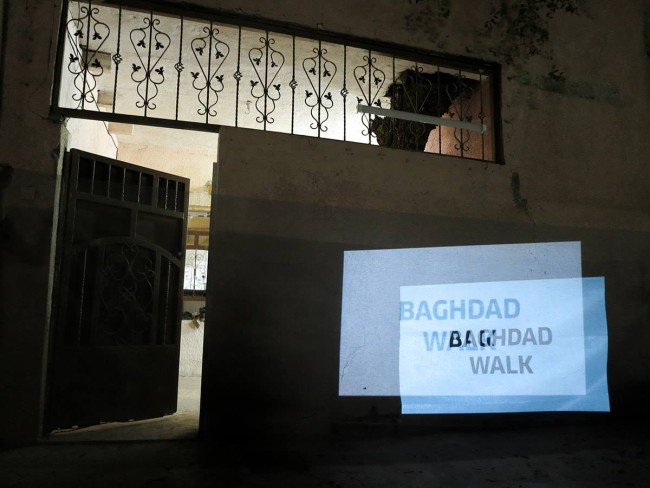
10. Atef Al Jaffal
Atef Al Jaffal: CircleStreet behind Shataa Al Jameel
Photos by Christina Werner
CIRCLE is a mural by Atef Al Jaffal, a young designer who painted a circle on the exterior wall of an ordinary one-family house and integrated eight images on plates, designed in contrasting colours, with the circle. Each design mirrors disputed issues within the Iraqi community. The images are ambivalent: a veiled woman stands for the discrepancy of tradition versus modern life, intertwined hands point to topics of gender and love, walls and roadblocks tackle questions of danger and control. Al Jaffal sees the country of Iraq as one big family. He thinks that to be able to live a normal life, the people should start to learn to respect each other and allow for different ways of being part of a community. The artist chose this ordinary family home in order to render a clear connection between the bonds of family life and how we operate in the larger community – to raise the question of how our domestic intimacies, responsibilities, and behaviour can influence our participation in society as a whole.
Atef Al Jaffal: CircleStreet behind Shataa Al Jameel
Photos by Christina Werner
CIRCLE is a mural by Atef Al Jaffal, a young designer who painted a circle on the exterior wall of an ordinary one-family house and integrated eight images on plates, designed in contrasting colours, with the circle. Each design mirrors disputed issues within the Iraqi community. The images are ambivalent: a veiled woman stands for the discrepancy of tradition versus modern life, intertwined hands point to topics of gender and love, walls and roadblocks tackle questions of danger and control. Al Jaffal sees the country of Iraq as one big family. He thinks that to be able to live a normal life, the people should start to learn to respect each other and allow for different ways of being part of a community. The artist chose this ordinary family home in order to render a clear connection between the bonds of family life and how we operate in the larger community – to raise the question of how our domestic intimacies, responsibilities, and behaviour can influence our participation in society as a whole.
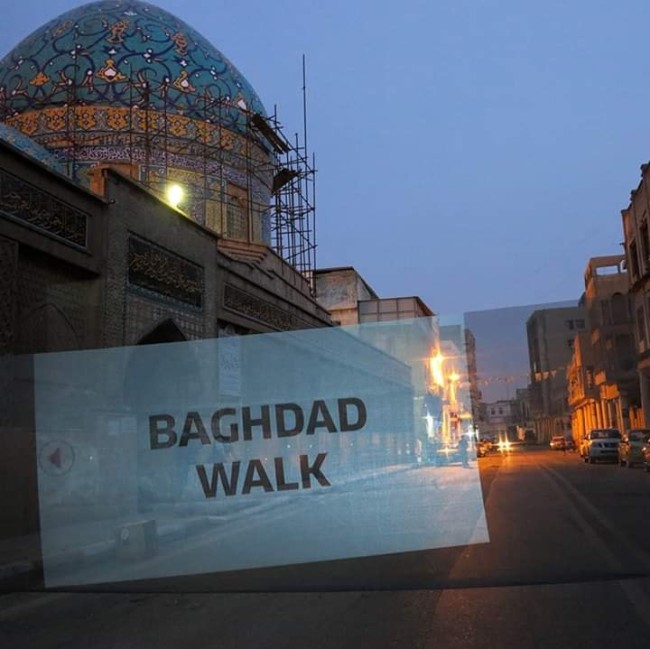
Baghdad Walk I
BAGHDAD WALKGroup exhibition in public space
Baghdad Walk is a group exhibition by emerging Iraqi artists presented in the public space and in different locations in Karada, Baghdad. The walk starts at Iraqi Independent Film Centre, leads along Al Rasheed Street to Midan Square, connects Tayeran Square, Tahrir Square and Kahramana Square, spreads along the Abu Nawas riverside and meanders through Karada neighborhood, featuring time-based works and interventions.
Baghdad Walk is an exhibition and a narrative tour of the city. The participating artists connect their works with the specific locations, introducing background information on site. Manifold stories about the city of Baghdad are told and retold anew through the artists’ perspectives and the encounters they create.
Participants:
Ahmed Al Saad, Tabarek Al Atrakchi, Akram Assam, Ameen Mokdad, Ammar Hussein, Atef Al Jaffal, Hussam Mohammed, Hussain Muttar, Loay Al Hadhary, Muhaned Taha, Zaid Saad.
—
Please find the project’s bilingual (Englisch-Arabic) website here.
—
Baghdad Walk is the result of a workshop series Arts Seminar in Baghdad, conceived and organised by the Goethe-Institut Irak, in collaboration with the Institut für Raumexperimente (Institut for Spatial Experiments), Berlin and hosted by TARKIB Baghdad Contemporary Arts Institute in BAIT TARKIB. Hosted by TARKIB Baghdad Contemporary Arts Institute. Choreographed by Hella Mewis and Christina Werner
BAGHDAD WALKGroup exhibition in public space
Baghdad Walk is a group exhibition by emerging Iraqi artists presented in the public space and in different locations in Karada, Baghdad. The walk starts at Iraqi Independent Film Centre, leads along Al Rasheed Street to Midan Square, connects Tayeran Square, Tahrir Square and Kahramana Square, spreads along the Abu Nawas riverside and meanders through Karada neighborhood, featuring time-based works and interventions.
Baghdad Walk is an exhibition and a narrative tour of the city. The participating artists connect their works with the specific locations, introducing background information on site. Manifold stories about the city of Baghdad are told and retold anew through the artists’ perspectives and the encounters they create.
Participants:
Ahmed Al Saad, Tabarek Al Atrakchi, Akram Assam, Ameen Mokdad, Ammar Hussein, Atef Al Jaffal, Hussam Mohammed, Hussain Muttar, Loay Al Hadhary, Muhaned Taha, Zaid Saad.
—
Please find the project’s bilingual (Englisch-Arabic) website here.
—
Baghdad Walk is the result of a workshop series Arts Seminar in Baghdad, conceived and organised by the Goethe-Institut Irak, in collaboration with the Institut für Raumexperimente (Institut for Spatial Experiments), Berlin and hosted by TARKIB Baghdad Contemporary Arts Institute in BAIT TARKIB. Hosted by TARKIB Baghdad Contemporary Arts Institute. Choreographed by Hella Mewis and Christina Werner
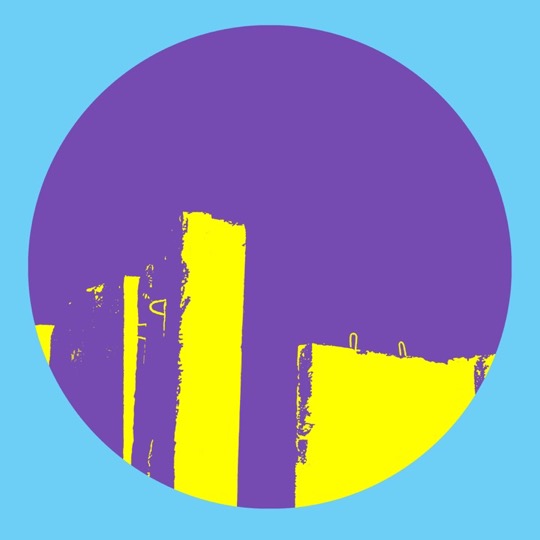
Skype Seminar Baghdad – Berlin with Christina Werner
Skype Seminar with Christina Werner, 3.11.2018, 16-18.00 h (Baghdad)
Individual work presentation by the participants and critiques.
Work presentation by Atef Al Jaffal
Participants:
Ahmed Hussein Ali, Ahmed Al Saad, Tabarek Al Atrakchi, Akram Assam, Ameen Mokdad, Ammar Hussein, Atef Al Jaffal, Hussam Mohammed, Hussain Muttar, Israa Ali, Loay Al Hadhary, Mohammed Alwash, Mohammed Kazratch, Muhaned Taha, Muna Al Jaffal, Osama Zaid Massoud, Zaid Saad.
Documentation: Mounir Salah
Translator: Amal Ibrahim
Hosted by TARKIB Baghdad Contemporary Arts Institute
Special thanks to Hella Mewis
–
This event is part of a workshop series „Arts Seminar in Baghdad“, conceived and organised by the Goethe-Institut Irak, in collaboration with the Institut für Raumexperimente (Institut for Spatial Experiments), Berlin and hosted by TARKIB Baghdad Contemporary Arts Institute in BAIT TARKIB.
Skype Seminar with Christina Werner, 22.9.2018, 16-18.00 h (Baghdad)
Individual work presentation by the participants and critiques.
Work presentation by Atef Al Jaffal
Participants:
Ahmed Hussein Ali, Ahmed Al Saad, Tabarek Al Atrakchi, Akram Assam, Ameen Mokdad, Ammar Hussein, Atef Al Jaffal, Hussam Mohammed, Hussain Muttar, Israa Ali, Loay Al Hadhary, Mohammed Alwash, Mohammed Kazratch, Muhaned Taha, Muna Al Jaffal, Osama Zaid Massoud, Zaid Saad.
Documentation: Mounir Salah
Translator: Amal Ibrahim
Hosted by TARKIB Baghdad Contemporary Arts Institute
Special thanks to Hella Mewis
–
This event is part of a workshop series „Arts Seminar in Baghdad“, conceived and organised by the Goethe-Institut Irak, in collaboration with the Institut für Raumexperimente (Institut for Spatial Experiments), Berlin and hosted by TARKIB Baghdad Contemporary Arts Institute in BAIT TARKIB.

Skype Seminar Baghdad – Berlin with Christina Werner
Skype Seminar with Christina Werner, 22.9.2018, 16-18.00 h (Baghdad)
Individual work presentation by the participants and critiques.
Work presentation by Tabarek Al Atrakchi
Participants:
Ahmed Hussein Ali, Ahmed Al Saad, Tabarek Al Atrakchi, Akram Assam, Ameen Mokdad, Ammar Hussein, Atef Al Jaffal, Hussam Mohammed, Hussain Muttar, Israa Ali, Loay Al Hadhary, Mohammed Alwash, Mohammed Kazratch, Muhaned Taha, Muna Al Jaffal, Osama Zaid Massoud, Zaid Saad.
Documentation: Mounir Salah
Translator: Amal Ibrahim
Hosted by TARKIB Baghdad Contemporary Arts Institute
Special thanks to Hella Mewis
–
Photos by Ahmed Al Saad.
–
This event is part of a workshop series „Arts Seminar in Baghdad“, conceived and organised by the Goethe-Institut Irak, in collaboration with the Institut für Raumexperimente (Institut for Spatial Experiments), Berlin and hosted by TARKIB Baghdad Contemporary Arts Institute in BAIT TARKIB.
Skype Seminar with Christina Werner, 22.9.2018, 16-18.00 h (Baghdad)
Individual work presentation by the participants and critiques.
Work presentation by Tabarek Al Atrakchi
Participants:
Ahmed Hussein Ali, Ahmed Al Saad, Tabarek Al Atrakchi, Akram Assam, Ameen Mokdad, Ammar Hussein, Atef Al Jaffal, Hussam Mohammed, Hussain Muttar, Israa Ali, Loay Al Hadhary, Mohammed Alwash, Mohammed Kazratch, Muhaned Taha, Muna Al Jaffal, Osama Zaid Massoud, Zaid Saad.
Documentation: Mounir Salah
Translator: Amal Ibrahim
Hosted by TARKIB Baghdad Contemporary Arts Institute
Special thanks to Hella Mewis
–
Photos by Ahmed Al Saad.
–
This event is part of a workshop series „Arts Seminar in Baghdad“, conceived and organised by the Goethe-Institut Irak, in collaboration with the Institut für Raumexperimente (Institut for Spatial Experiments), Berlin and hosted by TARKIB Baghdad Contemporary Arts Institute in BAIT TARKIB.
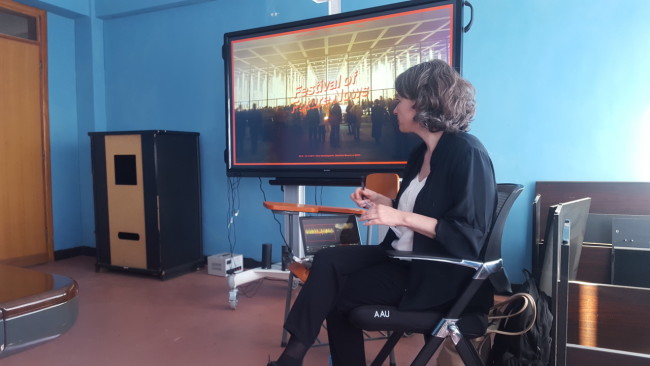
Festival of Future Nows – Workshop Addis
Workshop with master students of the Alle School of Fine Arts and Design, Addis Ababawith Christina Werner together with Robel Temesgen and Kibrom Gebremedhin
Presentation of the Festival of Future Nows as a specific exbibition format. Site visit in order to establish the idea for a potential festival in Addis Ababa, followed by festival proposals by the participating students and group discussions.
–
Workshop with master students of the Alle School of Fine Arts and Design, Addis Ababawith Christina Werner together with Robel Temesgen and Kibrom Gebremedhin
Presentation of the Festival of Future Nows as a specific exbibition format. Site visit in order to establish the idea for a potential festival in Addis Ababa, followed by festival proposals by the participating students and group discussions.
–
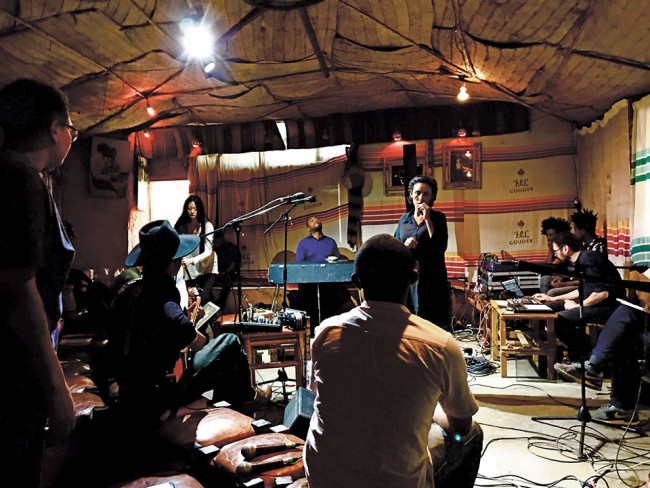
The Rehearsal: Poetry Jazz in Addis Ababa. An Essay by Eric Ellingsen
Inside the Fendika Cultural Center that houses the artists’ rehearsal space. Photo: Eric Ellingsen
The Rehearsal: Poetry Jazz in Addis AbabaEssay by Eric Ellingsen
“Poetry is not a form, but rather a result.” – Amiri Baraka
In front of an average crowd of about 1,500 people, a group of poets and musicians perform in Ethiopia. Combining Wax and Gold poetry, music, and dance, a group known as Tobiya Poetry-Jazz acts as political ambassadors telling Ethiopia’s stories. The story behind the scenes, though, is a compelling one.
The date is March 24, 2018. Addis Ababa is in its second state of emergency. The new and current prime minister of Ethiopia, Abiy Ahmed Ali, will be appointed nine days from now, though nobody now knows who will be appointed or the day the appointment will occur.
During this same spring, a group of German, US, and Ethiopian musicians, poets, artists, and curators met in Addis Ababa for the fifth edition of Poetry-Jazz. Poetry-jazz has become a form of art practiced by different groups in Addis Ababa. For the last five years, our semirotating group of artists, Poetry-Jazz, has been supported by the TURN Fund of the German Federal Cultural Foundation. These gatherings materialize as public performances, platforms, and publications reflecting the artists’ role as political ambassadors. We are meeting for the fifth time in six years in a kind of creative hopscotch, traveling between Berlin and Addis Ababa. Together, we instigate a semi-ancient form of Ethiopian poetry called Wax and Gold. This time we all agree that the gold, usually hidden in the wax, is to be on the outside of what we make together. We want all gold, heavy things, heaviness itself, something solid that melts, like some heavy metals, at the temperature of the hand. We seek the gold through a form known as poetry-jazz, which combines music and poetry. Songs in Ethiopia are stories, physical spaces where history is continually approached, negotiated, tuned, and re-turned to. If poetry resists the intelligence almost successfully, as Wallace Stevens says, then in poetry-jazz rehearsals, we seek the almost more than the absolutely there, the almost more than the already there waiting-for-you-to-arrive. And when the poets don’t know where to go next, the musicians go there. (…)
Read full article The Rehearsal: Poetry-Jazz in Addis Ababa by Eric Ellingsen on World Literature Today.
Read Tales of Silence: A Poem in Three Language by Mihret Kebede translated by Nebiy Mekonnen, Eric Ellingsen and Rike Scheffler on World Literature Today here.
Read A Sound Flag in Six Colors by Eric Ellingsen and Mihret Kebede on World Literature Today here.
Read Transformations: A Poem Refracted through Three Languages by Cia Rinne and Nebiy Mekonnen on World Literature Today here.
The front entrance to Fendika blends into the street-side storefronts. Photo: Eric Ellingsen
–
The essay reflects on the poetry series “Poetry Jazz: Wax and Honey, I’m Home” by the Institut für Raumexperimente, Berlin; in cooperation with the Akademie der Künste, Berlin; in dialogue with Tobiya Poetic Jazz, Addis Ababa; choreographed by Christina Werner; supported by the Studio Olafur Eliasson, Berlin; Graham Foundation for Advanced Studies in the Fine Arts, Chicago; Co-financing Fund of the Senate Department for Culture and Europe, Berlin
Funded by the TURN Fund of the German Federal Cultural Foundation.
Inside the Fendika Cultural Center that houses the artists’ rehearsal space. Photo: Eric Ellingsen
The Rehearsal: Poetry Jazz in Addis AbabaEssay by Eric Ellingsen
“Poetry is not a form, but rather a result.” – Amiri Baraka
In front of an average crowd of about 1,500 people, a group of poets and musicians perform in Ethiopia. Combining Wax and Gold poetry, music, and dance, a group known as Tobiya Poetry-Jazz acts as political ambassadors telling Ethiopia’s stories. The story behind the scenes, though, is a compelling one.
The date is March 24, 2018. Addis Ababa is in its second state of emergency. The new and current prime minister of Ethiopia, Abiy Ahmed Ali, will be appointed nine days from now, though nobody now knows who will be appointed or the day the appointment will occur.
During this same spring, a group of German, US, and Ethiopian musicians, poets, artists, and curators met in Addis Ababa for the fifth edition of Poetry-Jazz. Poetry-jazz has become a form of art practiced by different groups in Addis Ababa. For the last five years, our semirotating group of artists, Poetry-Jazz, has been supported by the TURN Fund of the German Federal Cultural Foundation. These gatherings materialize as public performances, platforms, and publications reflecting the artists’ role as political ambassadors. We are meeting for the fifth time in six years in a kind of creative hopscotch, traveling between Berlin and Addis Ababa. Together, we instigate a semi-ancient form of Ethiopian poetry called Wax and Gold. This time we all agree that the gold, usually hidden in the wax, is to be on the outside of what we make together. We want all gold, heavy things, heaviness itself, something solid that melts, like some heavy metals, at the temperature of the hand. We seek the gold through a form known as poetry-jazz, which combines music and poetry. Songs in Ethiopia are stories, physical spaces where history is continually approached, negotiated, tuned, and re-turned to. If poetry resists the intelligence almost successfully, as Wallace Stevens says, then in poetry-jazz rehearsals, we seek the almost more than the absolutely there, the almost more than the already there waiting-for-you-to-arrive. And when the poets don’t know where to go next, the musicians go there. (…)
Read full article The Rehearsal: Poetry-Jazz in Addis Ababa by Eric Ellingsen on World Literature Today.
Read Tales of Silence: A Poem in Three Language by Mihret Kebede translated by Nebiy Mekonnen, Eric Ellingsen and Rike Scheffler on World Literature Today here.
Read A Sound Flag in Six Colors by Eric Ellingsen and Mihret Kebede on World Literature Today here.
Read Transformations: A Poem Refracted through Three Languages by Cia Rinne and Nebiy Mekonnen on World Literature Today here.
The front entrance to Fendika blends into the street-side storefronts. Photo: Eric Ellingsen
–
The essay reflects on poetry series “Poetry Jazz: Wax and Honey, I’m Home” by the Institut für Raumexperimente, Berlin; in cooperation with the Akademie der Künste, Berlin; in dialogue with Tobiya Poetic Jazz, Addis Ababa; choreographed by Christina Werner; supported by the Studio Olafur Eliasson, Berlin; Graham Foundation for Advanced Studies in the Fine Arts, Chicago; Co-financing Fund of the Senate Department for Culture and Europe, Berlin
Funded by the TURN Fund of the German Federal Cultural Foundation.

Skype Seminar Baghdad – Berlin with Vlado Velko and Christina Werner
Art & OrderSkype Seminar with Vlado Velko and Christina Werner, 1.9.2018, 16-19.00 h (Baghdad)
Presentation by Vlado Velko
Work presentation by Zaid Saad
Work presentation by Ahmed Al Saad
Work presentation by Hussein Motar
Special guest Karim Wasfi. Photo: Hella Mewis
Participants:
Ahmed Hussein Ali, Ahmed Al Saad, Tabarek Al Atrakchi, Akram Assam, Ameen Mokdad, Ammar Hussein, Atef Al Jaffal, Hussam Mohammed, Hussain Muttar, Israa Ali, Loay Al Hadhary, Mohammed Alwash, Mohammed Kazratch, Muhaned Taha, Muna Al Jaffal, Osama Zaid Massoud, Zaid Saad.
Documentation: Mounir Salah
Translator: Amal Ibrahim
Hosted by TARKIB Baghdad Contemporary Arts Institute
Special thanks to Hella Mewis
–
Photos by Christina Werner, unless otherwise noted.
–
This event is part of a workshop series „Arts Seminar in Baghdad“, conceived and organised by the Goethe-Institut Irak, in collaboration with the Institut für Raumexperimente (Institut for Spatial Experiments), Berlin and hosted by TARKIB Baghdad Contemporary Arts Institute in BAIT TARKIB.
Art & OrderSkype Seminar with Vlado Velko and Christina Werner, 1.9.2018, 16-19.00 h (Baghdad)
Presentation by Vlado Velko
Work presentation by Zaid Saad
Work presentation by Ahmed Al Saad
Work presentation by Hussein Motar
Special guest Karim Wasfi. Photo: Hella Mewis
Participants:
Ahmed Hussein Ali, Ahmed Al Saad, Tabarek Al Atrakchi, Akram Assam, Ameen Mokdad, Ammar Hussein, Atef Al Jaffal, Hussam Mohammed, Hussain Muttar, Israa Ali, Loay Al Hadhary, Mohammed Alwash, Mohammed Kazratch, Muhaned Taha, Muna Al Jaffal, Osama Zaid Massoud, Zaid Saad.
Documentation: Mounir Salah
Translator: Amal Ibrahim
Hosted by TARKIB Baghdad Contemporary Arts Institute
Special thanks to Hella Mewis
–
Photos by Christina Werner, unless otherwise noted.
–
This event is part of a workshop series „Arts Seminar in Baghdad“, conceived and organised by the Goethe-Institut Irak, in collaboration with the Institut für Raumexperimente (Institut for Spatial Experiments), Berlin and hosted by TARKIB Baghdad Contemporary Arts Institute in BAIT TARKIB.
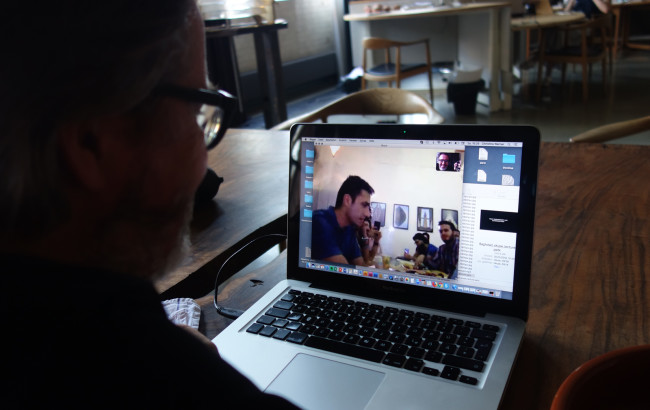
Skype Seminar Baghdad – Berlin with Olafur Eliasson
Your engagement has consequencesSkype Seminar with Olafur Eliasson and Christina Werner, 4.8.2018, 16-18.00 h (Baghdad)
photo by Christina Werner
Participants:
Ahmed Hussein Ali, Ahmed Al Saad, Tabarek Al Atrakchi, Akram Assam, Ameen Mokdad, Ammar Hussein, Atef Al Jaffal, Hussam Mohammed, Hussain Muttar, Israa Ali, Loay Al Hadhary, Mohammed Alwash, Mohammed Kazratch, Muhaned Taha, Muna Al Jaffal, Osama Zaid Massoud, Zaid Saad.
Documentation: Mounir Salah
Translator: Amal Ibrahim
Hosted by TARKIB Baghdad Contemporary Arts Institute
Special thanks to Hella Mewis
–
Photos by Hella Mewis, unless otherwise noted.
–
This event is part of a workshop series „Arts Seminar in Baghdad“, conceived and organised by the Goethe-Institut Irak, in collaboration with the Institut für Raumexperimente (Institut for Spatial Experiments), Berlin and hosted by TARKIB Baghdad Contemporary Arts Institute in BAIT TARKIB.
Your engagement has consequencesSkype Seminar with Olafur Eliasson and Christina Werner, 4.8.2018, 16-18.00 h (Baghdad)
photo by Christina Werner
Participants:
Ahmed Hussein Ali, Ahmed Al Saad, Tabarek Al Atrakchi, Akram Assam, Ameen Mokdad, Ammar Hussein, Atef Al Jaffal, Hussam Mohammed, Hussain Muttar, Israa Ali, Loay Al Hadhary, Mohammed Alwash, Mohammed Kazratch, Muhaned Taha, Muna Al Jaffal, Osama Zaid Massoud, Zaid Saad.
Documentation: Mounir Salah
Translator: Amal Ibrahim
Hosted by TARKIB Baghdad Contemporary Arts Institute
Special thanks to Hella Mewis
–
Photos by Hella Mewis, unless otherwise noted.
–
This event is part of a workshop series „Arts Seminar in Baghdad“, conceived and organised by the Goethe-Institut Irak, in collaboration with the Institut für Raumexperimente (Institut for Spatial Experiments), Berlin and hosted by TARKIB Baghdad Contemporary Arts Institute in BAIT TARKIB.

Mirror Walk at Bait Tarkib
On occasion of the opening of the exhibition Karrar Al Asadi at Bait Tarkib
Mirror Walk/See Walk on occasion of the opening of the exhibition Karrar Al Asadi at Bait Tarkib. Photos: Photos by Atef Al Jaffal and Zaid Saad.
–
This event is part of a workshop series „Arts Seminar in Baghdad“, conceived and organised by the Goethe-Institut Irak, in collaboration with the Institut für Raumexperimente (Institut for Spatial Experiments), Berlin and hosted by TARKIB Baghdad Contemporary Arts Institute in BAIT TARKIB.
Participants:
Ahmed Hussein Ali, Ahmed Al Saad, Tabarek Al Atrakchi, Akram Assam, Ameen Mokdad, Ammar Hussein, Atef Al Jaffal, Hussam Mohammed, Hussain Muttar, Israa Ali, Loay Al Hadhary, Mohammed Alwash, Mohammed Kazratch, Muhaned Taha, Muna Al Jaffal, Osama Zaid Massoud, Zaid Saad.
Documentation: Mounir Salah
Translator: Amal Ibrahim
Hosted by TARKIB Baghdad Contemporary Arts Institute
Special thanks to Hella Mewis
On occasion of the opening of the exhibition Karrar Al Asadi at Bait Tarkib
Mirror Walk/See Walk on occasion of the opening of the exhibition Karrar Al Asadi at Bait Tarkib. Photos: Photos by Atef Al Jaffal and Zaid Saad.
–
This event is part of a workshop series „Arts Seminar in Baghdad“, conceived and organised by the Goethe-Institut Irak, in collaboration with the Institut für Raumexperimente (Institut for Spatial Experiments), Berlin and hosted by TARKIB Baghdad Contemporary Arts Institute in BAIT TARKIB.
Participants:
Ahmed Hussein Ali, Ahmed Al Saad, Tabarek Al Atrakchi, Akram Assam, Ameen Mokdad, Ammar Hussein, Atef Al Jaffal, Hussam Mohammed, Hussain Muttar, Israa Ali, Loay Al Hadhary, Mohammed Alwash, Mohammed Kazratch, Muhaned Taha, Muna Al Jaffal, Osama Zaid Massoud, Zaid Saad.
Documentation: Mounir Salah
Translator: Amal Ibrahim
Hosted by TARKIB Baghdad Contemporary Arts Institute
Special thanks to Hella Mewis
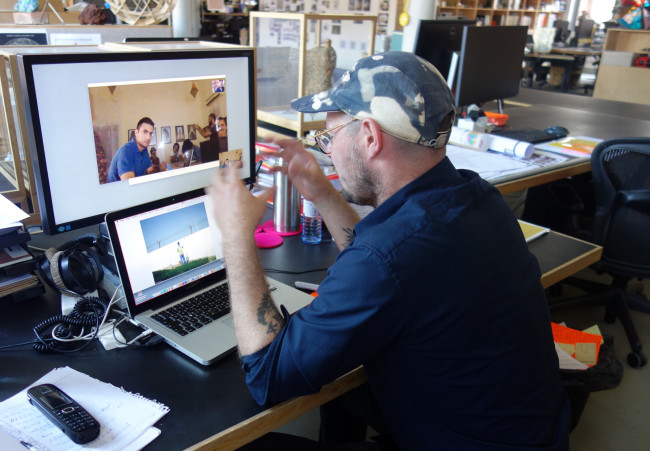
Skype Seminar Baghdad – Berlin with Raul Walch
Skype Seminar with Raul Walch and Christina Werner, 21.7.2018, 16-18.30 h (Baghdad)
Participants:
Ahmed Hussein Ali, Ahmed Al Saad, Tabarek Al Atrakchi, Akram Assam, Ameen Mokdad, Ammar Hussein, Atef Al Jaffal, Hussam Mohammed, Hussain Muttar, Israa Ali, Loay Al Hadhary, Mohammed Alwash, Mohammed Kazratch, Muhaned Taha, Muna Al Jaffal, Osama Zaid Massoud, Zaid Saad.
Documentation: Mounir Salah
Translator: Amal Ibrahim
Hosted by TARKIB Baghdad Contemporary Arts Institute
Special thanks to Hella Mewis
–
Photos by Christina Werner, unless otherwise noted.
–
This event is part of a workshop series „Arts Seminar in Baghdad“, conceived and organised by the Goethe-Institut Irak, in collaboration with the Institut für Raumexperimente (Institut for Spatial Experiments), Berlin and hosted by TARKIB Baghdad Contemporary Arts Institute in BAIT TARKIB.
Skype Seminar with Raul Walch and Christina Werner, 21.7.2018, 16-18.30 h (Baghdad)
Participants:
Ahmed Hussein Ali, Ahmed Al Saad, Tabarek Al Atrakchi, Akram Assam, Ameen Mokdad, Ammar Hussein, Atef Al Jaffal, Hussam Mohammed, Hussain Muttar, Israa Ali, Loay Al Hadhary, Mohammed Alwash, Mohammed Kazratch, Muhaned Taha, Muna Al Jaffal, Osama Zaid Massoud, Zaid Saad.
Documentation: Mounir Salah
Translator: Amal Ibrahim
Hosted by TARKIB Baghdad Contemporary Arts Institute
Special thanks to Hella Mewis
–
Photos by Christina Werner, unless otherwise noted.
–
This event is part of a workshop series „Arts Seminar in Baghdad“, conceived and organised by the Goethe-Institut Irak, in collaboration with the Institut für Raumexperimente (Institut for Spatial Experiments), Berlin and hosted by TARKIB Baghdad Contemporary Arts Institute in BAIT TARKIB.

Kick-Off Workshop – Karada Introduction
Kick-Off Workshop in Baghdad with Christina Werner
Participants:
Ahmed Hussein Ali, Ahmed Al Saad, Tabarek Al Atrakchi, Akram Assam, Ameen Mokdad, Ammar Hussein, Atef Al Jaffal, Hussam Mohammed, Hussain Muttar, Israa Ali, Loay Al Hadhary, Mohammed Alwash, Mohammed Kazratch, Muhaned Taha, Muna Al Jaffal, Osama Zaid Massoud, Zaid Saad.
Documentation: Mounir Salah
Translator: Amal Ibrahim
Hosted by TARKIB Baghdad Contemporary Arts Institute
Special thanks to Hella Mewis
–
I love Karada
Karada: An introduction to the neighborhood.
Tahrir Square
On Omar Bin Yasir Street
Murals and walls
–
Photos by Christina Werner, unless otherwise noted.
–
This event is part of a workshop series „Arts Seminar in Baghdad“, conceived and organised by the Goethe-Institut Irak, in collaboration with the Institut für Raumexperimente (Institut for Spatial Experiments), Berlin and hosted by TARKIB Baghdad Contemporary Arts Institute in BAIT TARKIB.
Kick-Off Workshop in Baghdad with Christina Werner
Participants:
Ahmed Hussein Ali, Ahmed Al Saad, Tabarek Al Atrakchi, Akram Assam, Ameen Mokdad, Ammar Hussein, Atef Al Jaffal, Hussam Mohammed, Hussain Muttar, Israa Ali, Loay Al Hadhary, Mohammed Alwash, Mohammed Kazratch, Muhaned Taha, Muna Al Jaffal, Osama Zaid Massoud, Zaid Saad.
Documentation: Mounir Salah
Translator: Amal Ibrahim
Hosted by TARKIB Baghdad Contemporary Arts Institute
Special thanks to Hella Mewis
–
I love Karada
Karada: An introduction to the neighborhood.
Tahrir Square
On Omar Bin Yasir Street
Murals and walls
–
Photos by Christina Werner, unless otherwise noted.
–
This event is part of a workshop series „Arts Seminar in Baghdad“, conceived and organised by the Goethe-Institut Irak, in collaboration with the Institut für Raumexperimente (Institut for Spatial Experiments), Berlin and hosted by TARKIB Baghdad Contemporary Arts Institute in BAIT TARKIB.
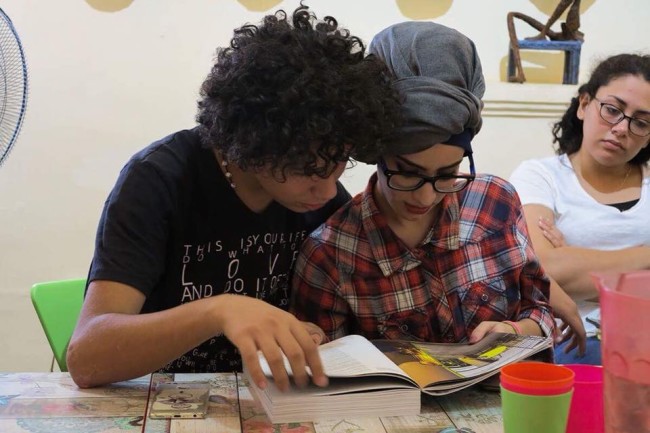
Kick-Off Workshop with Christina Werner – Day 1
Kick-Off Workshop in Baghdad with Christina Werner
Participants:
Ahmed Hussein Ali, Ahmed Al Saad, Tabarek Al Atrakchi, Akram Assam, Ameen Mokdad, Ammar Hussein, Atef Al Jaffal, Hussam Mohammed, Hussain Muttar, Israa Ali, Loay Al Hadhary, Mohammed Alwash, Mohammed Kazratch, Muhaned Taha, Muna Al Jaffal, Osama Zaid Massoud, Zaid Saad.
Documentation: Mounir Salah
Translator: Amal Ibrahim
Hosted by TARKIB Baghdad Contemporary Arts Institute
Special thanks to Hella Mewis
–
Presentation about Institut für Raumexperimente by Christina Werner. Photo: Hella Mewis
One minute experiment. Photo: Hella Mewis
Three minute parachute presentations by all participants. Photo: Hella Mewis
Three minute parachute presentation by Zaid Saad
Three minute parachute presentations by all participants. Photo: Hella Mewis
BAIT TARKIB, short break on the veranda
Meeting old friends: Photo of intervention for BAIT TARKIB by Raul Walch
Meeting old friends: Photo of intervention VERNEINUNG by Fabian Knecht
–
Photos by Christina Werner, unless otherwise noted.
–
This event is part of a workshop series „Arts Seminar in Baghdad“, conceived and organised by the Goethe-Institut Irak, in collaboration with the Institut für Raumexperimente (Institut for Spatial Experiments), Berlin and hosted by TARKIB Baghdad Contemporary Arts Institute in BAIT TARKIB.
Kick-Off Workshop in Baghdad with Christina Werner
Participants:
Ahmed Hussein Ali, Ahmed Al Saad, Tabarek Al Atrakchi, Akram Assam, Ameen Mokdad, Ammar Hussein, Atef Al Jaffal, Hussam Mohammed, Hussain Muttar, Israa Ali, Loay Al Hadhary, Mohammed Alwash, Mohammed Kazratch, Muhaned Taha, Muna Al Jaffal, Osama Zaid Massoud, Zaid Saad.
Documentation: Mounir Salah
Translator: Amal Ibrahim
Hosted by TARKIB Baghdad Contemporary Arts Institute
Special thanks to Hella Mewis
–
Presentation about Institut für Raumexperimente by Christina Werner. Photo: Hella Mewis
One minute experiment. Photo: Hella Mewis
Three minute parachute presentations by all participants. Photo: Hella Mewis
Three minute parachute presentation by Zaid Saad
Three minute parachute presentations by all participants. Photo: Hella Mewis
BAIT TARKIB, short break on the veranda
Meeting old friends: Photo of intervention for BAIT TARKIB by Raul Walch
Meeting old friends: Photo of intervention VERNEINUNG by Fabian Knecht
–
Photos by Christina Werner, unless otherwise noted.
–
This event is part of a workshop series „Arts Seminar in Baghdad“, conceived and organised by the Goethe-Institut Irak, in collaboration with the Institut für Raumexperimente (Institut for Spatial Experiments), Berlin and hosted by TARKIB Baghdad Contemporary Arts Institute in BAIT TARKIB.
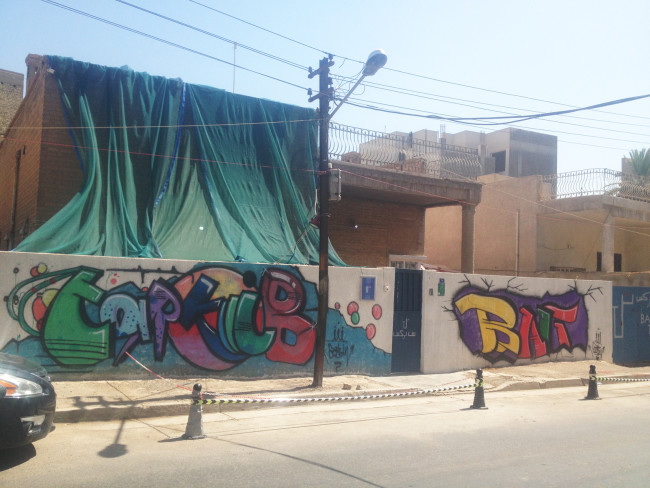
Arts Seminar in Baghdad, 2018
Arts Seminar in Baghdad - Workshop SeriesAn event of the Goethe-Institut Irak in BAIT TARKIB, Baghdad in collaboration with Institut für Raumexperimente, Berlin
Participants:
Ahmed Hussein Ali, Ahmed Al Saad, Tabarek Al Atrakchi, Akram Assam, Ameen Mokdad, Ammar Hussein, Atef Al Jaffal, Hussam Mohammed, Hussain Muttar, Israa Ali, Loay Al Hadhary, Mohammed Alwash, Mohammed Kazratch, Muhaned Taha, Muna Al Jaffal, Osama Zaid Massoud, Zaid Saad.
–
Arts Seminar in Baghdad is a workshop series that prepares the participants to engage with art works in the urban space of Baghdad. The seminar will start with a kick-off session – an intense 3-day workshop at Tarkib –, followed by regular skype sessions and will result in an exhibition, that is also a guided tour of the city, titled Baghdad Walk.
Baghdad Walk is a group exhibition by emerging Iraqi artists presented in the public space and in different locations in Karada, Baghdad. The walk starts at Iraqi Independent Film Centre, leads along Al Rasheed Street to Midan Square, connects Tayeran Square, Tahrir Square and Kahramana Square, spreads along the Abu Nawas riverside and meanders through Karada neighborhood, featuring time-based works and interventions. Baghdad Walk is an exhibition and a narrative tour of the city. The participating artists connect their works with the specific locations, introducing background information on site. Manifold stories about the city of Baghdad are told and retold anew through the artists’ perspectives and the encounters they create.
–
Documentation: Mounir Salah
Translator: Amal Ibrahim
Hosted by TARKIB Baghdad Contemporary Arts Institute
Special thanks to Hella Mewis
The series is choreographed by Christina Werner
–
This event is part of a workshop series „Arts Seminar in Baghdad“, conceived and organised by the Goethe-Institut Irak, in collaboration with the Institut für Raumexperimente (Institut for Spatial Experiments), Berlin and hosted by TARKIB Baghdad Contemporary Arts Institute in BAIT TARKIB.
Arts Seminar in Baghdad - Workshop SeriesAn event of the Goethe-Institut Irak in BAIT TARKIB, Baghdad in collaboration with Institut für Raumexperimente, Berlin
Participants:
Ahmed Hussein Ali, Ahmed Al Saad, Tabarek Al Atrakchi, Akram Assam, Ameen Mokdad, Ammar Hussein, Atef Al Jaffal, Hussam Mohammed, Hussain Muttar, Israa Ali, Loay Al Hadhary, Mohammed Alwash, Mohammed Kazratch, Muhaned Taha, Muna Al Jaffal, Osama Zaid Massoud, Zaid Saad.
–
Arts Seminar in Baghdad is a workshop series that prepares the participants to engage with art works in the urban space of Baghdad. The seminar will start with a kick-off session – an intense 3-day workshop at Tarkib –, followed by regular skype sessions and will result in an exhibition, that is also a guided tour of the city, titled Baghdad Walk.
Baghdad Walk is a group exhibition by emerging Iraqi artists presented in the public space and in different locations in Karada, Baghdad. The walk starts at Iraqi Independent Film Centre, leads along Al Rasheed Street to Midan Square, connects Tayeran Square, Tahrir Square and Kahramana Square, spreads along the Abu Nawas riverside and meanders through Karada neighborhood, featuring time-based works and interventions. Baghdad Walk is an exhibition and a narrative tour of the city. The participating artists connect their works with the specific locations, introducing background information on site. Manifold stories about the city of Baghdad are told and retold anew through the artists’ perspectives and the encounters they create.
–
Documentation: Mounir Salah
Translator: Amal Ibrahim
Hosted by TARKIB Baghdad Contemporary Arts Institute
Special thanks to Hella Mewis
The series is choreographed by Christina Werner
–
This event is part of a workshop series „Arts Seminar in Baghdad“, conceived and organised by the Goethe-Institut Irak, in collaboration with the Institut für Raumexperimente (Institut for Spatial Experiments), Berlin and hosted by TARKIB Baghdad Contemporary Arts Institute in BAIT TARKIB.
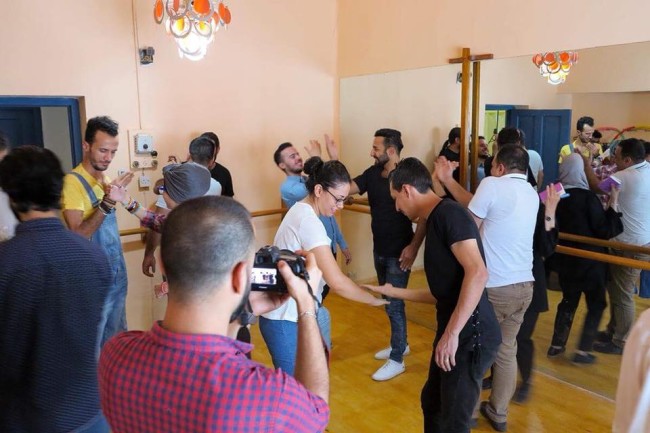
Kick-Off Workshop with Christina Werner – Day 2
Kick-Off Workshop in Baghdad with Christina Werner
Participants:
Ahmed Hussein Ali, Ahmed Al Saad, Tabarek Al Atrakchi, Akram Assam, Ameen Mokdad, Ammar Hussein, Atef Al Jaffal, Hussam Mohammed, Hussain Muttar, Israa Ali, Loay Al Hadhary, Mohammed Alwash, Mohammed Kazratch, Muhaned Taha, Muna Al Jaffal, Osama Zaid Massoud, Zaid Saad.
Documentation: Mounir Salah
Translator: Amal Ibrahim
Hosted by TARKIB Baghdad Contemporary Arts Institute
Special thanks to Hella Mewis
–
Movement and perception excercises. Photos: Hella Mewis
–
Swarm Walk. Excercises at Abu Nawas Park. Photo: Hella Mewis
Balance Walk (Leaning Duets by Trisha Brown) at Abu Nawas Park. Photo: Hella Mewis
Balance Walk (Leaning Duets by Trisha Brown) on the street at night
–
Site visit to the former theater
Spontaneous concert in the former theater
–
Presentation about Studio Olafur Eliasson and Festival of Future Nows by Christina Werner. Photo: Hella Mewis
–
Photos by Christina Werner, unless otherwise noted.
–
This event is part of a workshop series „Arts Seminar in Baghdad“, conceived and organised by the Goethe-Institut Irak, in collaboration with the Institut für Raumexperimente (Institut for Spatial Experiments), Berlin and hosted by TARKIB Baghdad Contemporary Arts Institute in BAIT TARKIB.
Kick-Off Workshop in Baghdad with Christina Werner
Participants:
Ahmed Hussein Ali, Ahmed Al Saad, Tabarek Al Atrakchi, Akram Assam, Ameen Mokdad, Ammar Hussein, Atef Al Jaffal, Hussam Mohammed, Hussain Muttar, Israa Ali, Loay Al Hadhary, Mohammed Alwash, Mohammed Kazratch, Muhaned Taha, Muna Al Jaffal, Osama Zaid Massoud, Zaid Saad.
Documentation: Mounir Salah
Translator: Amal Ibrahim
Hosted by TARKIB Baghdad Contemporary Arts Institute
Special thanks to Hella Mewis
–
Movement and perception excercises. Photos: Hella Mewis
–
Swarm Walk. Excercises at Abu Nawas Park. Photo: Hella Mewis
Balance Walk (Leaning Duets by Trisha Brown) at Abu Nawas Park. Photo: Hella Mewis
Balance Walk (Leaning Duets by Trisha Brown) on the street at night
–
Site visit to the former theater
Spontaneous concert in the former theater
–
Presentation about Studio Olafur Eliasson and Festival of Future Nows by Christina Werner. Photo: Hella Mewis
–
Photos by Christina Werner, unless otherwise noted.
–
This event is part of a workshop series „Arts Seminar in Baghdad“, conceived and organised by the Goethe-Institut Irak, in collaboration with the Institut für Raumexperimente (Institut for Spatial Experiments), Berlin and hosted by TARKIB Baghdad Contemporary Arts Institute in BAIT TARKIB.
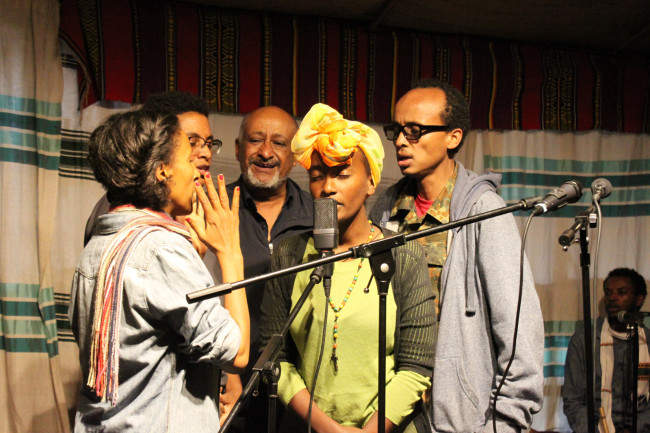
Poetry Jazz: Solid Gold Workshop, Addis Ababa
Poetry Jazz: Solid Gold WorkshopAddis Ababa
With Frezer Admasu (poet, Addis Ababa), Eric Ellingsen (poet, St. Louis), Clara Jo (camera, Berlin), Mihret Kebede (poet, Addis Ababa), Robert Lippok (electronic music, Berlin), Nebiy Mekonnen (poet, Addis Ababa), Neo Muyanga (guitar, vocals; Cape Town), Jorga Mesfin (saxophon, piano; Addis Ababa), Tasew Wendem Mose (washint flute, vocals; Addis Ababa), Solomon Sahle (poet, Addis Ababa), Rike Scheffler (poet, Berlin), Rediet Terefe (poet, Addis Ababa), Misrak Terefe (poet, Addis Ababa), Christina Werner (coordination, Berlin), Meheret Zelleke (translator, Addis Ababa).
Photos: Christina Werner
Participants translate poems from Amharic into English, German and vice versa. These direct exchanges enabled the intensive discussion of stylistic contexts, cultural connotations, poetic traditions and compositional processes. The poets take direct part in the translation of their own poems with emphasis on speech and intonation in order to hear his/her work in the source language and target language. In further processes texts are developed into resonant poems and thereby transmitted into other historical or geopolitical contexts and, through conversation, newly developed in another language as a response or reaction. Rhythm, intonation, music performance and improvisation are interwoven through collaborative working processes. Musically, the experimentations manifest through traditional Ethiopian pentatonic music, jazz influences and modern electronic music elements.
–
Thank you to Goethe Institut Addis Ababa and Fendika Cultural Center for hosting the workshop.
–
This event is part of the poetry series “Poetry Jazz: Wax and Honey, I’m Home” by the Institut für Raumexperimente, Berlin; in cooperation with the Akademie der Künste, Berlin; in dialogue with Tobiya Poetic Jazz, Addis Ababa; choreographed by Christina Werner; supported by the Studio Olafur Eliasson, Berlin; Graham Foundation for Advanced Studies in the Fine Arts, Chicago; Co-financing Fund of the Senate Department for Culture and Europe, Berlin
Funded by the TURN Fund of the German Federal Cultural Foundation.
Poetry Jazz: Solid Gold WorkshopAddis Ababa
With Frezer Admasu (poet, Addis Ababa), Eric Ellingsen (poet, St. Louis), Clara Jo (camera, Berlin), Mihret Kebede (poet, Addis Ababa), Robert Lippok (electronic music, Berlin), Nebiy Mekonnen (poet, Addis Ababa), Neo Muyanga (guitar, vocals; Cape Town), Jorga Mesfin (saxophon, piano; Addis Ababa), Tasew Wendem Mose (washint flute, vocals; Addis Ababa), Solomon Sahle (poet, Addis Ababa), Rike Scheffler (poet, Berlin), Rediet Terefe (poet, Addis Ababa), Misrak Terefe (poet, Addis Ababa), Christina Werner (coordination, Berlin), Meheret Zelleke (translator, Addis Ababa).
Photos: Christina Werner
Participants translate poems from Amharic into English, German and vice versa. These direct exchanges enabled the intensive discussion of stylistic contexts, cultural connotations, poetic traditions and compositional processes. The poets take direct part in the translation of their own poems with emphasis on speech and intonation in order to hear his/her work in the source language and target language. In further processes texts are developed into resonant poems and thereby transmitted into other historical or geopolitical contexts and, through conversation, newly developed in another language as a response or reaction. Rhythm, intonation, music performance and improvisation are interwoven through collaborative working processes. Musically, the experimentations manifest through traditional Ethiopian pentatonic music, jazz influences and modern electronic music elements.
–
Thank you to Goethe Institut Addis Ababa and Fendika Cultural Center for hosting the workshop.
–
This event is part of the poetry series “Poetry Jazz: Wax and Honey, I’m Home” by the Institut für Raumexperimente, Berlin; in cooperation with the Akademie der Künste, Berlin; in dialogue with Tobiya Poetic Jazz, Addis Ababa; choreographed by Christina Werner; supported by the Studio Olafur Eliasson, Berlin; Graham Foundation for Advanced Studies in the Fine Arts, Chicago; Co-financing Fund of the Senate Department for Culture and Europe, Berlin
Funded by the TURN Fund of the German Federal Cultural Foundation.
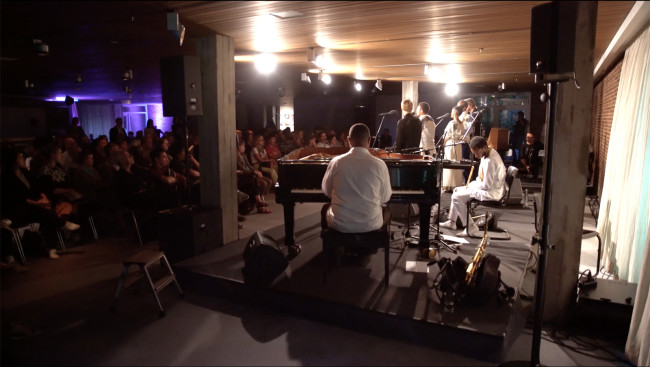
Poetry Jazz: Wax and Gold. A film by Clara Jo
Poetry Jazz: Wax and GoldMaking Of
Premiere
Screening at Ras Hotel, Addis Ababa, 5.30 pm
Poetry Jazz: Wax and Gold (2018) is a short film by Clara Jo, following the workshop and presentation that brought together poets, musicians, artists, and translators from Addis Ababa and Berlin at the Akademie der Künste Berlin in 2017.
Credits
Director, Camera, Edit: Clara Jo; Additional Camera, Edit: Adam Hermansen; Choreographed by Christina Werner. Featuring: Frezer Admasu, Eric Ellingsen, Mihret Kebede, Robert Lippok, Nebiy Mekonnen, Jorga Mesfin, Tasew Wendem Mose, Cia Rinne, Rike Scheffler, Misrak Terefe.
–
This event is part of the poetry series “Poetry Jazz: Wax and Honey, I’m Home” by the Institut für Raumexperimente, Berlin; in cooperation with the Akademie der Künste, Berlin; in dialogue with Tobiya Poetic Jazz, Addis Ababa; choreographed by Christina Werner; supported by the Studio Olafur Eliasson, Berlin; Graham Foundation for Advanced Studies in the Fine Arts, Chicago; Co-financing Fund of the Senate Department for Culture and Europe, Berlin
Funded by the TURN Fund of the German Federal Cultural Foundation.
Poetry Jazz: Wax and GoldMaking Of
Premiere
Screening at Ras Hotel, Addis Ababa, 5.30 pm
Poetry Jazz: Wax and Gold (2018) is a short film by Clara Jo, following the workshop and presentation that brought together poets, musicians, artists, and translators from Addis Ababa and Berlin at the Akademie der Künste Berlin in 2017.
Credits
Director, Camera, Edit: Clara Jo; Additional Camera, Edit: Adam Hermansen; Choreographed by Christina Werner. Featuring: Frezer Admasu, Eric Ellingsen, Mihret Kebede, Robert Lippok, Nebiy Mekonnen, Jorga Mesfin, Tasew Wendem Mose, Cia Rinne, Rike Scheffler, Misrak Terefe.
–
This event is part of the poetry series “Poetry Jazz: Wax and Honey, I’m Home” by the Institut für Raumexperimente, Berlin; in cooperation with the Akademie der Künste, Berlin; in dialogue with Tobiya Poetic Jazz, Addis Ababa; choreographed by Christina Werner; supported by the Studio Olafur Eliasson, Berlin; Graham Foundation for Advanced Studies in the Fine Arts, Chicago; Co-financing Fund of the Senate Department for Culture and Europe, Berlin
Funded by the TURN Fund of the German Federal Cultural Foundation.
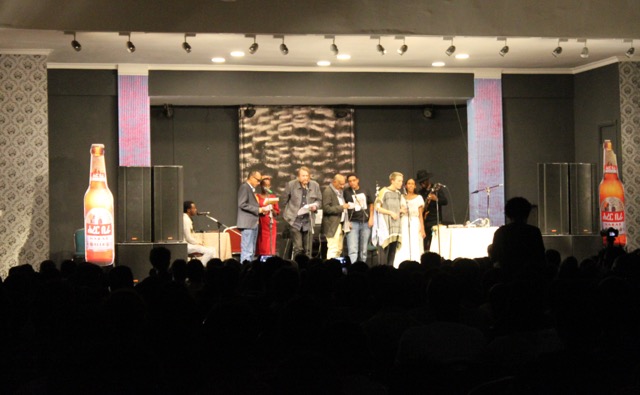
Poetry Jazz – live in Addis Ababa
Poetry Jazz: Solid GoldLive concert in Amharic, English, German
Saturday, 24 March 2018, 5.30 pm
at
Ras Hotel, Addis Ababa
With Frezer Admasu, Eric Ellingsen, Mihret Kebede, Robert Lippok, Nebiy Mekonnen, Neo Muyanga, Jorga Mesfin, Tasew Wendem Mose, Solomon Sahle, Rike Scheffler, Misrak Terefe, and Rediet Terefe
Spoken poetry has a long history in Ethiopia, finding contemporary expression in Poetry Jazz. Based on this popular style of performance poetry, the evening fuses recitation in Amharic, English and German with musical elements that draw connections between traditional Ethiopian pentatonic music, jazz influences and electronic music.
The event is an experimental get-together of acclaimed poets and musicians, joining in an exercise of styles and improvisation. They engage in investigations of the geographical places that are based on a plethora of acoustic sources, ranging from traditional flute playing to the latest urban field recordings. Continual shifts in languages, reiteration, fragmentation, translations and re-translations, as well as changes in metres and rhythms, create awareness of the subtle divergences of meaning that can be attributed to social and cultural influences, while exploring the gains and losses of such unspoken and outspoken interactions.
Photos: #romagger
Photo: Clara Jo
Photos: Christina Werner
Photo #romagger
–
This event is part of the poetry series “Poetry Jazz: Wax and Honey, I’m Home” by the Institut für Raumexperimente, Berlin; in cooperation with the Akademie der Künste, Berlin; in dialogue with Tobiya Poetic Jazz, Addis Ababa; choreographed by Christina Werner; supported by the Studio Olafur Eliasson, Berlin; Graham Foundation for Advanced Studies in the Fine Arts, Chicago; Co-financing Fund of the Senate Department for Culture and Europe, Berlin
Funded by the TURN Fund of the German Federal Cultural Foundation.
–
Poetry Jazz: Solid GoldLive concert in Amharic, English, German
Saturday, 24 March 2018, 5.30 pm
at
Ras Hotel, Addis Ababa
With Frezer Admasu, Eric Ellingsen, Mihret Kebede, Robert Lippok, Nebiy Mekonnen, Neo Muyanga, Jorga Mesfin, Tasew Wendem Mose, Solomon Sahle, Rike Scheffler, Misrak Terefe, and Rediet Terefe
Spoken poetry has a long history in Ethiopia, finding contemporary expression in Poetry Jazz. Based on this popular style of performance poetry, the evening fuses recitation in Amharic, English and German with musical elements that draw connections between traditional Ethiopian pentatonic music, jazz influences and electronic music.
The event is an experimental get-together of acclaimed poets and musicians, joining in an exercise of styles and improvisation. They engage in investigations of the geographical places that are based on a plethora of acoustic sources, ranging from traditional flute playing to the latest urban field recordings. Continual shifts in languages, reiteration, fragmentation, translations and re-translations, as well as changes in metres and rhythms, create awareness of the subtle divergences of meaning that can be attributed to social and cultural influences, while exploring the gains and losses of such unspoken and outspoken interactions.
Photos: #romagger
Photo: Clara Jo
Photos: Christina Werner
Photo #romagger
–
This event is part of the poetry series “Poetry Jazz: Wax and Honey, I’m Home” by the Institut für Raumexperimente, Berlin; in cooperation with the Akademie der Künste, Berlin; in dialogue with Tobiya Poetic Jazz, Addis Ababa; choreographed by Christina Werner; supported by the Studio Olafur Eliasson, Berlin; Graham Foundation for Advanced Studies in the Fine Arts, Chicago; Co-financing Fund of the Senate Department for Culture and Europe, Berlin
Funded by the TURN Fund of the German Federal Cultural Foundation.
–

Poetry Jazz: Wax and Gold
Poetry Jazz: Wax and GoldSaturday, 5 August 2017, 8 pm
Akademie der Künste
Hanseatenweg 10
10557 Berlin
Concert / in Amharic, English, German
Ticket € 5
Contributing artists: Frezer Admasu, Eric Ellingsen, Mihret Kebede, Robert Lippok, Nebiy Mekonnen, Jorga Mesfin, Tasew Wendem Mose, Cia Rinne, Rike Scheffler, Misrak Terefe
“Poetry Jazz” is the name of a particular style of popular performance poetry from Ethiopia that fuses poetry and jazz, recitation and improvisation. The musical elements, rhythms and styles draw connections between traditional Ethiopian pentatonic music and jazz influences. Live events in Addis Ababa reach a wide audience and are broadcasted nationwide over the radio.
Based on a traditional lyrical form referred to as “Wax and Gold”, the poetry is often imbued with coded meanings. The literal and superficial layer of “wax” conceals a core of “gold” with meanings intentionally enshrouded in word games, metaphors and ambiguities. The poetic coding demands an active engagement with a second, unspoken message. Though the lyrical tradition has its roots in the ancient Ge’ez language of the Ethiopian Orthodox Church, it informs secular verse and even everyday Amharic conversation, also being used to address sensitive or controversial issues.
This project series by the Institut für Raumexperimente (Institute for Spatial Experiments) fuses contemporary expressive poetry styles in Amharic, German and English, and combines them with traditional Ethiopian music, jazz influences and electronic music. Continual shifts in languages, metres and rhythms create awareness of the subtle divergences of meaning that can be attributed to social and cultural influences. It is an experimental get-together of poets, musicians and translators, joining in an exercise of styles.
Photo: Maria del Pilar Garcia Ayensa
Sound examples:
Tales of Silence by Mihret Kebede, response by Eric Ellingsen and Rike Scheffler
The Flag by Eric Ellingsen, response by Mihret Kebede
—
Clara Jo’s film A-B-A-B-A : from here to hear was presented during the evening, it follows the participating artists from stage to stage – Volksbühne Berlin (July 2014) to the Alliance Ethio-Française d’Addis-Abeba (February 2015) – and features interviews which reflect on various traditions within contemporary practice.
Director: Clara JoDate: 2016Featuring: Gashahn Abateneh, Eric Ellingsen, Mihret Kebede, Erica Licht, Robert Lippok, Nebiy Mekonnen, Abebaw Melaku, Jorga Mesfin, Ari Benjamin Meyers, Bekele Mekonnen, Rike Scheffler, Misrak Terefe, Christina Werner, Uljana Wolf, The Moseb Traditional Music Band, Addis Ababa.
–
The poetry series is choreographed by Christina Werner.
The evening is connected to the exhibition ‘Uncertain States – Artistic Strategies in States of Emergency’ this project is part of the event series ‘Uncertain States II – Colonial Repercussions’ at the Akademie der Künste, Berlin in 2017/18.
This event is part of the poetry series “Poetry Jazz: Wax and Honey, I’m Home” by the Institut für Raumexperimente, Berlin; in dialogue with Tobiya Poetic Jazz, Addis Ababa; in cooperation with the Akademie der Künste, Berlin; supported by the Studio Olafur Eliasson; Graham Foundation; Co-financing Fund of the Senate Department for Culture and Europe.
Funded by the TURN Fund of the German Federal Cultural Foundation.
Poetry Jazz: Wax and GoldSamstag, 5. August 2017, 20 h
Akademie der Künste
Hanseatenweg 10
10557 Berlin
Konzert / Amharrisch, Deutsch, Englisch
Ticket € 5
Künstler_Innen: Frezer Admasu, Eric Ellingsen, Mihret Kebede, Robert Lippok, Nebiy Mekonnen, Jorga Mesfin, Tasew Wendem Mose, Cia Rinne, Rike Scheffler, Misrak Terefe
„Poetry Jazz“ bezeichnet eine in Äthiopien geprägte Form der populären Lyrikperformance, die Einflüsse aus Poesie und Jazz, Rezitation und Improvisation vereint. Die musikalischen Komponenten verbinden traditionelle äthiopische Pentatonic-Musik mit Einflüssen des Jazz. In Addis Abeba stattfindende Live-Veranstaltungen erreichen ein breites Publikum und werden im Radio landesweit zu übertragen.
Bekannt als “Wachs und Gold” ist die traditionell überlieferte Lyrikform mit verborgenen Bedeutungskomponenten durchzogen. Die wortgetreue, oberflächliche Bedeutung des “Wachses” verbirgt das “Gold”, umhüllt von Wortspielen, Metaphern und Mehrdeutigkeiten. Die poetische Verschlüsselung erfordert das ständige Mitdenken einer zweiten, unausgesprochenen Ebene. Obwohl diese lyrische Tradition ihre Wurzeln in der Ge’ez-Sprache der äthiopischen Orthodoxen Kirche hat, durchdringt sie auch Gebrauchssprache und alltägliche Konversationen, häufig verwendet um sensible soziale oder kontroverse Fragen zu thematisieren.
Die Projektreihe des Instituts für Raumexperimente bringt zeitgenössische amharische, deutsche und englische Dichtkunst zusammen und kombiniert diese mit traditioneller äthiopischer Musik, Jazz-Einflüssen und elektronischer Musik. Die kontinuierlichen Umbrüche zwischen verschiedenen Sprachen, Metren und Rhythmen schaffen ein Bewusstsein dafür, inwiefern nuancierte Bedeutungsverschiebungen durch soziale und kulturelle Einflüsse geprägt sind.
Photo: Maria del Pilar Garcia Ayensa
Gedichtauszüge:
Tales of Silence von Mihret Kebede, Antwortgedichte von Eric Ellingsen and Rike Scheffler
The Flag von Eric Ellingsen, Antwortgedicht von Mihret Kebede
—
Clara Jos Film A-B-A-B-A : from here to hear war im Foyer der Akadmie der Künste zu sehen. Der Film folgt den beteiligten Künstlern von Aufführung zu Aufführung – von der Volksbühne Berlin (Juni 2014) zur Alliance Ethio-Française d’Addis-Abeba (Februar 2015) – und stellt die Protagonisten vor, die in Interviews, die verschiedene Traditionen der heutigen Praxis reflektieren.
Director: Clara JoDate: 2016Featuring: Gashahn Abateneh, Eric Ellingsen, Mihret Kebede, Erica Licht, Robert Lippok, Nebiy Mekonnen, Abebaw Melaku, Jorga Mesfin, Ari Benjamin Meyers, Bekele Mekonnen, Rike Scheffler, Misrak Terefe, Christina Werner, Uljana Wolf, The Moseb Traditional Music Band, Addis Ababa.
–
Choreographiert von Christina Werner
Das Projekt steht in Verbindung zur Ausstellung ‘Uncertain States – Künstlerisches Handeln in Ausnahmezuständen’ und ist Teil der Projektserie ‘Uncertain States II – Colonial Repercussions’ der Akademie der Künste, Berlin in 2017/18.
This event is part of the poetry series “Poetry Jazz: Wax and Honey, I’m Home” by the Institut für Raumexperimente, Berlin; in dialogue with Tobiya Poetic Jazz, Addis Ababa; in cooperation with the Akademie der Künste, Berlin; supported by the Studio Olafur Eliasson; Graham Foundation; Co-financing Fund of the Senate Department for Culture and Europe.
Gefördert im Fonds TURN der Kulturstiftung des Bundes.
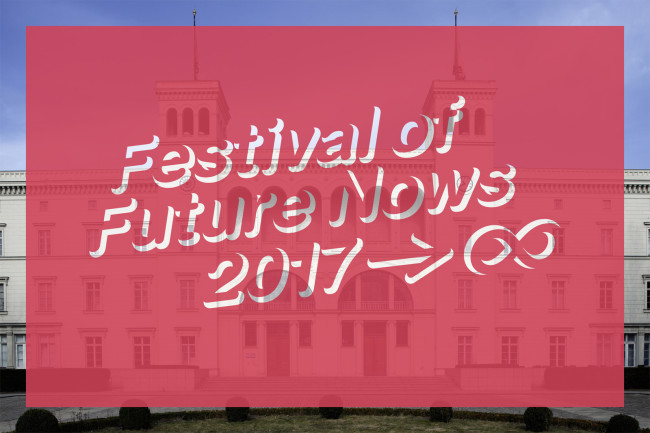
Festival of Future Nows 2017
Festival of Future Nows 2017 → ∞; Trailer; Design: BASICS09
Festival of Future Nows 2017 → ∞
September 14–17 2017
A cooperation by the Institut für Raumexperimente
and Nationalgalerie – Staatliche Museen zu Berlin
Hamburger Bahnhof – Museum für Gegenwart – Berlin
Staatliche Museen zu Berlin
Invalidenstraße 50 – 51 | 10557 Berlin
www.smb.museum/hbf
Opening: 14 September 2017, 7 pm
Welcome Address: 20 h
Udo Kittelmann, Director of the Nationalgalerie Staatliche Museen zu Berlin
Olafur Eliasson, Artist and Director of the Institut für Raumexperimente
Hans Düttmann, Deputy Chairman of the Freunde der Nationalgalerie
Rita Werneyer, Spokesperson for Culture, Volkswagen Aktiengesellschaft
Opening Hours
Thu, 14.09.: 19 pm – 11 pm
Fri, 15.09.: 10 am – 11 pm
Sat, 16.09.: 11 am – 11 pm
Sun, 17.09.: 11 am – 11 pm
Free admission.
The second edition of the Festival of Future Nows will take place during Berlin Art Week 2017 at Hamburger Bahnhof – Museum für Gegenwart – Berlin. As with the festival’s first edition in 2014 this year’s cooperation between the Nationalgalerie – Staatliche Museen zu Berlin Olafur Eliasson and his Institut für Raumexperimente e.V. brings together different works by over hundred international artists.
Over a four-day period a dense cloud of creative energy and spontaneity will erupt and break free like a Berlin punk-opera-weather-system accumulating and hovering over Hamburger Bahnhof – Museum für Gegenwart – Berlin. The festival program invites a young and diverse crowd to engage with the unpredictable nature of performance, action, music, interventions, dance experiments, movement and perception exercises. Individual projects take place in parallel or overlap the deliberate abundance forces visitors to take a nonlinear route through the festival. The principle of density and diversity’ is applied purposefully. The Festival of Future Nows 2017 → ∞ brings together an inspired mix of emerging practitioners with renowned artists under the banner of ‘The challenge is in the moment the time is always now’ (James Baldwin).
From 2009 to 2014 Olafur Eliasson led the Institut für Raumexperimente (Institute for Spatial Experiments), which was affiliated with the Berlin University of the Arts, together with Christina Werner and Eric Ellingsen. Working with the participants in the internationally highly regarded project, they experimented with new approaches to arts education and research. To mark the project’s end in autumn 2014, the institute created the Festival of Future Nows at the Neue Nationalgalerie in Berlin, just before the iconic building by Ludwig Mies van der Rohe closed for renovation. The second edition of the festival continues with a similar approach and is based on the broad artistic network around the Institut für Raumexperimente.
Choreographed by Sven Beckstette, Natalie Keppler, Christina Werner
The project is supported by Volkswagen Aktiengesellschaft and is made possible by Freunde der Nationalgalerie.
Festival of Future Nows 2017 → ∞; Trailer; Design: BASICS09
Festival of Future Nows 2017 → ∞
14. – 17. September 2017
Eine Kooperation des Instituts für Raumexperimente
und der Nationalgalerie – Staatliche Museen zu Berlin
Hamburger Bahnhof – Museum für Gegenwart – Berlin
Staatliche Museen zu Berlin
Invalidenstraße 50 – 51 | 10557 Berlin
www.smb.museum/hbf
Eröffnung: 14. September 2017, 19 Uhr
Begrüßung: 20 Uhr
Udo Kittelmann, Direktor der Nationalgalerie – Staatliche Museen zu Berlin
Hans Düttmann, Stellvertretender Vorsitzender der Freunde der Nationalgalerie
Rita Werneyer, Sprecherin Kultur, Volkswagen Aktiengesellschaft
Olafur Eliasson, Gründungsdirektor des Instituts für Raumexperimente, Berlin
Öffnungszeiten
Do, 14.09.: 19 – 23 Uhr
Fr, 15.09.: 10 – 23 Uhr
Sa, 16.09.: 11 – 23 Uhr
So, 17.09.: 11 – 23 Uhr
Der Eintritt zum Festival ist frei.
Zur Berlin Art Week 2017 findet im Hamburger Bahnhof – Museum für Gegenwart – Berlin, das zweite Festival of Future Nows statt. Die diesjährige Kooperation zwischen der Nationalgalerie – Staatliche Museen zu Berlin, Olafur Eliasson und seinem Institut für Raumexperimente e.V. bringt – wie schon die erste Ausgabe des Festivals 2014 – Arbeiten von über hundert internationalen Künstlerinnen und Künstlern zusammen.
Vom 14. bis 17. September 2017 entlädt sich eine dichte Wolkenformation kreativer Energie und Informalität über dem Hamburger Bahnhof, schwebt wie ein Berliner Punk-Opern-Wetterleuchten über dem Museum, um sich schließlich wieder aufzulösen. Das Festivalprogramm zeigt in der historischen Halle und rund um den Hamburger Bahnhof junge und diverse Positionen, die das umkalkulierbare Potenzial von Formaten wie Performance, Happening, Experiment und Intervention sowie dem Spiel mit Bewegung und Wahrnehmung ausloten. Ein gezieltes Überangebot verführt Besucher*innen, den Festival-Parcours nicht-linearzu entdecken, „Dichte und Diversität“ sind bewusst gewählte Prinzipien. Das Festival of Future Nows 2017 → ∞ bringt unerprobte und inspirierende künstlerische Positionen nein Zusammenspiel mit einer Reihe bekannterer Stimmen, getreu dem Motto „The challenge is in the moment, the time is always now“ (James Baldwin).
Von 2009 bis 2014 leitete Olafur Eliasson zusammen mit Eric Ellingsen und Christina Werner das Institut für Raumexperimente, das an der Universität der Künste Berlin angeschlossen war. Das international hoch angesehene Projekt experimentierte mit neuen Ansätzen in der künstlerischen Ausbildung und Forschung. Um das Ende des Modellstudiengangs zu markieren, fand im Herbst 2014 das Festival of Future Nows in der Neuen Nationalgalerie in Berlin statt, bevor das ikonische Gebäude von Ludwig Mies van der Rohe für die Generalsanierung geschlossen wurde. Die nun anstehende zweite Ausgabe des Festivals führt den spontanen Geist weiter und fußt auf dem weiten Netzwerk künstlerischer Positionen rund um das Institut für Raumexperimente.
Choreografiert von Sven Beckstette, Natalie Keppler, Christina Werner
Das Projekt wird unterstützt durch die Volkswagen Aktiengesellschaft und ermöglicht durch die Freunde der Nationalgalerie.
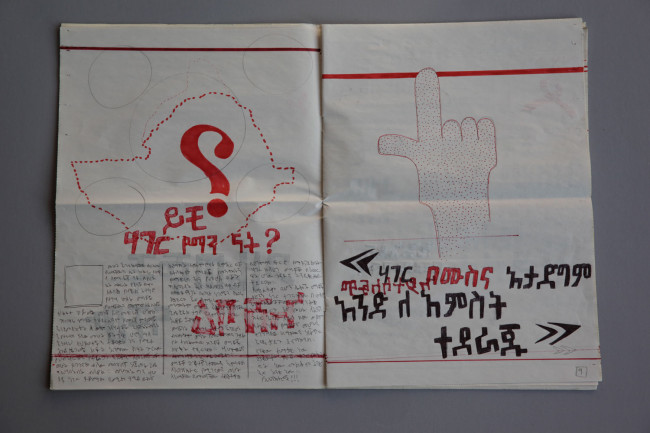
Poetry Jazz: Wax and Gold at Akademie der Künste Berlin
Uncertain States presents: Poetry Jazz: Wax and GoldFilmscreening / Lecture Demonstration / Panel
Wednesday, 26 October, 5 pm
Akademie der Künste, Hanseatenweg, Halle 2
Panel with Olafur Eliasson, Clara Jo, Robel Temesgen, Rike Scheffler, Christina Werner
in conjunction with Uncertain States – Artistic Strategies in States of Emergency
“Poetry Jazz” is the name for a particular style of performance poetry in Ethiopia fusing poetry and jazz, recitation and improvisation. The film A-B-A-B-A : from here to hear presents the eponymous experimental project series with artists from Berlin and Addis Abeba. Working together, they have created contemporary expressive styles in this tradition: Amharic, German and English poetry is combined with traditional Ethiopian music, jazz beats and contemporary electronic music. The film by Clara Jo follows the participating artists and traces their various influences as well as the challenges of reacting with the “Wax and Gold” principle of the spoken word to the issue of the free expression of opinion.
Trailer: A-B-A-B-A: from hear to here: A film by Clara Jo. 2016
A-B-A-B-A : from hear to here is part of Acting Archives, a project by the Institut für Raumexperimente, Berlin University of the Arts and the Alle School of Fine Arts and Design, Addis Ababa University, supported by Studio Olafur Eliasson, and funded by the TURN Fund of the German Federal Cultural Foundation.
Read the following article ‚Wax and Gold’. Poetry, jazz and politics, from Addis Ababa to Berlin by Mylène Palluel in Manifesto 21.
The film is followed by an experimental poetry performance by Rike Scheffler and Robel Temesgen. Exhibition artist Robel Temesgen (Visual Arts Fellow, Junge Akademie 2016) will present a series of works titled Old News that deploy the “Wax and Gold” approach in the field of visual arts. The “Wax and Gold” approach, which will be the topic of the discussion with Robel Temesgen, Rike Scheffler, Clara Jo and Christina Werner (Co-director, Instituts für Raumexperimente e.V.). Moderation: Olafur Eliasson.
Uncertain States präsentiert:
Poetry Jazz: Wax and GoldFilmscreening / Lecture-Demonstration / Diskussion
Mittwoch, 26 Oktober 2016, 17 Uhr
Akademie der Künste, Hanseatenweg, Halle 2
Diskussion mit Olafur Eliasson, Clara Jo, Robel Temesgen, Rike Scheffler, Christina Werner
im Kontext der Ausstellung Uncertain States – Künstlerisches Handeln in Ausnahmezuständen
„Poetry Jazz“ bezeichnet eine in Äthiopien geprägte Form der Lyrikperformance, die Einflüsse aus Poesie und Jazz, Rezitation und Improvisation zusammenbringt. Der Film A-B-A-B-A : from here to hear stellt die gleichnamige experimentelle Projektreihe zwischen Künstlern aus Berlin und Addis Abeba vor. Gemeinsam entstanden zeitgenössische Ausdrucksformen dieser Tradition: Amharische, deutsche und englische Dichtkunst wird mit traditioneller äthiopischer Musik, Jazz-Einflüssen und zeitgenössischer elektronischer Musik kombiniert. Der Film von Clara Jo folgt den beteiligten Künstlern und reflektiert die verschiedenen Einflüsse als auch die Herausforderung, mit dem lyrischen Prinzip von „Wachs und Gold“ auf die Problematik der freien Meinungsäußerung zu reagieren.
Trailer: A-B-A-B-A: from hear to here: A film by Clara Jo. 2016
A-B-A-B-A : from hear to here ist Teil von Acting Archives, einem Projekt des Instituts für Raumexperimente der Universität der Künste Berlin und der Alle School of Fine Arts and Design, Addis Ababa University, unterstützt durch Studio Olafur Eliasson, gefördert im Fonds TURN der Kulturstiftung des Bundes.
Eine Besprechung des Abends finden sich hier: ‚Wax and Gold’. Poetry, jazz and politics, from Addis Ababa to Berlin von Mylène Palluel in Manifesto 21.
Im Anschluss an den Film werden Rike Scheffler und Robel Temesgen eine experimentelle Poetry-Performance vorstellen. Ausstellungskünstler Robel Temesgen (Stipendiat Bildende Kunst, Junge Akademie 2016) wird anhand seiner Arbeiten aus der Serie Old News die Auseinandersetzung mit dem Prinzip „Wachs und Gold“ in der Bildenden Kunst vorstellen, das Prinzip wird Thema der Gesprächsrunde mit Robel Temesgen, Rike Scheffler, Clara Jo und Christina Werner (Geschäftsführerin des Instituts für Raumexperimente e.V.) sein. Moderation: Olafur Eliasson.
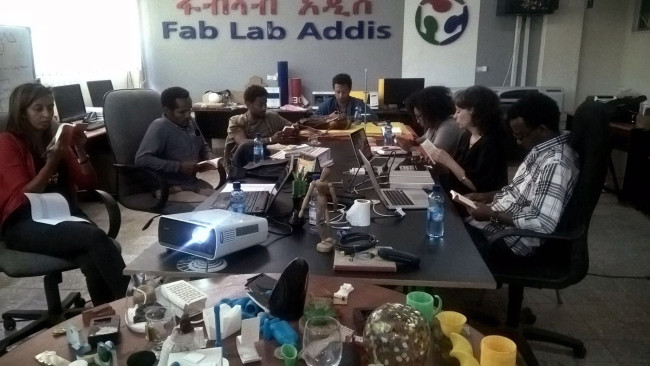
Archiv-Workshop
with Christina Werner
Alle School of Fine Arts and Design, Addis Abeba
A faculty training workshop to introduce the archive of all the documented events that took place in the context of a collaboration between the Institut für Raumexperimente and the Alle School of Fine Arts and Design and the User’s Manual to navigate it. The archive contains digitised documentation material of lectures and talks, experiments, discussions and exhibition formats as well as selected transcriptions and essays by project participants. The audiovisual archive is accessible in the form of a media container at the Alle School of Fine Arts and Design, to allow a continued engagement with the existing archive as well as the generation of new content.
—
Acting Archives is a project by the Institut für Raumexperimente, Berlin University of the Arts and the Alle School of Fine Arts and Design, Addis Ababa University, supported by Studio Olafur Eliasson, and funded by the TURN Fund of the German Federal Cultural Foundation.
Mit Christina Werner
Alle School of Fine Arts and Design, Addis Abeba
Einführungsworkshop für Lehrende der Alle School of Fine Arts and Design zum Archiv aller Veranstaltungen, die im Rahmen der Kooperation zwischen dem Institut für Raumexperimente und der Alle School of Fine Arts and Design dokumentiert wurden. Das Archiv beinhaltet digitales Dokumentationsmaterial von Vorlesungen und Talks, Experimenten, Diskussionen und Ausstellungsformaten sowie ausgewählte Transkriptionen und Essay von Projektteilnehmenden. Das audiovisuelle Archiv ist in Form eines Mediencontainers, versehen mit einer medientechnischen Grundausstattung, an der Alle School of Fine Arts and Design zugänglich, um eine weiterführende Arbeit mit dem bestehenden Archiv in Addis Abeba zu ermöglichen und neue Inhalte zu generieren.
—
Acting Archives ist ein Projekt des Instituts für Raumexperimente der Universität der Künste Berlin und der Alle School of Fine Arts and Design, Addis Ababa University, unterstützt durch Studio Olafur Eliasson, gefördert im Fonds TURN der Kulturstiftung des Bundes.

Acting Archives — Eine Bedienungsanleitung
Acting Archives – A User’s Manual serves as a short guide through the collected audiovisual material of the collaboration between the Institut für Raumexperimente, Berlin University of the Arts and the Alle School of Fine Arts and Design, Addis Ababa University. The documented events range from artist talks, short presentations in the marathon format and lectures, to exhibitions, poetry events, translation exercises and selected essays. Translated into English, Amharic and German, the entries facilitate the navigation through the accumulated material and encourage multiple connections and cross-readings both within and outside this archive.
Editors: Christina Werner, Fotini Lazaridou-Hatzigoga; Graphic Design: BASICS09; Publisher: Institut für Raumexperimente, UdK Berlin; Languages: Amharic / English / German; Extent: 360 pages
—
Acting Archives is a project by the Institut für Raumexperimente, Berlin University of the Arts and the Alle School of Fine Arts and Design, Addis Ababa University, supported by Studio Olafur Eliasson, and funded by the TURN Fund of the German Federal Cultural Foundation.
Acting Archives — Eine Bedienungsanleitung versteht sich als Kurzführer durch das gesammelte audiovisuelle Material der Kooperation zwischen dem Institut für Raumexperimente, UdK Berlin und der Alle School of Fine Arts and Design, Addis Ababa University. Die dokumentierten Veranstaltungen reichen von Künstlergesprächen, Kurzpräsentationen im Marathonformat und Vorlesungen bis hin zu Ausstellungen, Poetry-Veranstaltungen, Übersetzungsübungen und ausgewählten Essays. Übersetzt ins Englische, Amharische und Deutsche ermutigen die Einträge dazu, die sich das Videoarchiv selbständig zu erschließen und verschiedenen Lesarten innerhalb und außerhalb des Archivs zu folgen.
Redaktion/Lektorat: Christina Werner, Fotini Lazaridou-Hatzigoga; Grafikdesign: BASICS09; Herausgeber: Institut für Raumexperimente, UdK Berlin; Sprachen: Amharrisch / Englisch / Deutsch; Umfang: 360 Seiten
—
Acting Archives ist ein Projekt des Instituts für Raumexperimente der Universität der Künste Berlin und der Alle School of Fine Arts and Design, Addis Ababa University, unterstützt durch Studio Olafur Eliasson, gefördert im Fonds TURN der Kulturstiftung des Bundes.
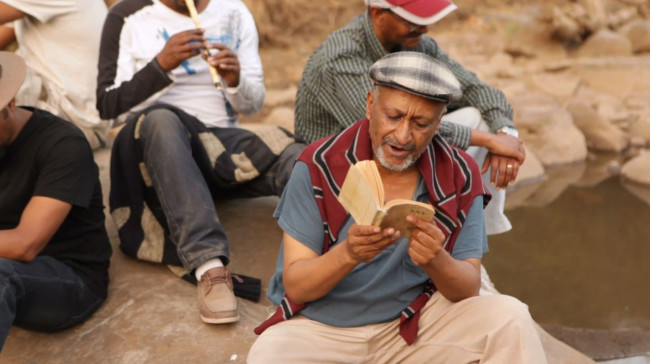
Common Listening: Filmscreening & Discussion
Filmscreening of edits from "A-B-A-B-A : from here to hear" by Clara Jo
Filmscreening, poetry presentation and discussion at the Academy of Fine Arts Vienna with Clara Jo (artist, Berlin), Mihret Kebede (poet, Addis Abeba), Rike Scheffler (poet, Berlin), and Christina Werner (Berlin), hosted by Anette Baldauf, Professor for Methodology and Epistemology / PhD-in-Practice programm, Academy of Fine Arts Vienna
„Silenced Poem“
written and performed by Mihret Kebede, translated and performed by Rike Scheffler.
Mihrets poem is about silence. How silence is governing the city of Addis Abeba and how people are not speaking out loud but instead silence is growing. The poem is recalling the history of the Ethiopian king Menelik in the late 19th century. How he was wise enough to listen to the silence of the people and responded to their complaints on high taxation. In her poem, Mihret is having a conversation with the city of Addis Abeba today, asking: „My dear city, why are you so silent? Do we need to bring Menelik back to be heard? Do we need to bring another king to listen to your silence?“
⋅
የጸጥታ ወግ
የጸጥታ ወግ
በጸጥታ መኃል … አርምሞ ለሰማ
ጸጥታ ወግ አለው … ሚኒሊክ እንዳለው !
አሁን እኔና አንተ … አሁን አንተና እኔ ካወራነው ሁላ
የትኛው ተወዶ … የትኛው ተጠላ ? ፤
ይሄው ከላይ መንደር
ሰው ከቀየው ጋራ … እንዳይነጋገር
ወገኛው ወዳጄ … ለራሱም ያልበጄ
ወግ ለሌለው ሃሳብ … ወግ እያሳደደ
የመንደሬውን ሃቅ … ቁርሾ እያደረገ
„ኮሽ“ ባለ ቁጥር … ስንት ማቲ አስፈጄ ? ?
ኽረ እንዴት ነው ጎበዝ … ምንድነው ባገሬው እየሆነ ያለው …
ይሄኛው ከተማ … መኃል ሀገር ያለው
የሚለው እያለው… ለምን ነው ዝም ያለው ?
እያልኩ ደጋግሜ … እሞግተዋለሁ
ታሪክ ላጣ ቀየ … ታሪክ እመዛለሁ
እንደዚህ እላለሁ…
በጸጥታ መሃል … አርምሞ ለሰማ
ጸጥታ ወግ አለው … ሚኒሊክ እንዳለው ፤
እንግዲህ ሃሳቤ … በሃሳብ ተቀጣ
ስንት ንጉስ ይንገስ … ስንት ንጉስ ይምጣ
ጸጥ ያለው መንደሬ … ተንጦ … ተንጦ ቅቤ እንዲያወጣ ? ፤
አሁንም እዚያው ነኝ
ያልተተነተነ ብርቱ ጥያቄ አለኝ
ጸጥ … እረጭ እያለ … ቀየው ያወጋኛል
በዝምታው መሃል … ታሪክ ይነግረኛል
ታሪክ እየበላ … ታሪኬን ነጥቆኛል ፤
ሳንጃው ጎረቤቴም እንዲህ ያወጋኛል …
“የድሮ ዝምታ… የድሮ ዝምታ
ለንጉስ መብረቅ ነው … ለአምላክ ሹክሹክታ”
እያለ እያስባለ … ተስፋ ያስቆርጠኛል
ኑሮየን በነበር … በዜሮ እያጣፋ …
ትረካውን ነግሮ … ታሪክ የማይሰራ ትውልድ
ያደርገኛል ፤
እኔ ግን እዚያው ነኝ … እኔ ግን እዚያው ነኝ
ከከተማው መሃል … ከተማ ጠፍቶብኝ
ሰርክ የምፋለመው … ብርቱ ጥያቄ አለኝ ፤
“ኽረ አንተ ከተማ … ኽረ አንተ ከተማ
ጸጥ ካለው መንደርህ … ከቅኔው ገጽህ ላይ…
ወርቁን እንዲያወጣ
ስንት ዘመን እንፍጂ … ስንት ሀሳብ ይቀጣ
ጸጥታ ‚ሚያዳምጥ … ንጉስ እስኪመጣ ? ? ?”
——-//——-
Dieses Gedicht
Dieses Gedicht handelt,
ist das Gegenteil und das Gleiche:
sein Inhalt, die Benennung, ist schon das Gedicht.
Es ist direkt, entsteht gerade, durch das, was es sagt,
das es ist, wenn es fragt: Geliebte, Stadt, was bist du so still?
Dann spricht dieses Gedicht, richtet sich gegen die Stille,
wie Mihret, wenn ihr Gedicht sie spricht. Von Menelik dem König.
Von Geschichte, die verstimmt ist, wird, und klingt.
Von Gold und Stille, von Ideen und Butter, Stolz und Milch.
Dieses Gedicht ermächtigt sich, macht einen Ort.
Geht weitaus über alles, alles Sprechen, macht viel Platz.
Dieses Gedicht lässt Geschichte in sich.
Lässt die Stille nicht zu, nimmt sie auf, dieses Gedicht spricht
zu allen Stillen, Bürgern und Bürgerinnen einer Stadt
als seien sie einer oder eine.
Dieses Gedicht selbst ist hier
eine Stadt, ist in einer Stadt, die sich aufmacht,
nach Verlorenem zu schauen: den Wegen, Häusern, Autos,
Kühltruhen, Hühnern, Händen, dem sanftem Mond, dem Abendlicht,
den schnellen Fingern, Zähnen, Zäunen, Zungen, Wünschen, Haustüren,
Katzen, Verwandten und den Anverwandten,
es fragt, es brütet, hütet sich, fragt nach den Stimmen:
Wieso sind sie so still?
Dieses Gedicht ist voller Liebe.
Es beruht auf Klängen, Kehllauten, dem Alphabet,
sehr vielen I’s und einem warmen Vokal.
Dieses Gedicht ist Addis Abeba.
Ist Ankara. Athen. Alabama. Jakata.
Ist aber auch Wien. Es schämt sich nicht,
es trägt das Gold, von dem es spricht.
Dieses Gedicht handelt, als möglicher Ort,
von Butter und Milch. Es handelt vom richtigen
Filtern und Schütteln: vom frei schütteln auf schütteln
aus schütteln um schütteln wach schütteln nach schütteln
vor schütteln voll schütteln voll
Dieses Gedicht fragt nach Königen wie nach großen Ideen.
Es macht die Stimmen zum König. Es macht mächtig.
Macht Macht. Es handelt vom Handeln, aus der Stille.
Dieses Gedicht ist nicht still.
Filmpräsentation der Arbeitsfassung "a-b-a-b-a : from here to hear" von Clara Jo
Filmscreening, Poesiepresentation und Diskussion an der Akademie der bildenden Künste Wien
mit Clara Jo (Künstlerin, Berlin), Mihret Kebede (Lyrikerin/Künstlerin, Addis Abeba), Rike Scheffler (Lyrikerin/Musikerin, Berlin) and Christina Werner (Berlin) auf Einladung von Anette Baldauf, Professorin für Epistemologie und Methodologie; PhD-in-Practice Programm, Akademie der bildenden Künste Wien
„Silenced Poem“
verfasst und vorgetragen von Mihret Kebede, übersetzt und vorgetragen von Rike Scheffler.
Mihrets poem is about silence. How silence is governing the city of Addis Abeba and how people are not speaking out loud but instead silence is growing. The poem is recalling the history of the Ethiopian king Menelik in the late 19th century. How he was wise enough to listen to the silence of the people and responded to their complaints on high taxation. In her poem, Mihret is having a conversation with the city of Addis Abeba today, asking: „My dear city, why are you so silent? Do we need to bring Menelik back to be heard? Do we need to bring another king to listen to your silence?“
⋅
የጸጥታ ወግ
የጸጥታ ወግ
በጸጥታ መኃል … አርምሞ ለሰማ
ጸጥታ ወግ አለው … ሚኒሊክ እንዳለው !
አሁን እኔና አንተ … አሁን አንተና እኔ ካወራነው ሁላ
የትኛው ተወዶ … የትኛው ተጠላ ? ፤
ይሄው ከላይ መንደር
ሰው ከቀየው ጋራ … እንዳይነጋገር
ወገኛው ወዳጄ … ለራሱም ያልበጄ
ወግ ለሌለው ሃሳብ … ወግ እያሳደደ
የመንደሬውን ሃቅ … ቁርሾ እያደረገ
„ኮሽ“ ባለ ቁጥር … ስንት ማቲ አስፈጄ ? ?
ኽረ እንዴት ነው ጎበዝ … ምንድነው ባገሬው እየሆነ ያለው …
ይሄኛው ከተማ … መኃል ሀገር ያለው
የሚለው እያለው… ለምን ነው ዝም ያለው ?
እያልኩ ደጋግሜ … እሞግተዋለሁ
ታሪክ ላጣ ቀየ … ታሪክ እመዛለሁ
እንደዚህ እላለሁ…
በጸጥታ መሃል … አርምሞ ለሰማ
ጸጥታ ወግ አለው … ሚኒሊክ እንዳለው ፤
እንግዲህ ሃሳቤ … በሃሳብ ተቀጣ
ስንት ንጉስ ይንገስ … ስንት ንጉስ ይምጣ
ጸጥ ያለው መንደሬ … ተንጦ … ተንጦ ቅቤ እንዲያወጣ ? ፤
አሁንም እዚያው ነኝ
ያልተተነተነ ብርቱ ጥያቄ አለኝ
ጸጥ … እረጭ እያለ … ቀየው ያወጋኛል
በዝምታው መሃል … ታሪክ ይነግረኛል
ታሪክ እየበላ … ታሪኬን ነጥቆኛል ፤
ሳንጃው ጎረቤቴም እንዲህ ያወጋኛል …
“የድሮ ዝምታ… የድሮ ዝምታ
ለንጉስ መብረቅ ነው … ለአምላክ ሹክሹክታ”
እያለ እያስባለ … ተስፋ ያስቆርጠኛል
ኑሮየን በነበር … በዜሮ እያጣፋ …
ትረካውን ነግሮ … ታሪክ የማይሰራ ትውልድ
ያደርገኛል ፤
እኔ ግን እዚያው ነኝ … እኔ ግን እዚያው ነኝ
ከከተማው መሃል … ከተማ ጠፍቶብኝ
ሰርክ የምፋለመው … ብርቱ ጥያቄ አለኝ ፤
“ኽረ አንተ ከተማ … ኽረ አንተ ከተማ
ጸጥ ካለው መንደርህ … ከቅኔው ገጽህ ላይ…
ወርቁን እንዲያወጣ
ስንት ዘመን እንፍጂ … ስንት ሀሳብ ይቀጣ
ጸጥታ ‚ሚያዳምጥ … ንጉስ እስኪመጣ ? ? ?”
——-//——-
Dieses Gedicht
Dieses Gedicht handelt,
ist das Gegenteil und das Gleiche:
sein Inhalt, die Benennung, ist schon das Gedicht.
Es ist direkt, entsteht gerade, durch das, was es sagt,
das es ist, wenn es fragt: Geliebte, Stadt, was bist du so still?
Dann spricht dieses Gedicht, richtet sich gegen die Stille,
wie Mihret, wenn ihr Gedicht sie spricht. Von Menelik dem König.
Von Geschichte, die verstimmt ist, wird, und klingt.
Von Gold und Stille, von Ideen und Butter, Stolz und Milch.
Dieses Gedicht ermächtigt sich, macht einen Ort.
Geht weitaus über alles, alles Sprechen, macht viel Platz.
Dieses Gedicht lässt Geschichte in sich.
Lässt die Stille nicht zu, nimmt sie auf, dieses Gedicht spricht
zu allen Stillen, Bürgern und Bürgerinnen einer Stadt
als seien sie einer oder eine.
Dieses Gedicht selbst ist hier
eine Stadt, ist in einer Stadt, die sich aufmacht,
nach Verlorenem zu schauen: den Wegen, Häusern, Autos,
Kühltruhen, Hühnern, Händen, dem sanftem Mond, dem Abendlicht,
den schnellen Fingern, Zähnen, Zäunen, Zungen, Wünschen, Haustüren,
Katzen, Verwandten und den Anverwandten,
es fragt, es brütet, hütet sich, fragt nach den Stimmen:
Wieso sind sie so still?
Dieses Gedicht ist voller Liebe.
Es beruht auf Klängen, Kehllauten, dem Alphabet,
sehr vielen I’s und einem warmen Vokal.
Dieses Gedicht ist Addis Abeba.
Ist Ankara. Athen. Alabama. Jakata.
Ist aber auch Wien. Es schämt sich nicht,
es trägt das Gold, von dem es spricht.
Dieses Gedicht handelt, als möglicher Ort,
von Butter und Milch. Es handelt vom richtigen
Filtern und Schütteln: vom frei schütteln auf schütteln
aus schütteln um schütteln wach schütteln nach schütteln
vor schütteln voll schütteln voll
Dieses Gedicht fragt nach Königen wie nach großen Ideen.
Es macht die Stimmen zum König. Es macht mächtig.
Macht Macht. Es handelt vom Handeln, aus der Stille.
Dieses Gedicht ist nicht still.

About Acting Archives
Acting Archives is a collaborative project that the Institut für Raumexperimente, Berlin, initiated together with the Alle School of Fine Art and Design, Addis Ababa, supported by the TURN Fund of the German Federal Cultural Foundation. It unfolded through a series of events taking place both in Addis Ababa and Berlin. These endeavors were motivated by the desire to learn how to learn from and with each other and employed experimentation as a method of artistic research, co-producing knowledge around the topics of art and education. The events that took place in the context of Acting Archives including all the lectures and talks, case studies, discussions, and exhibitions, as well as selected transcripts and essays by the project’s participants are compiled to ensure the longevity of this initiative and a wider circulation of the accumulated knowledge. This audiovisual archive was also packaged as a media container, equipped with a set of basic media technology in order to allow students, teachers and alumni to continue working with the existing archives and to produce new artistic and educative content at the Alle School of Fine Arts and Design in Addis Ababa. Serving both as a content transmitter and as a research tool, this archive is accessible on site at the Alle School of Fine Art and Design in Addis Ababa, as well as via the website of the Institut für Raumexperimente. The publication „Acting Archives — A User’s Manual“ appears in English, German and Amharic and serves as a guidebook through this archived material.
Art is affect is a fact
Olafur Eliasson
Active generosity and inclusion are ideals that I consider essential in art, and they have played a central role in defining the modes of interaction in the education experiment that I founded—the Institut für Raumexperimente at the Berlin University of the Arts. The collaboration between the Institut für Raumexperimente and the Alle School of Fine Arts and Design, Addis Ababa University, was also driven by those shared ideals. Ausklappen...
Olafur Eliasson
Active generosity and inclusion are ideals that I consider essential in art, and they have played a central role in defining the modes of interaction in the education experiment that I founded—the Institut für Raumexperimente at the Berlin University of the Arts. The collaboration between the Institut für Raumexperimente and the Alle School of Fine Arts and Design, Addis Ababa University, was also driven by those shared ideals. I would like to believe that the reason for this quality of inclusion is that, even though other parts of reality often grapple with these terms, art inspires trust and hosts differences—of opinion, of expression. Let me suggest: Before there is the right to self-expression, before there is the right to speak, there is the fundamental human right to think. And art grows from this realm of thought; art lives in the freedom of thought.
Édouard Glissant writes about the imaginary in Poetics of Relation: ‘Thinking thought usually amounts to withdrawing into a dimensionless place in which the idea of thought alone persists. But thought in reality spaces itself out into the world. It informs the imaginary of peoples, their varied poetics, which it then transforms, meaning, in them its risk becomes realized.’ Producing art, working creatively, is a form of uniting thinking and doing. It risks the realisation of thinking in the very moment of its becoming. To make a sculpture, to walk in slow motion, to choreograph movement, or to design a building is to shape reality. It means gradually giving ideas and values a body, giving them space, letting them space. Once a thought has been given form it is real.
An artwork’s potential lies not only in the object or the concept; it is located also in the nature of the interaction between object, people, and the world. A fundamental skill to develop is our ability to understand the relationship between idea and action, thing and world; this is true of arts education and of life. Therefore I see art as a space that marks an important threshold: entering a museum, entering an exhibition, entering an artist book is entering the space between the realm of thought and speech, thinking and doing. Art is a threshold that connects and opens up the space between the freedom of thought and the freedom to express yourself. Stepping into art means connecting to the world, getting closer towards it.
This in-between space depends on the various ways we sense and address it. Engaging with a work of art, individuals can share the experience of seeing, while disagreeing. They see different things, they experience the encounter differently, and they experience the uncircumventable difference at the basis of their disagreeing visions. At the same time, a space opens up for the acknowledgement of a shared perspective, in which disagreeing is not a conflictual encounter but a relational one. This experience shifts the practice of knowing from grasping and conquering an idea to a notion of extending with generosity. Glissant calls this possible practice of understanding donner-avec: the French verb donner (to give) used in the term donner-avec translates to ‘generous, looking out toward’. It is meant as a generosity of perception.
Art can cope with the underlying principle of difference, because it yields and gives in to an understanding of more than one perspective. Art offers these sites of connectivity, where multiple stories and trajectories as well as different ways of perceiving and being can co-exist. This is mirrored in our obsession with poetry, where even the pronunciation of a word becomes part of the poetic momentum. It is air pushed towards you, which acquires meaning at the moment of reaching the receiver. It unfolds in the listening. It is non-dogmatic. And it might carry more than we intentionally say—if I say ‘heart’ in trying to reach out to you and to touch you, you might hear ‘art’. That is the wave that I set in motion to reach you.
The collaboration with the Alle School of Fine Arts and Design trusted the potential of looking out toward; we trusted the quality that emerges from accepting both planned and unexpected encounters while staying attuned to the multifold manifestations of artistic creation. Education and art were constantly produced, not consumed. As Glissant (ibid.) proposes: “A knowledge becoming. One cannot stop it to assess it nor isolate it to transmit it. It is sharing one can never not retain, nor ever, in standing still, boast about.” In sharing the collection of archived encounters, the media container is yet just another source of inspiration for knowledge in becoming, which is learning. This principle of learning has been encouraging further unpredictable connections by trusting in the potential, from here to hear, from here to there, from Addis Ababa to Berlin and all over again.
Welcome Words
Berhanu Ashagrie Deribew
The Alle School of Fine Arts and Design has been the major higher institution in the country teaching creative subjects in the arts for nearly six decades. For the last five years, the school has also been highly engaged in generating productive possibilities in various local and international collaborations. These different layers of institutional engagements enable the school to function not only as an educational institution, but also as an alternative, participatory and engaging platform for various creative and professional activities. Ausklappen...
Berhanu Ashagrie Deribew
The Alle School of Fine Arts and Design has been the major higher institution in the country teaching creative subjects in the arts for nearly six decades. For the last five years, the school has also been highly engaged in generating productive possibilities in various local and international collaborations. These different layers of institutional engagements enable the school to function not only as an educational institution, but also as an alternative, participatory and engaging platform for various creative and professional activities. It is also an achievement that the school has recently managed to establish two postgraduate programs, in which multidisciplinary creative subjects are explored through an advanced level of art education. At the same time, it is a dry fact that the shortage of accessible resources and references on contemporary art has always been one of the major critical challenges and limitations affecting the educational and professional activities of the school. In this context, working on the Acting Archives project in collaboration with the Institut für Raumexperimente has been a huge opportunity for the school.
Unfolding as a series of multi-layered professional activities performed under mutual interests and participation, Acting Archives took place in both local and international platforms. Throughout this project, an extensive amount of audiovisual references on contemporary art has been generated and a media container has been created with a wide collection of photographs, videos, sound recordings, critical texts and publications focusing on contemporary art, art education, and different archive practices. Organised in a user-friendly and accessible format, the media container will serve as an active resource and reference material in our educational activities, especially through the postgraduate programs in the school, but also for interested local artists, researchers, and writers as well as international guest students and visiting lecturers. We are very happy to host the media container in our school and look forward to activating it to its best capacity within our future educational and professional engagements.
Finally, I would like to extend my deepest gratitude to Olafur Eliasson, Christina Werner and Eric Ellingsen for generating this opportunity and for their continuous efforts to make the Acting Archives project sustainable, the Institut für Raumexperimente and Studio Olafur Eliasson for facilitating all the required steps throughout the process of project implementation, the TURN Fund of the German Federal Cultural Foundation for supporting our project activities, and all involved local and international professionals for their valuable contributions.
Waypoints, crossroads and directions — navigating the archive
The project Acting Archives – Media Lab for Artistic Research and Education offers an interdisciplinary platform for exchange and collaboration between Ethiopian, German and international artists, educators, cultural producers, thinkers and theorists. Acting Archives engages art and education through means of archival practices and pedagogic methodologies. Ausklappen...
The project Acting Archives – Media Lab for Artistic Research and Education offers an interdisciplinary platform for exchange and collaboration between Ethiopian, German and international artists, educators, cultural producers, thinkers and theorists. Acting Archives engages art and education through means of archival practices and pedagogic methodologies. Unfolding over a period of almost three years and culminating in a collaboratively produced media container with documentation material, case studies and tools, Acting Archives can continue to inform growing patterns in artistic research and education. The media container is accompanied by Acting Archives — A User’s Manual, which you are now holding in your hands. The publication serves as a short guide to navigate through the compiled audiovisual archive of the project. A close collaboration between the Institut für Raumexperimente, Berlin University of the Arts, and the Alle School of Fine Arts and Design, Addis Ababa University, this media container, accessible on site in Addis Ababa and online, functions as a crystallisation point from which the energy, imagination and needs of artists and institutions in Ethiopia, Germany and elsewhere can be cultivated and further nourished.
From 2009 to 2014, the Institut für Raumexperimente (Institute for Spatial Experiments), under the direction of Olafur Eliasson and co-directors Eric Ellingsen and Christina Werner, and in affiliation with the Berlin University of the Arts, served as an internationally recognised project for arts education and research. With documentation being an integral part of daily activities at the institute, the ten semesters of its operation have produced a wide collection of photographs, videos and sound recordings, which, along with all the accompanying texts and publications, register the various experimental formats and serve as a repository of shared knowledge and experience. As the five-year-long educational research project was drawing to an end, the question of processing, organising and ultimately providing open access to these accumulated records became more and more central to the workings of the institute. Along with that more questions were raised, including the questions of how an archive can be practised, how it can work, be worked with, be a work, how it can serve as a tool for future artistic production, or inspire models in education.
The Alle School of Fine Arts and Design, under the Skundern Boghossian College of Performing and Visual Arts of the Addis Ababa University, and under the direction of Berhanu Ashagrie Deribew has at the same time and from another point of view been confronted with related issues. Currently in the process of founding a new film and media department as well as a curatorial masters program, the Alle School of Fine Arts and Design has been faced with questions including those of access to net-based information and online resources for education and learning purposes, while also emphasising the emerging importance of visual culture and information techniques as critical tools to respond to the rapidly changing socio-political landscape in Addis Ababa.
During the fall of 2012 the Alle School of Fine Arts and Design hosted the Institut für Raumexperimente and its participants for ten weeks of collaborative learning and teaching. The semester included a variety of local collaborations, experimental educational formats and surprising artistic ventures that brought together students, educators and artists from both schools as well as invited guests and other professionals from Addis Ababa and abroad.
In order to further these relationships and initiatives, the Institut für Raumexperimente together with the Alle School of Fine Art and Design developed the project Acting Archives, supported by the TURN Fund of the German Federal Cultural Foundation. The project’s trajectory allowed the two institutions to develop a discourse and dialogue in thinking and doing around the questions mentioned above, offering multiple perspectives and approaching the questions from diverse backgrounds. Between the fall of 2013 and the spring of 2015, Acting Archives unfolded through a series of events taking place both in Addis Ababa and Berlin, including a symposium, workshops, various educational and artistic experiments, exhibitions, as well as an art festival. These endeavours were motivated by the desire to learn how to learn from and with each other and employed experimentation as a method of artistic research, co-producing knowledge around the topics of art and education.
To ensure the longevity of this initiative and a wider circulation of the accumulated knowledge, the events that took place in the context of Acting Archives were documented and compiled into a rich audiovisual archive, which includes the comprehensive digital documentation of all the lectures and talks, case studies and discussions, as well as selected transcripts and publications by the project’s participants. This audiovisual archive was then packaged as a media container, equipped with a set of basic media technology in order to allow people to continue working with the existing archives and to produce new content. Serving both as a content transmitter and as a research tool, this archive is accessible on site at the Alle School of Fine Art and Design in Addis Ababa, as well as via the internet in the form of an online archiving experiment on the website of the Institut für Raumexperimente (www.raumexperimente.net).
The documented events span a period of more than two years and are arranged chronologically. They range from artist talks or short presentations under the “Marathon” event format, to lectures, exhibitions, poetry events and translation exercises. More specifically, this compilation starts with a series of artist talks by Berhanu Ashagrie Deribew, Konjit Seyoum, Helen Zeru and Tamrat Gezahegne, which took place in Berlin in May/July 2012, serving as an introduction to the exchange between Addis Ababa and Berlin and to a number of artistic practices pursued in that context. A few months later, already in Addis Ababa, the institute organised a series of events with both local practitioners and international guests, including talks by architect and professor Brook Teklehaimanot, political theorist Chantal Mouffe, art historian Abebaw Ayalew, curator Elvira Dyangani Ose, art historian Molly Nesbit, as well as a series of four lectures by Olafur Eliasson. Shorter presentation formats were also facilitated during that time, particularly during the Addis Art Practices Marathon. Included in the archive are also the institute’s participation in Addis Foto Fest in December 2012, as well as the art festival Jan Meda – Großes Feld that was hosted at the end of the institute’s stay inviting a wider public in Addis Ababa. Upon return to Berlin two talks by Doreen Massey and Molly Nesbit in the spring and summer of 2013 attempted to revisit and expand on the topics of time and space as well as of travel, translation and narrations as they relate to the shared experiences in Ethiopia. Central part of the present archive form the contributions during the Archives Works Marathon that was hosted at the Institut für Raumexperimente in November 2013. Guests included Berhanu Ashagrie Deribew, Jochen Becker, Beatrice von Bismarck, AA Bronson, Fasil Giorghis, Elizabeth Giorgis, Tue Greenfort, Mihret Kebede, Koyo Kouoh, Cynthia Kros, Jonathan Ledgard, Armin Linke, Salem Mekuria, Felix Melia, Doreen Mende, Natasha Mendonca, Emeka Ogboh, Georges Pfruender, Bernd Scherer, Stefanie Schulte Strathaus, Nicola Setari, Ai Weiwei, and Louwrien Wijers. The exhibition Archives Acting was curated on that occasion and included works by twenty-four artists. The last block of events that took place within the context of Acting Archives was the Ishe get ‘um, OK Poetry event in Addis Ababa in December 2012 and the A-B-A-B-A : from hear to here workshop and performance realised together with Palais Wittgenstein / Roter Salon at the Volksbühne Berlin in July 2014, including a CD album and a documentary film. The events echoed from Addis Ababa to Berlin back to Addis Ababa, where the latest part of the series took place on the compound of the Alliance Ethio-Française in February 2015. At the end of the publication one finds two republished essays by Chantal Mouffe and Doreen Massey respectively, which expand on topics raised during Mouffe’s and Massey’s talks that took place in the context of this project and carry a vocabulary of thought and inspiration that fuelled many trajectories within the project.
Acting Archives — A User’s Manual is thus put together as a guide through the compiled material from this series of events. Serving as an extended table of contents, this publication opens up a number of pathways, links and diversions through this wide array of contributions. Translated and published in Amharic, English, and German, the content is meant to encourage multiple connections and cross-readings both within and outside this present archive. In doing so, Acting Archives is an educational experiment that proposes a different way of engaging with an archive and putting it in motion. We hope it also serves as a first step towards further experiments that engage with the collected material, merging the archived entries with present trajectories leading onto future paths.
—
Acting Archives is a project by the Institut für Raumexperimente, Berlin University of the Arts and the Alle School of Fine Arts and Design, Addis Ababa University, supported by Studio Olafur Eliasson, and funded by the TURN Fund of the German Federal Cultural Foundation.
Acting Archives ist ein kollaboratives Projekt, das das Institut für Raumexperimente, Berlin, gemeinsam mit der Alle School of Fine Arts and Design, Addis Abeba, realisiert hat. Es wurde ermöglicht und gefördert durch den Fonds TURN der Kulturstiftung des Bundes. Zwischen Herbst 2013 und Frühjahr 2015 entfaltete sich Acting Archives im Rahmen von Veranstaltungsreihen, die sowohl in Berlin als auch in Addis Abeba durchgeführt wurden. Diese Veranstaltungen wurden von dem Wunsch getragen herauszufinden, wie man von- und miteinander lernen kann. Sie nutzten das Experimentelle bewusst als Methode künstlerischer Forschung, durch die Wissen im Bereich Kunst und Bildung co-produziert wurde. Alle Vorlesungen und Gespräche, alle Experimente, Diskussionen und Ausstellungen, die im Rahmen von Acting Archives stattgefunden haben, sowie ausgewählte Transkriptionen und Publikationen von Projektteilnehmenden, wurden zu einer umfangreichen audiovisuellen Sammlung zusammengetragen, um eine längerfristige Nutzung und Zugang für einen weiteren Kreis Interessierter zu ermöglichen. Das audiovisuelle Archiv ist in Form eines Mediencontainers, versehen mit einer medientechnischen Grundausstattung, an der Alle School of Fine Art and Design installiert, um eine weiterführende Arbeit mit den bestehenden Materialen in Addis Abeba zu ermöglichen und darüber hinaus neue Inhalte zu generieren. Das Archiv dient demnach gleichermaßen als Vermittler von Inhalten sowie als Werkzeug für weitere Recherchen. Zugänglich ist es zum einen vor Ort an der Alle School of Fine Art and Design in Addis Abeba sowie als Online-Archiv-Format auf der Website des Instituts für Raumexperimente. Die Publikation „Acting Archives — eine Bedienungsanleitung“ erscheint in Englisch, Deutsch und Amharrisch und dient als Kurzführer durch das gesammelte Material.
Kunst ist Affekt ist ein Fakt
Olafur Eliasson
Aktive Großzügigkeit und Inklusion sind Ideale, die ich in der Kunst für unverzichtbar halte. Sie spielten eine zentrale Rolle für den Umgang miteinander am Institut für Raumexperimente an der Universität der Künste Berlin, dem von mir gegründeten experimentellen Ausbildungsmodell. Die Zusammenarbeit zwischen dem Institut für Raumexperimente und der Alle School of Fine Arts and Design an der Addis Abeba University basierte ebenso auf diesen gemeinsamen Idealen. Ausklappen...
Olafur Eliasson
Aktive Großzügigkeit und Inklusion sind Ideale, die ich in der Kunst für unverzichtbar halte. Sie spielten eine zentrale Rolle für den Umgang miteinander am Institut für Raumexperimente an der Universität der Künste Berlin, dem von mir gegründeten experimentellen Ausbildungsmodell. Die Zusammenarbeit zwischen dem Institut für Raumexperimente und der Alle School of Fine Arts and Design an der Addis Abeba University basierte ebenso auf diesen gemeinsamen Idealen. Ich möchte daran glauben, dass der Grund für eine solch inklusive Qualität in der Kunst darin zu finden ist, dass sie – auch wenn andere Ebenen der Realität häufig mit diesen Begriffen hadern – Vertrauen schafft und Differenzen zulässt, unterschiedliche Meinungen und Ausdrucksformen. Ein Vorschlag meinerseits: Noch vor dem Recht auf Selbstverwirklichung und vor dem Recht auf freie Rede besteht das fundamentale Recht des Menschen zu denken: das Recht auf Gedankenfreiheit. Kunst erwächst aus diesem Reich der Gedanken; Kunst lebt in der Freiheit des Denkens.
Der Philosoph Edouard Glissant schreibt in seinen Poetics of Relation: „Der Vorgang des Denkens führt normalerweise dazu, sich in einen dimensionslosen Raum zurückzuziehen, in dem die Idee des reinen Gedankens besteht. In der Realität verbreitet sich das Denken aber räumlich in die Welt hinein. Es beeinflusst die Vorstellungskraft der Menschen und ihre verschiedenen Poetiken, die es dann verwandelt. Dies bedeutet, dass hierin die Risiken des Denkens realisiert werden.“ Kunstschaffen und kreative Arbeit vereinen Denken und Machen miteinander. Beides riskiert die Realisierung des Denkens im Moment seiner Entstehung. Eine Skulptur zu formen, in Zeitlupe zu gehen, Bewegungen zu choreographieren oder ein Gebäude zu entwerfen, ist nichts anderes als Realität zu formen. Es bedeutet: Ideen und Werten nach und nach einen Körper zu verleihen und ihnen Raum zu geben. Wird einem Gedanken einmal eine Form verliehen, ist er real.
Das Potenzial eines Kunstwerkes liegt nicht nur im Objekt oder im Konzept. Es ist auch in der Art und Weise des Zusammenspiels von Objekt, Mensch und der Welt zu verorten. Eine grundlegende Fähigkeit, die es zu entwickeln gilt, liegt darin, die Beziehung zwischen Idee und Handlung, materiellen Dingen und Welt zu verstehen. Das trifft für künstlerische Bildung genauso zu wie für das Leben im Allgemeinen. Demzufolge sehe ich die Kunst als einen Ort, der eine wichtige Grenze markiert: Ein Museum zu besuchen, eine Ausstellung zu besichtigen, eine künstlerische Publikation aufzuschlagen bedeutet, einen Raum zwischen Gedanken und Sprache, zwischen Denken und Machen zu betreten. Die Kunst ist eine Schwelle, die den Raum zwischen der Freiheit des Denkens und der Freiheit, sich selbst auszudrücken, eröffnet und verbindet. In den Bereich der Kunst einzutreten bedeutet, sich mit der Welt zu verbinden und ihr näher zu kommen.
Dieser Zwischenraum hängt davon ab, wie der einzelne ihn wahrnimmt und sich auf ihn bezieht. In der Auseinandersetzung mit einem Kunstwerk können die einzelnen Betrachter ihre Erfahrung des Sehens teilen und gleichzeitig verschiedener Meinung sein. Sie sehen unterschiedliche Aspekte, erleben die Begegnung auf andere Weise. Sie erfahren die unumgängliche Differenz, die ihren nicht übereinstimmenden Visionen zugrunde liegt. Gleichzeitig öffnet sich ein Raum, der die Anerkennung einer gemeinsamen geteilten Perspektive ermöglicht. In ihr ist Nichtübereinstimmung keine konflikthafte Begegnung, sondern markiert eine relationale Begegnung. Diese Erfahrung kann die Art und Weise wie wir Wissen definieren verändern: statt eine Idee zu erfassen oder ein Wissensgebiet zu erobern, geht vielmehr darum, der Welt der Ideen mit Offenheit und Großzügigkeit zu begegnen. Glissant (ebd.) nennt diese mögliche Praktik des Verstehens donner-avec. Abgeleitet vom französischen donner (geben) lässt sich dieses Kompositum übersetzen als „großzügig nach etwas Ausschau halten“ und ist im Sinne einer großzügigen Wahrnehmung zu verstehen.
Kunst kann mit dem zugrunde liegenden Prinzip der Differenz umgehen. Denn sie gibt nach und lässt mehr als eine Perspektive zu. Kunst bietet Orte der Verbundenheit, an denen viele Geschichten und Ziele genauso wie unterschiedliche Arten der Wahrnehmung und des Seins koexistieren. Dies spiegelt sich in der Lyrik-Affinität unseres Programms wieder, wo sogar die Betonung eines Wortes Teil des poetischen Momentes wird. Es ist Luft, die im Moment des Aussprechens auf dich zuströmt, und die in dem Moment Bedeutung gewinnt, in dem sie beim Gegenüber angelangt. Bedeutung entfaltet sich im Zuhören. Sie ist nicht dogmatisch. Und es kann mehr übermittelt werden, als wir zu sagen beabsichtigen: Wenn ich „heart“ (Herz) sage, in der Absicht dich zu erreichen und zu berühren, kann es sein, dass du „art“ (Kunst) verstehst. Dies ist die Welle, die ich in Bewegung gesetzt habe, um dich zu erreichen.
Die Zusammenarbeit mit der Alle School of Fine Art and Design vertraute auf das Potenzial, gemeinsam nach etwas Ausschau zu halten. Wir vertrauten auf die Qualität, die entsteht, wenn man geplante wie ungeplante Begegnungen akzeptiert und gleichzeitig offen bleibt für die vielseitigen Manifestationen künstlerischen Schaffens. So wurden Bildung und Kunst fortwährend produziert, nicht konsumiert. Nach Glissant (ebd.) ist "(...) Wissen im Werden begriffen. Man kann es nicht anhalten um es zu bewerten, noch es isolieren, um es zu übermitteln. Im Akt des Teilens kann man es niemals nicht behalten oder aber niemals, indem man stillsteht, sich dessen rühmen." Indem wir die Sammlung von archivierten Begegnungen teilen, ist der Mediencontainer nur eine weitere Inspirationsquelle für im Werden begriffenes Wissen – was gleichbedeutend ist mit Lernen. Dieses Prinzip des Lernens ermutigte und ermutigt auch im Weiteren zu unvorhersehbaren Begegnungen, indem wir auf das Potenzial vertrauen – from here to hear, von hier nach dort, von Addis Abeba nach Berlin und immer wieder von vorn.
Begrüßung
Berhanu Ashagrie Deribew
Die Alle School of Fine Arts and Design ist seit fast sechs Jahrzehnten die führende Institution universitärer Ausbildung in den bildenden Künsten in Äthiopien. In den letzten fünf Jahren hat sich die Hochschule darüber hinaus stark dafür eingesetzt, neue produktive Möglichkeiten in der Zusammenarbeit mit verschiedenen lokalen und internationalen Akteuren zu generieren. Ausklappen...
Berhanu Ashagrie Deribew
Die Alle School of Fine Arts and Design ist seit fast sechs Jahrzehnten die führende Institution universitärer Ausbildung in den bildenden Künsten in Äthiopien. In den letzten fünf Jahren hat sich die Hochschule darüber hinaus stark dafür eingesetzt, neue produktive Möglichkeiten in der Zusammenarbeit mit verschiedenen lokalen und internationalen Akteuren zu generieren. Durch das Engagement auf unterschiedlichen institutionellen Ebenen gelang es der Alle School, nicht nur ihre Rolle als Ausbildungsinstitution zu stärken, sondern sich auch als alternative, partizipative und attraktive Plattform für vielfältige kreative und professionelle Aktivitäten zu etablieren. Darüber hinaus konnte die Hochschule vor kurzem zwei Postgraduierten-Programme begründen, die fachübergreifend künstlerische Themen auf gehobenem akademischem Ausbildungsniveau anbieten. Gleichzeitig ist der Mangel an verfügbaren Ressourcen und an Fachliteratur im Bereich der zeitgenössischen Kunst eine offensichtliche Tatsache, die seit jeher die pädagogischen und professionellen Aktivitäten einschränkt. Dies stellt eine der zentralen Herausforderungen für die Hochschule dar. In diesem Zusammenhang ist die Arbeit am Acting Archives Projekt und die Kooperation mit dem Institut für Raumexperimente eine große Chance für die Alle School of Fine Arts and Design. Basierend auf gegenseitigem Interesse und wechselseitiger Teilnahme entstand eine Serie gemeinsamer, vielschichtiger und fachspezifischer Aktivitäten, die sowohl auf lokalen als auch internationalen Plattformen stattfanden. Im Verlauf des Projekts wurde umfangreiches audiovisuelles Material generiert und ein Mediencontainer erstellt mit einer großen Sammlung von Fotografien, Videos, Tonaufnahmen, verschiedenen Archiv-Praktiken sowie mit kritischen Texten und Publikationen mit den Schwerpunkten Zeitgenössische Kunst und Kunsterziehung. Dieser Mediencontainer ist benutzerfreundlich und in leicht zugänglichem Format organisiert. Er wird als Ressource und Referenzmaterial im Rahmen unserer Bildungsaktivitäten, vor allem im Rahmen unserer neuen Postgraduierten-Programme aktiv genutzt werden. Das Archiv wird darüber hinaus auch interessierten lokalen Künstlern und Schriftstellern, Lehrenden und Forschenden sowie internationalen Gaststudierenden und Gastdozenten zur Verfügung stehen. Wir freuen uns sehr, den Mediencontainer an der Alle School of Fine Arts and Design einzuweihen und zu aktivieren, um ihn in den Dienst unseres zukünftigen pädagogischen und professionellen Engagements zu stellen.
Abschließend möchte ich meinen Dank an Olafur Eliasson, Christina Werner und Eric Ellingsen zum Ausdruck bringen. Sie haben diese Möglichkeit geschaffen und kontinuierlich dafür gearbeitet, dass Acting Archives ein sinnstiftendes und nachhaltiges Projekt wird. Ich danke dem Institut für Raumexperimente und dem Studio Olafur Eliasson für die Unterstützung bei allen notwendigen Schritten der Projektrealisierung, dem Fonds TURN der Kulturstiftung des Bundes für die Projektförderung und allen beteiligten lokalen und internationalen Teilnehmenden für ihre wertvollen Beiträge.
Kreuzungen, Wegweiser, Perspektiven — eine Einführung
Das Projekt Acting Archives – Media Lab für künstlerische Forschung und Bildung bietet eine interaktive edukative Modellplattform für den Austausch und die Zusammenarbeit zwischen äthiopischen, deutschen und internationalen Künstlern, Lehrenden, Kulturschaffenden, Denkern und Theoretikern. Es beschäftigt sich mit Fragen zu Kunst und Bildung und setzt sich mit Archivierungspraktiken und pädagogischen Methoden auseinander. Ausklappen...
Das Projekt Acting Archives – Media Lab für künstlerische Forschung und Bildung bietet eine interaktive edukative Modellplattform für den Austausch und die Zusammenarbeit zwischen äthiopischen, deutschen und internationalen Künstlern, Lehrenden, Kulturschaffenden, Denkern und Theoretikern. Es beschäftigt sich mit Fragen zu Kunst und Bildung und setzt sich mit Archivierungspraktiken und pädagogischen Methoden auseinander. Acting Archives entstand über einen Zeitraum von fast drei Jahren. Es führt die Projektinhalte in einem Mediencontainer zusammen, der Dokumentationsmaterial, Fallstudien und Werkzeuge enthält. Diese Sammlung soll auch dazu dienen, die Gestaltung weiter wachsender und neuer Strukturen künstlerischer Forschung und Bildung zu unterstützen. Das Medienarchiv wird durch Acting Archives – Eine Bedienungsanleitung ergänzt, die Sie hier in Händen halten. Die Publikation dient als praktische Anleitung, um durch das audiovisuelle Archiv des Projektes zu navigieren. Der Mediencontainer entstand in enger Zusammenarbeit zwischen dem Institut für Raumexperimente der Universität der Künste Berlin und der Alle School of Fine Arts and Design der Addis Ababa University. Er ist sowohl lokal in Addis Abeba als auch online zugänglich. Hier wie dort bildet er einen Kristallisationspunkt, von dem aus Energien, Vorstellungen und Bedürfnisse von Künstlern und Institutionen in Äthiopien, Deutschland und anderswo wachsen und weiter gefördert werden.
Von 2009 bis 2014 stellte das Institut für Raumexperimente ein international anerkanntes Modellprojekt der künstlerischen Lehre und Forschung unter der Leitung von Olafur Eliasson und den Co-Direktoren Christina Werner und Eric Ellingsen dar. Dokumentation war von Beginn an ein integraler Bestandteil der alltäglichen Abläufe am Institut. So entstand in den zehn Semestern eine umfangreiche Sammlung von Fotografien, Videos und Tonaufnahmen, von begleitenden Texten und Publikationen. Diese Materialsammlung zollt den zahlreichen experimentellen Lehr- und Lernformaten Rechnung. Sie ist eine Ressource von und für geteiltes Wissen und geteilte Erfahrungen. Mit dem Ende der fünfjährigen Projektlaufzeit wurden die Fragen nach Aufarbeitung, Organisation und vor allem nach Zugang zu diesen gesammelten Materialien immer drängender und ein zentrales Anliegen des Instituts: Wie unterhält man ein Archiv? Wie kann es funktional sein? Wie kann mit ihm konkret gearbeitet werden? Auf welche Weise kann es eine künstlerische Arbeit darstellen? Wie kann es als Werkzeug für zukünftige künstlerische Produktion dienen oder eine Inspirationsquelle für andere Bildungsmodelle werden?
Die Alle School of Fine Arts and Design steht unter der Leitung von Berhanu Ashagrie Deribew und ist angegliedert an das Skundern Boghossian College of Performing and Visual Arts an der Addis Ababa University. Die Alle School setzte sich aus anderer Perspektive mit ähnlichen Fragen auseinander wie das Institut für Raumexperimente, zum Beispiel: Wie kann es gelingen, unter aktuellen Gegebenheiten netzbasierte Informationen produktiv in die Lehre einzubeziehen? Auch im Hinblick auf das sich aktuell in Gründung befindliche neue Film- und Medieninstitut sowie auf einen neu eingerichteten kuratorischen Masterstudiengang beschäftigt sich die Alle School of Fine Arts and Design mit ähnlichen Fragen. Dabei spielt gerade die zunehmende Bedeutung von visueller Informationskultur und von neuen Medien als kritischen Werkzeugen eine wichtige Rolle in der sich rapide verändernden soziopolitischen Landschaft Addis Abebas.
Im Herbst 2012 nahm die Alle School of Fine Arts and Design das Institut für Raumexperimente und seine Teilnehmenden für zehn Wochen auf im Rahmen eines kollaborativen Lehr- und Lernexperimentes. Das Semester umfasste eine Vielzahl lokaler Kooperationsprojekte, experimentelle Lernformate, überraschende künstlerische Initiativen und gemeinsame Unternehmungen. Diese brachten die Studierenden, Lehrenden und Künstler beider Schulen mit geladenen Gästen, lokalen und internationalen Gastdozenten zusammen. Um diese Beziehungen und Initiativen weiter vertiefen zu können, initiierte das Institut für Raumexperimente das Projekt Acting Archives. Es wurde gemeinsam mit der Alle School of Fine Arts and Design realisiert sowie ermöglicht und gefördert durch den Fonds TURN der Kulturstiftung des Bundes. Die Ausrichtung des Projektes erlaubte es beiden Institutionen, bezüglich der oben genannten Fragen im Dialog zu denken und zu agieren, einen Diskurs zu entwickeln, vielseitige Perspektiven anzubieten und besagte Fragestellungen vor unterschiedlichen Hintergründen zu betrachten. Zwischen Herbst 2013 und Frühjahr 2015 entfaltete sich Acting Archives im Rahmen von Veranstaltungsreihen, die sowohl in Berlin als auch in Addis Abeba durchgeführt wurden. Symposien, Workshops, pädagogische und künstlerische Experimente, Ausstellungen sowie ein Kunstfestival waren Teil des Programms. Diese Veranstaltungen wurden von dem Wunsch getragen herauszufinden, wie man von- und miteinander lernen kann. Sie nutzten das Experimentelle bewusst als Methode künstlerischer Forschung, durch die Wissen im Bereich Kunst und Bildung co-produziert wurde.
Acting Archives setzt sich zum Ziel, die gemeinsame Initiative und das angesammelte Wissen für eine längerfristige Nutzung aufzuarbeiten und es einem weiteren Kreis Interessierter zugänglich zu machen. Alle gemeinsamen Veranstaltungen wurden dokumentiert und zu einer umfangreichen audiovisuellen Sammlung zusammengetragen. Dies beinhaltet digitales Dokumentationsmaterial aller Vorlesungen und Talks, aller Experimente und Diskussionen sowie ausgewählte Transkriptionen und Publikationen von Projektteilnehmenden. Das audiovisuelle Archiv ist in Form eines Mediencontainers, versehen mit einer medientechnischen Grundausstattung, an der Alle School of Fine Art and Design installiert, um eine weiterführende Arbeit mit dem bestehenden Archiv in Addis Abeba zu ermöglichen und darüber hinaus neue Inhalte zu generieren. Das Archiv dient demnach gleichermaßen als Vermittler von Inhalten sowie als Werkzeug für weitere Recherchen. Zugänglich ist es zum einen vor Ort an der Alle School of Fine Art and Design in Addis Abeba sowie als Online-Archiv-Format auf der Website des Instituts für Raumexperimente (www.raumexperimente.net).
Die dokumentierten Veranstaltungen erstrecken sich über einen Zeitraum von mehr als zwei Jahren. Sie reichen von einer Auswahl an Künstlergesprächen und Kurzpräsentationen im Marathonformat sowie Vorlesungen bis hin zu Ausstellungen, Poetry-Veranstaltungen und Übersetzungsübungen. Das Archiv – sowohl digital als auch im vorliegenden Kurzführer – ist chronologisch angeordnet. Es beginnt mit einer Reihe von Künstlergesprächen mit Berhanu Ashagrie Deribew, Konjit Seyoum, Helen Zeru und Tamrat Gezahegne, die von Mai bis Juli 2012 in Berlin stattfand. Die Gespräche dienten als Auftakt und Einführung für den Austausch zwischen Addis Abeba und Berlin und stellen verschiedene künstlerische Praktiken in diesem Zusammenhang vor. Wenige Monate später organisierte das Institut während des Aufenthaltes in Addis Abeba eine Veranstaltungsreihe mit regionalen und internationalen Gästen. Teil dieser Reihe waren Vorträge des Architekten und Professors Brook Teklehaimanot, der Politikwissenschaftlerin Chantal Mouffe, des Kunsthistorikers Abebaw Ayalew, der Kuratorin Elvira Dyangani Ose, der Kunsthistorikerin Molly Nesbit sowie eine vierteilige Vorlesungsreihe von Olafur Eliasson. Kürzere Präsentations- und Gesprächsformate wurden ebenfalls in dieser Zeit veranstaltet, so beispielsweise beim Addis Art Practice Marathon. Das Archiv enthält auch die Beiträge des Institutes, die für das Addis Foto Fest im Dezember 2012 entwickelt wurden, sowie die Dokumentation des Kunstfestivals Jan Meda – Großes Feld. Letzteres bildete den Abschluss des Gastaufenthaltes und sprach eine breite Öffentlichkeit in Addis Abeba an. Doreen Massey und Molly Nesbit hielten ihre Vorträge nach der Rückkehr des Instituts nach Berlin im Frühjahr und Sommer 2012. Sie widmen sich den Themenbereichen Zeit und Raum, dem Reisen sowie verschiedenen Übersetzungs- und Erzähltechniken. Diese Themenbereiche waren rückblickend prägend für die gemeinsamen Erfahrungen in Äthiopien und spielten im weiteren Prozess der Auseinandersetzung eine wichtige Rolle. Die Beiträge des Archives Works Marathon, den das Institut für Raumexperimente im November 2013 ausrichtete, bilden einen zentralen Teil des gegenwärtigen Archivs. Teilnehmende Gäste waren unter anderem Berhanu Ashagrie Deribew, Jochen Becker, Beatrice von Bismarck, AA Bronson, Fasil Giorghis, Elizabeth Giorgis, Tue Greenfort, Mihret Kebede, Koyo Kouoh, Cynthia Kros, Jonathan Ledgard, Armin Linke, Salem Mekuria, Felix Melia, Doreen Mende, Natasha Mendonca, Emeka Ogboh, Georges Pfruender, Bernd Scherer, Stefanie Schulte Strathaus, Nicola Setari, Ai Weiwei, und Louwrien Wijers. Die Ausstellung Archives Acting wurde anlässlich des Marathons kuratiert und beinhaltet Arbeiten von 24 Künstlern. Die letzte Veranstaltungsserie im Rahmen von Acting Archives besteht aus verschiedenen Poetry-Events: dem Konzertabend Ishe get ‘um, OK Poetry im Dezember 2012 in Addis Abeba sowie aus dem Workshop und der Performance-Reihe A-B-A-B-A: from hear to here. Letztere wurde im Juli 2014 in Zusammenarbeit mit dem Palais Wittgenstein im Roten Salon der Volksbühne Berlin durchgeführt. Die Serie wird ergänzt durch ein CD-Album und einen Dokumentationsfilm. Ein Echo fand die zwischen Addis Abeba und Berlin alternierende Serie mit einer letzten Veranstaltung im Februar 2015 an der Alliance Ethio-Française d’Addis-Abeba.
Das Ende der Publikation markieren zwei wiederveröffentlichte Essays von Chantal Mouffe und Doreen Massey. Darin führen sie Themen ihrer Vorträge, die sie im Rahmen des Projektes hielten, weiter aus. Diese Texte bergen ein Vokabular für Gedanken und Inspirationen, die viele Prozesse innerhalb des Projektes begleiteten und motivierten.
Acting Archives — Eine Bedienungsanleitung versteht sich als Kurzführer durch das gesammelte Material der Kooperation zwischen dem Institut für Raumexperimente und der Alle School of Fine Arts and Design. Als erweitertes Inhaltsverzeichnis eröffnet diese Publikation verschiedene Wege, Verbindungslinien, Umleitungen und Abkürzungen durch die Vielzahl an Beiträgen. Übersetzt ins Englische, Amharische und Deutsche ermutigen die Inhalte dazu, sich verschiedene Verbindungen zu erschließen sowie Impulsen und beeinflussenden Lesarten innerhalb und außerhalb des Archivs zu folgen. Acting Archives ist als ein Experiment für künstlerische Forschung und Bildung angelegt. Es regt zu einer anderen Art der Auseinandersetzung mit Archiven an, setzt diesbezüglich neue Impulse und liefert konkrete Vorschläge. Wir hoffen außerdem, dass es ein erster Schritt für weitere Experimente darstellt, die sich mit dem gesammelten Material beschäftigen und die Archiveinträge mit gegenwärtigen Fragenstellungen und Interessenslagen verbinden, um zukünftige Wege zu beschreiten.
—
Acting Archives ist ein Projekt des Instituts für Raumexperimente der Universität der Künste Berlin und der Alle School of Fine Arts and Design, Addis Ababa University, unterstützt durch Studio Olafur Eliasson, gefördert im Fonds TURN der Kulturstiftung des Bundes.

Media Lab Workshop
with Thilo Frank and Christina Werner
Alle School of Fine Arts and Design, Addis Abeba
This five-day-long workshop is an introduction to the archive of all the documented events that took place in the context of a collaboration between the Institut für Raumexperimente and the Alle School of Fine Arts and Design. The archive contains digitised documentation material of lectures and talks, experiments, discussions and exhibition formats as well as selected transcriptions and essays by project participants. The audiovisual archive is accessible in the form of a media container at the Alle School of Fine Arts and Design, to allow a continued engagement with the existing archive as well as the generation of new content. The workshop includes a training in the use of the equipment and an introduction into work flows and the accompanying audio and video editing programs.
—
Acting Archives is a project by the Institut für Raumexperimente, Berlin University of the Arts and the Alle School of Fine Arts and Design, Addis Ababa University, supported by Studio Olafur Eliasson, and funded by the TURN Fund of the German Federal Cultural Foundation.
Mit Thilo Frank und Christina Werner
Alle School of Fine Arts and Design, Addis Abeba
Der 5-tägige Workshop dient der Einführung in das Archiv aller Veranstaltungen, die im Rahmen der Kooperation zwischen dem Institut für Raumexperimente und der Alle School of Fine Arts and Design dokumentiert wurden. Das Archiv beinhaltet digitales Dokumentationsmaterial von Vorlesungen und Talks, Experimenten, Diskussionen und Ausstellungsformaten sowie ausgewählte Transkriptionen und Essay von Projektteilnehmenden. Das audiovisuelle Archiv ist in Form eines Mediencontainers, versehen mit einer medientechnischen Grundausstattung, an der Alle School of Fine Arts and Design zugänglich, um eine weiterführende Arbeit mit dem bestehenden Archiv in Addis Abeba zu ermöglichen und neue Inhalte zu generieren. Im Verlauf des Workshops wurde Handhabung des Equipments trainiert und eine Einführung in die Arbeitsabläufe und zugehörigen Editing-Programme vermittelt.
—
Acting Archives ist ein Projekt des Instituts für Raumexperimente der Universität der Künste Berlin und der Alle School of Fine Arts and Design, Addis Ababa University, unterstützt durch Studio Olafur Eliasson, gefördert im Fonds TURN der Kulturstiftung des Bundes.
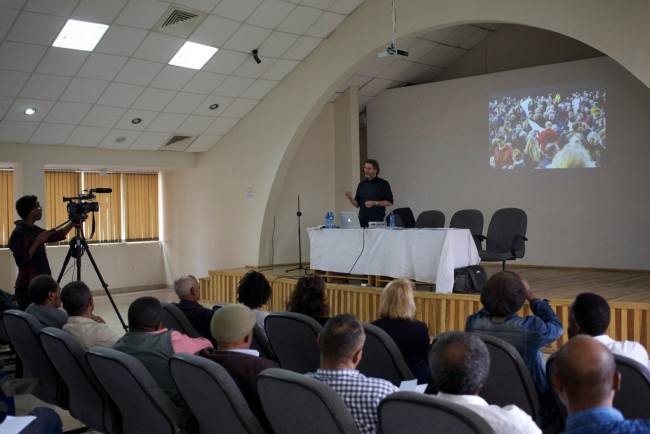
Olafur Eliasson: Vortrag und Buchvorstellung
„Turning Thinking into Doing into Art“: Lecture, project presentation and book launch by Olafur Eliasson
Alle School of Fine Arts and Design, Addis Ababa University
Olafur Eliasson talks about archives and archiving practices as methods and inspiration for artistic and educational practices. He introduces the project Acting Archives – Media Lab for Artistic Research and Education, shows video excerpts from the project archive and presents the technical infrastructure of the media container and the forthcoming accompanying guidebook. He then goes on to present the publication „Olafur Eliasson. Turning Thinking into Doing into Art. Four Lectures in Addis Ababa„, that contains four lectures that Olafur Eliasson delivered in Addis Abeba in 2012 in the context of a collaboration between the Institut für Raumexperimente and the Alle School of Fine Arts and Design in Addis Abeba.
„Turning Thinking into Doing into Art“: Vortrag, Projektpräsentation und Buchvorstellung von Olafur Eliasson
Alle School of Fine Arts and Design, Addis Ababa University
Olafur Eliasson spricht über Archive und archivarische Praxis als Methode und Inspiration für künstlerische und edukative Praxis. Er stellt das Projekt Acting Archives – Medienlabor für künstlerische Forschung und Bildung vor und zeigt filmische Beispiele aus dem Projektarchiv und stellt die technische Ausstattung des Medienkontainer und das zugehörige Handbuch vor. Darüberhinaus präsentiert er die Publikation „Olafur Eliasson. Turning Thinking into Doing into Art. Four Lectures in Addis Ababa„, die vier Vorträge zusammenfasst, die Olafur Eliasson im Rahmen einer Zusammenarbeit des Institutes für Raumexperimente mit der Alle School of Fine Arts and Design in Addis Abeba hielt.
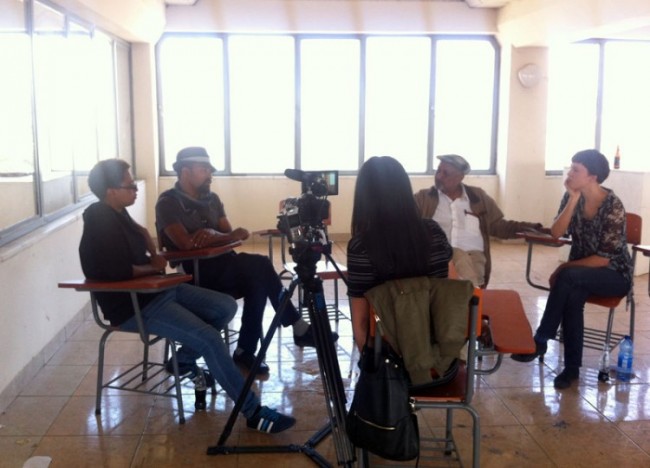
A-B-A-B-A : from here to hear (workshop)
A-B-A-B-A : from here to hear is the third experimental get-together of poets, musicians and translators based in Addis Ababa and in Berlin, who join in this exercise of styles taking place at the Alle School of Fine Arts and Design. Testing new structures and methods in a dialogue, the workshop sets out to explore oral traditions in Amharic poetry culture, translations and interpretations between German, English and Amharic, and performative elements on stage, including music traditions from traditional Ethiopian music, jazz elements and contemporary electronic music.
Participating artist: Clara Jo (artist, Berlin), Mihret Kebede (poet, Addis Abeba), Erica Licht (poet, Addis Ababa), Robert Lippok (musician, Berlin), Bekele Mekonnen (poet, Addis Ababa), Nebiy Mekonnen (poet/translator, Addis Ababa), Abebaw Melaku (poet, Addis Abeba), Rike Scheffler (poet, Berlin), Misrak Terefe (poet, Addis Abeba), Moseb Traditional Music Band (Addis Ababa), and Christina Werner (Berlin).
This event is choreographed by Mihret Kebede and Christina Werner as part of Acting Archives, a project by the Institut für Raumexperimente, Berlin University of the Arts and the Alle School of Fine Arts and Design, Addis Ababa University, supported by Studio Olafur Eliasson, and funded by the TURN Fund of the German Federal Cultural Foundation.
A-B-A-B-A : from here to hear ist die dritte experimentelle Lyrikveranstaltung, die Dichter, Musiker und Übersetzer aus Addis Abeba und Berlin im Rahmen dieser Stilübungen zusammenbringt. Der Workshop findet an der Alle School of Fine Arts and Design statt. Dort werden neue Strukturen und Methoden im gemeinsamen Dialog getestet: der Workshop lädt ein, sich mit der Tradition mündlicher Überlieferung in der amharischen Poesie-Kultur zu befassen, mit Übersetzungen und Interpretationen zwischen Deutsch, Englisch und Amharisch als auch mit performativen Aufführungselementen, mit Musiktraditionen der traditionellen äthiopischen Musik, Jazz-Elementen und zeitgenössicher elektronischen Musik.
Teilnehmende Künstler: Clara Jo (artist, Berlin), Mihret Kebede (poet, Addis Abeba), Erica Licht (poet, Addis Ababa), Robert Lippok (musician, Berlin), Bekele Mekonnen (poet, Addis Ababa), Nebiy Mekonnen (poet/translator, Addis Ababa), Abebaw Melaku (poet, Addis Abeba), Rike Scheffler (poet, Berlin), Misrak Terefe (poet, Addis Abeba), Moseb Traditional Music Band (Addis Ababa), and Christina Werner (Berlin).
Eine Veranstaltung, choreographiert von Mihret Kebede and Christina Werner, im Rahmen von Acting Archives, einem Projekt des Instituts für Raumexperimente der Universität der Künste Berlin und der Alle School of Fine Arts and Design, Addis Ababa University, unterstützt durch Studio Olafur Eliasson, gefördert im Fonds TURN der Kulturstiftung des Bundes.

Poetry Jazz Night in Awash
Poetry Jazz Night in Awash National Park near Addis Ababa with contributions by Mihret Kebede (poet, Addis Abeba), Erica Licht (poet, Addis Ababa), Nebiy Mekonnen (poet/translator, Addis Ababa), Abebaw Melaku (poet, Addis Abeba), Rike Scheffler (poet, Berlin), Misrak Terefe (poet, Addis Abeba), Moseb Traditional Music Band (Addis Ababa), and others. Hosted by Tobiya Poetic Jazz, Addis Ababa in collaboration with NTO, Addis Ababa and Institut für Raumexperimente, Berlin.
—
This event is part of Acting Archives, a project by the Institut für Raumexperimente, Berlin University of the Arts and the Alle School of Fine Arts and Design, Addis Ababa University, supported by Studio Olafur Eliasson, and funded by the TURN Fund of the German Federal Cultural Foundation.
Poetry Jazz Night im Awash National Park nahe Addis Abebas mit Beiträge von: Mihret Kebede (Dichterin, Addis Abeba), Erica Licht (Dichterin, Addis Ababa), Nebiy Mekonnen (Dichterin/Übersetzerin, Addis Ababa), Abebaw Melaku (Dichter, Addis Abeba), Rike Scheffler (Dichterin, Berlin), Misrak Terefe (Dichterin, Addis Abeba), Moseb Traditional Music Band (Addis Ababa), und andere.
Tobiya Poetic Jazz, Addis Ababa in Zusammenarbeit mit NTO, Addis Ababa und Institut für Raumexperimente, Berlin.
—
Eine Veranstaltung im Rahmen von Acting Archives, einem Projekt des Instituts für Raumexperimente der Universität der Künste Berlin und der Alle School of Fine Arts and Design, Addis Ababa University, unterstützt durch Studio Olafur Eliasson, gefördert im Fonds TURN der Kulturstiftung des Bundes.
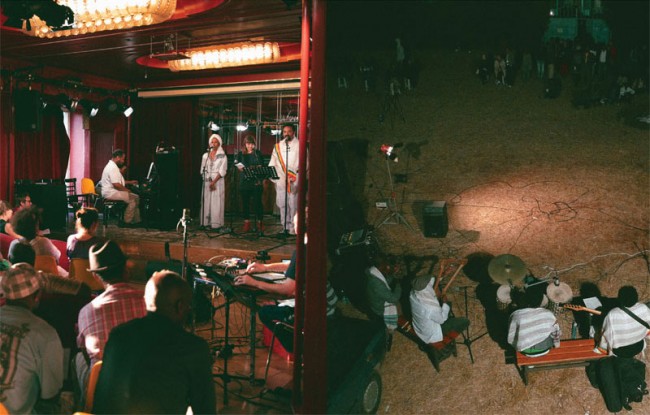
Poetry Jazz Night, Concert, CD & Film Release in Addis Ababa
Poetry Jazz Night, Concert & CD Release and Filmscreening
27 February 2015, 20:00
Alliance Ethio-Française d’Addis-Abeba
Wavel street
Addis Ababa, Ethiopia
A-B-A-B-A : from here to hear is an experiment with rhythms of poetry, soundings, in-voicing, performing, rehearsing, translating and playing together. It is the third experimental get-together of poets, musicians and translators based in Addis Ababa and in Berlin, who join in this exercise of styles.
Spoken poetry has a long history in Ethiopia, with Poetic Jazz being one of its contemporary expressions. Poetic Jazz crosses genetic material from music and poetry in a way that discovers a style and form based in listening. Rhythms, styles, and modes of playing are created between the musicians and the poets and reflect the specific quality of the poems being performed.
Contemporary expressions of this tradition are tested in an artistic dialogue by Gashaw Abateneh (musician, Addis Ababa), Mihret Kebede (poet, Addis Abeba), Erica Licht (poet, Addis Ababa), Robert Lippok (musician, Berlin), Bekele Mekonnen (poet, Addis Ababa), Nebiy Mekonnen (poet/translator, Addis Ababa), Abebaw Melaku (poet, Addis Abeba), Rike Scheffler (poet, Berlin), Misrak Terefe (poet, Addis Abeba), and Moseb Traditional Music Band (Addis Ababa).
On the occasion a new album is launched, featuring recordings of the latest experimental live performances which took place in Berlin in July 2014. Spanning Amharic, English and German, the album A-B-A-B-A : from hear to here includes poems, performances, translations and sounds by Eric Ellingsen (poet/writer, Berlin/US), Mihret Kebede (poet, Addis Abeba), Robert Lippok (musician, Berlin), Abebaw Melaku (poet, Addis Abeba), Jorga Mesfin (musician, Addis Abeba), Rike Scheffler (poet, Berlin), Misrak Terefe (poet, Addis Abeba), Uljana Wolf (poet, Berlin). The release is accompanied by a documentary and short film by artist and film maker Clara Jo (Berlin/US).
About the participating artists, poets and musicians
Gashaw Abateneh is a renowned musician and performer, known for his patriotic recitals and performances of Ethiopian battle songs in traditional acting style. He regularly stars at the Ethiopian National Theatre.
Mihret Kebede is an artist, poet, and the founding director of the Netsa Art Village artist collective in Addis Ababa. Renowned for her poetry readings and experimental artworks, Kebede is also a founding member of Tobiya Poetic Jazz Group and is featured on the Tobiya poetic jazz DVD, Vol.1.
Erica Licht focuses her research and work on creating bridges between community members and stakeholders, through dialogue and holistic environmentally conscious curriculum. Her practice has spanned leadership development, radio production, and anti-violence programs, including sites of the African Diaspora and Sub-Saharan Africa, with long-term posts in Trinidad, Jamaica, Uganda, Nigeria, Ethiopia, and the United States. Erica holds a B.A. in Africana Studies and Geography from Vassar College, where she was the recipient of the Paul Robeson Prize for the best senior thesis in the Department of Africana Studies, and the Frederic C. Wood Prize for excellence in morals and ethics.
Robert Lippok is a musician and artist based in Berlin. He is a cofounder of the music groups Ornament und Verbrechen and To Rococo Rot. Recent works include ηχώ at the Festival of Future Nows, Neue Nationalgalerie Berlin (2014); the album Instrument with To Rococo Rot (City Slang, 2014); Daylightastronomy, music performance, Mutek, Montreal, Canada (2014); 24h Dahlem, music for a video installation by Clara Jo (2012–14); The Persistence of Memory, music performance with Nino Errera, Ethnologisches Museum, Berlin (2014); and Betón Brut, with Ronald Lippok, music for an exhibition by Arno Brandlhuber, NBK, Berlin (2014).
Abebaw Melaku is a poet and journalist. He is a founding member of Tobiya Poetic Jazz Group and a radio journalist affiliated with the Ethiopian radio show ‘Addis Zema’. He published a volume of poetry called Keradion in 2007 and an audio poetry CD in 2008.
The Moseb Traditional Music Band was established in 2013 with musicians playing basic traditional music instruments like base and lead kirar, drum, flute and masinko. They have been performing at different stages, cultural institutes, theatres, and jazz clubs, and have also collaborated with other established musicians in the country on various occasions. The band includes members: Tewodros Alemu (Saxophone), Solomon Betre Mariyam (Trumphet), Biniam Dagnachew (Lead kirar), Abu Gebre (Flute), Yigerem Gulilat (Bass kirar), Dawit Lisanu (Masinko), Robel Solomon (Drums).
Bekele Mekonnen is a visual artist, poet, and educator. He has had numerous critically acclaimed exhibitions in Ethiopia, Europe and the USA, and has been awarded a number of residencies, fellowships, and awards both at home and abroad, including the Chicago Artists International Program, the Scholar Rescue Fund, and at the Maryland Institute College of Art in Baltimore, Maryland, USA. Bekele earned a Masters degree in Fine Arts from Moscow State Institute of Fine Arts in 1993. He served two terms (2000-2004 and 2009-2011) as the director of Ale School of Fine Arts and Design in Addis Ababa, where he is currently teaching as an Assistant Professor. From 2008-2010 he was director of the Modern Art Museum / Gebre Kristos Desta Center in Addis Ababa.
Rike Scheffler, based in Berlin, creates work at the intersection of poetry and music. She has published work in many journals and anthologies, and has set them in song, text, and tone collages for the stage. She studied creative writing at the Deutschen Literaturinstitut in Leipzig and psychology at the Freie Universität in Berlin. Her poetry collection der rest ist resonanz appeared in the fall of 2014 from kookbooks Verlag. Rike Scheffler was a finalist at the 20th Open Mike and a grant recipient of the Stiftung Brandenburger Tor in Copenhagen. She helped found the poetry collective G13, a group of writers who bring together poetry with experimental stage productions and regularly organise open writing workshops in Berlin in an effort to encourage solidarity and a critical exchange among authors. She enjoys challenging common perceptions through small words and sounds and creating spaces through language.
Misrak Terefe is an Ethiopian poet and the first female poet to publish a poetry VCD. She has contributed to different group publications with other writers and is featured on the Tobiya poetic jazz DVD, Vol.1. She is also a founding member of Tobiya Poetic Jazz Group, having been involved with the organization since 2008.
In dialogue with:
Nebiy Mekonnen is a renowned poet, journalist, playwright and translator who has published poetry books and various essays. Nebiy is best known for “Negem lela ken new”, a translation into Amharic of the novel “Gone with the Wind”, which he wrote on 3000 cigarette paper pieces while in prison for a decade during the Derge Regime. He is also editor-in-chief of the popular weekly newspaper Addis Admass.
Christina Werner is a curator and educator based in Berlin. She is co-director of the Institut für Raumexperimente and co-initiator and coordinator of the project Acting Archives–Media Lab for Artistic Research and Education developing collaboration and education formats between artists and educators based in Addis Ababa and Berlin on the subject of artistic translation and proactive archiving.
—
This event is part of Acting Archives, a project by the Institut für Raumexperimente, Berlin University of the Arts and the Alle School of Fine Arts and Design, Addis Ababa University. It is choreographed by Mihret Kebede and Christina Werner and hosted by the Alliance Ethio-Française d’Addis-Abeba; supported by Studio Olafur Eliasson, and funded by the TURN Fund of the German Federal Cultural Foundation.
Poetry Jazz Night, Concert & CD Release and Filmscreening
27. Februar 2015, 20:00
Alliance Ethio-Française d’Addis-Abeba
Wavel street
Addis Ababa, Ethiopia
A-B-A-B-A : from here to hear ist die dritte experimentelle Lyrikveranstaltung, die Dichter, Musiker und Übersetzer aus Addis Abeba und Berlin im Rahmen dieser Stilübungen zusammenbringt. Der Workshop findet an der Alle School of Fine Arts and Design statt. Dort werden neue Strukturen und Methoden im gemeinsamen Dialog getestet: der Workshop lädt ein, sich mit der Tradition mündlicher Überlieferung in der amharischen Poesie-Kultur zu befassen, mit Übersetzungen und Interpretationen zwischen Deutsch, Englisch und Amharisch als auch mit performativen Aufführungselementen, mit Musiktraditionen der traditionellen äthiopischen Musik, Jazz-Elementen und zeitgenössicher elektronischen Musik. Die gemeinsamen Proben finden ihren Höhepunkt in einem Poesie-Konzert-Abend, der in der Alliance Ethio-Française d’Addis-Abeba stattfindet und von einer CD-Vorstellung und der Premiere des Dokumentarfilms von Clara Jo begleitet wird.
Teilnehmende Künstler sind Gashaw Abateneh, Mihret Kebede, Erica Licht, Robert Lippok, Bekele Mekonnen, Nebiy Mekonnen, Abebaw Melaku, Rike Scheffler, Misrak Terefe und die Moseb Traditional Music Band.
Über die teilnehmenden Künstler, Poeten und Musiker:
Clara Jo ist Künstlerin, lebt und arbeitet in Berlin.
Gashaw Abateneh ist ein renommierter Musiker und Performer, bekannt für seine patriotischen Vokalstücke und den performativen Vortrag von traditionellen äthiopischen Krieg- und Kampflieder. Er tritt regelmäßig im Äthiopischen Nationaltheater auf.
Mihret Kebede ist eine Künstlerin, Dichterin und Gründungsdirektorin des Netsa Art Village Künstlerkollektivs in Addis Abeba. Sie ist für ihre Gedichtlesungen und experimentellen Kunstwerke bekannt und außerdem Gründungsmitglied der Tobiya Poetic Jazz Group, auf deren Platte Tobiya Poetic Jazz DVD, Vol.1. sie zu hören ist.
Erica Licht ist Beraterin und Mediatorin, die im Bereich der Entwicklung von Führungsqualitäten, von Radioproduktionen und von Gewaltpräventionsprogrammen arbeitet. Sie ist Fulbright Scholar und der Schwerpunkt ihrer Forschung und Arbeit ist es, zwischen Community- Mitgliedern und verschiedenen Interessengruppen durch Dialog und ganzheitliche umweltbewusste Themensetzung zu vermitteln. Die afrikanischen Diaspora und Afrika südlich der Sahara sind Teil ihrer Forschung, verbunden mit langfristigen Aufenthalten in Trinidad, Jamaika, Uganda, Nigeria, Äthiopien und den Vereinigten Staaten. Erica schloss mit einem B.A. in African Studies und Geographie von Vassar College ab, sie erhielt den Paul Robeson Preis für die beste Abschlussarbeit im Fachbereich African Studies und den Frederic C. Wood-Preis für Spitzenleistungen im Bereich Moral und Ethik.
Robert Lippok ist ein in Berlin lebender Musiker und Künstler. Er ist Mitbegründer der Bands Ornament und Verbrechen und To Rococo Rot. Aktuelle Arbeiten umfassen ηχώ im Rahmen des Festival of Future Nows an der Neuen Nationalgalerie Berlin (2014), das Album Instrument mit To Rococo Rot (City Slang, 2014), die Musikperformance Daylightastronomy, Mutek, Montreal, Canada (2014), ein Musikvideo zu einer Installation von Clara Jo (2012–14); Die Musikperformance The Persistence of Memory gemeinsam mit Nino Errera, Ethnologisches Museum Berlin (2014); sowie Betón Brut gemeinsam mit Ronald Lippok, Musik für eine Ausstellung von Arno Brandlhuber, NBK, Berlin (2014).
Bekele Mekonnen ist bildender Künstler, Dichter und Pädagoge. Er hat zahlreiche Ausstellungsbeteilungen in Äthiopien, Europa und den USA und eine Reihe von Residenzen, Stipendien und Auszeichnungen im In- und Ausland, darunter am Maryland Institute College of Art in Baltimore, Maryland, US, das Chicago Artists International Program, und Scholar Rescue Fund. Bekele erwarb 1993 seinen Master-Abschluss Kunst an der Moskauer Hochschule für Malerei, Bildhauerei und Architektur. Er diente zwei Amtszeiten (2000 – 2004 und 2009 – 2011) als Direktor der Alle School of Fine Arts and Design, wo er derzeit als Professor lehrt. Von 2008 – 2010 war er Direκtor des Museums für Moderne Kunst / Gebre Kristos Desta Center in Addis Abeba.
Abebaw Melaku ist Dichter und Journalist. Er ist Gründungsmitglied der Tobiya Poetic Jazz Goup und arbeitet als Radiojournalist.Er hat im Jahr 2007 einen Gedichtband mit dem Titel Keradion herausgegeben sowie eine Audio- CD mit Gedichten im Jahr 2008.
Misrak Terefe ist äthiopische Dichterin und die erste weibliche Dichterin die eine VCD mit Gedichten herausbrachte. Sie trug zu verschiedenen Gruppenpublikationen bei und ist auf der Tobiya Poetic Jazz DVD, Vol.1. zu hören. Außerdem ist sie Gründungsmitglied der Tobiya Poetic Jazz Group mit der sie seit dem Jahr 2008 zusammenarbeitet.
Rike Scheffler lebt in Berlin und arbeitet auf der Grenze zwischen Dichtung und Musik. Sie hat in verschiedenen Journals und Anthologien veröffentlicht und ihre Arbeiten als Lieder, Texte und Klangcollagen für die Bühne adaptiert. Sie studierte Kreatives Schreiben am Deutschen Literaturinstitut in Leipzig und Psychologie an der Freien Universität Berlin. Ihre Gedichtsammlung der rest ist resonanz erschien im Herbst 2014 bei kookbooks. Rike Scheffler war eine Finalistin des 20. Open Mike und Stipendiantin der Stiftung Brandenburger Tor in Kopenhagen. Sie ist Mitbegründerin des Lyrikkollektivs G13, einer Autorengruppe Gruppe die Dichtung mit experimenteller Bühnenproduktion zusammenbringt und in regelmäßigen Abständen offene Schreibworkshops in Berlin veranstaltet, um Solidarität und kritischen Austausch zwischen KünstlerInnen zu unterstützen. Sie hinterfragt mit Vorliebe als gegeben vorausgesetzte Wahrnehmung durch kleine Wortinterventionen, Klänge und Sprachräume.
Moseb Traditional Music Band wurde vor zwei Jahren gegründet, die Mitglieder spielen traditionelle Musikinstrumente wie Kirar, Trommel, Flöte und Masink. Die Band etablierte sich mit ihrem Programm und spielt in Kulturinstituten, Theatern und Jazz-Clubs. Die Band kooperiert regelmäßig mit anderen äthiopischen Musikern. Moseb Traditional Music Band (Addis Abeba): Tewodros Alemu (Saxophon), Solomon Betre Mariyam (Trompete), Biniam Dagnachew Poesie-Workshop und Veranstaltung A-B-A-B-A : from here to hear (Lead Kirar), Abu Gebre (Flöte), Yigerem Gulilat (Bass Kirar), Dawit Lisanu (Masinko), Robel Solomon (Schlagzeug).
Im Gespräch mit:
Nebiy Mekonnen ist ein bekannter Dichter, Journalist, Dramatiker und Übersetzer, der Poesie-Bücher und verschiedene Aufsätze veröffentlicht hat. Nebiy Mekonnen ist bekannt für “Negem lela ken neu”, eine Übersetzung des Buches “Vom Winde verweht” ins Amharische, die er auf 3000 einzelnen Zigarettenpapierstücke während seiner Jahre im Gefängnis während des Derge Regimes schrieb. Er ist darüber hinaus Chefherausgeber der beliebten Wochenzeitung “Addis admass”.
Christina Werner kuratierend und lehrend in Berlin tätig. Sie ist Co-Direktorin des Instituts für Raumexperimente und Co-Initiatorin des Projekts Acting Archiv – Media Lab für künstlerische Forschung und Bildung, das die Entwicklung von Kooperationen für Kunst- und Bildungsformate zwischen Künstlern und Lehrenden aus Addis Ababa und Berlin zu Themen von Übersetzung und proaktiver Archivierung mit künstlerischen Mitteln verfolgt.
—
Eine Veranstaltung im Rahmen von Acting Archives, einem Projekt des Instituts für Raumexperimente der Universität der Künste Berlin und der Alle School of Fine Arts and Design, Addis Ababa University. Die Veranstaltung ist choreographiert von Mihret Kebede and Christina Werner, in Zusammenarbeit mit der Alliance Ethio-Française d’Addis-Abeba; unterstützt durch Studio Olafur Eliasson, gefördert im Fonds TURN der Kulturstiftung des Bundes.
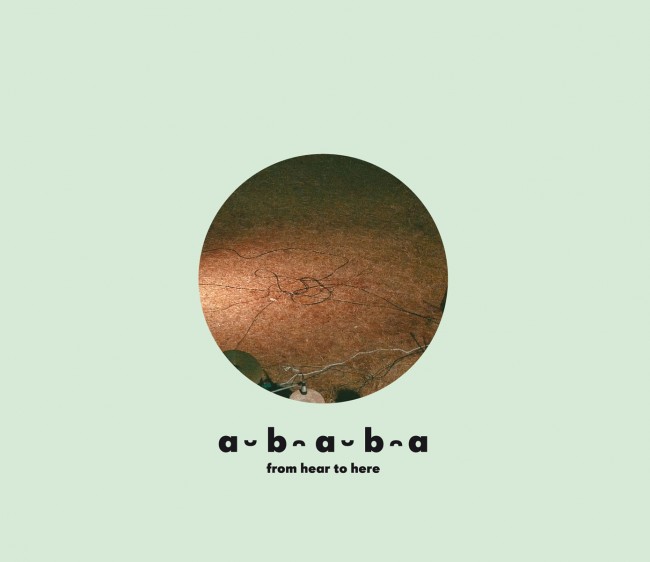
A-B-A-B-A : from hear to here (album)
Alphabet
False Friends and Babeltrack
It's me
Ambassel
Husbands of My Dear Country
A-B-A-B-A : from hear to here features recordings of a series of experimental live performances which took place in Berlin in July 2014. Blending structures of listening, playing and translating, the CD documents the concert and poetry night realised together with Palais Wittgenstein in Roter Salon at the Volksbühne Berlin. Spanning Amharic, English and German, the album a-b-a-b-a : from hear to here includes poems, performances, translations and sounds by the following poets, musicians and translators:
Eric Ellingsen (poet/writer, Berlin/US), Mihret Kebede (poet, Addis Ababa), Robert Lippok (musician, Berlin), Abebaw Melaku (poet, Addis Ababa), Jorga Mesfin (musician, Addis Ababa), Rike Scheffler (poet, Berlin), Misrak Terefe (poet, Addis Ababa), Uljana Wolf (poet/translator, Berlin).
Tracks
1. I’m in
performed by Eric Ellingsen, Mihret Kebede, Abebaw Melaku, and Misrak Terefe
2. All Here’s / አሜን Amen – A Blessing
poem written and performed by Eric Ellingsen / blessing performed by Mihret Kebede, accompanied by Abebaw Melaku and Misrak Terefe
3. Ethio Jazz introduction
by Jorga Mesfin (saxophone)
4. ፊደል Alphabet / False Friends and Babeltrack
performed by Mihret Kebede, Abebaw Melaku, Jorga Mesfin (piano), and Misrak Terefe / performed by Uljana Wolf
5. እኔ ነኝ It’s Me
poem written and performed by Abebaw Melaku, accompanied by Mihret Kebede, Robert Lippok (live electronics), Jorga Mesfin (piano), and Misrak Terefe
6. አምባሰል Ambassel
saxophone solo performed by Jorga Mesfin
7. False Friends introduction
by Uljana Wolf
8. False Friends
poem written and performed by Uljana Wolf
9. አቃጅ / The Planner
poem by Mihret Kebede, translated by Uljana Wolf; performed by Mihret Kebede and Uljana Wolf
10. የሀገሬ ባሎች / Husbands of My Dear Country
poem by Mihret Kebede, translated by Eric Ellingsen, Jorga Mesfin, and Uljana Wolf; performed by Mihret Kebede and Uljana Wolf, accompanied by Jorga Mesfin (piano)
11. Murmur
poem written and performed by Eric Ellingsen, accompanied by Robert Lippok (live electronics) and Jorga Mesfin (piano)
12. አድዋ Adwa
poem written and performed by Abebaw Melaku, accompanied Mihret Kebede, Robert Lippok (live electronics), Jorga Mesfin (saxophone), and Misrak Terefe
13. እንቁጣጣሽ / Enkutatash
poem by Misrak Terefe, translated by Rike Scheffler; performed by Misrak Terefe and Rike Scheffler, accompanied by Mihret Kebede, Abebaw Melaku, and Jorga Mesfin (piano)
14. angenommen aber
poem written and performed by Rike Scheffler, accompanied by Robert Lippok (live electronics)
15. Honey, I’m home
poem written and performed by Rike Scheffler, accompanied by Misrak Terefe
16. Jan Meda
by Robert Lippok (live electronics) and Jorga Mesfin (saxophone)
17. Twisted
poem written and performed by Eric Ellingsen, accompanied by Robert Lippok (live electronics)
18. እስከማዕዜኑ / Up to the End
poem by Abebaw Melaku, translated by Eric Ellingsen and Jorga Mesfin; performed by Abebaw Melaku and Eric Ellingsen, accompanied by Mihret Kebede, Jorga Mesfin (saxophone), and Misrak Terefe
19. Heart
poem by Eric Ellingsen, performed by Eric Ellingsen, Mihret Kebede, Robert Lippok, Abebaw Melaku, Jorga Mesfin, Rike Scheffler, Misrak Terefe, and Uljana Wolf
Album: a-b-a-b-a : from hear to here; CD: 19 tracks, 70 min; Recorded and mixed by Robert Lippok; Mastered by Bo Kondren at Calyx Mastering Berlin; Manufactured by Gusstaff Records; Graphic design by Basics09; Produced by Christina Werner & Robert Lippok & Institut für Raumexperimente, UdK Berlin; 2015
—
A-B-A-B-A : from hear to here is part of Acting Archives, a project by the Institut für Raumexperimente, Berlin University of the Arts and the Alle School of Fine Arts and Design, Addis Ababa University, supported by Studio Olafur Eliasson, and funded by the TURN Fund of the German Federal Cultural Foundation.
Alphabet
False Friends and Babeltrack
It's me
Ambassel
Husbands of My Dear Country
A-B-A-B-A : from hear to here präsentiert Aufnahmen einer experimentellen Live-Performance, die im Juli 2014 in Berlin stattfand. Die CD dokumentiert diesen Poesie-Konzertabend, der in Zusammenarbeit mit Palais Wittgenstein im Roten Salon der Volksbühne Berlin realisiert wurde und auf Formen von Zuhören, Improvisieren und Übersetzen basiert. Das Album a-b-a-b-a : from hear to here umfasst Gedichte, Performances, Übersetzungen und Vertonungen auf Amharisch, Deutsch und Englisch und stellt die folgenden Dichter, Musiker und Übersetzer vor:
Eric Ellingsen (Dichter/Autor, Berlin/US), Mihret Kebede (Dichterin, Addis Abeba), Robert Lippok (Musiker, Berlin), Abebaw Melaku (Dichter, Addis Abeba), Jorga Mesfin (Musiker, Addis Abeba), Rike Scheffler (Dichterin, Berlin), Misrak Terefe (Dichterin, Addis Abeba), Uljana Wolf (Dichterin/Übersetzerin, Berlin).
Titel
1. I’m in
vorgetragen von Eric Ellingsen, Mihret Kebede, Abebaw Melaku und Misrak Terefe
2. All Here’s / አሜን Amen – A Blessing
Gedicht verfasst und vorgetragen von Eric Ellingsen / vorgetragen von Mihret Kebede, begleitet von Abebaw Melaku und Misrak Terefe
3. Ethio Jazz introduction
von Jorga Mesfin (Saxophon)
4. ፊደል Alphabet / False Friends and Babeltrack
vorgetragen von Mihret Kebede, Abebaw Melaku, Jorga Mesfin (Klavier), und Misrak Terefe / vorgetragen von Uljana Wolf
5. እኔ ነኝ It’s Me
Gedicht verfasst und vorgetragen von Abebaw Melaku, begleitet Mihret Kebede, Robert Lippok (Live-Electronics), Jorga Mesfin (Klavier) und Misrak Terefe
6. አምባሰል Ambassel
Saxophon-Solo von Jorga Mesfin
7. False Friends introduction
von Uljana Wolf
8. False Friends
Gedicht verfasst und vorgetragen von Uljana Wolf
9. አቃጅ / The Planner
Gedicht von Mihret Kebede, übersetzt von Uljana Wolf; vorgetragen von Mihret Kebede und Uljana Wolf
10. የሀገሬ ባሎች / Husbands of My Dear Country
Gedicht von Mihret Kebede, übersetzt von Eric Ellingsen, Jorga Mesfin, und Uljana Wolf; vorgetragen von Mihret Kebede und Uljana Wolf, begleitet Jorga Mesfin (Klavier)
11. Murmur
Gedicht verfasst und vorgetragen von Eric Ellingsen, begleitet von Robert Lippok (Live-Electronics) und Jorga Mesfin (Klavier)
12. አድዋ Adwa
Gedicht verfasst und vorgetragen von Abebaw Melaku, begleitet von Mihret Kebede, Robert Lippok (Live-Electronics), Jorga Mesfin (Saxophon) und Misrak Terefe
13. እንቁጣጣሽ / Enkutatash
Gedicht von Misrak Terefe, übersetzt von Rike Scheffler; vorgetragen von Misrak Terefe und Rike Scheffler, begleitet von Mihret Kebede, Abebaw Melaku und Jorga Mesfin (Klavier)
14. angenommen aber
Gedicht verfasst und vorgetragen von Rike Scheffler, begleitet von Robert Lippok (Live-Electronics)
15. Honey, I’m home
Gedicht verfasst und vorgetragen von Rike Scheffler, begleitet von Misrak Terefe
16. Jan Meda
von Robert Lippok (Live-Electronics) und Jorga Mesfin (Saxophon)
17. Twisted
Gedicht verfasst und vorgetragen von Eric Ellingsen, begleitet von Robert Lippok (Live-Electronics)
18. እስከማዕዜኑ / Up to the End
Gedicht von Abebaw Melaku, übersetzt von Eric Ellingsen und Jorga Mesfin; vorgetragen von Abebaw Melaku und Eric Ellingsen, begleitet von Mihret Kebede, Jorga Mesfin (Saxophon) und Misrak Terefe
19. Heart
Gedicht von Eric Ellingsen, vorgetragen von Eric Ellingsen, Mihret Kebede, Robert Lippok, Abebaw Melaku, Jorga Mesfin, Rike Scheffler, Misrak Terefe und Uljana Wolf
Titel: A-B-A-B-A : from hear to here; CD: 19 Titel, 70 min; Aufnahme: Robert Lippok; Mastering: Bo Kondren bei Calyx Mastering Berlin; Produziert von Gusstaff Records; Grafikdesign von Basics09; Herausgegeben von Christina Werner & Robert Lippok & Institut für Raumexperimente, UdK Berlin; 2015
—
A-B-A-B-A : from hear to here entstand im Rahmen von Acting Archives, einem Projekt des Instituts für Raumexperimente der Universität der Künste Berlin und der Alle School of Fine Arts and Design, Addis Ababa University, unterstützt durch Studio Olafur Eliasson, gefördert im Fonds TURN der Kulturstiftung des Bundes.
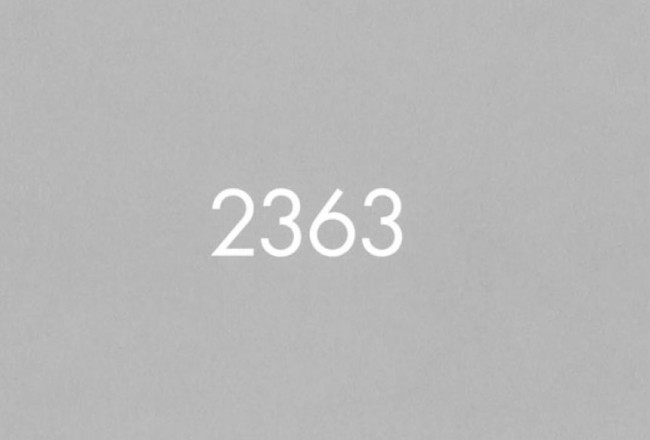
Pro-Positions – Art and / as Education
Olafur Eliasson, Eric Ellingsen and Christina Werner in conversation with Nico Dockx.
In the double publication Contradictions. Royal Academy of Fine Arts Antwerp 2013-1663. Pro-Positions: Art and / as Education. 2363-2013. Els De bruyn, Nico Dockx & Johan Pas (eds.), published by MER.PaperKunsthalle, 2014.
Download PDF.
Olafur Eliasson, Eric Ellingsen and Christina Werner in conversation with Nico Dockx.
In the double publication Contradictions. Royal Academy of Fine Arts Antwerp 2013-1663. Pro-Positions: Art and / as Education. 2363-2013. Els De bruyn, Nico Dockx & Johan Pas (eds.), published by MER.PaperKunsthalle, 2014.
Download PDF.
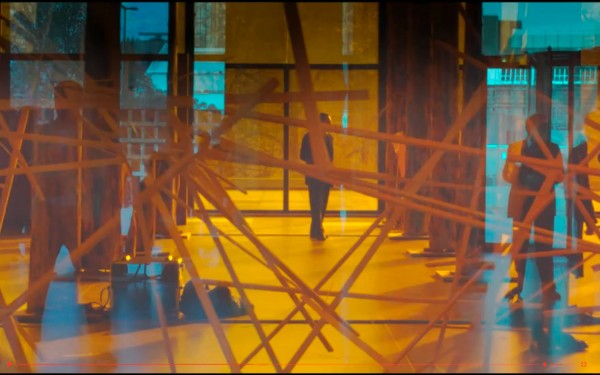
Reflections: Ein Film von SHIMURAbros
Reflections: Filmic impressions of the Festival of Future Nows at Neue Nationalgalerie, Staatliche Museen zu Berlin. A film by SHIMURAbros.
Reflections: Filmische Impressionen des Festival of Future Nows in der Neuen Nationalgalerie, Staatliche Museen zu Berlin. Ein Film von SHIMURAbros.

Festival of Future Nows / Neue Nationalgalerie
From October 30th to November 1st, 2014, the Festival of Future Nows brings together performances, sculptures, talks, and installations by 100 artists, who have been part of the past five years of program of the Institut für Raumexperimente at the Berlin University of the Arts. The festival will be held within the David Chipperfield exhibition Sticks and Stones at the Neue Nationalgalerie in Berlin.
With contributions by AEAEAEAE, Diego Agulló, Jamie Allen, Berhanu Ashagrie Deribew, Malte Bartsch, Simon Bauer, Viktor Bedö, Julius von Bismarck, Ally Bisshop, Bling Bling Recycling Collective, Rune Bosse, Jan Bünnig, Andreas Bunte, Anton Burdakov, Lucas Buschfeld, Manuel Breuer, Luz Broto, Merlin Carter, Julian Charrière, Cooking Sections, Nico Dockx & Clara Meister, Elise Eeraerts, Olafur Eliasson, Leon Eixenberger, Eric Ellingsen, Tomás Espinosa, Maresa Anna Fiege, Jan Fiege, Nina Fischer & Maroan el Sani, Thilo Frank, Ivana Franke, Kendell Geers, Fabian Geimer-Lorusso, Tamrat Gezahegne, Hildur Guðnadóttir, Andreas Greiner, Perry Hall, Egon Hanfstingl, Elín Hansdóttir, Lutz Henke, Friedrich Herz, Elaine W. Ho, Markus Hoffmann, Jeremias Holliger, Rike Horb, Rafael Ibarra, Petja Ivanova, Asako Iwama, Jeroen Jacobs, Clara Jo, Hans Jóhannsson, Anne Duk Hee Jordan, Institut für Raumexperimente, Mihret Kebede, Felix Kiessling, Fabian Knecht, Andreas Koch, Steen Koerner, Takehito Koganezawa, Hans-Henning Korb, Norgard Kröger, Jeewi Lee, Deborah Ligorio, Robert Lippok, Amelie Marei Löllmann, Anastasia Loginova, Yutaka Makino, Gabrielle Mainguy, Ayumi Matsuzaka, Natasha Mendonca, Rodrigo Maltez Novaes, Felix Meyer, Vladimir Miller, Jorge Miñano, Mette Moestrup, Meike Nittel, Timea Anita Ovarecz, osa_office for subversive architecture, Kirsten Palz, Ece Pazarbaşı, Anton Peitersen, Sophia Pompéry, Claudio Puntin, Anne Rauch, Marcela Reichelt, Vinzenz Reinecke, Michal B. Ron, Macarena Ruiz-Tagle, Aykan Safoğlu, Joel Scott, Tiago Romagnani Silveira, Yorgos Sapountzis, Rike Scheffler, Nina Schuiki, Daniela Seel, Matthias Sohr, Diana Sprenger, Dan Stockholm, Yuichiro Tamura, Robel Temesgen, Alkistis Thomidou, Fernanda Trevellin, Alvaro Urbano, Kat Válastur, Quynh Vantu, Vlado Velkov, Ósk Vilhjálmsdóttir, Shira Wachsmann, Raul Walch, Jonas Wendelin, Jan St. Werner, Dr. Uwe Westphal, Louwrien Wijers, Euan Williams, Hendrik Wolking, Helen Zeru.
—
A project by the Institut für Raumexperimente, Berlin University of the Arts in collaboration with the Neue Nationalgalerie
Supported by Einstein Foundation Berlin, TURN Fund of the German Federal Cultural Foundation, Goethe-Institut Addis Ababa, Jacqueline Diffring Foundation, Museum & Location GmbH, Studio Olafur Eliasson, Verein der Freunde der Nationalgalerie.
www.futurenows.net/2014
Das Festival of Future Nows versammelt künstlerische Arbeiten, Performances, Lesungen und Interaktionen von 100 KünstlerInnen, die in den vergangenen fünf Jahren am Programm des Instituts für Raumexperimente der Universität der Künste Berlin teilnahmen. Das Festival findet vom 30.10 bis zum 1.11.2014 in der Ausstellung Sticks and Stones von David Chipperfield in der Neuen Nationalgalerie statt.
Mit Beiträgen von AEAEAEAE, Diego Agulló, Jamie Allen, Berhanu Ashagrie Deribew, Malte Bartsch, Simon Bauer, Viktor Bedö, Julius von Bismarck, Ally Bisshop, Bling Bling Recycling Collective, Rune Bosse, Jan Bünnig, Andreas Bunte, Anton Burdakov, Lucas Buschfeld, Manuel Breuer, Luz Broto, Merlin Carter, Julian Charrière, Cooking Sections, Nico Dockx & Clara Meister, Elise Eeraerts, Olafur Eliasson, Leon Eixenberger, Eric Ellingsen, Tomás Espinosa, Maresa Anna Fiege, Jan Fiege, Nina Fischer & Maroan el Sani, Thilo Frank, Ivana Franke, Kendell Geers, Fabian Geimer-Lorusso, Tamrat Gezahegne, Hildur Guðnadóttir, Andreas Greiner, Perry Hall, Egon Hanfstingl, Elín Hansdóttir, Lutz Henke, Friedrich Herz, Elaine W. Ho, Markus Hoffmann, Jeremias Holliger, Rike Horb, Rafael Ibarra, Petja Ivanova, Asako Iwama, Jeroen Jacobs, Clara Jo, Hans Jóhannsson, Anne Duk Hee Jordan, Institut für Raumexperimente, Mihret Kebede, Felix Kiessling, Fabian Knecht, Andreas Koch, Steen Koerner, Takehito Koganezawa, Hans-Henning Korb, Norgard Kröger, Jeewi Lee, Deborah Ligorio, Robert Lippok, Amelie Marei Löllmann, Anastasia Loginova, Yutaka Makino, Gabrielle Mainguy, Ayumi Matsuzaka, Natasha Mendonca, Rodrigo Maltez Novaes, Felix Meyer, Vladimir Miller, Jorge Miñano, Mette Moestrup, Meike Nittel, Timea Anita Ovarecz, osa_office for subversive architecture, Kirsten Palz, Ece Pazarbaşı, Anton Peitersen, Sophia Pompéry, Claudio Puntin, Anne Rauch, Marcela Reichelt, Vinzenz Reinecke, Michal B. Ron, Macarena Ruiz-Tagle, Aykan Safoğlu, Joel Scott, Tiago Romagnani Silveira, Yorgos Sapountzis, Rike Scheffler, Nina Schuiki, Daniela Seel, Matthias Sohr, Diana Sprenger, Dan Stockholm, Yuichiro Tamura, Robel Temesgen, Alkistis Thomidou, Fernanda Trevellin, Alvaro Urbano, Kat Válastur, Quynh Vantu, Vlado Velkov, Ósk Vilhjálmsdóttir, Shira Wachsmann, Raul Walch, Jonas Wendelin, Jan St. Werner, Dr. Uwe Westphal, Louwrien Wijers, Euan Williams, Hendrik Wolking, Helen Zeru.
—
Institut für Raumexperimente, Universität der Künste Berlin in Zusammenarbeit mit der Neuen Nationalgalerie
Unterstützt von Einstein Stiftung Berlin, Fonds TURN der Kulturstiftung des Bundes, Goethe-Institut Addis Abeba, Jacqueline Diffring Foundation, Museum & Location GmbH, Studio Olafur Eliasson, Verein der Freunde der Nationalgalerie.
www.futurenows.net/2014

Vlado Velko: Projekttreffen
Meeting with Vlado Velkov to discuss invitation to competition at Kunstverein Arnsberg and proposal critique, invited by Christina Werner
Friederike Horbrügger & Fabian Knecht, Sky Paintings, Arnsberg, 2010
Arbeitstreffen mit Vlado Velkov: Einladung zum Wettbewerb für den Kunstverein Arnsberg und Kritik von Projektvorschlägen, eingeladen von Christina Werner
Friederike Horbrügger & Fabian Knecht, Sky Paintings, Arnsberg, 2010
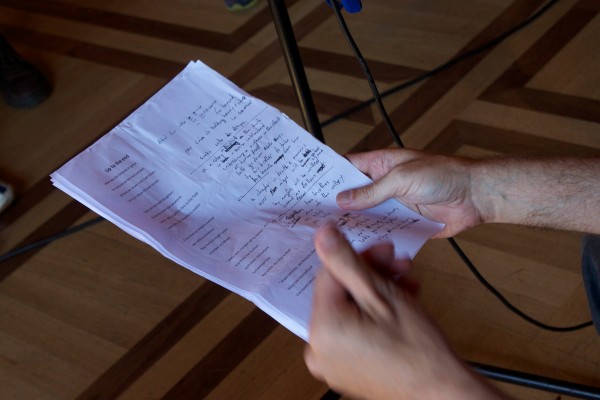
A-B-A-B-A : Übersetzungs-Workshop
Translation from Amharric to English with Eric Ellingsen (poet/writer, Berlin/US), Mihret Kebede (poet, Addis Abeba), Abebas Melaku (poet, Addis Abeba), Jorga Mesfin (musician/interpreter, Addis Abeba), Rike Scheffler (poet, Berlin), Misrak Terefe (poet, Addis Abeba), Uljana Wolf (poet, Berlin)
—
This event is part of Acting Archives, a project by the Institut für Raumexperimente, Berlin University of the Arts and the Alle School of Fine Arts and Design, Addis Ababa University, supported by Studio Olafur Eliasson, and funded by the TURN Fund of the German Federal Cultural Foundation.
Übersetzungsarbeit mit Eric Ellingsen (Dichter/Autor, Berlin/USA), Mihret Kebede (Dichterin, Addis Abeba), Abebaw Melaku (Dichter, Addis Abeba), Jorga Mesfin (Musiker/Dolmetscher, Addis Abeba), Rike Scheffler (Dichterin, Berlin), Misrak Terefe (Dichterin, Addis Abeba), Uljana Wolf (Dichterin, Berlin)
—
Eine Veranstaltung im Rahmen von Acting Archives, einem Projekt des Instituts für Raumexperimente der Universität der Künste Berlin und der Alle School of Fine Arts and Design, Addis Ababa University, unterstützt durch Studio Olafur Eliasson, gefördert im Fonds TURN der Kulturstiftung des Bundes.
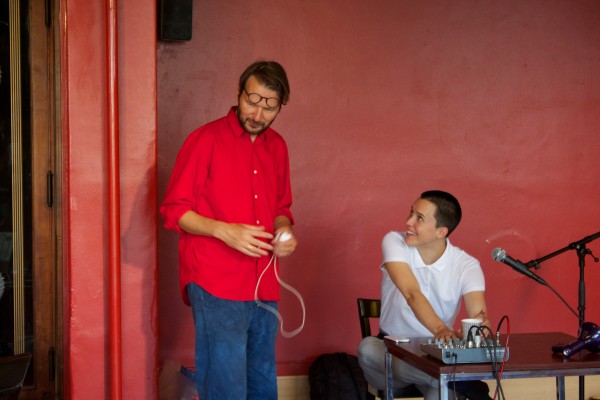
A-B-A-B-A : Workshop, Tag 2
17, 18, 19 July 2014: workshop and rehearsal
Participants: Eric Ellingsen (poet/writer, Berlin/US), Mihret Kebede (poet, Addis Abeba), Robert Lippok (musician, Berlin), Abebaw Melaku (poet, Addis Abeba), Jorga Mesfin (musician, Addis Abeba), Ari Benjamin Meyers (composer/conductor, Berlin/US), Rike Scheffler (poet, Berlin), Misrak Terefe (poet, Addis Abeba), Uljana Wolf (poet, Berlin), and others
—
This event is part of Acting Archives, a project by the Institut für Raumexperimente, Berlin University of the Arts and the Alle School of Fine Arts and Design, Addis Ababa University, supported by Studio Olafur Eliasson, and funded by the TURN Fund of the German Federal Cultural Foundation.
17./18./19. Juli 2014: Workshop und Probe
Gäste: Eric Ellingsen (Dichter/Autor, Berlin/USA), Mihret Kebede (Dichterin, Addis Abeba), Robert Lippok (Musiker, Berlin), Abebaw Melaku (Dichter, Addis Abeba), Jorga Mesfin (Musiker, Addis Abeba), Ari Benjamin Meyers (Komponist/Dirigent, Berlin/USA), Rike Scheffler (Dichterin, Berlin), Misrak Terefe (Dichterin, Addis Abeba), Uljana Wolf (Dichterin, Berlin), und andere.
—
Eine Veranstaltung im Rahmen von Acting Archives, einem Projekt des Instituts für Raumexperimente der Universität der Künste Berlin und der Alle School of Fine Arts and Design, Addis Ababa University, unterstützt durch Studio Olafur Eliasson, gefördert im Fonds TURN der Kulturstiftung des Bundes.
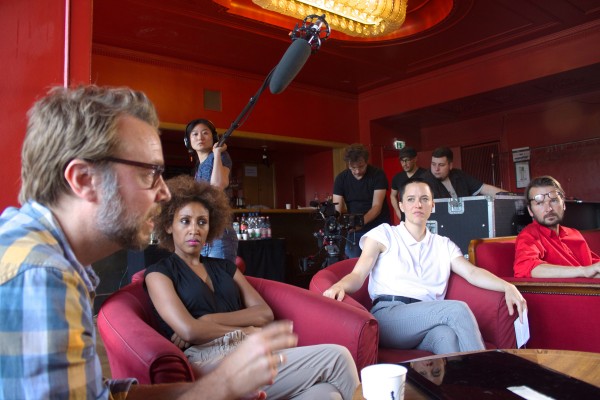
A-B-A-B-A : Workshop, Tag 1
17, 18, 19 July 2014: workshop and rehearsal
Spoken poetry has a long history in Ethiopia. Often traversed with hidden meanings, this lyrical form is known as „Wax and Gold“. During A-B-A-B-A : from hear to here contemporary expressions of this tradition will be tested in an artistic dialogue. Ethiopian poetry today refers to itself as Jazz Poetry. Jazz Poetry crosses genetic material from music and poetry in a way, which discovers a style and forms based in listening. Through listening, rhythms and styles and modes of playing are created between the musicians and the poets particular to the poems and poets performing. During the workshop and presentation we will use this structure of listening and playing. Music and artistic styles and styles of critiquing poetry, particular to some European and US poetry today, will be mixed in.
Participants: Eric Ellingsen (poet/writer, Berlin/US), Mihret Kebede (poet, Addis Abeba), Robert Lippok (musician, Berlin), Abebaw Melaku (poet, Addis Abeba), Jorga Mesfin (musician, Addis Abeba), Ari Benjamin Meyers (composer/conductor, Berlin/US), Rike Scheffler (poet, Berlin), Misrak Terefe (poet, Addis Abeba), Uljana Wolf (poet, Berlin), and others
Documentary: Poetic Jazz Ethiopia
—
This event is part of Acting Archives, a project by the Institut für Raumexperimente, Berlin University of the Arts and the Alle School of Fine Arts and Design, Addis Ababa University, supported by Studio Olafur Eliasson, and funded by the TURN Fund of the German Federal Cultural Foundation.
17./18./19. Juli 2014: Workshop und Probe
In Äthiopien hat insbesondere die gesprochene Lyrik eine lange Geschichte. Oft mit verborgenen Bedeutungskomponenten durchzogen ist die lyrische Form auch als „Wax and Gold“ bekannt. Zeitgenössische Ausdrucksformen dieser Tradition werden im künstlerischen Dialog mit anderen Wort- und Dichtkünsten erprobt. Die eingeladenen Künstler aus Äthiopien kreuzen in ihrer als Jazz Poetry bezeichneten Performance Einflüsse aus Musik, Poesie und Rezitation, wodurch ein Zusammenspiel aus Rhythmen, Metren und Stilen erst beim Zuhören zwischen Musikern, Dichtern und Publikum entsteht. Im Rahmen des Workshops fließen diese musikalischen und künstlerisch-poetischen Stilmittel, aber auch Rezitations- und Kritikformen, die in der europäischen und amerikanischen Lyrik verbreitet sind, ein.
Gäste: Eric Ellingsen (Dichter/Autor, Berlin/USA), Mihret Kebede (Dichterin, Addis Abeba), Robert Lippok (Musiker, Berlin), Abebaw Melaku (Dichter, Addis Abeba), Jorga Mesfin (Musiker, Addis Abeba), Ari Benjamin Meyers (Komponist/Dirigent, Berlin/USA), Rike Scheffler (Dichterin, Berlin), Misrak Terefe (Dichterin, Addis Abeba), Uljana Wolf (Dichterin, Berlin), und andere.
Documentation: Poetic Jazz Ethiopia
—
Eine Veranstaltung im Rahmen von Acting Archives, einem Projekt des Instituts für Raumexperimente der Universität der Künste Berlin und der Alle School of Fine Arts and Design, Addis Ababa University, unterstützt durch Studio Olafur Eliasson, gefördert im Fonds TURN der Kulturstiftung des Bundes.
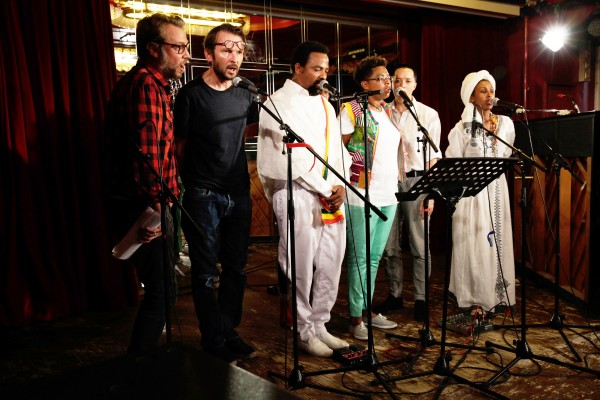
A-B-A-B-A: from hear to here. Poetry Jazz at Roter Salon
ROTER SALON, VOLKSBÜHNE, BERLIN
Saturday, 19.7.2014, 19.30–21.30 h
Eric Ellingsen (poet/writer, Berlin/US), Mihret Kebede (poet, Addis Ababa), Robert Lippok (musician, Berlin), Abebaw Melaku (poet, Addis Ababa), Jorga Mesfin (musician, Addis Ababa), Rike Scheffler (poet, Berlin), Misrak Terefe (poet, Addis Ababa), Uljana Wolf (poet, Berlin)
—
A-B-A-B-A : from hear to here is part of Acting Archives, a project by the Institut für Raumexperimente, Berlin University of the Arts and the Alle School of Fine Arts and Design, Addis Ababa University, supported by Studio Olafur Eliasson, and funded by the TURN Fund of the German Federal Cultural Foundation. It is choreographed by Christina Werner and Eric Ellingsen, and realised together with Palais Wittgenstein / Roter Salon at the Volksbühne Berlin.
ROTER SALON, VOLKSBÜHNE, BERLIN
Samstag, 19.7.2014, 19.30–21.30 Uhr
Eric Ellingsen (Dichter/Autor, Berlin/USA), Mihret Kebede (Dichterin, Addis Abeba), Robert Lippok (Musiker, Berlin), Abebaw Melaku (Dichter, Addis Abeba), Jorga Mesfin (Musiker, Addis Abeba), Ari Benjamin Meyers (Komponist/Dirigent, Berlin/USA), Rike Scheffler (Dichterin, Berlin), Misrak Terefe (Dichterin, Addis Abeba), Uljana Wolf (Dichterin, Berlin).
—
A-B-A-B-A : from hear to here ist eine Veranstaltungsreihe im Rahmen von Acting Archives, einem Projekt des Instituts für Raumexperimente der Universität der Künste Berlin und der Alle School of Fine Arts and Design, Addis Ababa University, unterstützt durch Studio Olafur Eliasson, gefördert im Fonds TURN der Kulturstiftung des Bundes, realisiert in Zusammenarbeit mit Palais Wittgenstein/Roter Salon an der Volksbühne Berlin.
Künstlerische Leitung: Christina Werner und Eric Ellingsen.
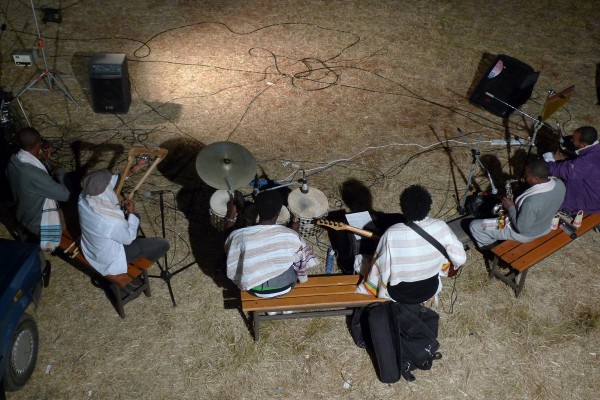
A-B-A-B-A : from hear to here
A-B-A-B-A : from hear to here is an experiment on rhythms of poetry, soundings, in-voicing, performing, playing, rehearsing, and talking together. In this exercise of style, poets and musicians from Ethiopia joined international poets, musicians, artists, and translators based in Berlin for a workshop taking place at the Institut für Raumexperimente and the Roter Salon at the Volksbühne Berlin between July 11 – 19, culminating in a poetry night on Saturday, July 19.
Spoken poetry has a long history in Ethiopia. Often loaded with hidden meanings, this lyrical form is known as “Wax and Gold”. During A-B-A-B-A : from hear to here, contemporary expressions of this tradition were tested in an artistic dialogue. Ethiopian poetry today refers to itself as “Poetic Jazz”. Poetic Jazz crosses genetic material from music and poetry in a way that discovers a style and form based in listening. Rhythms, styles, and modes of playing are created between the musicians and the poets and reflect the specific quality of the poems being performed. A weeklong workshop in Berlin blended structures of listening and playing. Music and artistic approaches and styles of critiquing poetry, particular to some European and US poetry today, entered the mix as well. The workshop led to a poetry concert night with contributions by Eric Ellingsen, Mihret Kebede, Robert Lippok, Abebaw Melaku, Jorga Mesfin, Misrak Terefe, Rike Scheffler, and Uljana Wolf.
Participants are: Eric Ellingsen (poet/writer, Berlin/US), Mihret Kebede (poet, Addis Abeba), Robert Lippok (musician, Berlin), Abebaw Melaku (poet, Addis Abeba), Jorga Mesfin (musician, Addis Abeba), Ari Benjamin Meyers (composer/conductor, Berlin/US), Rike Scheffler (poet, Berlin), Misrak Terefe (poet, Addis Abeba), Uljana Wolf (poet, Berlin), and others
—
A-B-A-B-A : from hear to here is part of Acting Archives, a project by the Institut für Raumexperimente, Berlin University of the Arts and the Alle School of Fine Arts and Design, Addis Ababa University. It is choreographed by Christina Werner and Eric Ellingsen, and realised together with Palais Wittgenstein / Roter Salon at the Volksbühne Berlin; supported by Studio Olafur Eliasson, and funded by the TURN Fund of the German Federal Cultural Foundation.
A-B-A-B-A : from hear to here ist ein Dreier-Beat aus Workshop, Performance und Dokumentation – ein Zusammenspiel aus Poesie, Sprache, Übersetzung, Musik, Spiel, Probe und Gespräch. Das Experiment bringt Dichter und Musiker aus Addis Abeba, Äthiopien, mit internationalen Künstlern, Dichtern, Musikern und Übersetzern zusammen, die in Berlin leben und arbeiten.
In Äthiopien hat insbesondere die gesprochene Lyrik eine lange Geschichte. Oft mit verborgenen Bedeutungskomponenten durchzogen ist die lyrische Form auch als „Wax and Gold“ bekannt. Zeitgenössische Ausdrucksformen dieser Tradition werden im künstlerischen Dialog mit anderen Wort- und Dichtkünsten erprobt. Die eingeladenen Künstler aus Äthiopien kreuzen in ihrer als Jazz Poetry bezeichneten Performance Einflüsse aus Musik, Poesie und Rezitation, wodurch ein Zusammenspiel aus Rhythmen, Metren und Stilen erst beim Zuhören zwischen Musikern, Dichtern und Publikum entsteht. Im Rahmen des drei-tägigen Workshops fließen diese musikalischen und künstlerisch-poetischen Stilmittel, aber auch Rezitations- und Kritikformen, die in der europäischen und amerikanischen Lyrik verbreitet sind, ein.
Teilnehmende Künstler: Eric Ellingsen (Dichter/Autor, Berlin/USA), Mihret Kebede (Dichterin, Addis Abeba), Robert Lippok (Musiker, Berlin), Abebaw Melaku (Dichter, Addis Abeba), Jorga Mesfin (Musiker, Addis Abeba), Ari Benjamin Meyers (Komponist/Dirigent, Berlin/USA), Rike Scheffler (Dichterin, Berlin), Misrak Terefe (Dichterin, Addis Abeba), Uljana Wolf (Dichterin, Berlin), und andere.
—
A-B-A-B-A : from hear to here ist eine Veranstaltungsreihe im Rahmen von Acting Archives, einem Projekt des Instituts für Raumexperimente der Universität der Künste Berlin und der Alle School of Fine Arts and Design, Addis Ababa University, choreographiert von Christina Werner und Eric Ellingsen, realisiert in Zusammenarbeit mit Palais Wittgenstein/Roter Salon an der Volksbühne Berlin, unterstützt durch Studio Olafur Eliasson, gefördert im Fonds TURN der Kulturstiftung des Bundes.
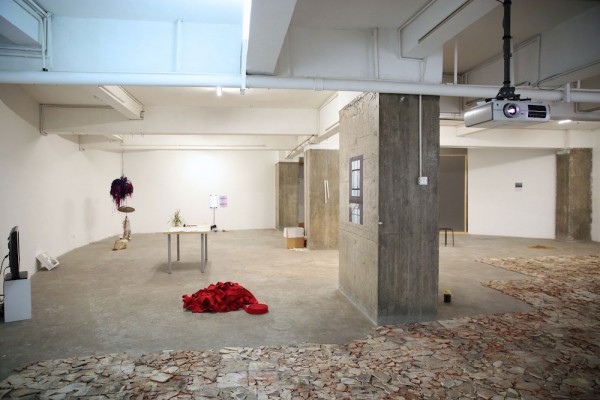
Walk-In-Progress
WORKS BY: AEAEAEAE, Malte Bartsch, Rune Bosse, Merlin Carter, Leon Eixenberger, Eric Ellingsen, Tomas Espinosa, Hu Fang, Markus Hoffmann, Jeremias Holliger, Elaine W. Ho, Rike Horb., Fabian Knecht, Felix Kiessling, Hans-Henning Korb, Norgard Kröger, Fotini Lazaridou-Hatzigoga, Felix Meyer, Vinzenz Reinecke, Nina Schuiki, Tamura Yuichiro, Kat Válastur, Raul Walch, Joanna Warsza, Christina Werner, Euan Williams
CHOREOGRAPHED BY
Christina Werner & Eric Ellingsen
Co-produced and hosted by Vitamin Creative Space, Guangzhou, open to the public from 10.2.-10.3.2014.
Walk and public encounter on 17.1.2014.
View Exhibition Website
The Institut für Raumexperimente traveled to Hong Kong, Shenzhen/Dongguan, Guangzhou and Beijing from 9.-25.1.2014. Walk-in-progress is an experiment timing space, primed by the experiences of traveling to meet, leaning into spatial relationships inveigling mental distances, generating moving stories, motions and emotions of scale, speeds slowing, perceptual political contracts of effort and energy, attention spanning directionality, agencies agency. Walk-in-progress shares ideas motion.
The projects are ideas and interventions, images action. Some are precise statements, others errant dreams, others personal distortions and curated delusions. Some are autonomous projects soon to be realized, unknown characters operated on by translations, parts carried and realized in other places, co-authored in the approach, attempts and pitches for projects to come, reflections given to fade.
On Friday 17.1.2014 a silent walk, designed by Eric Ellingsen, Christina Werner, Joanna Warsza, led across downtown Guangzhou, spreading from the Xingang Middle Road, Chigang Market and Vitamin Creative Space featuring time-based works and interventions.
Silent Walk Manual: With a group or alone, walk through part of a city without speaking for at least 30 minutes. While walking, give continuous and focused attention to the loudest sound you hear around you by looking in every direction in which you hear something.
The walk meandered on and ended up on a rooftop, morphed into a celebration, the celebration continued as a gathering inside Vitamin Creative Space with common dumplings cooking, drinks, actions and performances, followed by evening drinks at the near by street vendors, accompanied by further performances.
With special thanks to: Zhang Wei & Hu Fang & team & Olafur Eliasson
mit Arbeiten von: AEAEAEAE, Malte Bartsch, Rune Bosse, Merlin Carter, Leon Eixenberger, Eric Ellingsen, Tomas Espinosa, Hu Fang, Markus Hoffmann, Jeremias Holliger, Elaine W. Ho, Rike Horb., Fabian Knecht, Felix Kiessling, Hans-Henning Korb, Norgard Kröger, Fotini Lazaridou-Hatzigoga, Felix Meyer, Vinzenz Reinecke, Nina Schuiki, Tamura Yuichiro, Kat Válastur, Raul Walch, Joanna Warsza, Christina Werner, Euan Williams
choreografiert von:
Christina Werner & Eric Ellingsen
Koproduziert und veranstaltet von Vitamin Creative Space, Guangzhou, geöffnet 10.2.-10.3.2014.
Walk und Aktionen in der Stadt am 17.1.2014.
Website der Ausstellung anschauen
Das Institut für Raumexperimente bereiste Hong Kong, Shenzhen/Dongguan, Guangzhou und Peking vom 9.-25.1.2014. Walk-in-progress ein Experiment, das versucht, Räume zeitlich zu fassen, sich räumlichen Beziehungen anzunähern, sich von mentalen Distanzen verleiten zu lassen, bewegte Geschichten und Geschichten von Bewegung zu erzählen und Maßstäbe für Emotionen zu verschieben, Geschwindigkeiten zu verlangsamen, es fokussiert Übereinkünfte von Wahrnehmungspolitiken, Verhältnisse zu Anstrengung und Energie, Wahrnehmungsdauer und -gerichtetheit, das Wirken des Wirkenden. Walk-in-progress teilt Ideen und Bewegungen.
Die Projekte sind Ideen und Interventionen, Aktionen. Einige sind präzise Statements, andere umherschweifende Träume, persönliche Verwerfungen und ausgewählte Irrwege. Einige sind selbständige Projekte, die kurz vor ihrer Realisierung stehen; andere unbekannte, Übersetzungen unterworfene Zeichen; Fragmente, die anderswo entstanden sind oder mitgenommen wurden, gemeinsam hervorgebrachte Ansätze, Vorschläge und Entwürfe für Zukünftiges, Reflektionen, die verblassen dürfen.
Am Freitag, dem 17.1.2014, führte ein von Eric Ellingsen, Christina Werner und Joanna Warsza konzipierter, stummer „Walk“ durch die Altstadt Guangzhous und verband entlang des Weges verschiedene Interventionen und performative Arbeiten.
Anleitung für den „Silent Walk“: Laufe allein oder mit einer Gruppe für mindestens eine halbe Stunde schweigend durch eine Stadt. Richtet während des Laufens eure Aufmerksamkeit beständig auf das lauteste Geräusch in der Umgebung und schaut in dessen Richtung.
Der Spaziergang endete auf einem Hochhausdach, verwandelte sich in eine Eröffnungsfeier, die sich in den Ausstellungsräumen im Vitamin Creative Space fortsetzte und dort mit gemeinsamem Kochen und dem Zubereiten von Dumplings, Aktionen und Performances begangen wurde und mit Drinks am lokalen Straßenkiosk und weiteren performativen Aktionen endete.
Mit besonderem Dank an Zhang Wei, Hu Fang & Team, and Olafur Eliasson
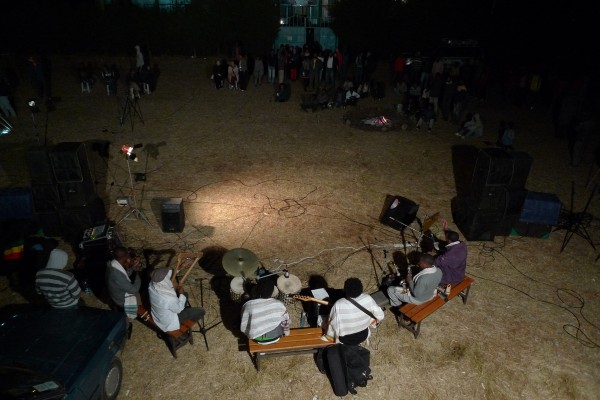
Ishe get ‘um, OK Poetry
poetry readings by Misrak Terefe, Vinzenz Reinecke, Demissew Mersha, Eric Ellingsen, Mihret Kebede, and Abebaw Melaku
poetry readings by Misrak Terefe, Vinzenz Reinecke, Demissew Mersha, Eric Ellingsen, and Tadele Tewodros
Mihret Kebede and Abebaw Melaku
Ishe get ‘um, OK Poetry is an event bringing together poetry readings and performances, language experiments, and music, including contributions by Eric Ellingsen, Mihret Kebede, Misrak Terefe, Abebaw Melaku, Demissew Mersha, Vinzenz Reinecke, Tadele Tewodros, and the Addis Taem Band. Organised by Eric Ellingsen and Mihret Kebede, the event takes place on occasion of Jan Meda – Großes Feld, an art festival hosted by the Institut für Raumexperimente, 13–15 December 2012, Addis Ababa, Ethiopia.
Short biographies
Eric Ellingsen co-directed the Institut für Raumexperimente at UdK, Berlin from 2009 to 2014. He established Species of Space in 2009 as a platform through which art, architecture, writing and performance can converge through spatial practices. He publishes creative and critical writing regularly, and gives performance/lectures. Some of his long-term projects involve collaborations with a retired police sketch artist, a Turkish shoe cobbler, translators, a sound engineer, a dance choreographer, an artist and a sign language instructor, and a food systems planner.
Mihret Kebede is an artist, poet, and the founding director of the Netsa Art Village artist collective in Addis Ababa. Renowned for her poetry readings and experimental artworks, Kebede is a founding member of Tobiya Poetic Jazz Group and is featured on the Tobiya Poetic Jazz DVD, Vol.1.
Abebaw Melaku is a poet and journalist. He is a founding member of Tobiya Poetic Jazz Group and a radio journalist affiliated with the Ethiopian radio show Addis Zema. He published a volume of poetry called Keradion in 2007 and an audio poetry CD in 2008.
Demissew Mersha is an Ethiopian poet who has been active in the Addis Ababa poetry scene for over 13 years. He has contributed to different group publications with other writers and is featured on the Tobiya Poetic Jazz DVD, Vol.1. He is also a founding member of the Tobiya Poetic Jazz Group.
Vinzenz Reinecke is an artist, writer, stonemason, poet, traveller, chess player, musician, and storyteller. Before he moved to Berlin to study at the Institut für Raumexperimente, he was a journeyman, travelling for three years and one day. During this time, he also worked for Canterbury Cathedral.
Misrak Terefe is an Ethiopian poet and the first female poet to publish a poetry VCD. She has contributed to different group publications with other writers and is featured on the Tobiya Poetic Jazz DVD, Vol.1. She is also a founding member of Tobiya Poetic Jazz Group, having been involved with the organisation since 2008.
Tadele Tewodros is an educator for hearing-impaired children, currently teaching at the Menelik Elementary School in Addis Ababa. Tewodros will graduate with an MA in Special Needs Education from Addis Ababa University in 2015. He performed his own poems using sign language during the event Ishe get ‘um, OK Poetry.
Addis Taem Band, established by six young musicians in 2011, blends together the instruments and techniques of traditional and modern music. More recently, they have worked with Tobiya Poetic Jazz Group, and the band can be found performing in a variety of venues in both Addis Ababa and other parts of Ethiopia.
Misrak Terefe, Vinzenz Reinecke, Demissew Mersha, Eric Ellingsen, Mihret Kebede und Abebaw Melaku
Misrak Terefe, Vinzenz Reinecke, Demissew Mersha, Eric Ellingsen und Tadele Tewodros
Mihret Kebede und Abebaw Melaku
Ishe get ‘um, OK Poetry ist eine Veranstaltung die eine Kombination präsentiert aus Gedichtlesungen und Performances, Sprachexperimenten und Musik mit Beiträgen von Eric Ellingsen, Mihret Kebede, Misrak Terefe, Abebaw Melaku, Demissew Mersha, Vinzenz Reinecke, Tadele Tewodros, und der Addis Taem Band. Die Veranstaltung ist ein Kooperationsprojekt von Eric Ellingsen und Mihret Kebede und findet im Rahmen des Festivals Jan Meda – Großes Feld statt.
Kurzbiografien
Eric Ellingsen war von 2009 bis 2014 Co-Direktor des Instituts für Raumexperimente an der UdK in Berlin. Er gründete im Jahr 2009 die Plattform Species of Space als einen Ort an dem Kunst, Architektur, Text und Performance durch räumliche Praktiken zueinander finden können. Er veröffentlicht regelmäßig kreative und kritische Texte und gibt Performances sowie Vorlesungen. Einige seiner Langzeitprojekte realisiert er in Zusammenarbeit mit einem Gerichtszeichner im Ruhestand, einem türkischen Schuster, Übersetzern, einem Tontechniker, einer Tanzchoreografin, einem Künstler und einem Lehrer für Zeichensprache sowie einer Ernährungssystemplanerin.
Mihret Kebede ist eine Künstlerin, Dichterin und Gründungsdirektorin des Netsa Art Village Künstlerkollektivs in Addis Abeba. Sie ist für ihre Gedichtlesungen und experimentellen Kunstwerke bekannt und außerdem Gründungsmitglied der Tobiya Poetic Jazz Group, auf deren Platte Tobiya Poetic Jazz DVD, Vol.1. sie zu hören ist.
Abebaw Melaku ist Dichter und Journalist. Er ist Gründungsmitglied der Tobiya Poetic Jazz Goup und arbeitet als Radiojournalist und moderiert regelmässig die Sendung „Addis Zema“. Er hat im Jahr 2007 einen Gedichtband mit dem Titel Keradion herausgegeben sowie eine Audio-CD mit Gedichten im Jahr 2008.
Demissew Mersha ist ein äthiopischer Dichter und als solcher seit 13 Jahren in der Poesieszene Addis Abebas aktiv. Er hat zu verschiedenen Gruppenpublikationen beigetragen und ist auf der Tobiya Poetic Jazz DVD, Vol.1 zu hören. Er ist außerdem Gründungsmitglied der Tobiya Poetic Jazz Group.
Vinzenz Reinecke ist Künstler, Schriftsteller, Bildhauer, Dichter, Reisender, Schachspieler, Musiker und Erzähler. Bevor er für ein Studium am Institut für Raumexperimente nach Berlin zog, war er permanent Reisender und als solcher drei Jahre und einen Tag unterwegs. Während dieser Zeit arbeitete er außerdem für die Canterbury Cathedral.
Misrak Terefe ist die erste äthiopische Dichterin die eine VCD mit Gedichten herausbrachte. Sie trug zu verschiedenen Gruppenpublikationen bei und ist auf der Tobiya Poetic Jazz DVD, Vol.1. zu hören. Außerdem ist sie Gründungsmitglied der Tobiya Poetic Jazz Group mit der sie seit dem Jahr 2008 zusammenarbeitet.
Tadele Tewodros ist Lehrer für Kinder mit Hörbehinderung und lehrt momentan an der Menelik Grundschule in Addis Abeba. Tewodros wird seinen MA in Special Needs Education an der Addis Abeba University im Jahr 2015 abschließen. Er performte seine eigenen Gedichte während des Event Ishe get ‘um, OK Poetry und setzte hierfür Zeichensprache ein.
Addis Taem Band ist von sechs jungen Musikern im Jahr 2011 ins Leben gerufen und kombiniert Instrumente und Techniken der traditionellen und modernen Musik. Die Band tritt regelmäßig mit der Tobiya Poetic Jazz Group auf und spielt an zahlreichen Orten in Addis Abeba sowie in anderen Teilen Äthiopiens.
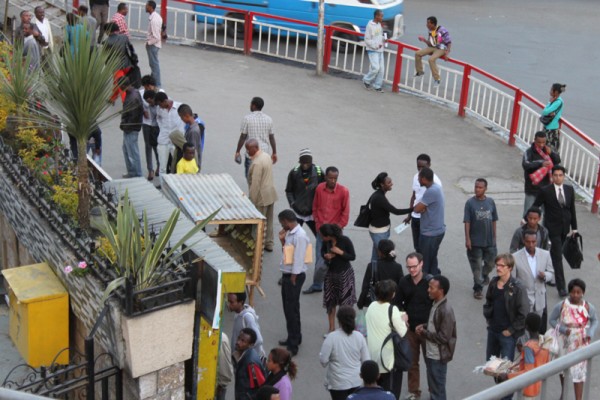
Acting Archives
The project Acting Archives – Media Lab for Artistic Research and Education offers an interdisciplinary platform of exchange and collaboration between Ethiopian, German and international artists and theorists on the subject of artistic research and archiving. The project includes two symposia and an exhibition of contemporary Ethiopian art and performance art in Berlin. The participants will also develop discursive and artistic formats for presentation purposes in Berlin and Addis Ababa. The project will kick off with a symposium on the methods and theories of archiving and the creation of artistic knowledge. The second symposium will explore experimentation as a method of artistic research and education in 2014. To ensure long-term archiving and knowledge transfer, the project will also create a media container for storing comprehensive, net-based digital documentation of all the lectures, case studies and discussions of the events, as well as selected transcripts and publications by the project’s participants.
—
Acting Archives is a project by the Institut für Raumexperimente, Berlin University of the Arts and the Alle School of Fine Arts and Design, Addis Ababa University, supported by Studio Olafur Eliasson, and funded by the TURN Fund of the German Federal Cultural Foundation.
Archives Works Marathon
Das Projekt Acting Archives – Medienlabor für künstlerische Forschung und Bildung bietet eine interdisziplinäre edukative Modellplattform für den Austausch und die Zusammenarbeit zwischen äthiopischen, deutschen und internationalen Künstler/innen und Theoretiker/innen zum Thema künstlerische Forschung und Archivierung. Im Rahmen des Projekts werden zwei Symposien und eine Ausstellung zeitgenössischer äthiopischer Kunst und Performance in Berlin stattfinden; für Berlin und Addis Abeba wird darüber hinaus ein Mediencontainer erarbeitet. Den Auftakt des Projekts bildet ein Symposium zu Methoden und Theorien der Archivierung und zur Entstehung künstlerischen Wissens. Das zweite Symposium in 2014 widmet sich dem Experimentieren als Methode der künstlerischen Forschung und Bildung. Als nachhaltiges Mittel der Archivierung und des Wissenstransfers, beinhaltet der Mediencontainer eine umfassende netzbasierte digitale Dokumentation aller Vorträge, Fallstudien und Diskussionen der Veranstaltungen sowie ausgewählte Transkriptionen und Publikationen der Projektteilnehmer/innen. Der Mediencontainer wird als Mediathek Multiplikatoren in Addis Abeba zur Verfügung stehen und darüber hinaus über eine webbasierte Plattform einer interessierten Öffentlichkeit zugänglich gemacht.
—
Acting Archives ist ein Projekt des Instituts für Raumexperimente der Universität der Künste Berlin und der Alle School of Fine Arts and Design, Addis Ababa University, unterstützt durch Studio Olafur Eliasson, gefördert im Fonds TURN der Kulturstiftung des Bundes.
Archives Works Marathon
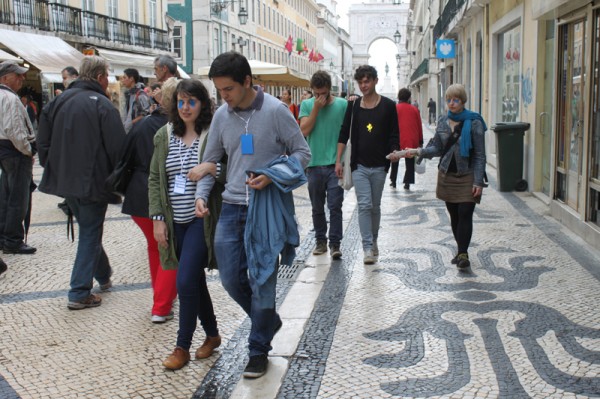
Spaces of Intimacy
Workshop, publication, encounters in public space at The Institute Effect, Lisbon Architecture Triennale 2013
Contributions by: Paulo Vinhas Baudouin, Rune Bosse, Catarina Castanheira, Marco Cataffo, Edith Cherloaba, Tomas Espinosa, João Fernandes, Sílvia Fernandes, João Gil, Jeremias Holliger, Norgard Kröger, Fotini Lazaridou-Hatzigoga, Yves Mettler, Francisca Ramalho, Rita Sabbo, Susana Sanches, Beatriz Severes, Weronika Siwak, Magdalena Tofil, Christina Werner
Workshop organised by: Fotini Lazaridou-Hatzigoga, Yves Mettler, Christina Werner
The space of intimacy takes time. Takes overlap. Takes place in places, with history, with people, between things. It is constructed in in-between spaces; it is a relationship built in closeness, in interaction, in contact. Intimacy requires a kind of touch, a process of touching; it is a space of knowing each other. In this knowing, learning and unlearning takes place. In intimate space a feeling potential builds, a magnetic field of feelings, that includes vulnerability, the possibility for affection or offense. It implies something is speaking to you and includes you; whether a place or a politics or a public, it means you can include it too.
Over the weekend of September 28-29, 2013, the Institut für Raumexperimente organizes a publishing experiment as part of the Institute Effect of the Lisbon Architecture Triennale, to address and explore times and spaces of intimacy in the city. Urban space and publishing have been linked throughout history. Publishing being part of the institute’s research and production tools, visitors are invited to engage, bringing in their own experience of closeness, of shared public spheres, of making things public. Through a series of urban experiments, walks and discursive events, we discover together where the city might lead us.
The Institute Effect blog: (link)
Blind Walk
Norgard Kröger
Jeremias Holliger
Tomas Espinosa
Rune Bosse & Norgard Kröger
Editing Room
Workshop, Publikation, Begegnungen im öffentlichen Raum, im Rahmen des The Institute Effect, Lisbon Architecture Triennale 2013
Beiträge von: Paulo Vinhas Baudouin, Rune Bosse, Catarina Castanheira, Marco Cataffo, Edith Cherloaba, Tomas Espinosa, João Fernandes, Sílvia Fernandes, João Gil, Jeremias Holliger, Norgard Kröger, Fotini Lazaridou-Hatzigoga, Yves Mettler, Francisca Ramalho, Rita Sabbo, Susana Sanches, Beatriz Severes, Weronika Siwak, Magdalena Tofil, Christina Werner
Workshop organisiert von: Fotini Lazaridou-Hatzigoga, Yves Mettler, Christina Werner
Der Raum der Intimität benötigt Zeit. Benötigt Überschneidungen. Findet statt an Orten, mit Menschen, zwischen Dingen. Er wird in den Zwischenräumen hergestellt; er ist eine Beziehung, die durch Nähe, Interaktion und Kontakt hervorgebracht wird. Intimität bedarf einer Art Berührung, eines Prozesses des Berührens; es ist ein Raum gegenseitigen Kennens. In dieser Kenntnis finden Lernen und Verlernen statt. Im intimen Raum wächst ein Potential des Fühlens, ein Magnetfeld von Gefühlen, das Verletzbarkeit einschließt, die Möglichkeit von Zuneigung oder Verletzung. Es impliziert, dass etwas zu dir spricht und dich mit einschließt; ob Raum, ob Politik oder Öffentlichkeit, es bedeutet, du kannst es ebenfalls mit einbeziehen.
Während des Wochenendes vom 28.-29. September 2013 organisiert das Institut für Raumexperimente als Teil des Institute Effect der Architektur Triennale Lissabon eine Publikationsexperiment, das sich Zeiten und Räumen der Intimität in der Stadt widmet. Zwischen verlegerischer Arbeit und dem urbanen Raum bestehen geschichtliche Verbindungen. Publikationen sind Teil der Rechereche- und Produktionswerkzeuge der Arbeit des Instituts, während des Workshops sind Gäste eingeladen, ihre eigenen Erfahrung von Nähe, gemeinsamen öffentlichen Räumen, und davon, wie Dinge öffentlich werden, einzubringen. In einer Reihe urbaner Experimente, Erkundungen und diskursiven Veranstaltungen werden wir gemeinsam herausfinden, wohin uns die Stadt führen mag.
The Institute Effect blog: (link)
Blind Walk
Norgard Kröger
Jeremias Holliger
Tomas Espinosa
Rune Bosse & Norgard Kröger
Editing Room
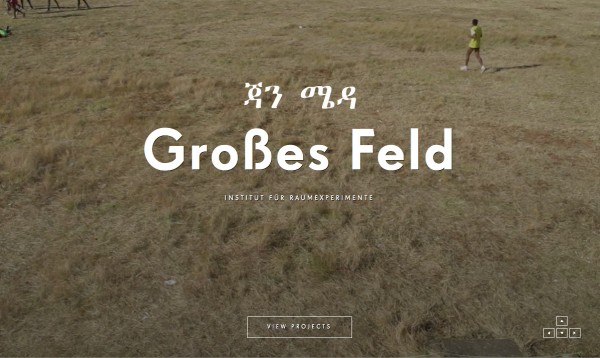
Jan Meda – Großes Feld
The Institut für Raumexperimente hosts a three-day art festival at Jan Meda, the former horse race track in Addis Ababa. The exhibition includes works by artists from Addis Ababa and Berlin. By facilitating the collaborative engagement of a unique group of artists and cultural producers, the programme creates an atmosphere of experimentation, friction, and radical movement that challenges the norms by which we create art, live together, and, thus, produce reality. Works include pavilions installed in the field, video, painting, sculpture and photography, installations, performances, workshops for children, a light sound workshop, cooking experiments, a lecture and film program, and a poetry jazz event.
Contributions by: AEAEAEAE, Malte Bartsch, Julius von Bismarck, Rune Bosse & Addis Ababa University Football Club, Merlin Carter, Julian Charrière, Leon Eixenberger, Leon Eixenberger, Eric Ellingsen, Tomas Espinosa, Henok Getachew, Tamrat Gezahegne, Andreas Greiner, Markus Hoffmann, Rike Horb, Clara Jo, Hans-Henning Korb, Mihret Kebede, Felix Kiessling, Fabian Knecht, Norgard Kröger, Robert Lippok, Felix Meyer, Simen Museus, Molly Nesbit, Lynn Peemoeller, Vinzenz Reinecke, Nina Schuiki, Robel Temesgen, Alkistis Thomidou, Raul Walch, Jonas Wendelin, Christina Werner, Euan Williams, Helen Zeru
View exhibition website.
Program:
13 December: Opening DayPerformances and walks by Eric Ellingsen, Simen Museus & Hans-Henning Korb, Henok Getachew, Rune Bosse & Robel Temesgen, Julian Charrière.
14 December: Film ScreeningVideo works by artists from Addis Abeba and Berlin: Eric Ellingsen, Fabian Knecht, Merlin Carter, Felix Meyer, Robel Temesgen, Raul Walch, and Jonas Wendelin
14 December: Conversation with Molly NesbitLecture at the exhibition
Click to view the video documentation of Molly Nesbit’s lecture Doubts and Habits of Actions in Time.
15 December: Ishe get ‘um, OK PoetryPoetry readings and performances by Eric Ellingsen, Mihret Kebede, Misrak Terefe, Abebaw Melaku, Demissew Mersha, Vinzenz Reinecke, Tadele Tewodros, and Addis Taem Band
Click to view the video documentation of the poetry performances.
Das Institut für Raumexperimente richtet ein dreitägiges Kunstfestival auf der früheren Pferderennbahn, Jan Meda, in Addis Abeba aus. Die Ausstellung zeigt Werke von Künstlern aus Addis Abeba und Berlin. So wird eine besondere Begegnung und Zusammenarbeit einer Gruppe von Künstlern und Kulturschaffenden ermöglicht. Hierdurch schafft das Festival eine experimentelle und spannungsgeladene Atmosphäre mit Offenheit für radikale Schritte. Normen nach denen wir Kunst machen, zusammen leben und Realität produzieren werden so in Frage gestellt. Die Arbeiten umfassen unter anderem Pavillons auf der Rennbahn, Video, Malerei, Skulptur und Fotografie, Installationen, Performances, Workshops für Kinder, einen Workshop mit Licht und Resonanz, Kochexperimente, ein Vorlesungs- und Filmprogramm sowie ein Jazz-Poetry Event.
Mit Beiträgen von: AEAEAEAE, Malte Bartsch, Julius von Bismarck, Rune Bosse & Addis Ababa University Football Club, Merlin Carter, Julian Charrière, Leon Eixenberger, Leon Eixenberger, Eric Ellingsen, Tomas Espinosa, Henok Getachew, Tamrat Gezahegne, Andreas Greiner, Markus Hoffmann, Rike Horb, Clara Jo, Hans-Henning Korb, Mihret Kebede, Felix Kiessling, Fabian Knecht, Norgard Kröger, Robert Lippok, Felix Meyer, Simen Museus, Molly Nesbit, Lynn Peemoeller, Vinzenz Reinecke, Nina Schuiki, Robel Temesgen, Alkistis Thomidou, Raul Walch, Jonas Wendelin, Christina Werner, Euan Williams, Helen Zeru
Website der Ausstellung besuchen.
Programm:
13. Dezember: EröffnungPerformances und Walks von Eric Ellingsen, Simen Museus & Hans-Henning Korb, Henok Getachew, Rune Bosse & Robel Temesgen, Julian Charrière.
14. Dezember: FilmabendVideos von Künstlern aus Addis Abeba und Berlin: Eric Ellingsen, Fabian Knecht, Merlin Carter, Felix Meyer, Robel Temesgen, Raul Walch und Jonas Wendelin
14. Dezember: Molly Nesbit: Doubts and Habits of Actions in TimeVortrag in der Ausstellung
Hier zur Videodokumentation des Vortrags von Molly Nesbit.
15 December: Ishe get ‘um, OK PoetryLesungen und Performances von Eric Ellingsen, Mihret Kebede, Misrak Terefe, Abebaw Melaku, Demissew Mersha, Vinzenz Reinecke, Tadele Tewodros und der Addis Taem Band
Die Videodokumentation der Performances anschauen.
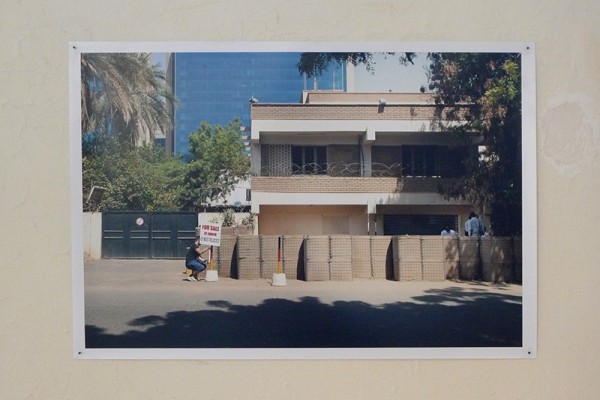
Addis Foto Fest 2012
The Institut für Raumexperimente is invited to participate in the Addis Foto Fest 2012. Established in 2010, the Addis Foto Fest is a biennial photography festival directed by photographer Aida Muluneh. Produced by Desta for Africa (DFA), the weeklong international festival is held in Addis Ababa, Ethiopia, and features exhibitions, portfolio reviews, conferences, projections, and film screenings.
The works contributed by the Institut für Raumexperimente are exhibited at the Alle School of Fine Art and Design, Addis Ababa University, with several interventions taking place in public space.
Works and interventions by Malte Bartsch; Julius von Bismarck; Rune Bosse; Julian Charrière and Julius von Bismarck; Eric Ellingsen and Fabian Knecht; Leon Eixenberger; Leon Eixenberger and Hans-Henning Korb; Markus Hoffmann; Jonas Wendelin; Felix Kiessling; Fabian Knecht; Vinzenz Reinecke and Merlin Carter; Nina Schuiki; Raul Walch; and Christina Werner, Alkistis Thomidou, Helen Zeru and Norgard Kröger
Das Institut für Raumexperimente ist eingeladen am Addis Foto Fest 2012 teilzunehmen. Gegründet im Jahr 2010 ist das Addis Foto Fest ein alle zwei Jahre stattfindendes Festival für Fotografie unter der Leitung der Fotografin Aida Muluneh. Das einwöchige Festival ist eine Produktion von Desta for Africa (DFA) und findet in Addis Abeba, Äthiopien statt. Teil des Programms sind Ausstellungen, Portfoliobesprechungen, Konferenzen, Projektionen und Filmvorführungen.
Die Arbeiten des Instituts für Raumexperimente sind an der Alle School of Fine Art and Design der Addis Abeba University zu sehen. Mehrere Events finden außerdem im öffentlichen Raum statt.
Arbeiten und Interventionen von Malte Bartsch; Julius von Bismarck; Rune Bosse; Julian Charrière und Julius von Bismarck; Eric Ellingsen und Fabian Knecht; Leon Eixenberger; Leon Eixenberger und Hans-Henning Korb; Markus Hoffmann; Jonas Wendelin; Felix Kiessling; Fabian Knecht; Vinzenz Reinecke und Merlin Carter; Nina Schuiki; Raul Walch; und Christina Werner, Alkistis Thomidou, Helen Zeru und Norgard Kröger
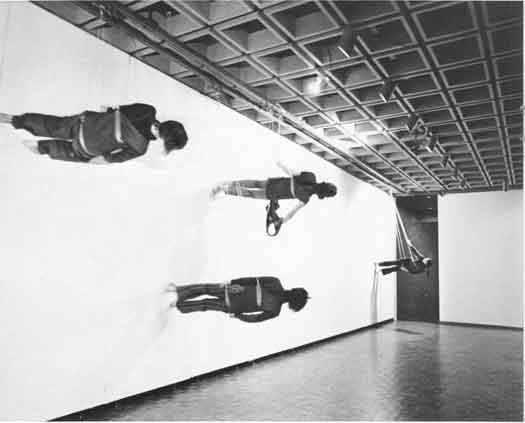
Using What’s Out There For Now, Teil 2
Co-taught seminar by Eric Ellingsen and Berhanu Ashagrie Deribew
Using online archives, particularly UbuWeb, build a class where everyone can take turns curating content and generating critique about art and research methods.
Some examples are: Joseph Beuys – JA JA JA JA JA, NEE NEE NEE NEE NEE (1968), Gordon Matta Clark (Tree Dance), Art Safari – Relational Art: Is It An Ism? (2004), Trisha Brown (Walking on the Wall, Leaning Duets, Accumulation), Ant Farm (Inflatables), Yvonne Rainer (Hand Movie)
Gemeinsames Seminar von Eric Ellingsen und Berhanu Ashagrie Deribew
Seminar zu kritischen Recherchemethoden unter mithilfe von Internet-Archiven, vor allem UbuWeb.
einige Beispiele: Joseph Beuys – JA JA JA JA JA, NEE NEE NEE NEE NEE (1968), Gordon Matta Clark (Tree Dance), Art Safari – Relational Art: Is It An Ism? (2004), Trisha Brown (Walking on the Wall, Leaning Duets, Accumulation), Ant Farm (Inflatables), Yvonne Rainer (Hand Movie)

Using What’s Out There For Now, Teil 1
Co-taught seminar by Eric Ellingsen and Berhanu Ashagrie Deribew
Using online archives, particularly UbuWeb, build a class where everyone can take turns curating content and generating critique about art and research methods.
Some examples are: Joseph Beuys (JA JA JA JA JA, NEE NEE NEE NEE NEE (1968), Gordon Matta Clark (Tree Dance), Art Safari – Relational Art: Is It An Ism? (2004), Trisha Brown (Walking on the Wall, Leaning Duets, Accumulation), Ant Farm (Inflatables), Yvonne Rainer (Hand Movie)
Gemeinsames Seminar von Eric Ellingsen und Berhanu Ashagrie Deribew
Seminar zu kritischen Recherchemethoden mithilfe von Internet-Archiven, vor allem UbuWeb.
einige Beispiele: Joseph Beuys (JA JA JA JA JA, NEE NEE NEE NEE NEE (1968), Gordon Matta Clark (Tree Dance), Art Safari – Relational Art: Is It An Ism? (2004), Trisha Brown (Walking on the Wall, Leaning Duets, Accumulation), Ant Farm (Inflatables), Yvonne Rainer (Hand Movie)
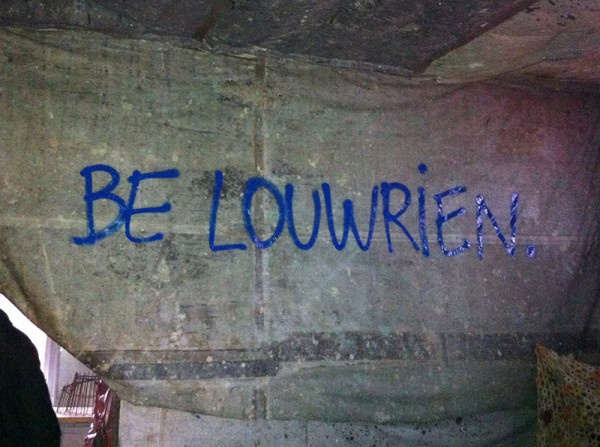
Exkursion nach Amsterdam
Participation in:
Conversations are Tapes, not Objects, Marina Abramovic & AA Bronson feat. General Idea & Nico Dockx & Olafur Eliasson feat. Institut für Raumexperimente & Egon Hanfstingl & Sands Murray-Wassink & Hans Ulrich Obrist & Rory Pilgrim & Matthew Stone & Rirkrit Tiravanija & Machteld van Buren & Ton van der Laaken & Lawrence Weiner & Louwrien Wijers & …, Kitchen, Amsterdam.
Excursion organizers: Christina Werner
View Invitation
Das Institut war Teil von:
Conversations are Tapes, not Objects, Marina Abramovic & AA Bronson feat. General Idea & Nico Dockx & Olafur Eliasson feat. Institut für Raumexperimente & Egon Hanfstingl & Sands Murray-Wassink & Hans Ulrich Obrist & Rory Pilgrim & Matthew Stone & Rirkrit Tiravanija & Machteld van Buren & Ton van der Laaken & Lawrence Weiner & Louwrien Wijers & …, Kitchen, Amsterdam.
Exkursion organisiert von Christina Werner
Einladung ansehen
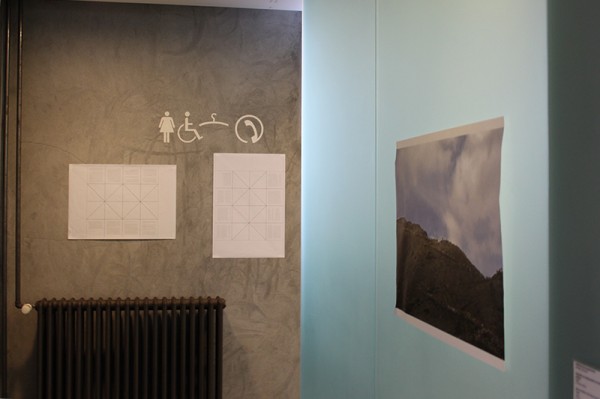
Ideas Are Motion, Teil 3: Reykjavik
Ideas Are Motion: The Poster as an Experiment in Travel
Part 3: Reykjavik Art Museum – Hafnarhús, Iceland
Without Destination – TRAIL, Reykjavik Art Museum – Hafnarhús, Iceland
with works by: Fernanda Trevellin de Almeida, Julius von Bismarck, Julian Charrière, Elise Eeraerts, Olafur Eliasson, Eric Ellingsen, Andreas Greiner, Markus Hoffmann, Jeremias Holliger, Friederike Horbrügger, Anne Duk Hee Jordan, Felix Kiessling, Fabian Knecht, Jae Rhim Lee, Gabrielle Mainguy, Laura McLardy, Astrid Nippoldt, Timea Anita Oravecz, Sophia Pompéry, Sarah Rechberger, Dan Stockholm, Alvaro Urbano, Ósk Vilhjálmsdóttir, Raul Walch, Christina Werner, Euan Williams, Hendrik Wolking
in collaboration with Markús Þór Andrésson
Ideas Are Motion takes place in(1) Zagreb, Croatia (2) Japan (3) Iceland.
Ideas Are Motion: The Poster as an Experiment in Travel is prismatically structured to reflect the making of a class excursion, within the making of an individual art project, within the making of a collective project, within the feeling of a place, within an exhibition in that place.
Exhibition film
Exhibition viewsfrom Reykjavik Art Museum
Ideas Are Motion: The Poster as an Experiment in Travel
Teil 3: Reykjavik Kunstmuseum – Hafnarhús, Island
Without Destination – TRAIL, Reykjavik Kunstmuseum – Hafnarhús, Island
mit Arbeiten von: Fernanda Trevellin de Almeida, Julius von Bismarck, Julian Charrière, Elise Eeraerts, Olafur Eliasson, Eric Ellingsen, Andreas Greiner, Markus Hoffmann, Jeremias Holliger, Friederike Horbrügger, Anne Duk Hee Jordan, Felix Kiessling, Fabian Knecht, Jae Rhim Lee, Gabrielle Mainguy, Laura McLardy, Astrid Nippoldt, Timea Anita Oravecz, Sophia Pompéry, Sarah Rechberger, Dan Stockholm, Alvaro Urbano, Ósk Vilhjálmsdóttir, Raul Walch, Christina Werner, Euan Williams, Hendrik Wolking
in Zusammenarbeit mit Markús Þór Andrésson
Ideas Are Motion findet statt in(1) Zagreb, Kroatien (2) Japan (3) Island.
Ideas Are Motion: The Poster as an Experiment in Travel ist ein prismatisch strukturiertes Projekt, das die Erfahrungen einer Klassenreise reflektiert: Prozesse eines individuellen künstlerischen Projektes, Prozesse kollektiven Arbeitens, Prozesse des Erspürens eines Ortes, Prozesse des Ausstellungsmachens an diesem Ort.
Film zur Ausstellung
Ausstellungsansichtenim Reykjavik Kunstmuseum
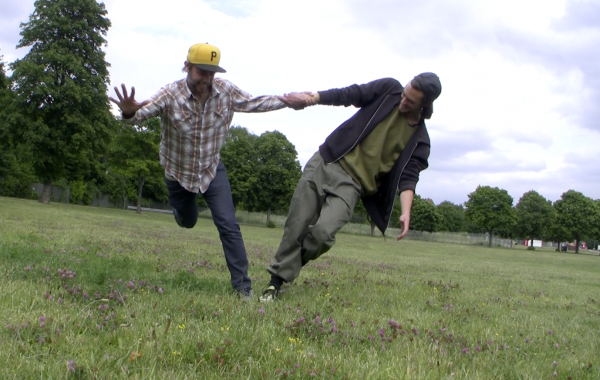
Nina Fischer & Maroan el Sani: Video Manuals
Fukushima Project Satellite: Institut für Raumexperimente; a workshop by Nina Fischer & Maroan el Sani in collaboration with Institut für Raumexperimente
Visit microblog
Fukashi Walk
Balance Walk
Swarm Walk
Backwards Walk
Fukushima Project Satellite: Institut für Raumexperimente Berlin, ein Workshop von Nina Fischer & Maroan el Sani in Zusammenarbeit mit Institut für Raumexperimente
Mikroblog ansehen
Fukashi Walk
Balance Walk
Swarm Walk
Backwards Walk
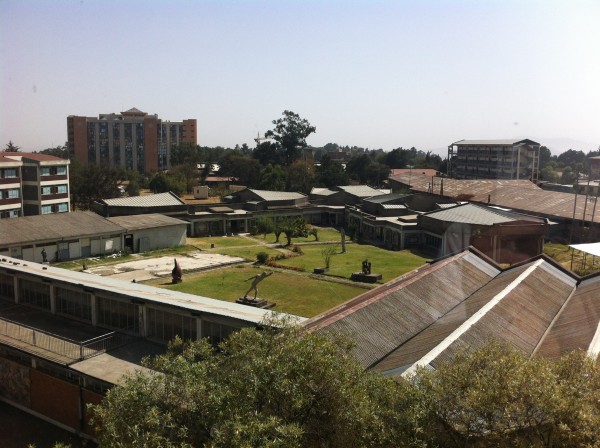
Alle School of Fine Arts and Design, Addis Ababa University & Institut für Raumexperimente
Artistic and Research CooperationAlle School of Fine Arts and Design, Addis Ababa University & Institut für Raumexperimente, Berlin University of the Arts
Go to:
Großes Feld exhibition, Jan Meda
Addis Foto Fest exhibition, Alle School of Fine Arts and Design
Addis Art Practices Marathon, Alle School of Fine Arts and Design
Olafur Eliasson Lecture Series, Alle School of Fine Arts and Design
Studienaufenthalt und HochschulkooperationAlle School of Fine Arts and Design, Addis Ababa University & Institut für Raumexperimente, Universität der Künste Berlin
Großes Feld Ausstellung, Jan Meda
Addis Foto Fest Ausstellung, Alle School of Fine Arts and Design
Addis Art Practices Marathon, Alle School of Fine Arts and Design
Olafur Eliasson Lecture Series, Alle School of Fine Arts and Design
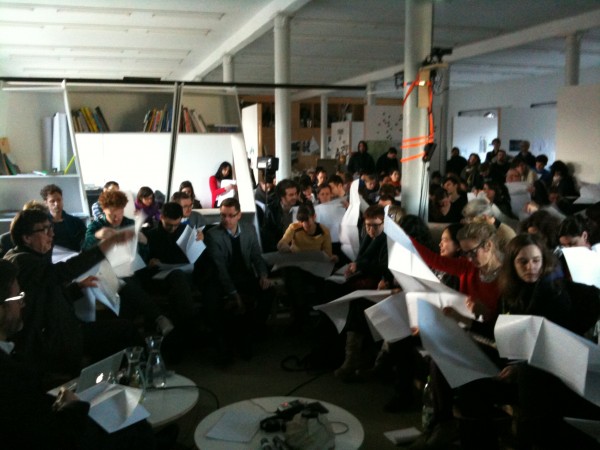
Three Days of Making Time: Revisiting the Debate between Bergson and Einstein
Three Days of Making Time: Revisiting the Debate between Bergson and EinsteinWith Bruno Latour and Olafur Eliasson. Collaboration between Master of Experimentation on Arts and Politics, Sciences Po, Paris, and Institut für Raumexperimente, UdK Berlin.
Day 1One-minute Experiments. Presentation by the participants from Institut für Raumexperimente and the Master of Experimentation on Arts and Politics. Workshop and conversation with Eric Ellingsen, Valerie Pihet, Christina Werner and guests Armin Linke, Nina Fischer and Maroan el Sani
One-minute experiments from both classes
Day 2Reenactments, Catastrophes, and Gaia: Lecture by Bruno Latour. Guided tour of Studio Olafur Eliasson. Making Time: Conversation with Bruno Latour and Olafur Eliasson.
Bruno Latour: Reenactments, Catastrophes, and Gaia, part 1
Bruno Latour: Reenactments, Catastrophes, and Gaia, part 2
Day 3Revisiting the debate between Bergson and Einstein: Public lecture by Olafur Eliasson and Bruno Latour and conversation about the public Bergson-Einstein reenactment experiment. One-minute closed-eye experiment with Eric Ellingsen
Bruno Latour and Olafur Eliasson: Making Time, part 1
Bruno Latour and Olafur Eliasson: Making Time, part 2
Bruno Latour and Olafur Eliasson: Making Time, part 3
View poster
SELECTED READING MATERIAL
Gunter, Peter Addisson Y., „Henri Bergson, Albert Einstein and Henri Piéron. Remarks Concerning Relativity Theory“, in: ders., Bergson and the Evolution of Physics, Knoxville 1969, S. 123–135.
Latour, Bruno, „Some Experiments in Art and Politics“, in: E-Flux Journal, 23, New York 2011, http://www.e-flux.com/journal/some-experiments-in-art-and-politics/ (abgerufen 2011).
Latour, Bruno, „Spheres and Networks: Two Ways to Reinterpret Globalization“, in: Harvard Design Magazine, 30, Harvard 2009, S. 138–144.
Three Days of Making Time: Revisiting the Debate between Bergson and EinsteinMit Bruno Latour und Olafur Eliasson. Kollaboration zwischen Master of Experimentation on Arts and Politics, Sciences Po, Paris, und Institut für Raumexperimente, UdK Berlin.
Tag 1Ein-Minuten-Experimente der Teilnehmer des Instituts für Raumexperimente und des Master of Experimentation on Arts and Politics. Workshop und Gespräch mit Eric Ellingsen, Valerie Pihet, Christina Werner und Gästen Armin Linke, Nina Fischer und Maroan el Sani
Ein-Minuten-Experimente beider Klassen
Tag 2Reenactments, Katastrophen und Gaia: Vortrag von Bruno Latour. Führung durch das Studio Olafur Eliasson. Making Time: Gespräch mit Bruno Latour und Olafur Eliasson.
Bruno Latour: Reenactments, Katastrophen und Gaia, Teil 1
Bruno Latour: Reenactments, Katastrophen und Gaia, Teil 2
Tag 3Wiederaufnahme der Debatte zwischen Bergson und Einstein: Öffentlicher Vortrag von Olafur Eliasson und Bruno Latour und Gespräch über das Bergson-Einstein-Reenactment. Einminütiges Experiment mit geschlossenen Augen von Eric Ellingsen
Bruno Latour und Olafur Eliasson, Teil 1
Bruno Latour und Olafur Eliasson, Teil 2
Bruno Latour und Olafur Eliasson, Teil 3
Plakat ansehen
LITERATURAUSWAHL
Gunter, Peter Addisson Y., „Henri Bergson, Albert Einstein and Henri Piéron. Remarks Concerning Relativity Theory“, in: ders., Bergson and the Evolution of Physics, Knoxville 1969, S. 123–135.
Latour, Bruno, „Some Experiments in Art and Politics“, in: E-Flux Journal, 23, New York 2011, http://www.e-flux.com/journal/some-experiments-in-art-and-politics/ (abgerufen 2011).
Latour, Bruno, „Spheres and Networks: Two Ways to Reinterpret Globalization“, in: Harvard Design Magazine, 30, Harvard 2009, S. 138–144.
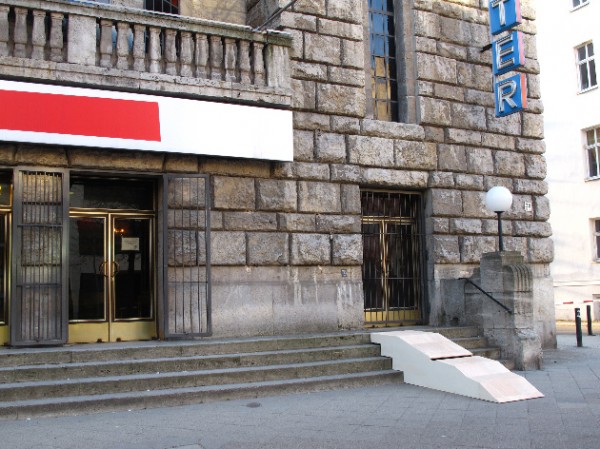
Theaterfestival 100°
Installations and interventions as part of the Theater Festival 100°
Collaboration with Hebbel-am-Ufer, Berlin
WORKS BY Julian Francis Bisesi, Julian Charrière, Elise Eeraerts, Jan Fiege, Andreas Greiner, Markus Hoffmann, Jeremias Holliger, Friederike Horbrügger, Armin Keplinger, Maresa Anna Fiege, Marie-Kristin Thiele, Raul Walch, Euan Williams, Alvaro Urbano
View flyer
Installationen und Interventionen im Rahmen des Theaterfestivals 100°
Kollaboration mit Hebbel-am-Ufer, Berlin
BEITRÄGE VON Julian Francis Bisesi, Julian Charrière, Elise Eeraerts, Jan Fiege, Andreas Greiner, Markus Hoffmann, Jeremias Holliger, Rike Horb, Armin Keplinger, Maresa Anna Fiege, Marie-Kristin Thiele, Raul Walch, Euan Williams, Alvaro Urbano
Flyer ansehen
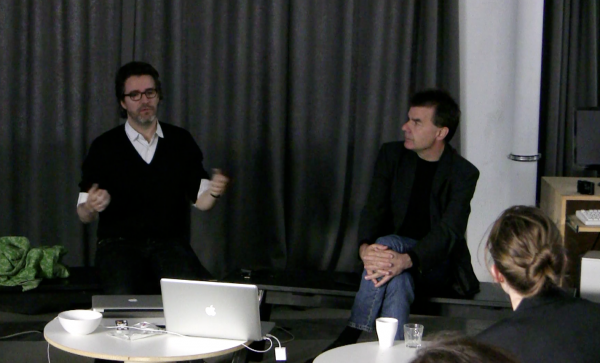
Einführung mit Günther Vogt & Olafur Eliasson: Mapping Everything
Talk and introduction to the collaboration project „Mapping Everything“ with Günther Vogt and Olafur Eliasson
Günther Vogt Part I
Günther Vogt Part II
Günther Vogt Part III
Gespräch und Einführung zum Kooperationsprojekt „Mapping Everything“ mit Günther Vogt und Olafur Eliasson
Günther Vogt Teil I
Günther Vogt Teil II
Günther Vogt Teil III
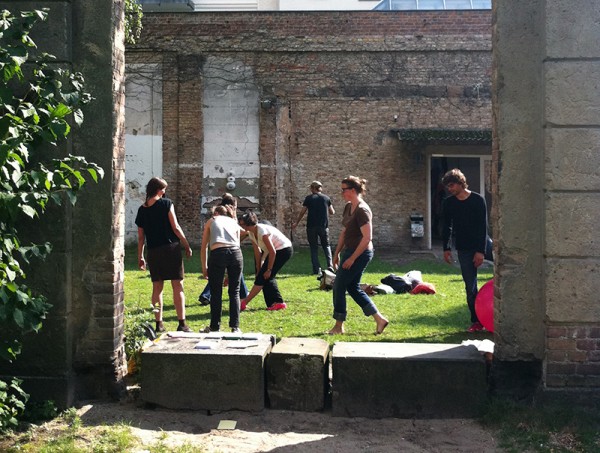
Exkursion nach Zürich
Collaborative project Mapping Everything with the class of Günther Vogt, Institut für Landschaftsarchitektur, ETH Zürich
Tuesday, 17/05/11
19:00: Welcome and get-together at Vogt Landschaftsarchitekten AG; Introduction by Nicola Eiffler (Institut für Landschaftsarchitektur, ETH), Eric Ellingsen and Christina Werner (Institut für Raumexperimente, UdK)
20:00: Pizza and “Making of: Film Night”: Baraka, films of Charles and Ray Eames, films of Francis Alÿs
Wednesday, 18/05/11
10:00: Meeting with Günther Vogt at Masoala Halle, Zoo Zürich: Guided tour and discussion
14:00: Meeting at ETH Zürich, Professur Günther Vogt, Institut für Landschaftsarchitektur
14:00–17:00: Reading of “Manhattan Transcripts” by Bernard Tschumi and watching the making of: “Rem Koolhaus : Lagos wide and close, an interactive journey”
17:09–17:32: coffee and discussion
17:32–21:30: Rem Koolhaas & Bernard Tschumi: A conversation, moderated by Stephan Trüby with an introduction by Marc Angélil and Philip Ursprung
Thursday, 19 /05/11
8:00: Final critiques at Institut für Landschaftsarchitektur, ETH
13:00: Meet at Flussbad Oberer Letten
13:00–16:00: Picnic with lots of sandwiches, chips, water. Participants introduce each other, program and cooperation workshop introduction, first experimental mappings
16:00–17:00: “Mapping Walk”, back to studio
17:00–19:00: Mapping Examples: Presentations by Vogt Landschaftsarchitekten and Eric Ellingsen, syllabus based
20:00–22:00: Dinner with both groups
Friday, 20/05/11
10:00–13:00: Meeting at Walchebrücke/Park am Landesmuseum: Reading practice *Certeau, Gatty, and Calvino, etc., syllabus based
13:00–15:00: Movement experiments and picnic practice
15:00–18:00: More Walks and Mapping Experiments in public space near China Garden and Casino towards Bellevueplatz
18:00–19:30: studio tour of Studio Günther Vogt/ Vogt Landschaftsarchitekten AG
20:30–22:30: dinner and drinks and presentations with the studio team
Saturday, 21/05/11
10:00–15:00: Guided gallery tours and gallerist talks
Excursion organizers: Christina Werner, Eric Ellingsen, Nicola Eiffler
See also Mapping Everything
Kooperationsprojekt Mapping Everything mit der Klasse Günther Vogt, Institut für Landschaftsarchitektur, ETH Zürich
Tuesday, 17/05/11
19:00: Welcome and get-together at Vogt Landschaftsarchitekten AG; Introduction by Nicola Eiffler (Institut für Landschaftsarchitektur, ETH), Eric Ellingsen and Christina Werner (Institut für Raumexperimente, UdK)
20:00: Pizza and “Making of: Film Night”: Baraka, films of Charles and Ray Eames, films of Francis Alÿs
Wednesday, 18/05/11
10:00: Meeting with Günther Vogt at Masoala Halle, Zoo Zürich: Guided tour and discussion
14:00: Meeting at ETH Zürich, Professur Günther Vogt, Institut für Landschaftsarchitektur
14:00–17:00: Reading of “Manhattan Transcripts” by Bernard Tschumi and watching the making of: “Rem Koolhaus : Lagos wide and close, an interactive journey”
17:09–17:32: coffee and discussion
17:32–21:30: Rem Koolhaas & Bernard Tschumi: A conversation, moderated by Stephan Trüby with an introduction by Marc Angélil and Philip Ursprung
Thursday, 19 /05/11
8:00: Final critiques at Institut für Landschaftsarchitektur, ETH
13:00: Meet at Flussbad Oberer Letten
13:00–16:00: Picnic with lots of sandwiches, chips, water. Participants introduce each other, program and cooperation workshop introduction, first experimental mappings
16:00–17:00: “Mapping Walk”, back to studio
17:00–19:00: Mapping Examples: Presentations by Vogt Landschaftsarchitekten and Eric Ellingsen, syllabus based
20:00–22:00: Dinner with both groups
Friday, 20/05/11
10:00–13:00: Meeting at Walchebrücke/Park am Landesmuseum: Reading practice *Certeau, Gatty, and Calvino, etc., syllabus based
13:00–15:00: Movement experiments and picnic practice
15:00–18:00: More Walks and Mapping Experiments in public space near China Garden and Casino towards Bellevueplatz
18:00–19:30: studio tour of Studio Günther Vogt/ Vogt Landschaftsarchitekten AG
20:30–22:30: dinner and drinks and presentations with the studio team
Saturday, 21/05/11
10:00–15:00: Guided gallery tours and gallerist talks
Exkursion organisiert von: Christina Werner, Eric Ellingsen, Nicola Eiffler
> Mapping Everything Projekt
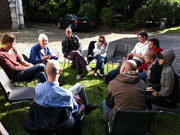
Exkursion nach Antwerpen
Participation in the workshop „La chaîne est belle. Joseph Beuys & Nico Dockx & Egon Hanfstingl & Institut für Raumexperimente & Stanislav Menshikov & Rirkrit Tiravanija & Louwrien Wijers & …“ with the class of Nico Dockx at the Royal Academy of Fine Arts, Antwerp
Excursion organizer: Christina Werner, Eric Ellingsen
La chaîne est belle
View Flyer
View Invitation
Teilnahme am Workshop „La chaîne est belle. Joseph Beuys & Nico Dockx & Egon Hanfstingl & Institut für Raumexperimente & Stanislav Menshikov & Rirkrit Tiravanija & Louwrien Wijers & …“ mit der Klasse Nico Dockx an der Artesis Akademie der Schönen Künste, Antwerpen
Exkursion organisiert von Christina Werner & Eric Ellingsen
La chaîne est belle
Flyer ansehen
Einladung ansehen
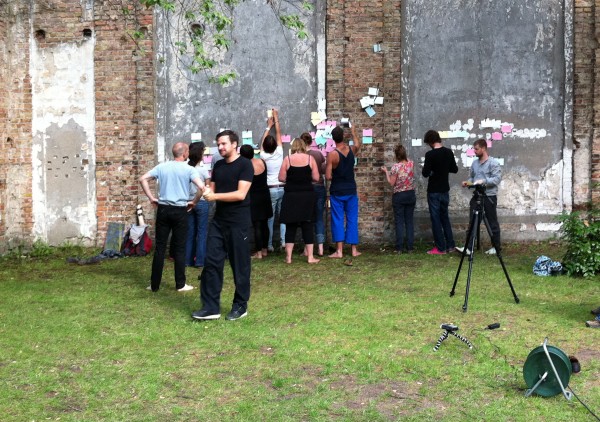
Mapping Everything
Mapping EverythingA collaborative, educational experiment between the Institut für Raumexperimente and the Institut für Landschaftsarchitektur (ETH Zürich), class of Günther Vogt, in the summer term of 2011.
Go to: Mapping Everything publication
Mapping EverythingEin kollaboratives, universitäres Experiment zwischen dem Institut für Raumexperimente und dem Institut für Landschaftsarchitektur (ETH Zürich), der Klasse von Günther Vogt, im Sommersemester 2011.
Zur Publikation
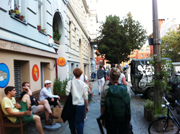
Backwards Walk
Walk: Backwards WalkWalk backwards for fifteen minutes through the city.
Designed by Eric Ellingsen & Christina Werner
Backwards Walk, performed with Institut für Landschaftsarchitektur ETH Zurich, 7 July 2011
Backwards Walk with Nina Fischer & Maroan el Sani, 14 June 2012
Walk: Backwards WalkGehe für fünfzehn Minuten rückwärts durch die Stadt.
Konzipiert von Eric Ellingsen & Christina Werner
Backwards Walk, Durchgeführt mit dem Institut für Landschaftsarchitektur ETH Zurich, 7. Juli 2011
Backwards Walk mit Nina Fischer & Maroan el Sani, 14. Juni 2012
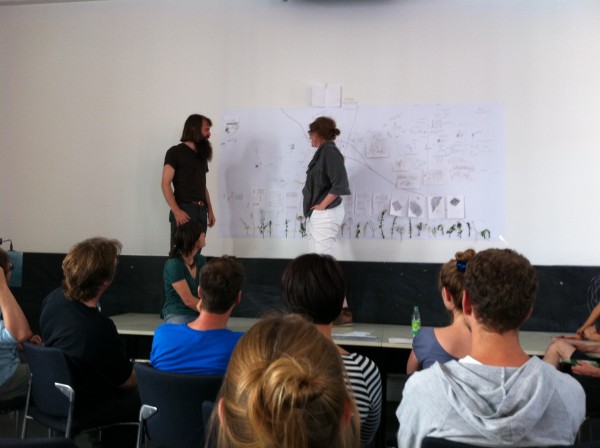
Mapping Everything: Mapping the Site
Workshop with Matthias Rick & Christof Mayer (raumlaborberlin)
Mapping Everything Berlin - Raumlabor Workshop Introduction
Mapping Everything Berlin - Raumlabor Workshop Presentation
Experimente und Workshop zu Raumkartierung von Matthias Rick & Christof Mayer (raumlaborberlin)
Mapping Everything Berlin - Raumlabor Workshop Einführung
Mapping Everything Berlin - Raumlabor Workshop Präsentation
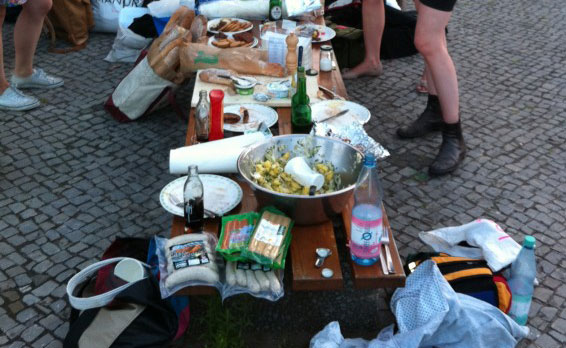
Mapping Everything: Cooking Out
Cooking and art experiments in public space
Mittelinsel, Ernst-Reuter-Platz, Berlin
Institut für Raumexperimente & Institut für Landschaftsarchitektur, ETH Zürich
Essen und Kunstexperimente im öffentlicher Raum
Mittelinsel, Ernst-Reuter-Platz, Berlin
Institut für Raumexperimente & Institut für Landschaftsarchitektur, ETH Zürich
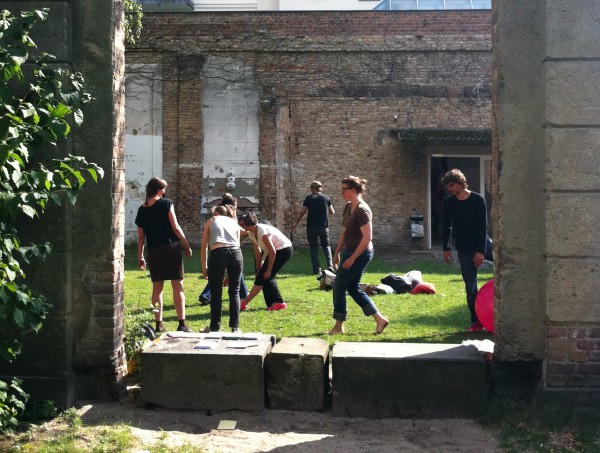
Mapping Everything: The Liquid Body
Dance and movement workshop mit Nicole Beutler and guests Thomas Plischke and Kattrin Deuffert
Mapping Everything Berlin - Nicole Beutler, part 1
Mapping Everything Berlin - Nicole Beutler, part 2
Tanz und Bewegungsworkshop mit Nicole Beutler und Gästen Thomas Plischke and Kattrin Deuffert
Mapping Everything Berlin - Nicole Beutler, Teil 1
Mapping Everything Berlin - Nicole Beutler, Teil 2
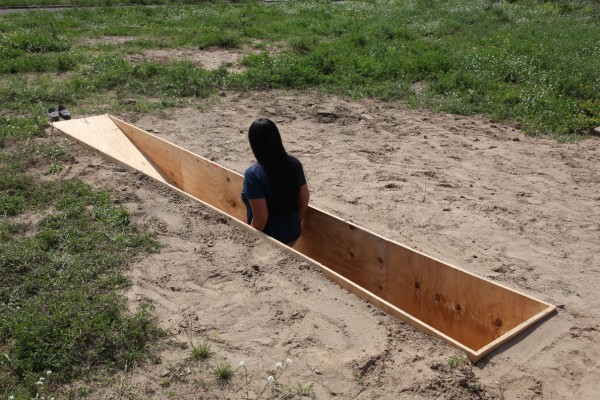
Mapping Everything: Makings
Mapping Everything: drift, critique, make, thinkExhibition in and around Tiergarten
Part I13.7.2011, critiques with Günther Vogt, Matthias Lilienthal, Nicola Eiffler, Olafur Eliasson, Eric Ellingsen, and Christina Werner
Part II14.7.2011, critiques with Günther Vogt, Matthias Rick & Christof Mayer (raumlaborberlin), Nicola Eiffler, Olafur Eliasson, Eric Ellingsen, and Christina Werner
Mapping Everything: drift, critique, make, thinkAusstellung im öffentlichen Raum in und um den Tiergarten
Teil 113.7.2011, Arbeitsbesprechungen mit Günther Vogt, Matthias Lilienthal, Nicola Eiffler, Olafur Eliasson, Eric Ellingsen und Christina Werner
Teil 214.7.2011, Arbeitsbesprechungen mit Günther Vogt, Matthias Rick & Christof Mayer (raumlaborberlin), Nicola Eiffler, Olafur Eliasson, Eric Ellingsen und Christina Werner
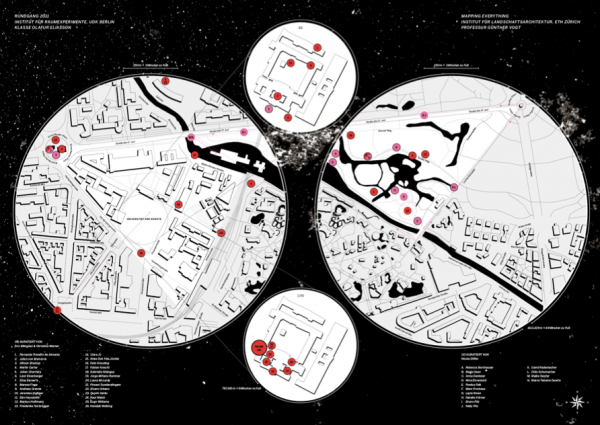
Mapping Everything: Ausstellung
Mapping Everything, Exhibition
with works by:
Fernanda Trevellin de Almeida, Julius von Bismarck, Allison Bisshop, Rebecca Bornhauser, Merlin Carter, Julian Charrière, Berte Daan, Anna Denkeler, Nina Ehrenbold, Leon Eixenberger, Elise Eeraerts, Pontus Falk, Maresa Anna Fiege, Marc Frochaux, Andreas Greiner, Elín Hansdóttir, Jeremias Holliger, Markus Hoffmann, Friederike Horbrügger, Leyla Ilman, Clara Jo, Anne Duk Hee Jordan, Felix Kiessling, Fabian Knecht, Natalie Körner, Gabrielle Mainguy, Jorge Minano Ramirez, Laura McLardy, Bruno Pilz, Nelly Pilz, David Rademacher, Dido Schumacher, Pireeni Sundaralingam, Maike Swyter, Marco Teixeira Duarte, Alvaro Urbano, Quynh Vantu, Raul Walch, Euan Williams, Hendrik Wolking
view exhibition map
Mapping Everything, Ausstellung
mit Arbeiten von:
Fernanda Trevellin de Almeida, Julius von Bismarck, Allison Bisshop, Rebecca Bornhauser, Merlin Carter, Julian Charrière, Berte Daan, Anna Denkeler, Nina Ehrenbold, Leon Eixenberger, Elise Eeraerts, Pontus Falk, Maresa Anna Fiege, Marc Frochaux, Andreas Greiner, Elín Hansdóttir, Jeremias Holliger, Markus Hoffmann, Friederike Horbrügger, Leyla Ilman, Clara Jo, Anne Duk Hee Jordan, Felix Kiessling, Fabian Knecht, Natalie Körner, Gabrielle Mainguy, Jorge Minano Ramirez, Laura McLardy, Bruno Pilz, Nelly Pilz, David Rademacher, Dido Schumacher, Pireeni Sundaralingam, Maike Swyter, Marco Teixeira Duarte, Alvaro Urbano, Quynh Vantu, Raul Walch, Euan Williams, Hendrik Wolking
Ausstellungskarte als PDF anschauen
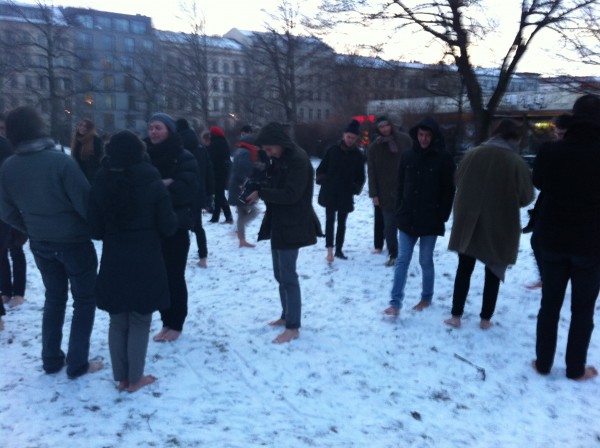
Harvard Graduate School of Design & Institut für Raumexperimente
Three days of Making Tests with KIRA KIRA, Tomas Saraceno, Andreas RubyCollaboration with Harvard Graduate School of Design (GSD), Cambridge, Massachusetts and Institut für Raumexperimente, UdK Berlin
With Olafur Eliasson & Sanford Kwinter & Eric Ellingsen & Christina Werner
Sanford Kwinter, Part I
Sanford Kwinter, Part II
Tomas Saraceno, Part I
Tomas Saraceno, Part II
Andreas Ruby
Three days of Making Tests mit KIRA KIRA, Tomas Saraceno, Andreas RubyKollaboration mit Harvard Graduate School of Design (GSD), Cambridge, Massachusetts und Institut für Raumexperimente, UdK Berlin
Mit Olafur Eliasson & Sanford Kwinter & Eric Ellingsen & Christina Werner
Sanford Kwinter, Teil I
Sanford Kwinter, Teil II
Tomas Saraceno, Teil I
Tomas Saraceno, Teil II
Andreas Ruby
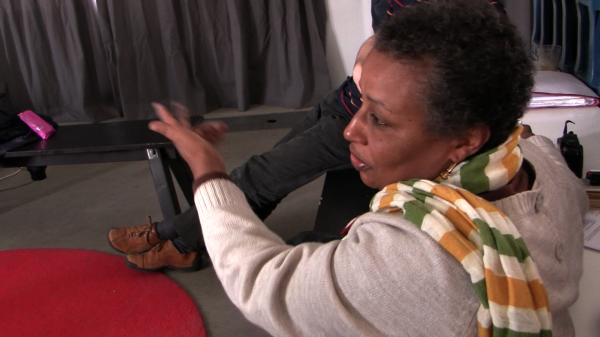
Kunst in Berlin – Kunst in Addis Abeba
Olafur Eliasson & Berhanu Ashagrie Deribew & Konjit Seyoum
Conversation with Konjit Seyoum, gallerist from Addis Abeba
Artist talk with Berhanu Ashagrie Deribew
Olafur Eliasson & Berhanu Ashagrie Deribew & Konjit Seyoum
Gespräch mit Konjit Seyoum, Galleristin in Addis Abeba
Künstlergespräch mit Berhanu Ashagrie Deribew
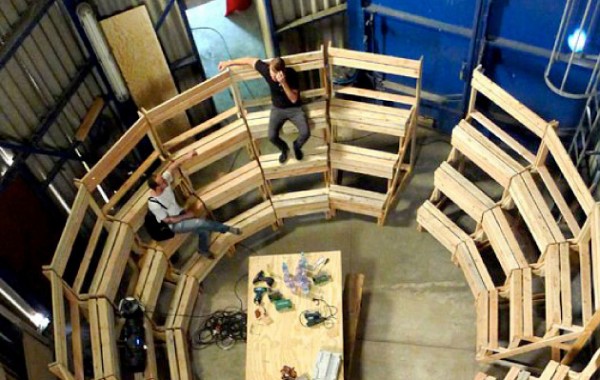
Translations Acts
Translation Acts at The World Is Not Fair – Die Große Weltausstellung 2012
CONTRIBUTIONS/WORKSHOPS/INTERVENTIONS/PERFORMANCES BY
Shane Anderson, Ivan Argote, Julian Francis Bisesi, Julius von Bismarck, Rune Bosse, Guido Brendgens, Luz Broto, Barbara Buchmaier, Carson Chan, Julian Charrière, Merlin Carter, Sharmila Cohen, Deconcrete, Olafur Eliasson, Eric Ellingsen, Leon Eixenberger, Tomas Espinosa, Lukas Feireiss, Maresa Anna Fiege, Nina Fischer, Benjamin Foerster-Baldenius, Matthias Friederich, Andreas Greiner, Petrit Hailaj, Christian Hawkey, Martina Hefter, Klara Hobza, Markus Hoffmann, Jeremias Holliger, Karl Holmqvist, John Holten, Friederike Horbrügger, Sandra Huber, Intelegencias Colectivas, Clara Jo, Anne Duk Hee Jordan, Felix Kiessling, Lena König, Julian von Klier, Fabian Knecht, Hans-Henning Korb, Camilla Kragelund, Gaëlle Kreens, Fotini Lazaridou-Hatzigoga, Leo Leandro, Regula Lüscher, Laura McLardy, Thomas Macho, Yves Mettler, Felix Meyer, Ari Benjamin Meyers, Simen Museus, Kirsten Palz, Juninho Quebradeira, Joao Rasta, Monika Rinck, Macarena Ruiz-Tagle, Maroan el Sani, Arne Schönewald, Tiago Romagnani Silveira, Something Fantastic, Todo Por La Praxis, Andreas Töpfer, Montse Torreda, Alvaro Urbano, Valdirjovena, Raul Walch, Caleb Waldorf, Joanna Warsza, Jonas Wendelin, Christina Werner, Jan Werner, Euan Williams, Uljana Wolf, Hendrik Wolking, Philippe van Wolputte, Florian Wüst, Helga Wretman
View Exhibition Programme (PDF)
Go to: Full Exhibition Publication
Translation Acts bei The World Is Not Fair – Die Große Weltausstellung 2012
BEITRÄGE/WORKSHOPS/INTERVENTIONEN/PERFORMANCES VON
Shane Anderson, Ivan Argote, Julian Francis Bisesi, Julius von Bismarck, Rune Bosse, Guido Brendgens, Luz Broto, Barbara Buchmaier, Carson Chan, Julian Charrière, Merlin Carter, Sharmila Cohen, Deconcrete, Olafur Eliasson, Eric Ellingsen, Leon Eixenberger, Tomas Espinosa, Lukas Feireiss, Maresa Anna Fiege, Nina Fischer, Benjamin Foerster-Baldenius, Matthias Friederich, Andreas Greiner, Petrit Hailaj, Christian Hawkey, Martina Hefter, Klara Hobza, Markus Hoffmann, Jeremias Holliger, Karl Holmqvist, John Holten, Friederike Horbrügger, Sandra Huber, Intelegencias Colectivas, Clara Jo, Anne Duk Hee Jordan, Felix Kiessling, Lena König, Julian von Klier, Fabian Knecht, Hans-Henning Korb, Camilla Kragelund, Gaëlle Kreens, Fotini Lazaridou-Hatzigoga, Leo Leandro, Regula Lüscher, Laura McLardy, Thomas Macho, Yves Mettler, Felix Meyer, Ari Benjamin Meyers, Simen Museus, Kirsten Palz, Juninho Quebradeira, Joao Rasta, Monika Rinck, Macarena Ruiz-Tagle, Maroan el Sani, Arne Schönewald, Tiago Romagnani Silveira, Something Fantastic, Todo Por La Praxis, Andreas Töpfer, Montse Torreda, Alvaro Urbano, Valdirjovena, Raul Walch, Caleb Waldorf, Joanna Warsza, Jonas Wendelin, Christina Werner, Jan Werner, Euan Williams, Uljana Wolf, Hendrik Wolking, Philippe van Wolputte, Florian Wüst, Helga Wretman
Ausstellungsprogramm ansehen (PDF)
Zur gesamten Publikation
Programm ansehen
Exhibition publication
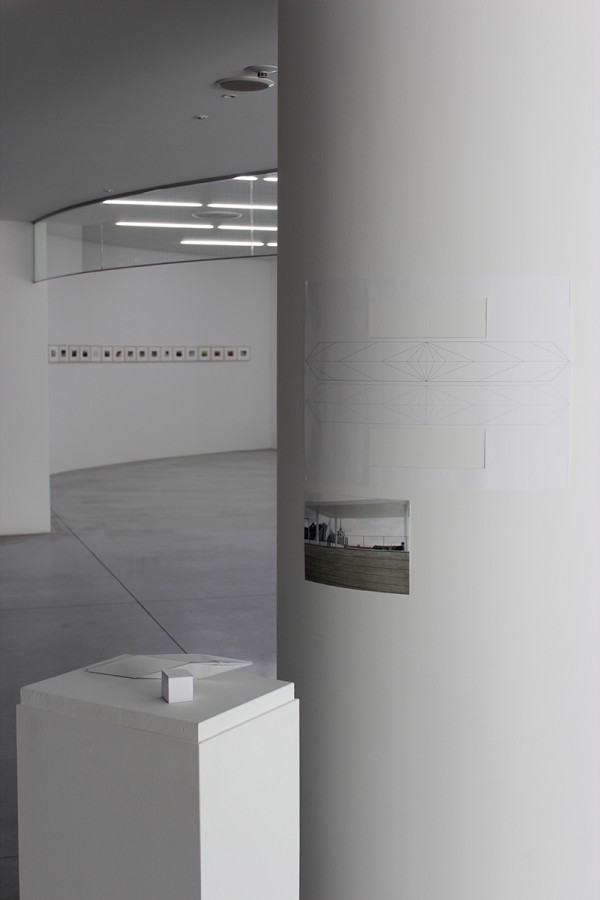
Ideas Are Motion, Teil 2: Japan
Ideas Are Motion: The Poster as an Experiment in Travel
Poster Project, Part 2: Japan
Berlin 2000-2011: Playing amongst the Ruins, Museum of Contemporary Art Tokyo
with works by Fernanda Trevellin de Almeida, Julius von Bismarck, Julian Charrière, Elise Eeraerts, Olafur Eliasson, Eric Ellingsen, Ivana Franke, Andreas Greiner, Markus Hoffmann, Jeremias Holliger, Friederike Horbrügger, Asako Iwama, Anne Duk Hee Jordan, Felix Kiessling, Fabian Knecht, Gabrielle Mainguy, Laura McLardy, Sophia Pompéry, Matthias Sohr, Dan Stockholm Henriksen, Raul Walch, Christina Werner, Euan Williams
Video © Olafur Eliasson / Institut für Raumexperimente
Ideas Are Motion: The Poster as an Experiment in Travel is prismatically structured to reflect the making of a class excursion, within the making of an individual art project, within the making of a collective project, within the feeling of a place, within an exhibition in that place.
Ideas Are Motion takes place in(1) Zagreb, Croatia (2) Japan (3) Iceland.
The Institut für Raumexperimente traveled to Kanazawa, Kyoto and Tokyo in February and March 2010 and brings back Ideas Are Motion as part of the exhibition Berlin 2000-2011: Playing amongst the Ruins at the MOT, Museum of Contemporary Art Tokyo from 29.10.2011 – 9.1.2012.
Some posters are sketches of ideas, some finished statements, others dreams, or personal distortions. They are autonomous projects soon to be realized, parts realized in other places, and pitches for projects to come. In a real way, each poster is a still from a moving stream.
Every place is a mangle of spatial relationships involving motions and emotions of scale, speed, perception, attention span, directionality, and distance. Posters are vehicles of urban communication, which materialize these spatial relationships. Posters mobilize populations of perception. We behave differently because of the promiscuity of these kinds of signs in public space. We slow down, think about, read, reflect on, change plans. Urban signs are coordinated around the rhythms of our movement but they also help to coordinate that movement.
Posters are mirrors, which confirm an approach, a direction of arrival, a route of passing through. Posters reflect the population’s psychological relationship to things we personally feel we want or need, and the things we go out of way for. Posters offer a phenomenal vehicle to hitchhike an encounter with art, a formal opportunity to subvert the complete commodification of our public space, while materializing diverse art projects without predetermining an artistic content.
The poster project makes the concept act the art. The act demonstrates a process of how thinking feedbacks into a transformed thought and that thought feeds back into a transformed action of change in the world.
Ideas Are Motion: The Poster as an Experiment in Travel
Poster Projekt, Teil 2: Japan
Berlin 2000-2011: Playing amongst the Ruins, Museum of Contemporary Art Tokyo
mit Arbeiten von Fernanda Trevellin de Almeida, Julius von Bismarck, Julian Charrière, Elise Eeraerts, Olafur Eliasson, Eric Ellingsen, Ivana Franke, Andreas Greiner, Markus Hoffmann, Jeremias Holliger, Friederike Horbrügger, Asako Iwama, Anne Duk Hee Jordan, Felix Kiessling, Fabian Knecht, Gabrielle Mainguy, Laura McLardy, Sophia Pompéry, Matthias Sohr, Dan Stockholm Henriksen, Raul Walch, Christina Werner, Euan Williams
Video © Olafur Eliasson / Institut für Raumexperimente
Ideas Are Motion: The Poster as an Experiment in Travel ist ein prismatisch strukturiertes Projekt, das die Erfahrungen einer Klassenreise reflektiert: Prozesse eines individuellen künstlerischen Projektes, Prozesse kollektiven Arbeitens, Prozesse des Erspürens eines Ortes, Prozesse des Ausstellungsmachens an diesem Ort.
Ideas Are Motion findet statt in:(1) Zagreb, Kroatien (2) Japan (3) Island.
Das Institut für Raumexperimente reiste Februar bis März 2010 nach Kanazawa, Kyoto und Tokyo. Ideas Are Motion bringt die Erfahrungen dieser Reise als Teil der Ausstellung Berlin 2000-2011: Playing amongst the Ruins im MOT, Museum of Contemporary Art Tokyo vom 29.10.2011 – 9.1.2012 nach Japan zurück.
Einige Poster sind Skizzen, einige präzise Statements, andere sind Träume oder persönliche Verformungen. Sie sind autonome Projekte, die in Bälde realisieren werden, an anderen Orten bereits realisiert sind oder Vorschläge für die Zukunft. Metaphorisch und tatsächlich ist jedes Poster eine Momentaufnahme eines Ideenstromes.
Jeder Ort ist durchzogen von räumlichen Verhältnissen, die Bewegungen von und Gefühle für Maßstab, Geschwindigkeit, Wahrnehmung, Aufmerksamkeitsspanne, Richtung und Entfernung einschließen. Poster sind Vehikel urbaner Kommunikation, in denen sich diese Verhältnisse materialisieren. Poster mobilisieren vielfältige Wahrnehmungsräume. Die Promiskuität dieser Zeichen im öffentlichen Raum beeinflusst unser Verhalten. Wir halten an, lesen, denken nach, reflektieren und ändern unsere Pläne. Urbane Zeichen werden choreographiert entsprechend unserer Bewegungsmuster, können aber andererseits auch helfen, jene Bewegungen zu koordinieren.
Poster sind Spiegel, die eine Annäherung, eine Ankunft, ein Passieren markieren. Poster reflektieren die psychologischen Beziehungsmuster unserer Gesellschaften zu Dingen, die wir persönlich attraktiv finden, mögen oder auch meiden. Poster bieten sich an als Medium einer unkonventionelleren Begegnung mit Kunst und als formale Möglichkeit, die vollständige Kommerzialisierung unserer öffentlichen Räume zu unterlaufen. Dabei können die unterschiedlichsten Kunstprojekte entstehen, ohne dass der künstlerische Inhalt festgelegt wäre.
Das Posterprojekt macht den konzeptuellen Akt zur Kunst. Dieser Akt der Umsetzung demonstriert wie Denkprozesse mit sich verändernden Ideen rückgekoppelt sind und diese Ideen Handlungen beeinflussen, die Veränderungen in der Welt bewirken.
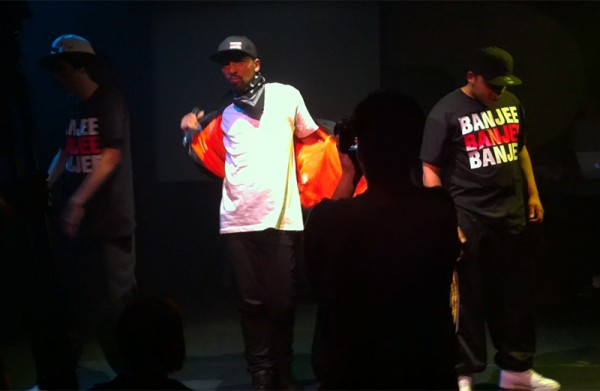
Testing Stage
Installations & interventions during Performance Night at Testing Stage—A Window to Performa New York at HAU Berlin
Collaboration with Hebbel-am-Ufer, Berlin
Installationen & Interventionen zur Performance Night, Testing Stage—A Window to Performa New York at HAU Berlin
Kollaboration mit Hebbel-am-Ufer, Berlin
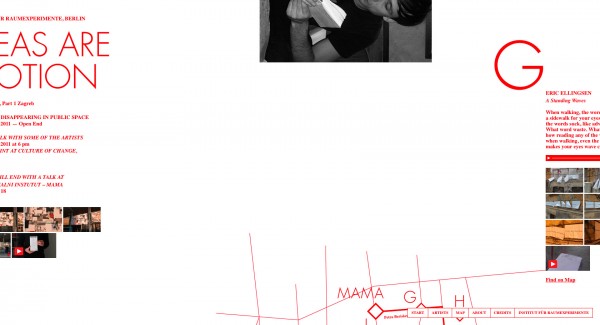
Ideas Are Motion, Teil 1: Zagreb
Ideas Are Motion: The Poster as an Experiment in Travel
Poster Project, Part 1: Zagreb
Ideas Are Motion: The Poster as an Experiment in Travel is prismatically structured to reflect the making of a class excursion (a road trip), within the making of an individual art project, within the making of a collective class project, within the feeling of a place, within an exhibition in that place. These trips range from urban cultural excursions in megacities like Tokyo, to three day walks in the wilderness of Iceland. Ideas are made in motion. The road trip turns into a round trip. Finished projects are projected back into the world. Having the experience comes with the responsibility of producing something from that experience that could add a different wobble to the world.
Visit project website
With works by Viktor Bedö, Julius von Bismarck, Julian Charrière, Eric Ellingsen, Andreas Greiner, Markus Hoffmann, Felix Kiessling, Fabian Knecht, Gabrielle Mainguy, Sophia Pompéry, Kirsten Weiss, Christina Werner
Ideas Are Motion: The Poster as an Experiment in Travel
Posterprojekt, Teil 1: Zagreb
Ideas Are Motion: The Poster as an Experiment in Travel ist ein prismatisch strukturiertes Projekt, das die Erfahrungen einer Klassenreise reflektiert: Prozesse eines individuellen künstlerischen Projektes, Prozesse kollektiven Arbeitens, Prozesse des Erspürens eines Ortes, Prozesse des Ausstellungsmachens an diesem Ort. Die zugrundeliegenden Reiseerfahrungen reichen von Exkursionen in urbane Metropolräume wie Tokio bis hin zu dreitägigen Wanderungen durch die Wildnis Islands. Ideen werden durch und in Bewegung erzeugt. Der „Road Trip“ wird zum „Round Trip“. Abgeschlossene Projekte werden zurück in die Welt projiziert. Erfahrungen gemacht zu haben, bringt die Verantwortung mit sich, etwas von dieser Erfahrung umzusetzen, etwas anzustoßen, das unsere Umlaufbahnen ein wenig zum Eiern bringen könnte.
Besuchen Sie die Website des Projektes
mit Arbeiten von Viktor Bedö, Julius von Bismarck, Julian Charrière, Eric Ellingsen, Andreas Greiner, Markus Hoffmann, Felix Kiessling, Fabian Knecht, Gabrielle Mainguy, Sophia Pompéry, Kirsten Weiss, Christina Werner
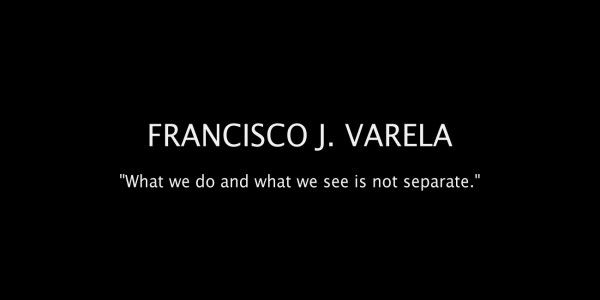
Sticky Rice
Sticky RiceNico Dockx & Olafur Eliasson & Eric Ellingsen & Egon Hanfstingl & Interfaculty & Asako Iwama & Lauren Maurer & Sarat Maharaj & Felix Meyer & Rirkrit Tiravanija & Francisco J. Varela & Christina Werner & Louwrien Wijers & ... (the new conversation 2)
Editing Experiment
Francisco J. Varela: "What we do and what we see is not separate."
Sticky Rice Workshop Edit, 2011
Original interview material kindly provided by Louwrien Wijers: Interview with Francisco J. Varela, Paris 1989. Copyright of original footage: Foundation ASSET, Amsterdam NL
RELATED READING MATERIAL
Lenoir, Timothy und Hans Ulrich Gumbrecht, Varela, Francisco J., Ethical Know-How: Action, Wisdom, and Cognition, Stanford 1992.
Wijers, Louwrien, „Francisco Varela“, in: Art Meets Science and Spirituality in a Changing Economy. From Competition to Compassion, London 1996, S. 114–117.
Wijers, Louwrien, „Looking back at Art meets Science and Spirituality in a Changing Economy“, in: Art and Design, Art meets Science and Spirituality, 21, London 1990. S. 83–87
Wijers, Louwrien u. a., (Interview mit) „Francisco Varela“, in: ders., Art Meets Science and Spirituality in a Changing Economy, Amsterdam 1990, S. 184–199.
Day 126 October 2011
Intro with Nico Dockx & Eric Ellingsen & Felix Meyer & Christina Werner & Louwrien Wijers & Interfaculty & Institut für Raumexperimente
Day 227 October 2011
Welcome: Olafur Eliasson, Eric Ellingsen, Christina Werner & Nico Dockx
Olafur Eliasson Part I
Olafur Eliasson Part II
Sarat Maharaj, Part I
Sarat Maharaj, Part II
Sarat Maharaj, Part III
Sarat Maharaj, Part IV
Louwrien Wijers, Part I
Louwrien Wijers, Part II
Food workshop with Egon Hanfstingl & Asako Iwama & Lauren Maurer
Dinner & film screening with Rirkrit Tiravanija: Lung Neaw Visits His Neighbours
Day 328 October 2011
Food workshop with Egon Hanfstingl & Asako Iwama & Lauren Maurer
„Shunyata“: Introduction and discussion with Alexander Berzin
Rirkrit Tiravanija in discussion with Nico Dockx & Olafur Eliasson & Eric Ellingsen & Interfaculty & Institut für Raumexperimente & Felix Meyer & Christina Werner & Louwrien Wijers & …
Rirkrit Tiravanija Part I
Rirkrit Tiravanija Part II
Discussion & Experiments
Food workshops with Egon Hanfstingl & Asako Iwama & Lauren Maurer. Flyer:
Sticky RiceNico Dockx & Olafur Eliasson & Eric Ellingsen & Egon Hanfstingl & Interfaculty & Asako Iwama & Lauren Maurer & Sarat Maharaj & Felix Meyer & Rirkrit Tiravanija & Francisco J. Varela & Christina Werner & Louwrien Wijers & ... (the new conversation 2)
Editing Experiment
Francisco J. Varela: "What we do and what we see is not separate."
Sticky Rice Workshop Edit, 2011
Das ursprüngliche Material des Interviews wurde freundlicherweise von Louwrien Wijers zur Verfügung gestellt: Interview mit Francisco J. Varela, Paris 1989. Copyright: Foundation ASSET, Amsterdam NL
LITERATURAUSWAHL
Lenoir, Timothy und Hans Ulrich Gumbrecht, Varela, Francisco J., Ethical Know-How: Action, Wisdom, and Cognition, Stanford 1992.
Wijers, Louwrien, „Francisco Varela“, in: Art Meets Science and Spirituality in a Changing Economy. From Competition to Compassion, London 1996, S. 114–117.
Wijers, Louwrien, „Looking back at Art meets Science and Spirituality in a Changing Economy“, in: Art and Design, Art meets Science and Spirituality, 21, London 1990. S. 83–87
Wijers, Louwrien u. a., (Interview mit) „Francisco Varela“, in: ders., Art Meets Science and Spirituality in a Changing Economy, Amsterdam 1990, S. 184–199.
Tag 126. Oktober 2011
Einführung von Nico Dockx & Eric Ellingsen & Felix Meyer & Christina Werner & Louwrien Wijers & Interfaculty & Institut für Raumexperimente
Tag 227. October 2011
Begrüßung: Olafur Eliasson, Eric Ellingsen, Christina Werner & Nico Dockx
Olafur Eliasson Teil I
Olafur Eliasson Teil II
Sarat Maharaj, Teil I
Sarat Maharaj, Teil II
Sarat Maharaj, Teil III
Sarat Maharaj, Teil IV
Louwrien Wijers, Teil I
Louwrien Wijers, Teil II
Kochworkshop von Egon Hanfstingl & Asako Iwama & Lauren Maurer
Abendessen & Vorführung von Rirkrit Tiravanijas Film: Lung Neaw Visits His Neighbours
Tag 328. October 2011
„Shunyata“: Einführung und Diskussion mit Alexander Berzin
Rirkrit Tiravanija im Gespräch mit Nico Dockx & Olafur Eliasson & Eric Ellingsen & Interfaculty & Institut für Raumexperimente & Felix Meyer & Christina Werner & Louwrien Wijers & …“
Rirkrit Tiravanija Part I
Rirkrit Tiravanija Part II
Diskussion & Experimente
Kochworkshop von Egon Hanfstingl & Asako Iwama & Lauren Maurer Flyer:
